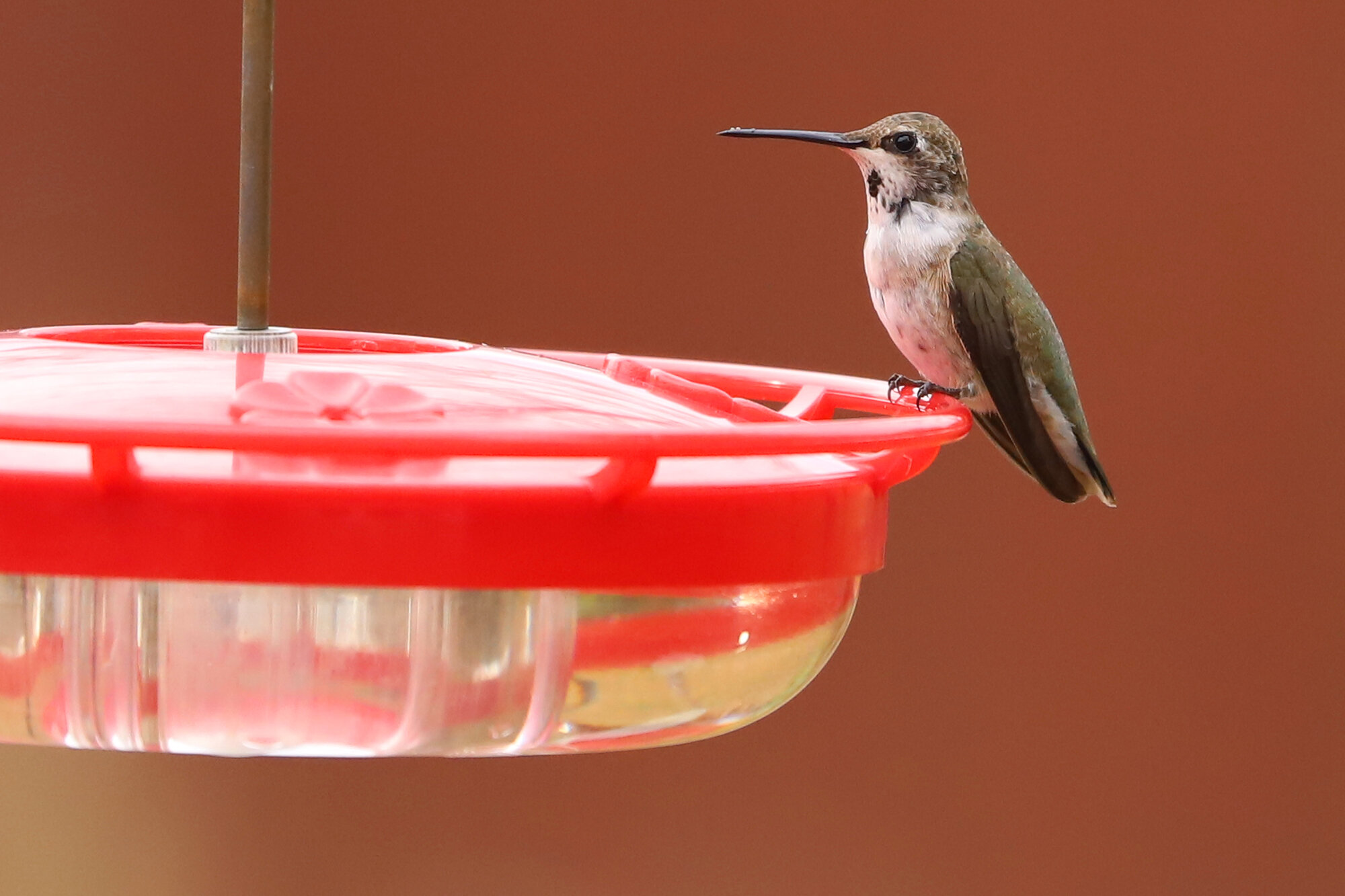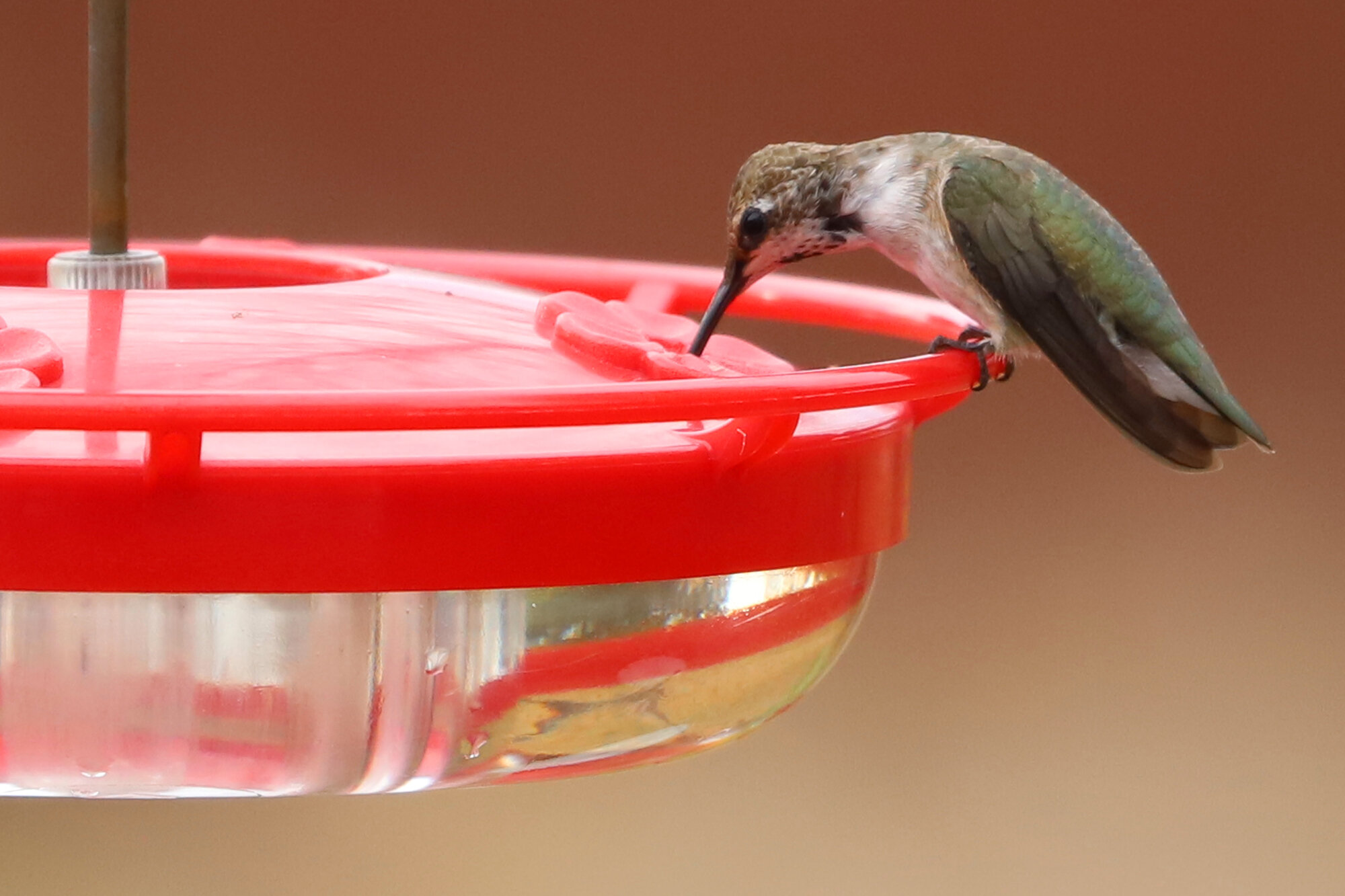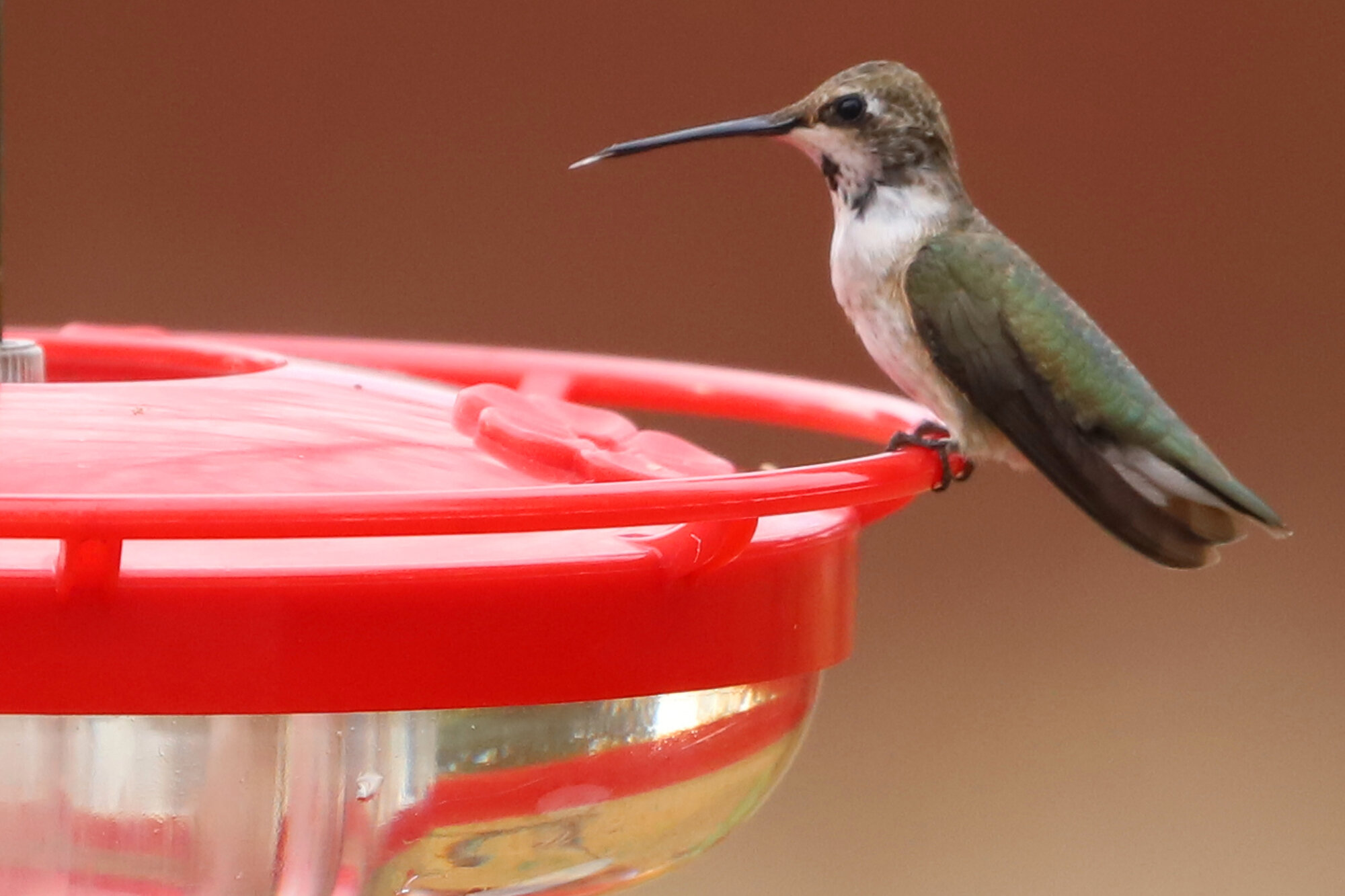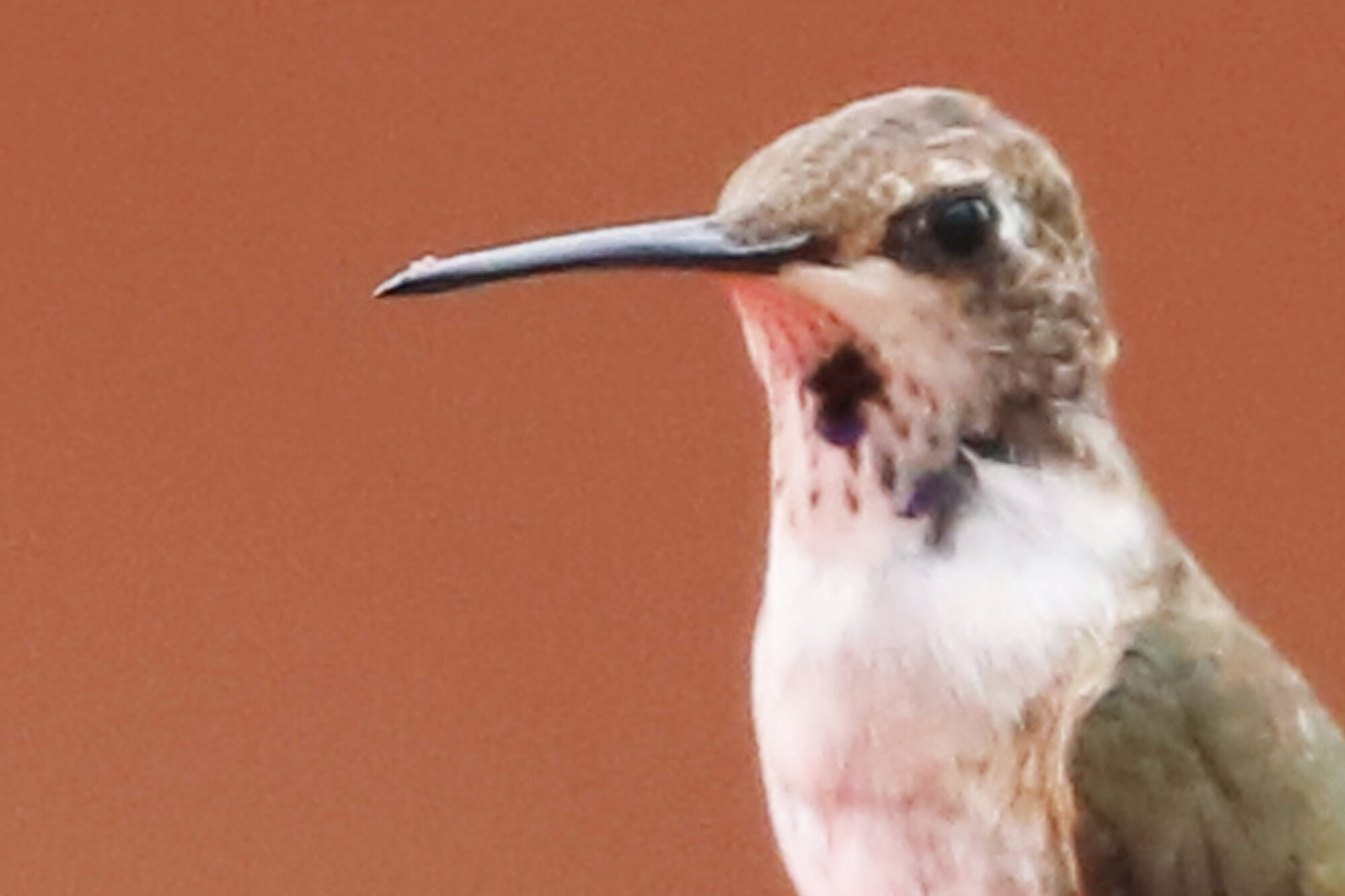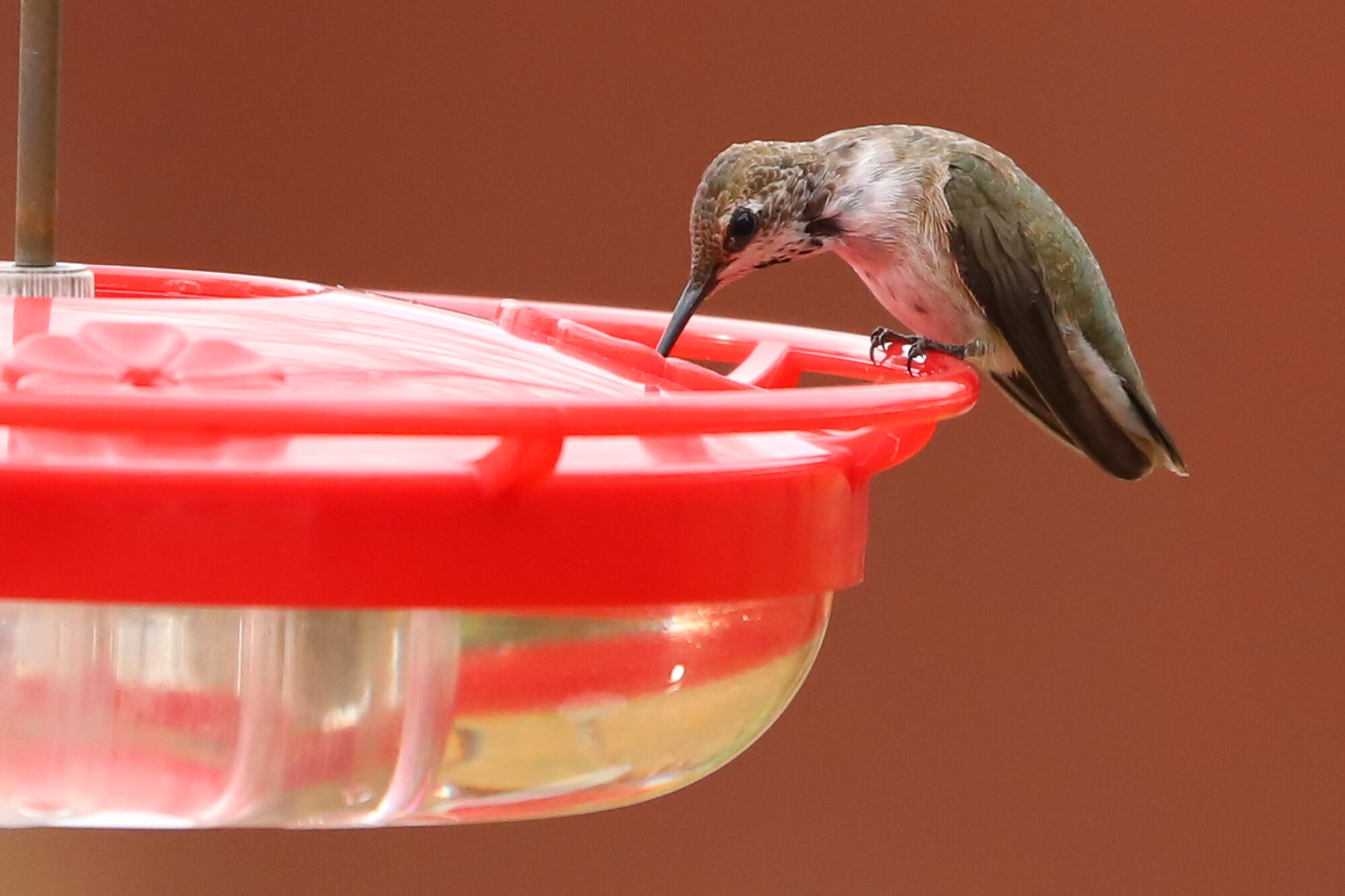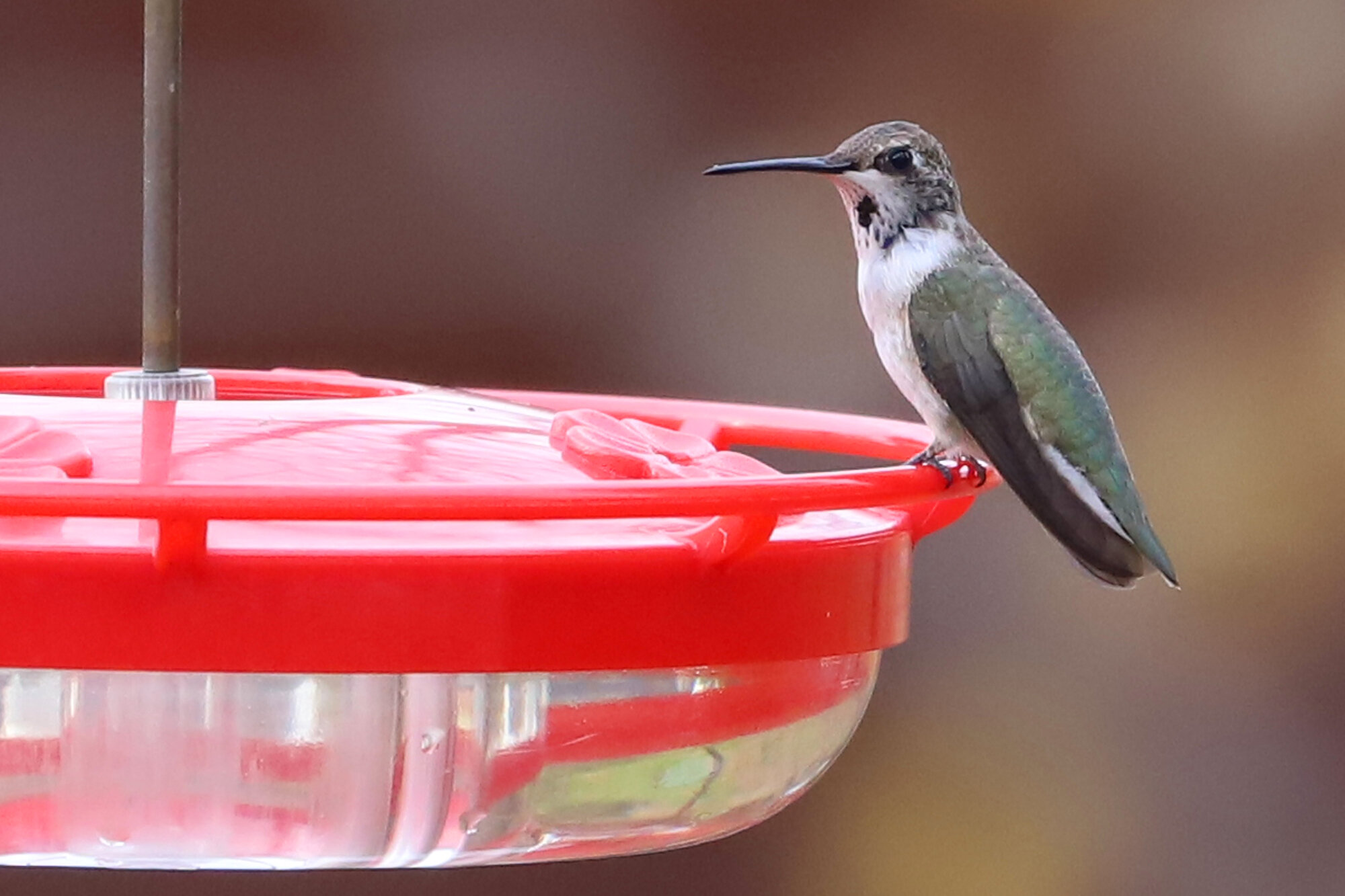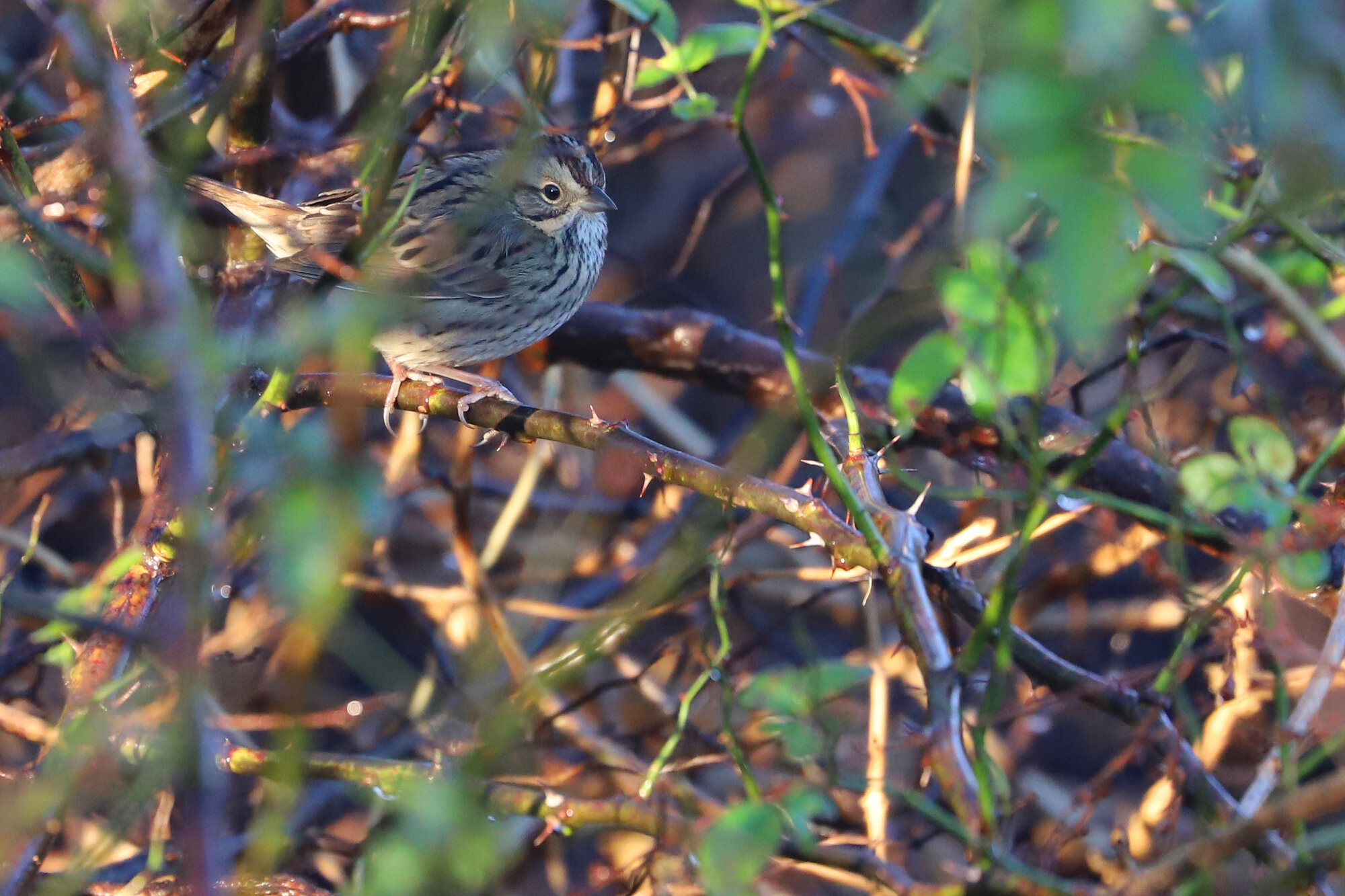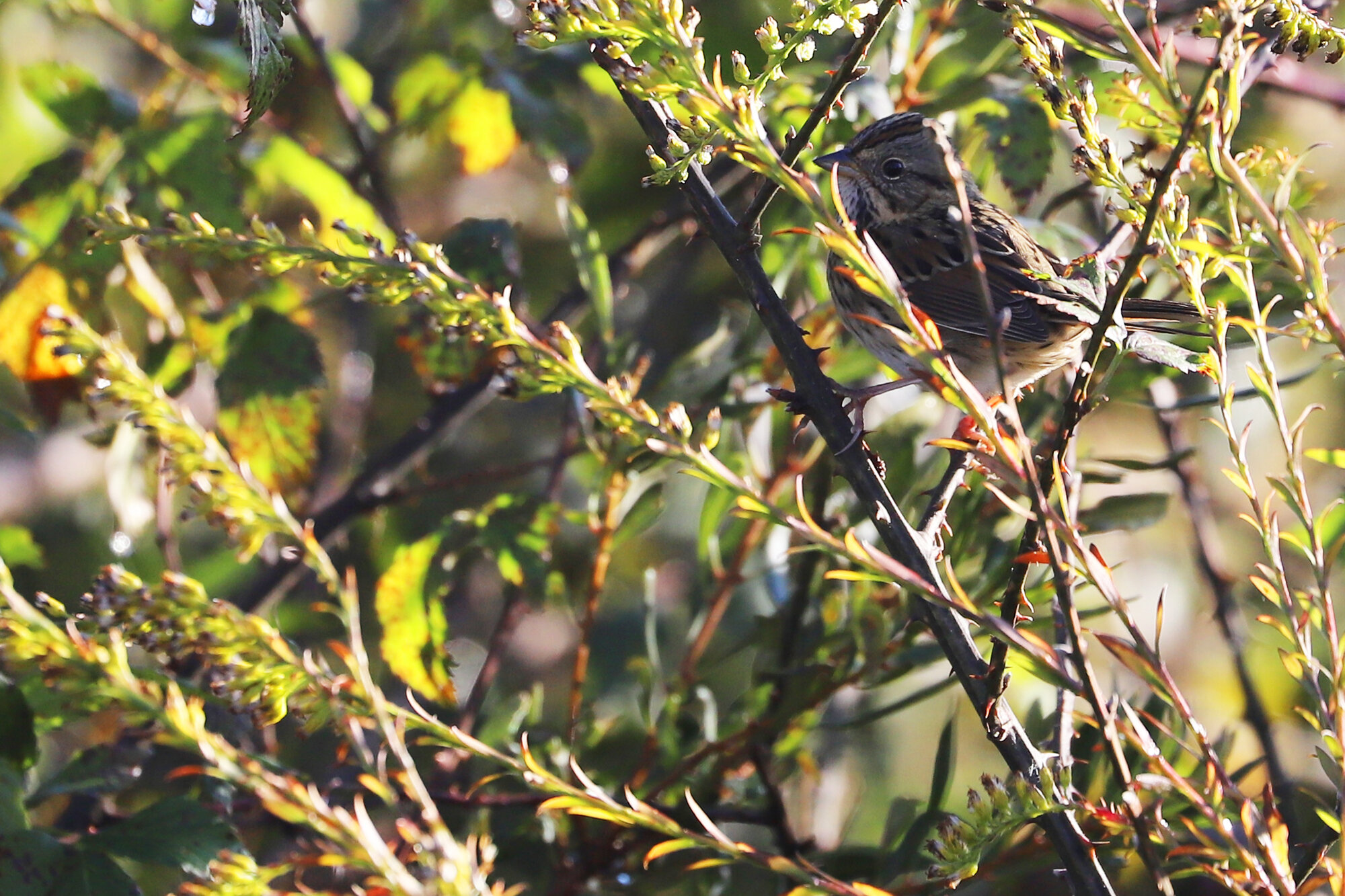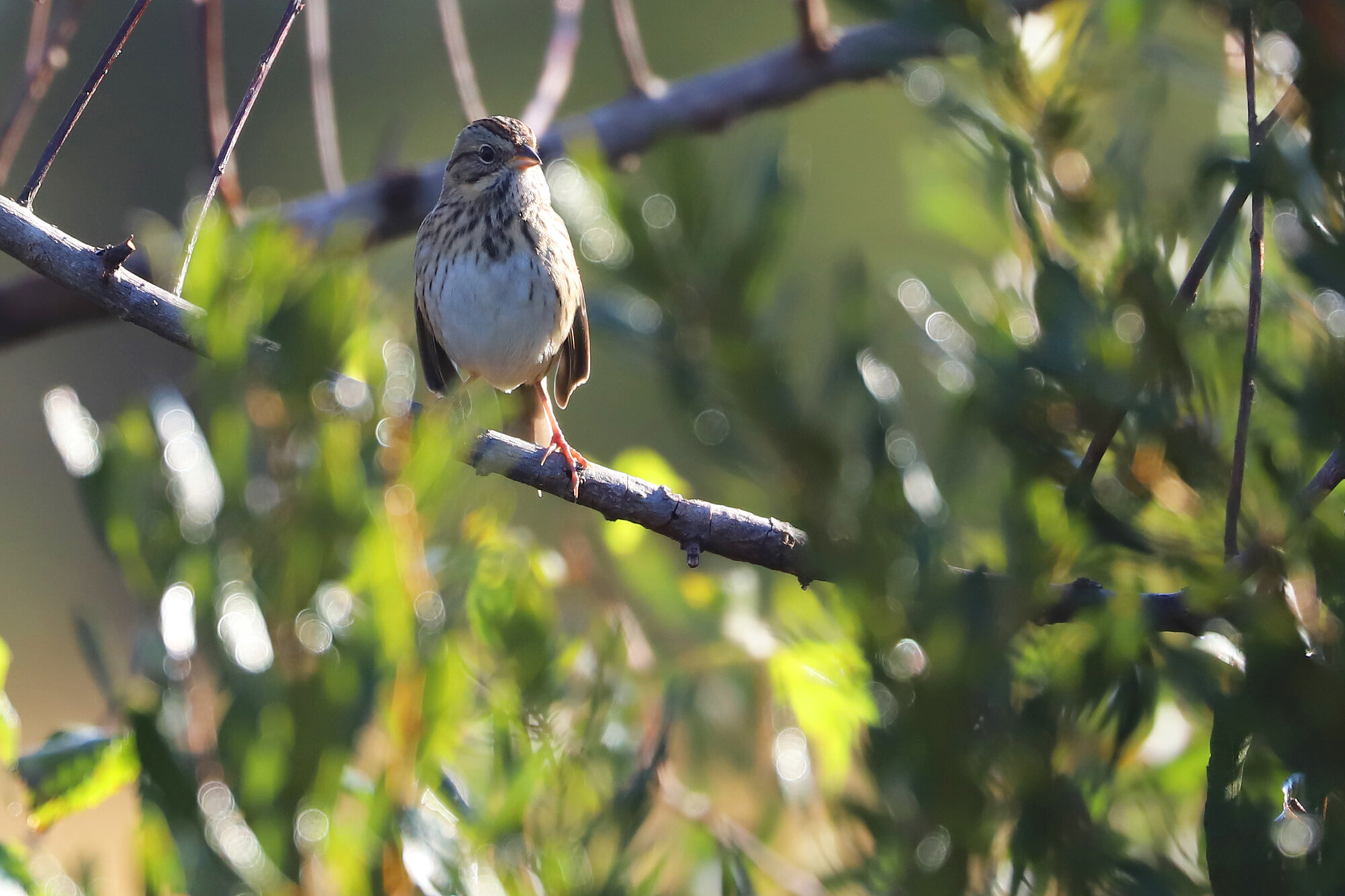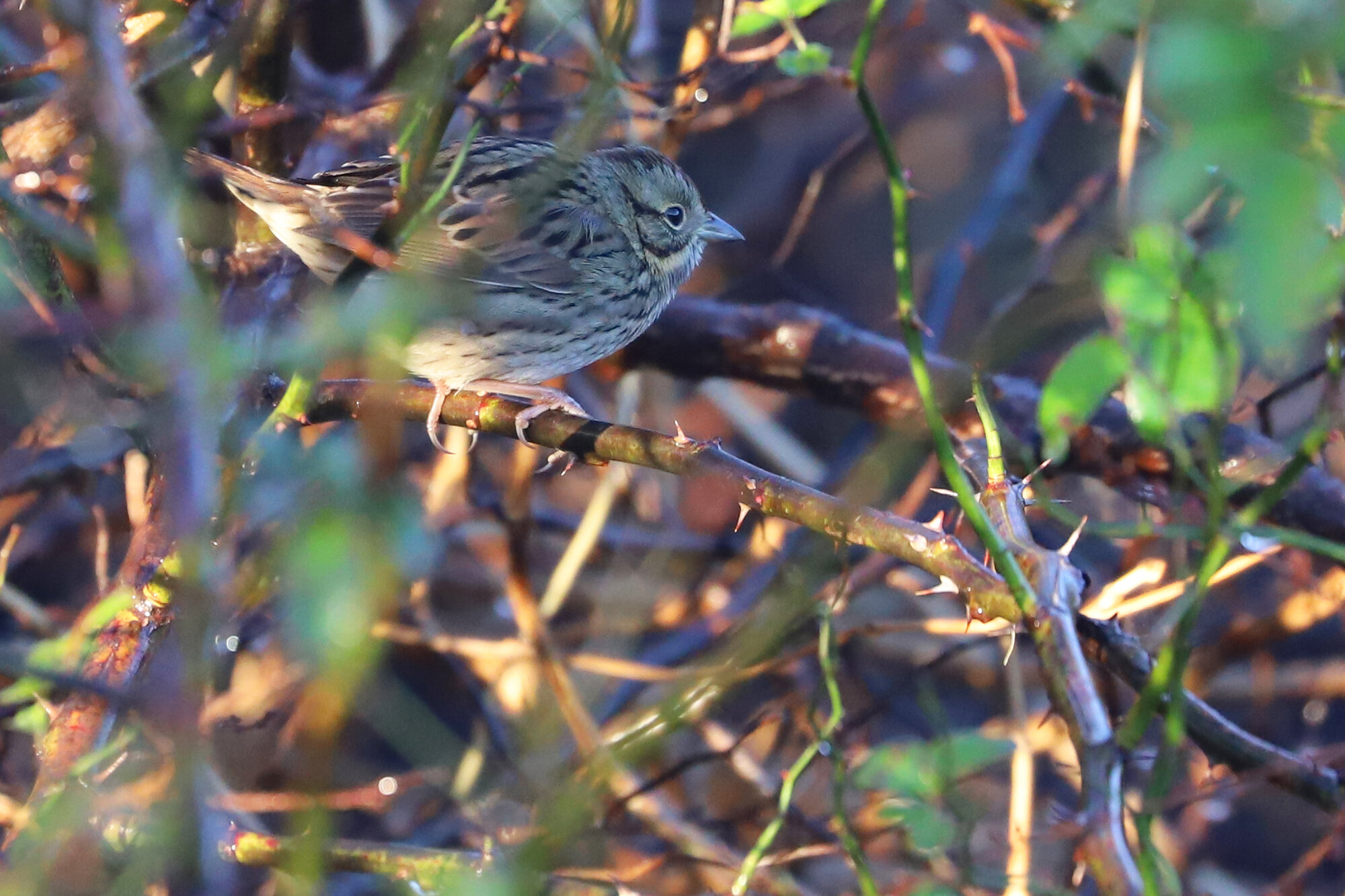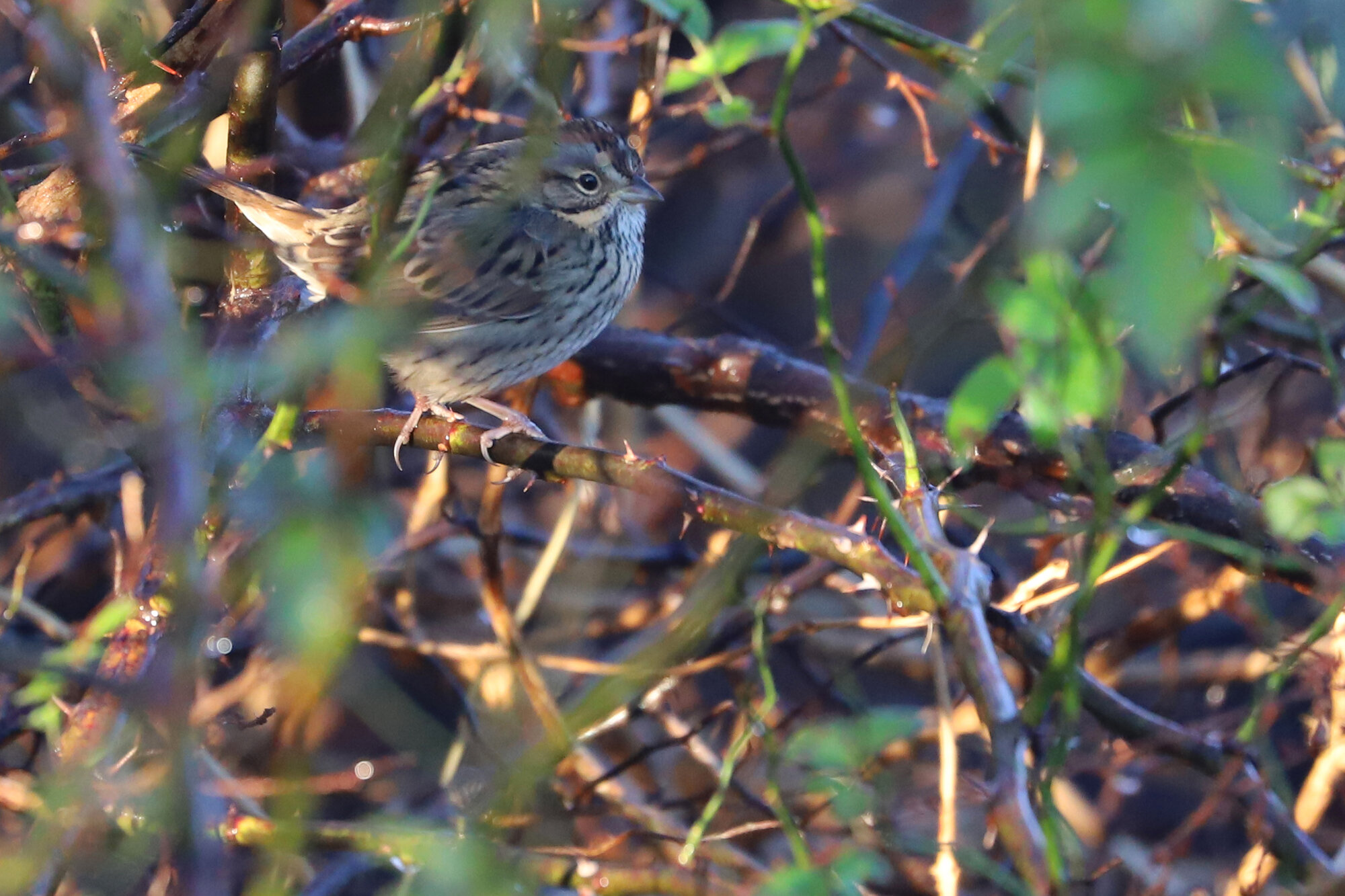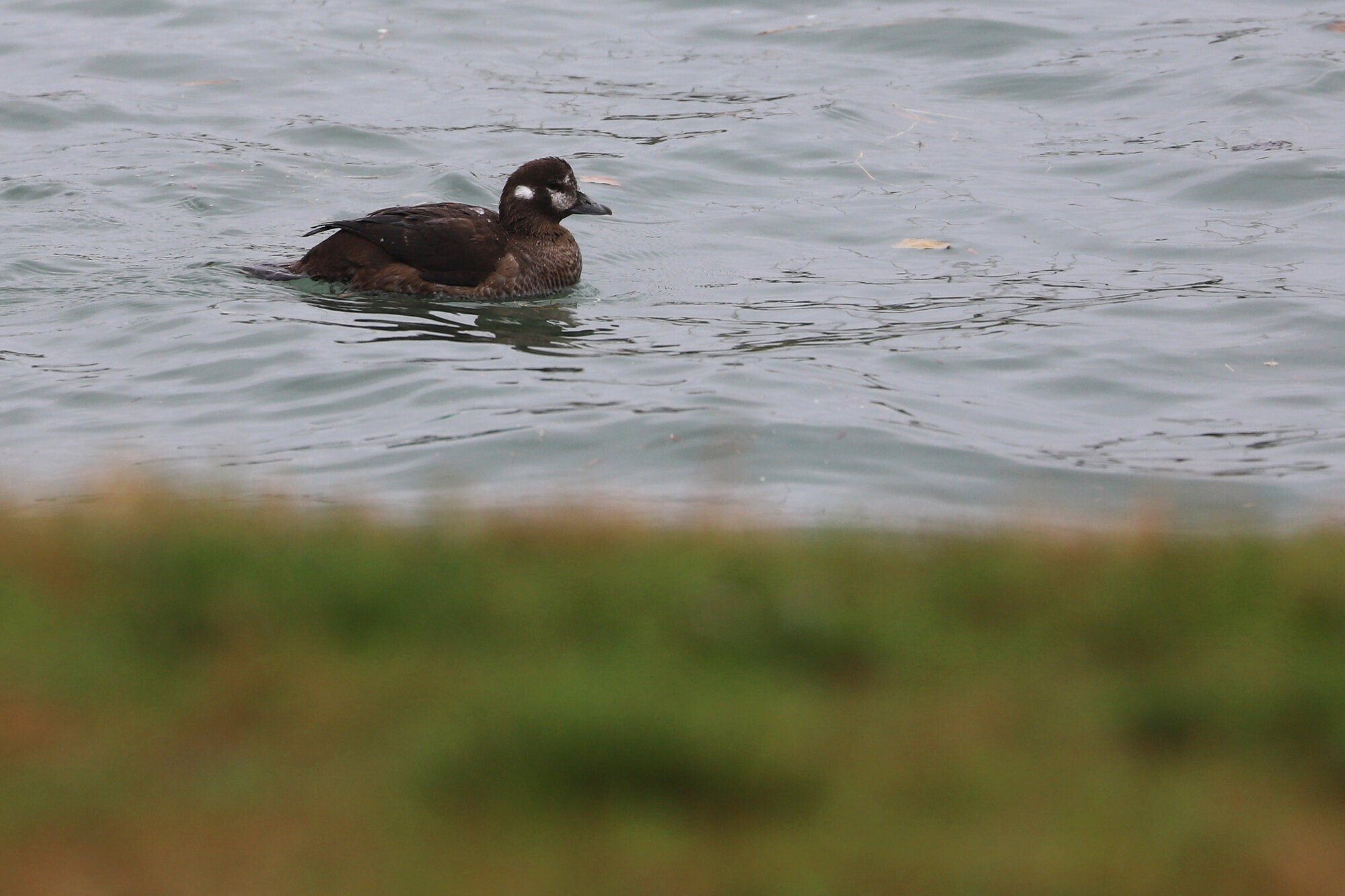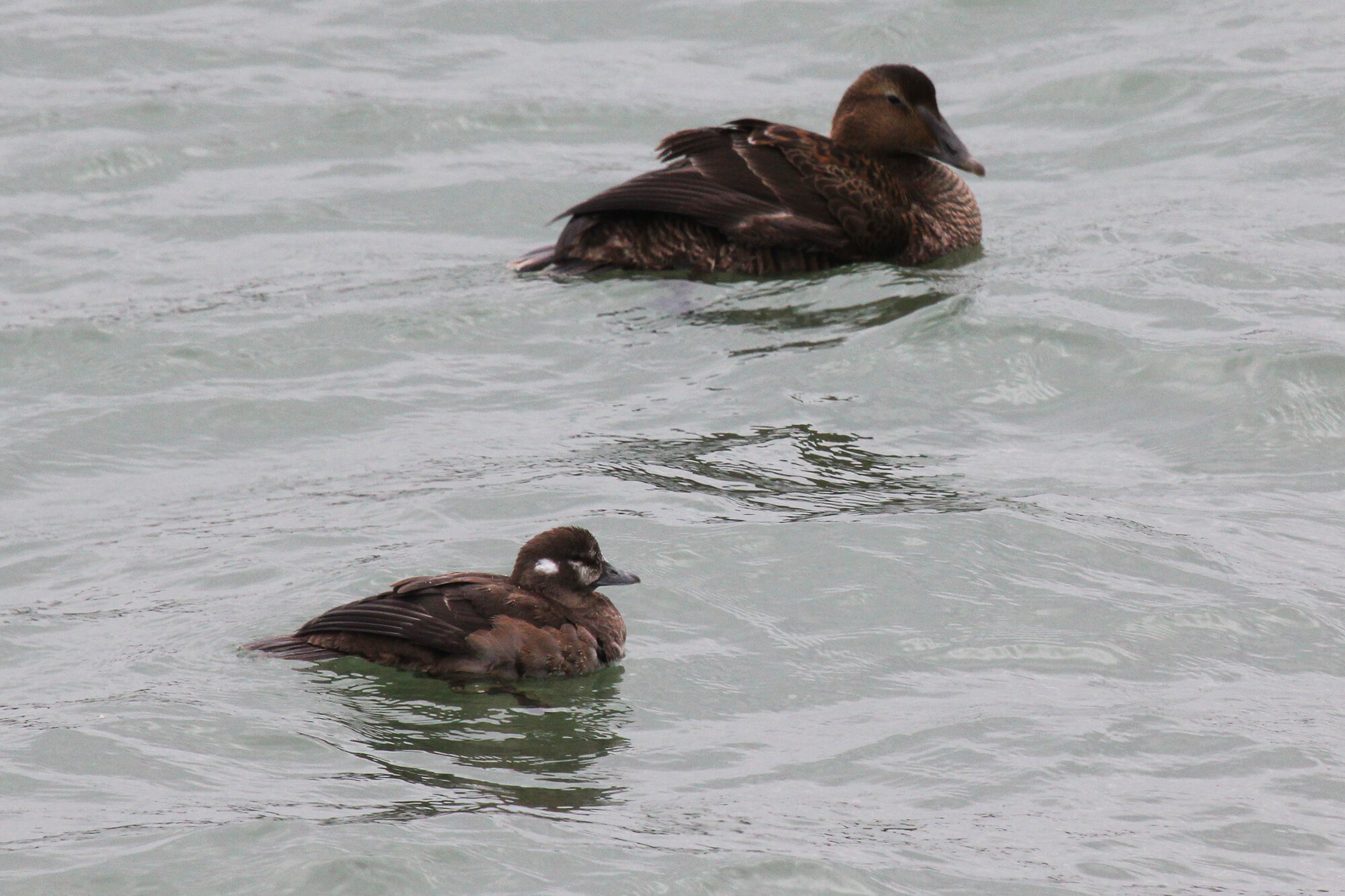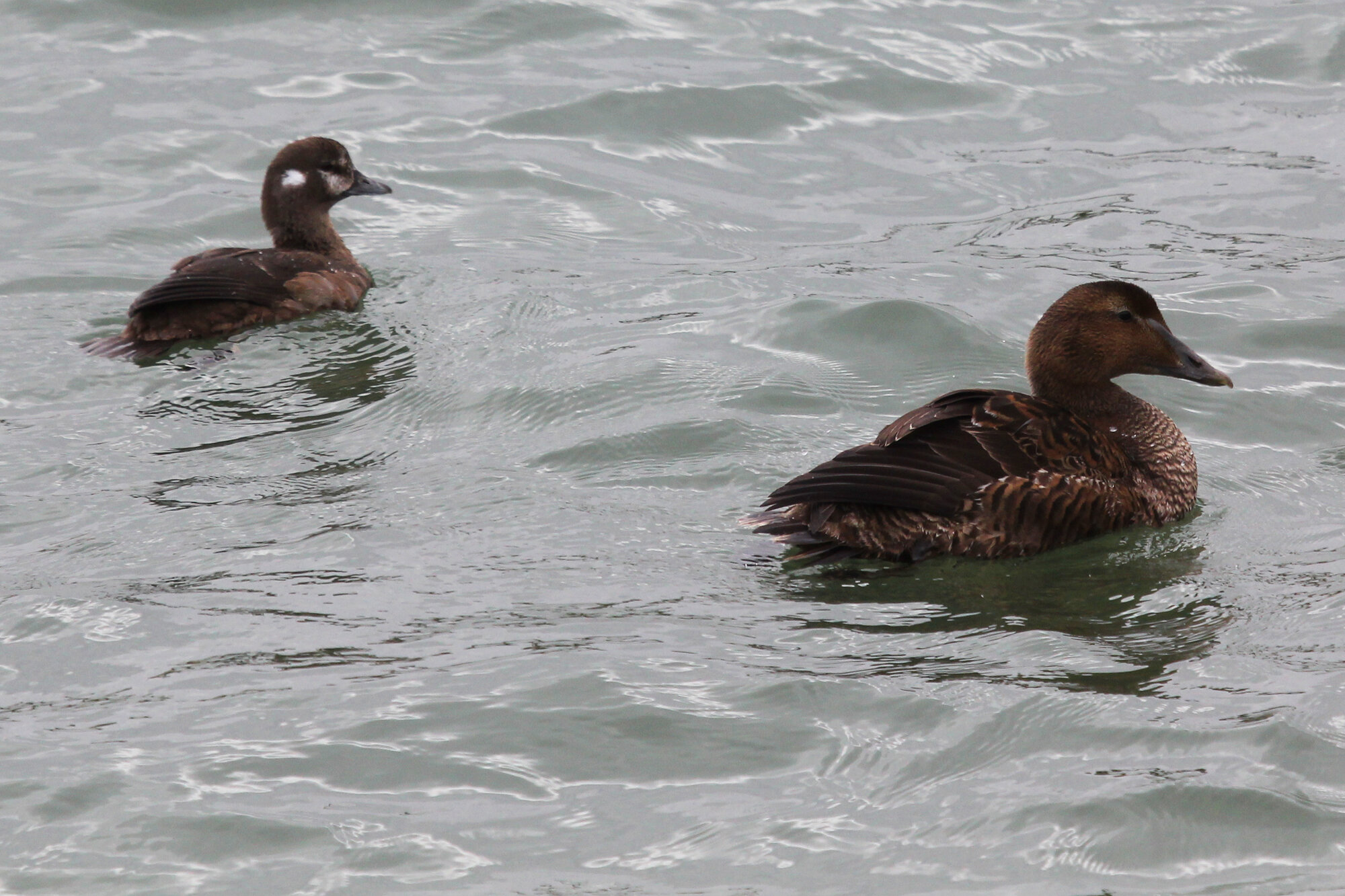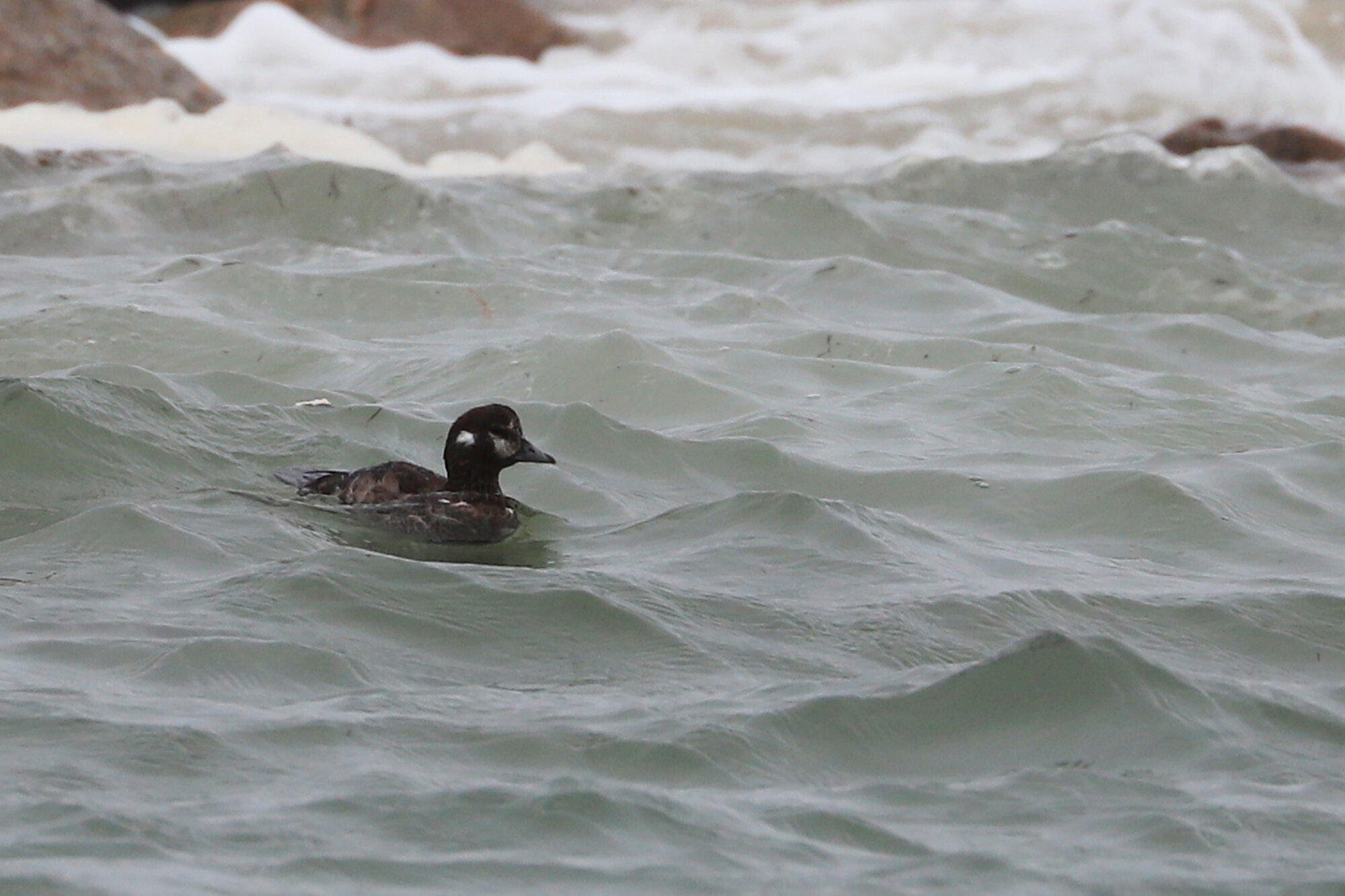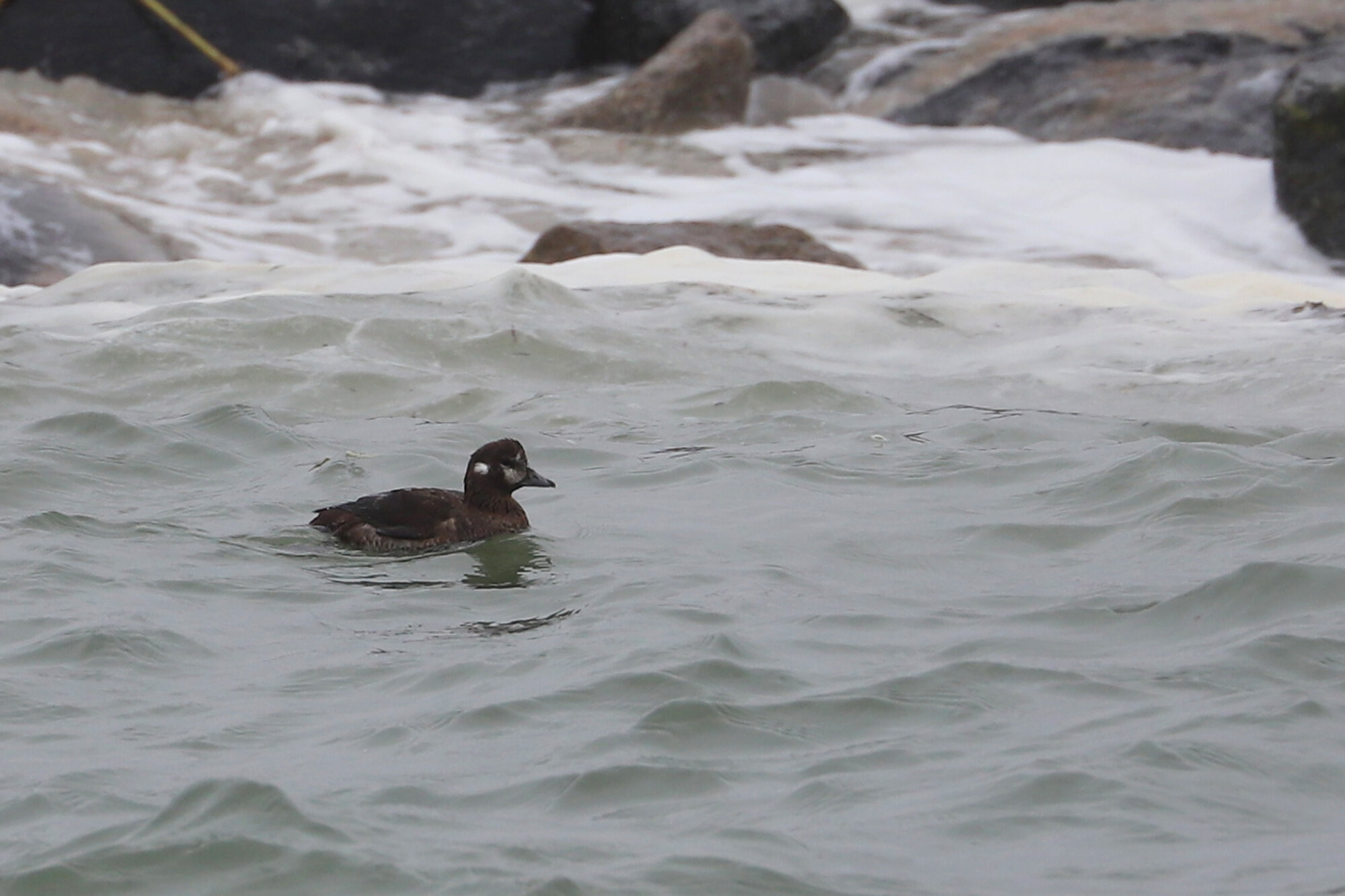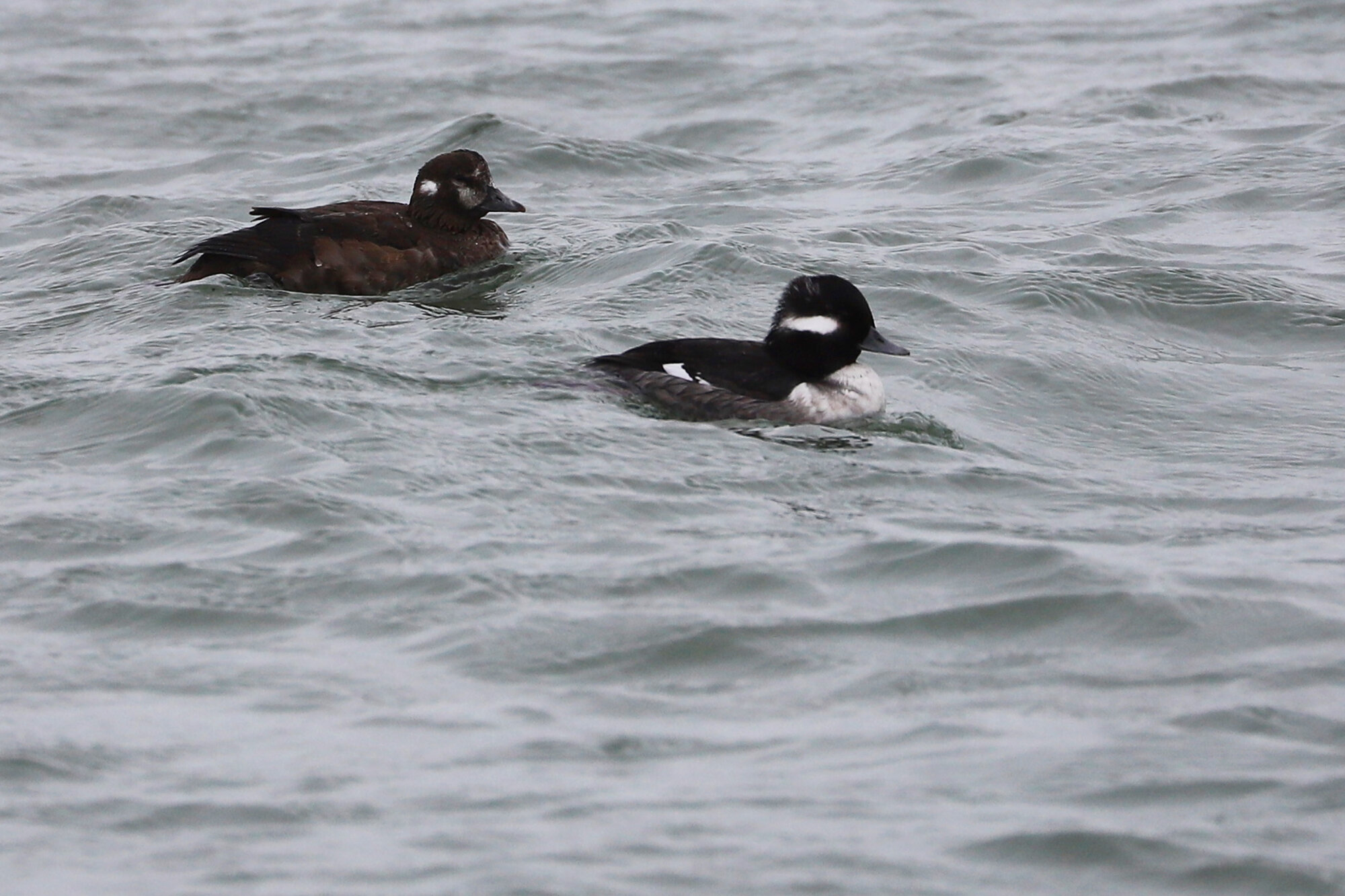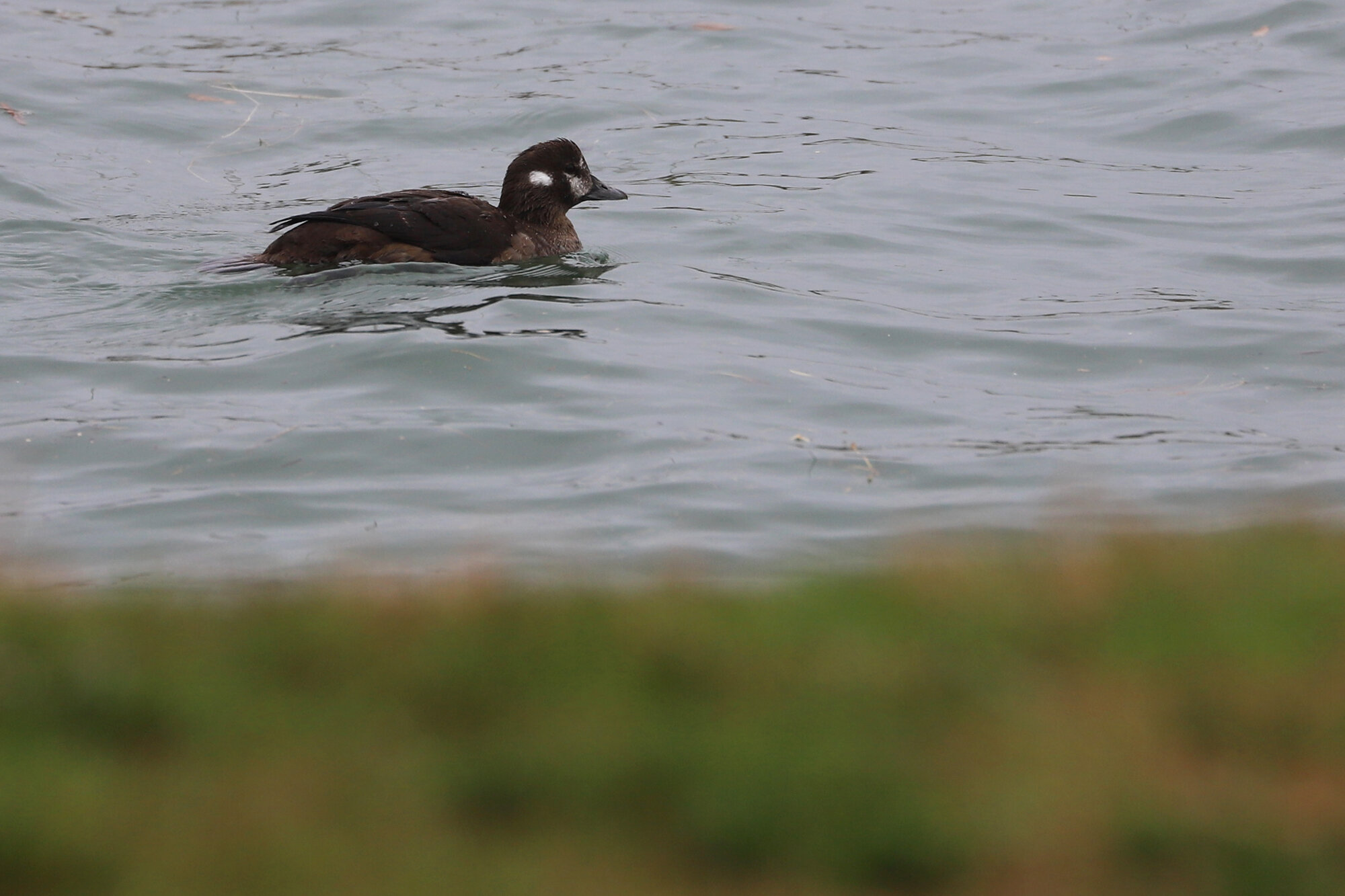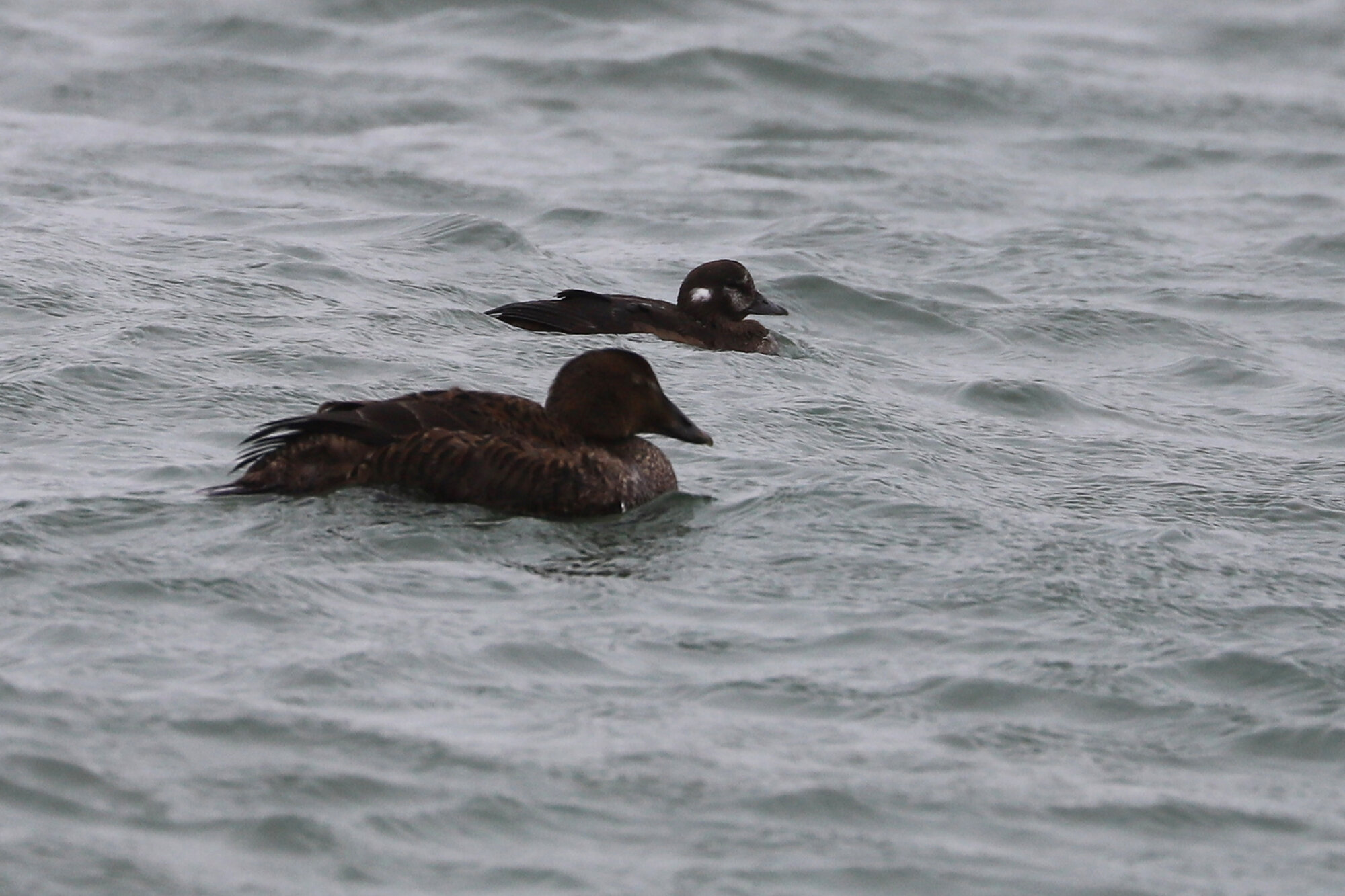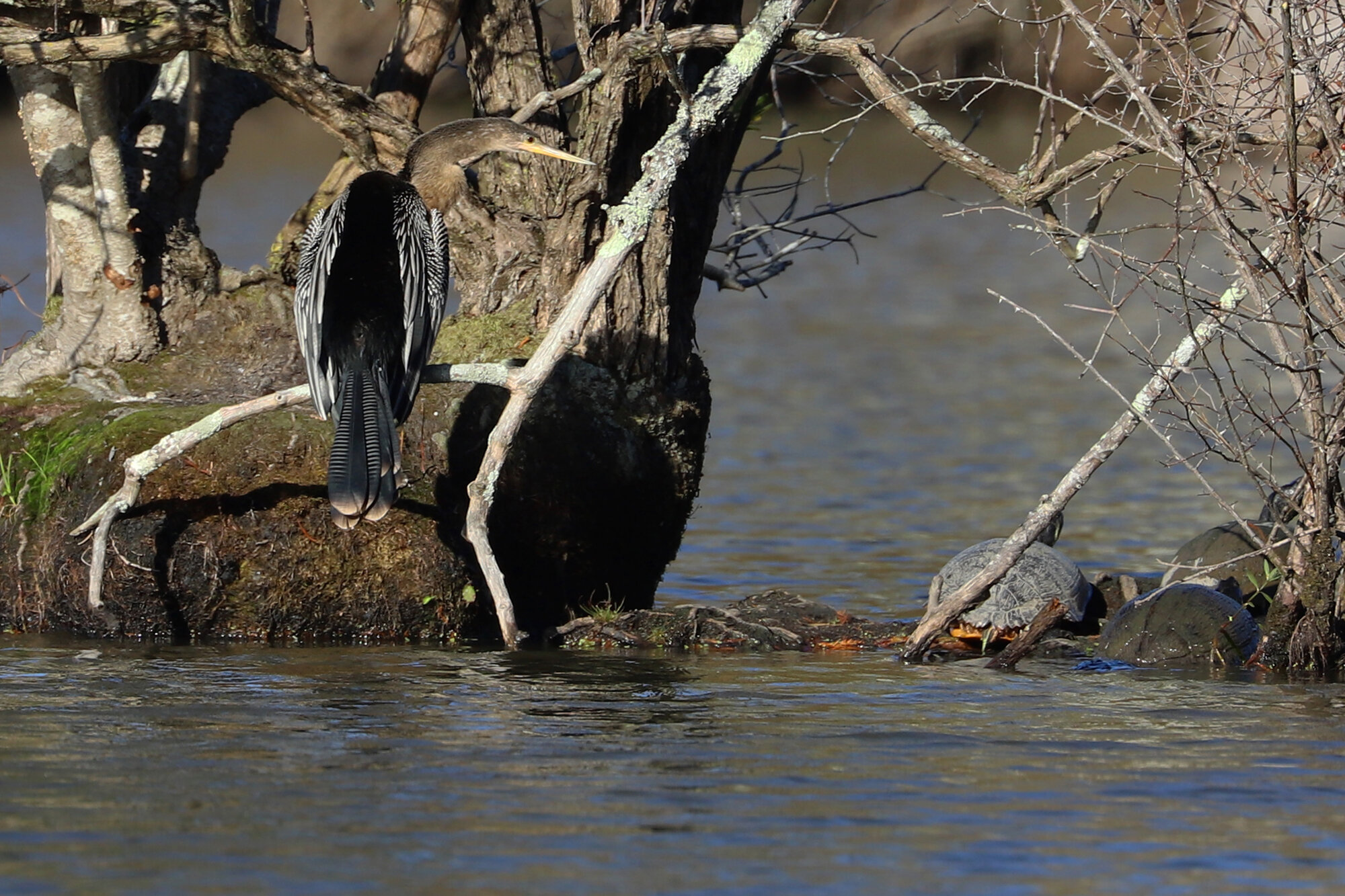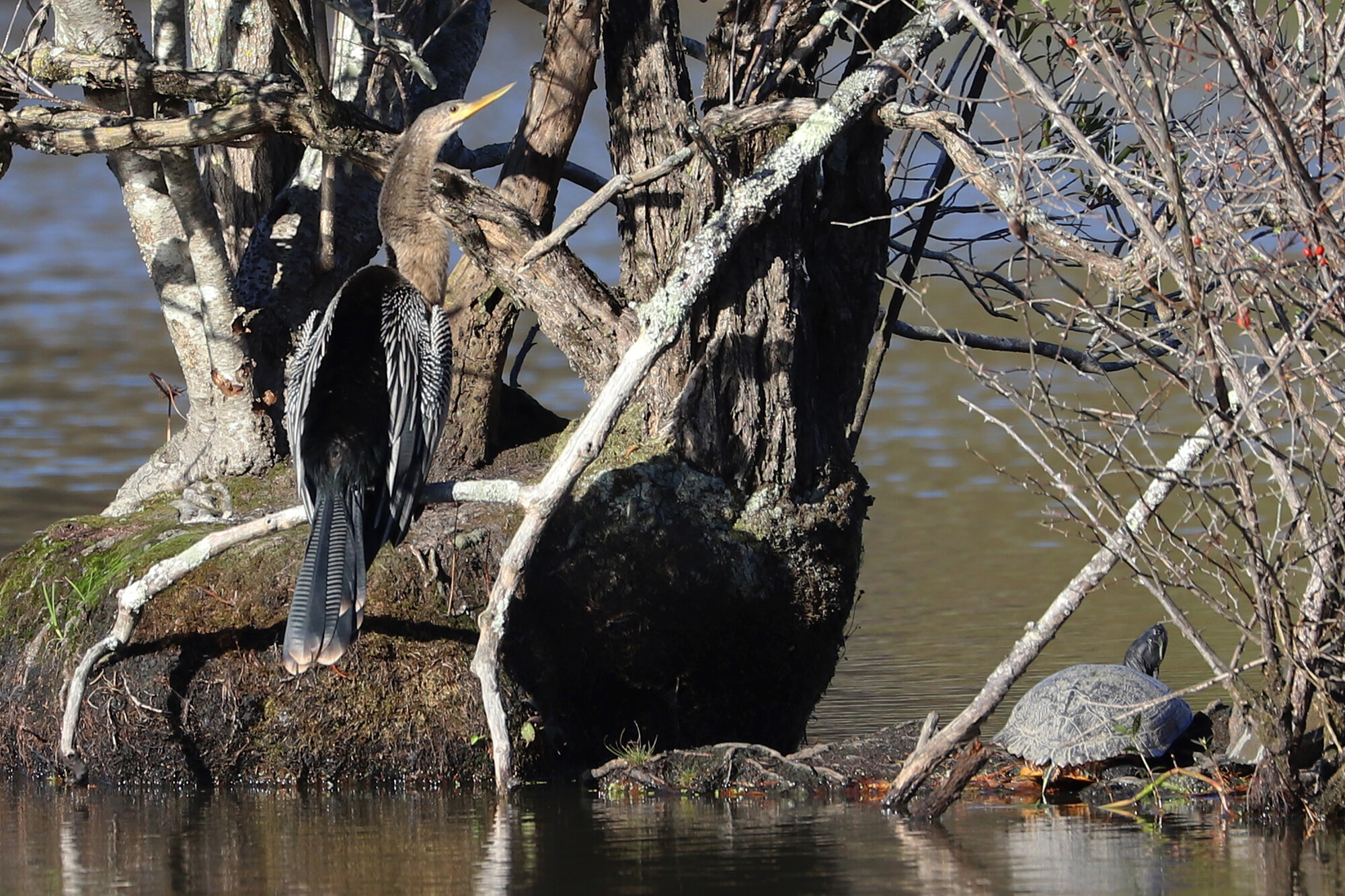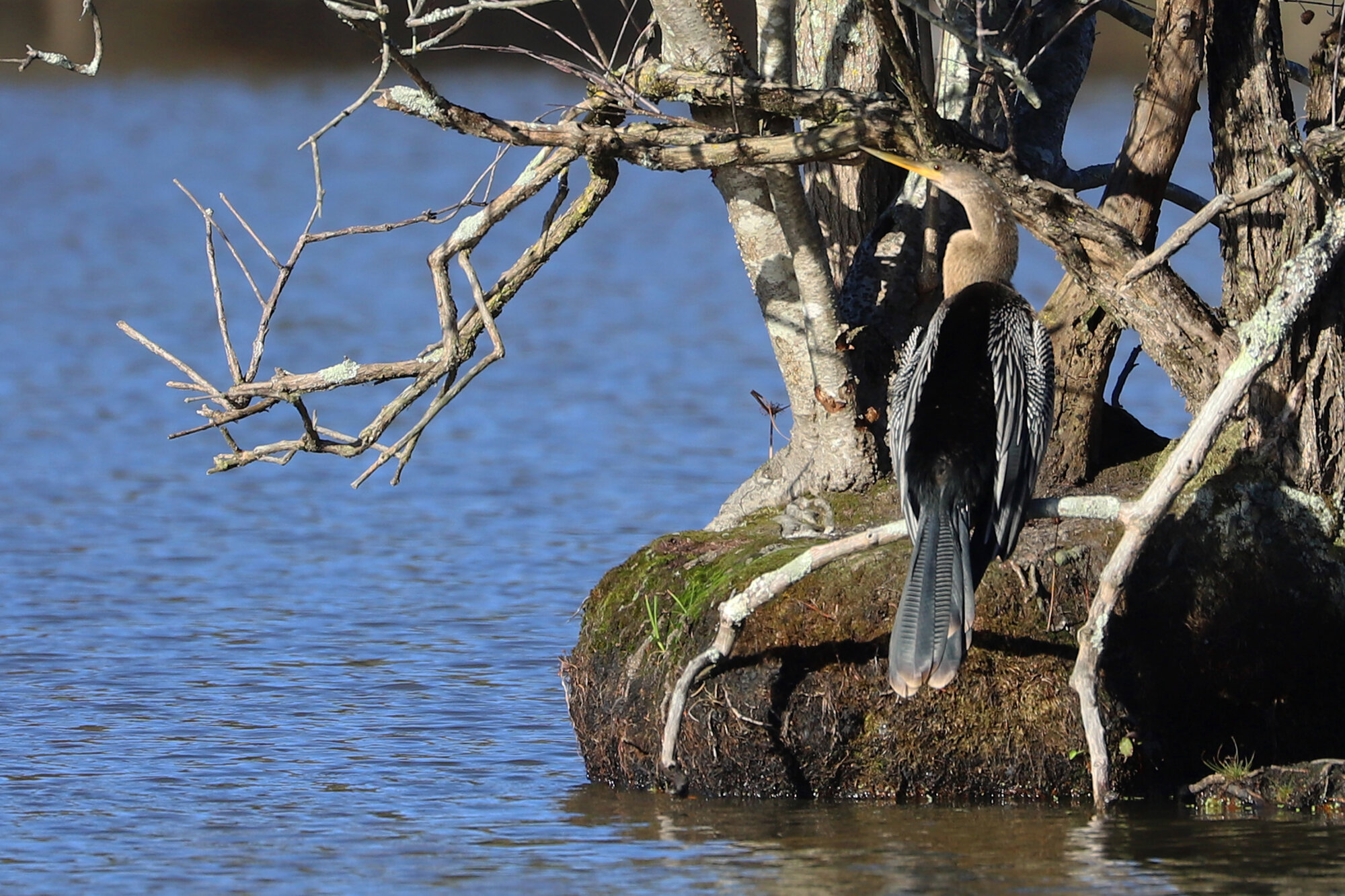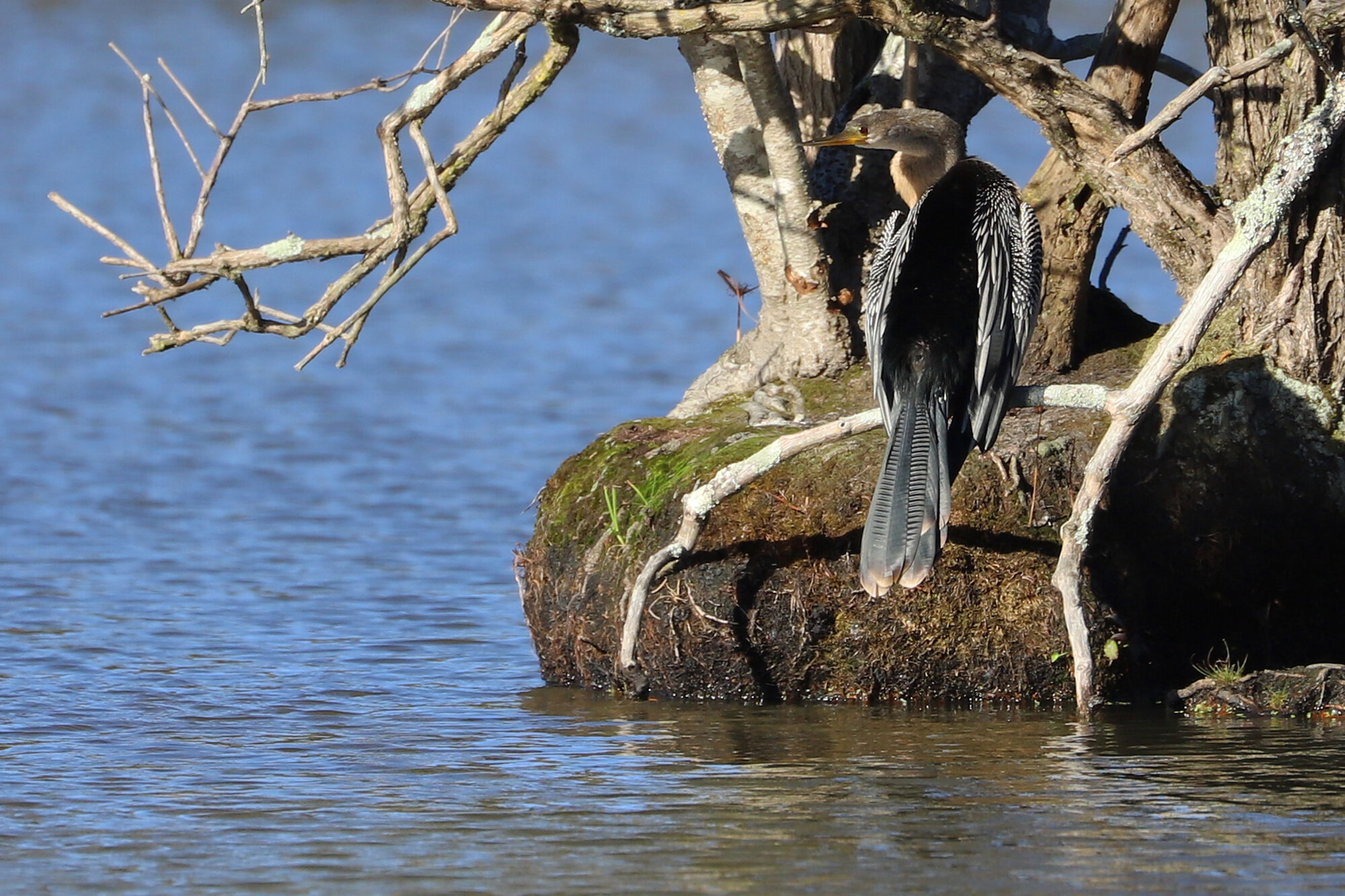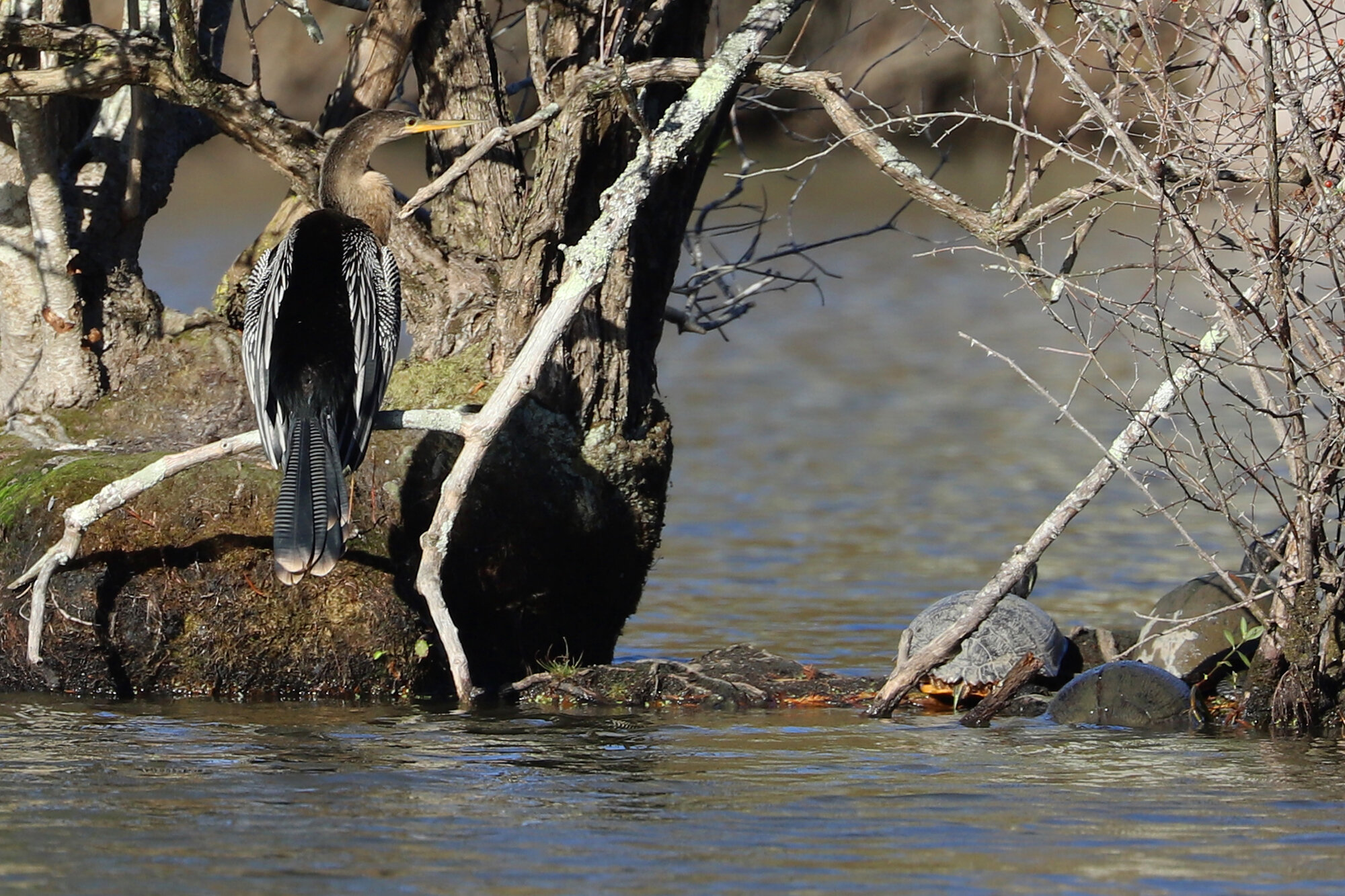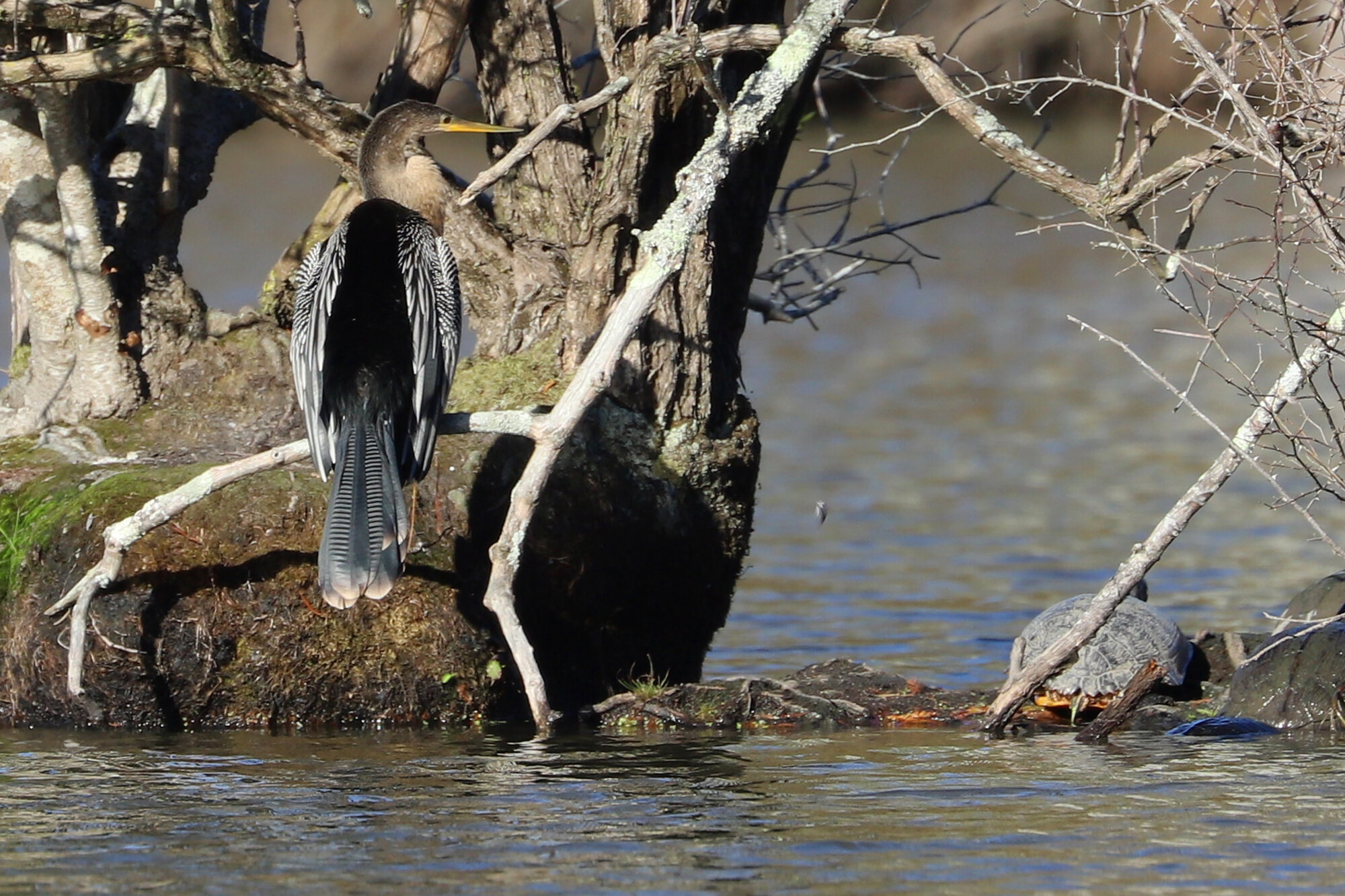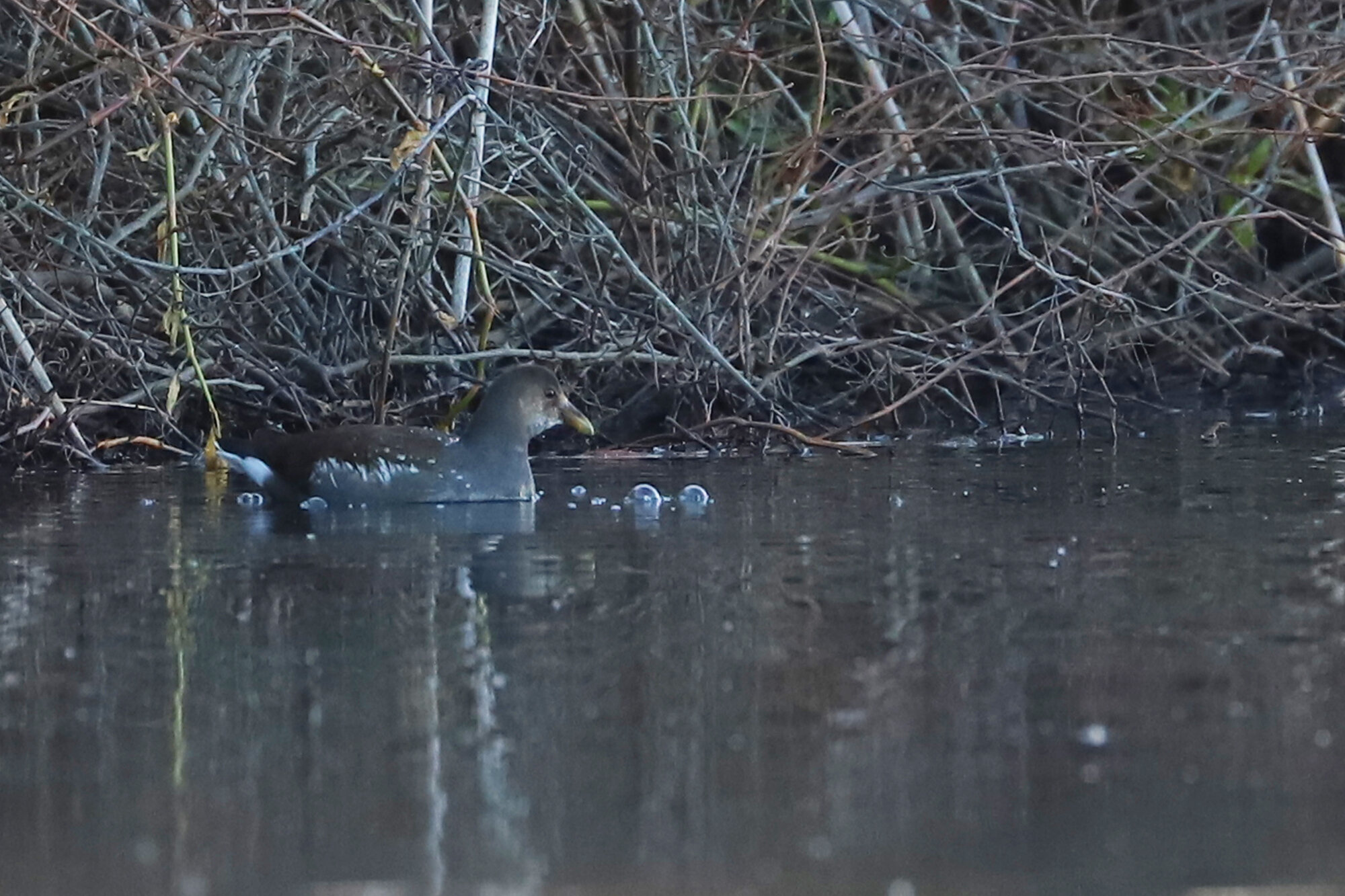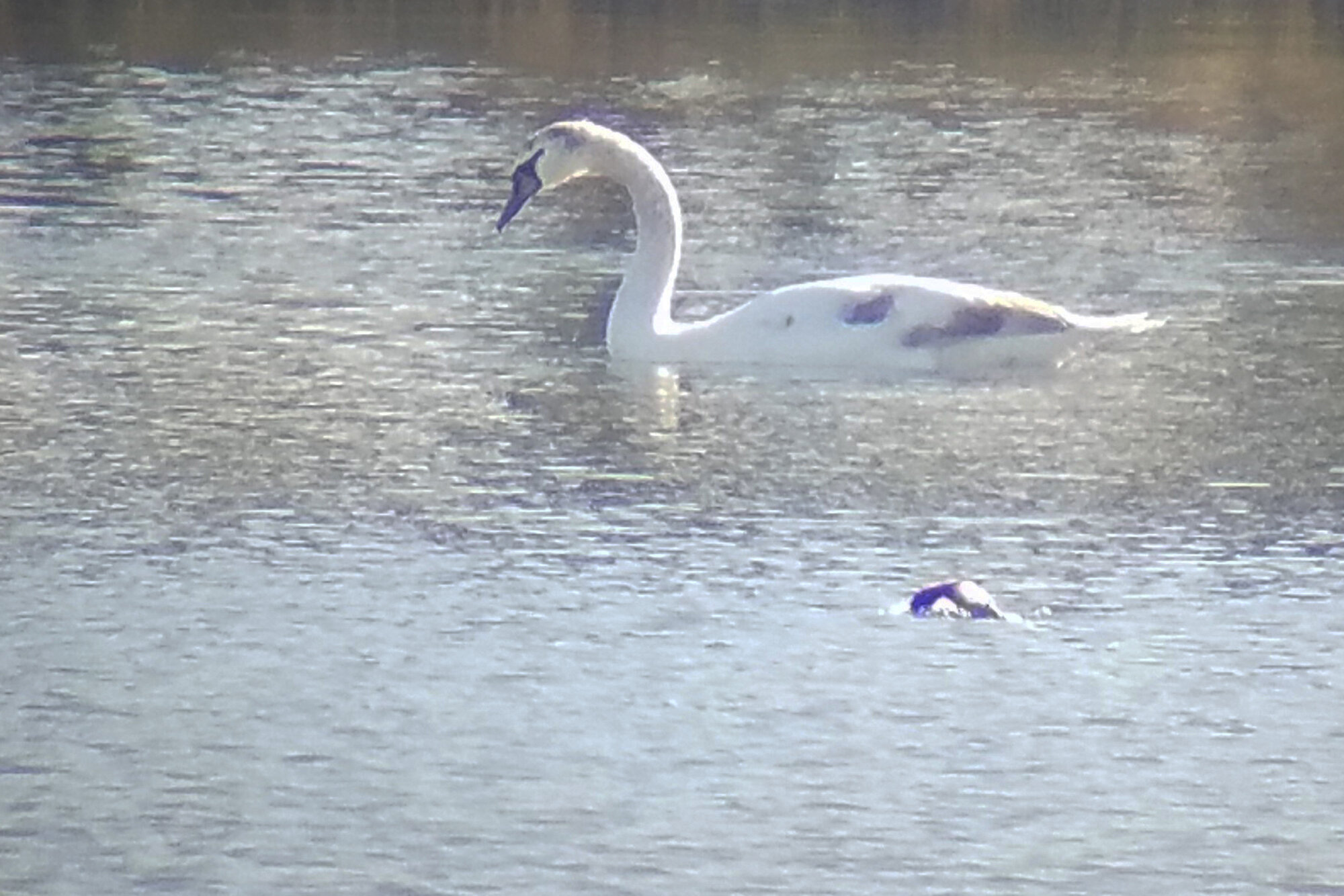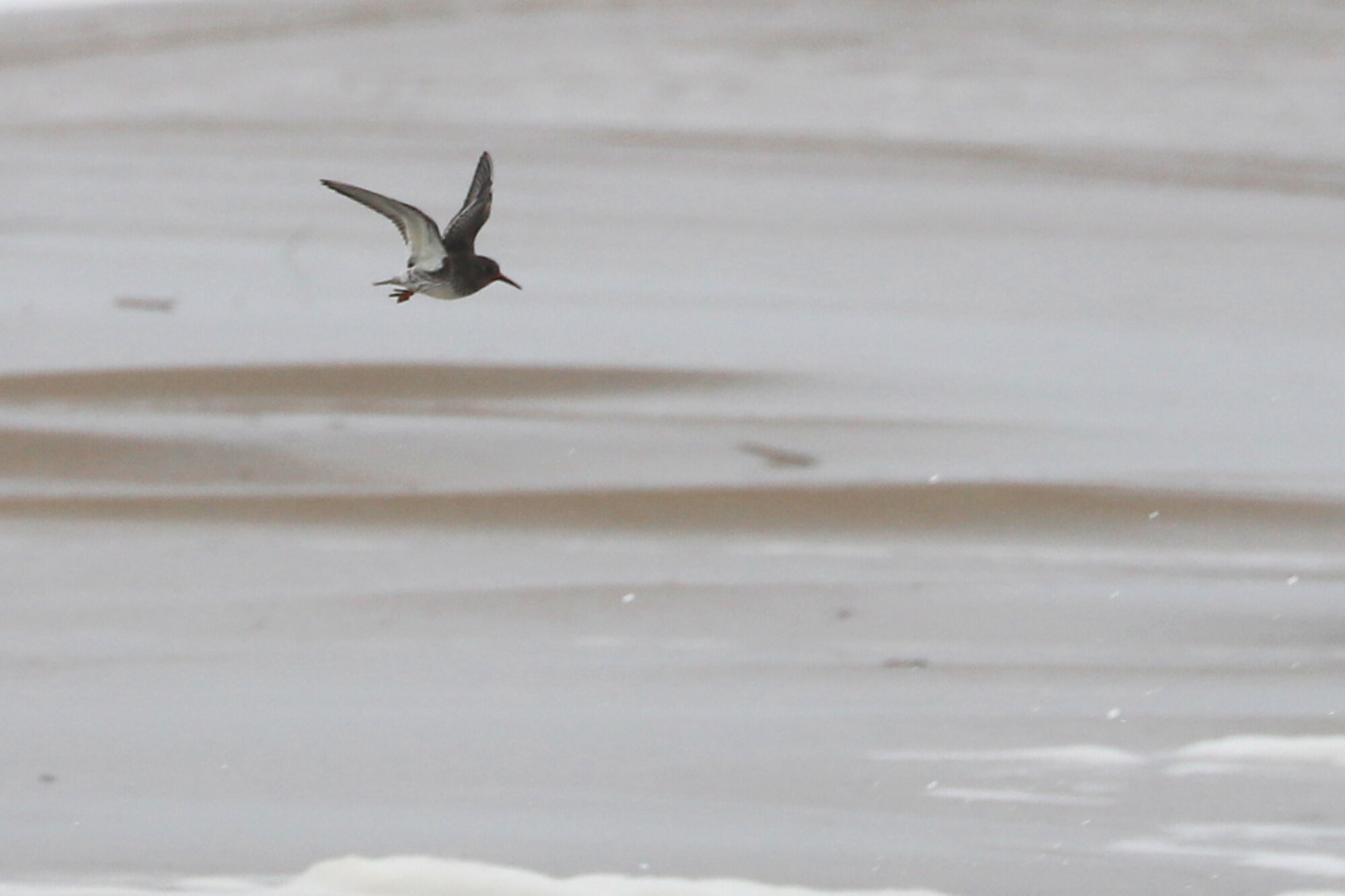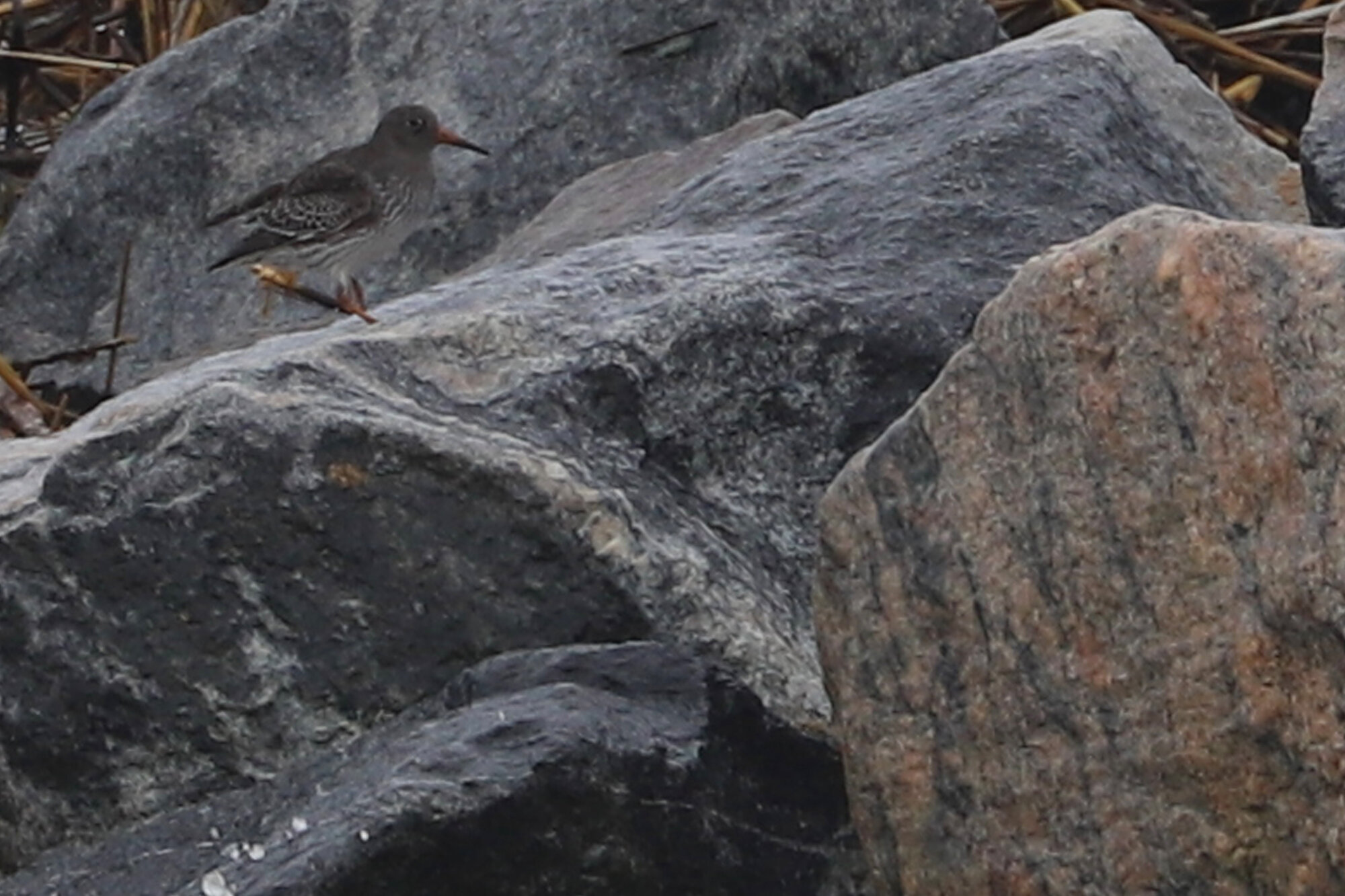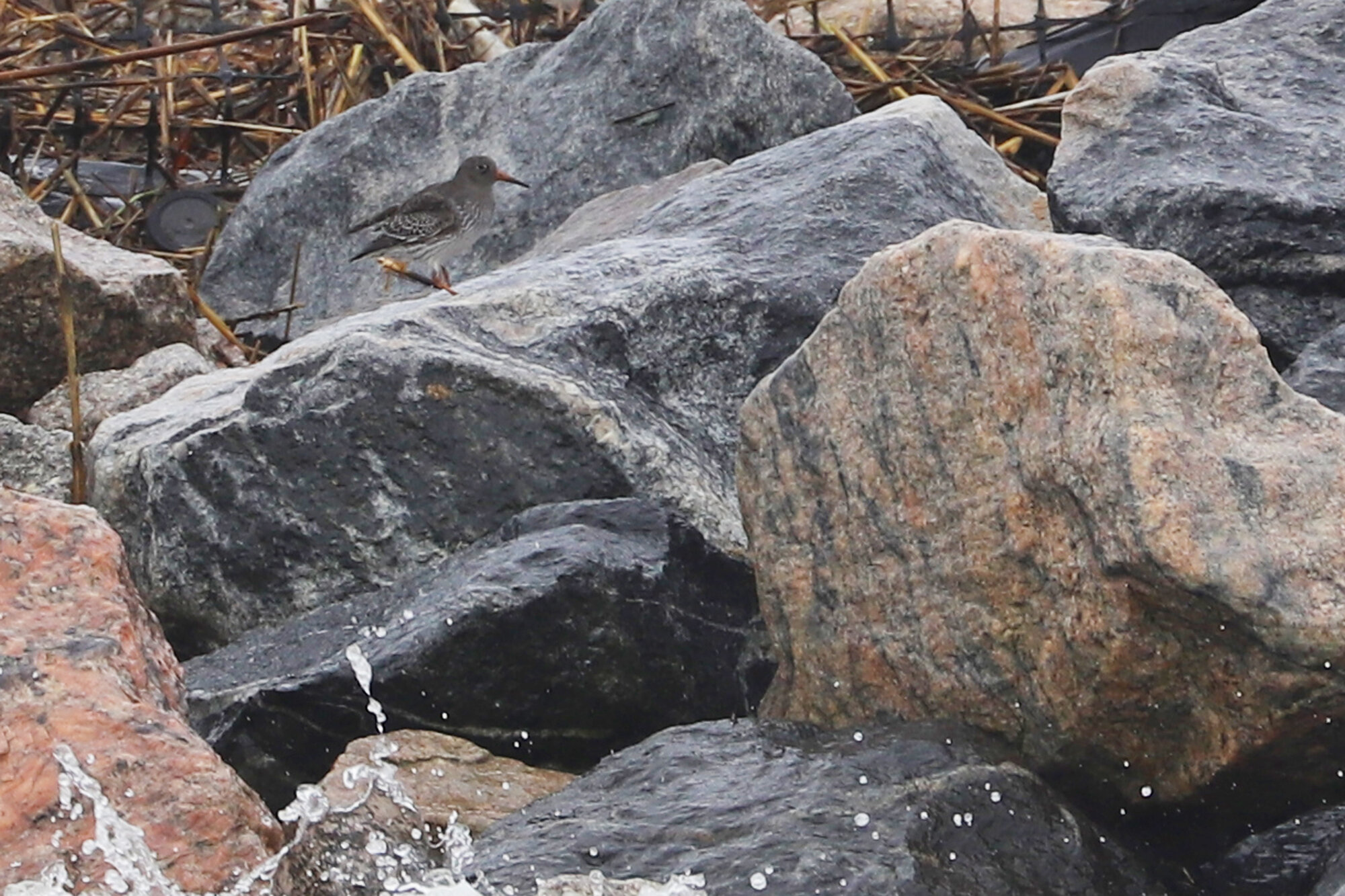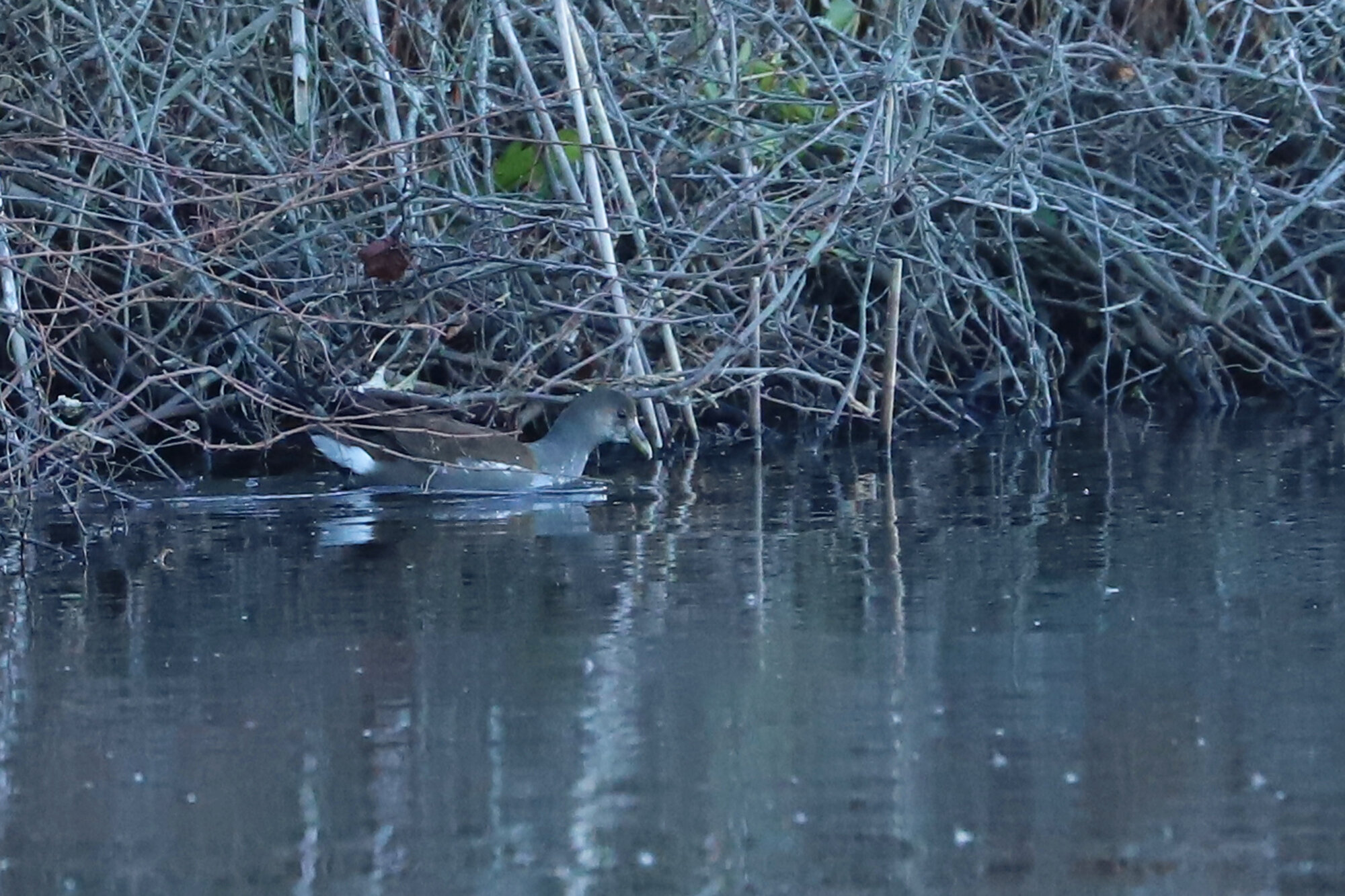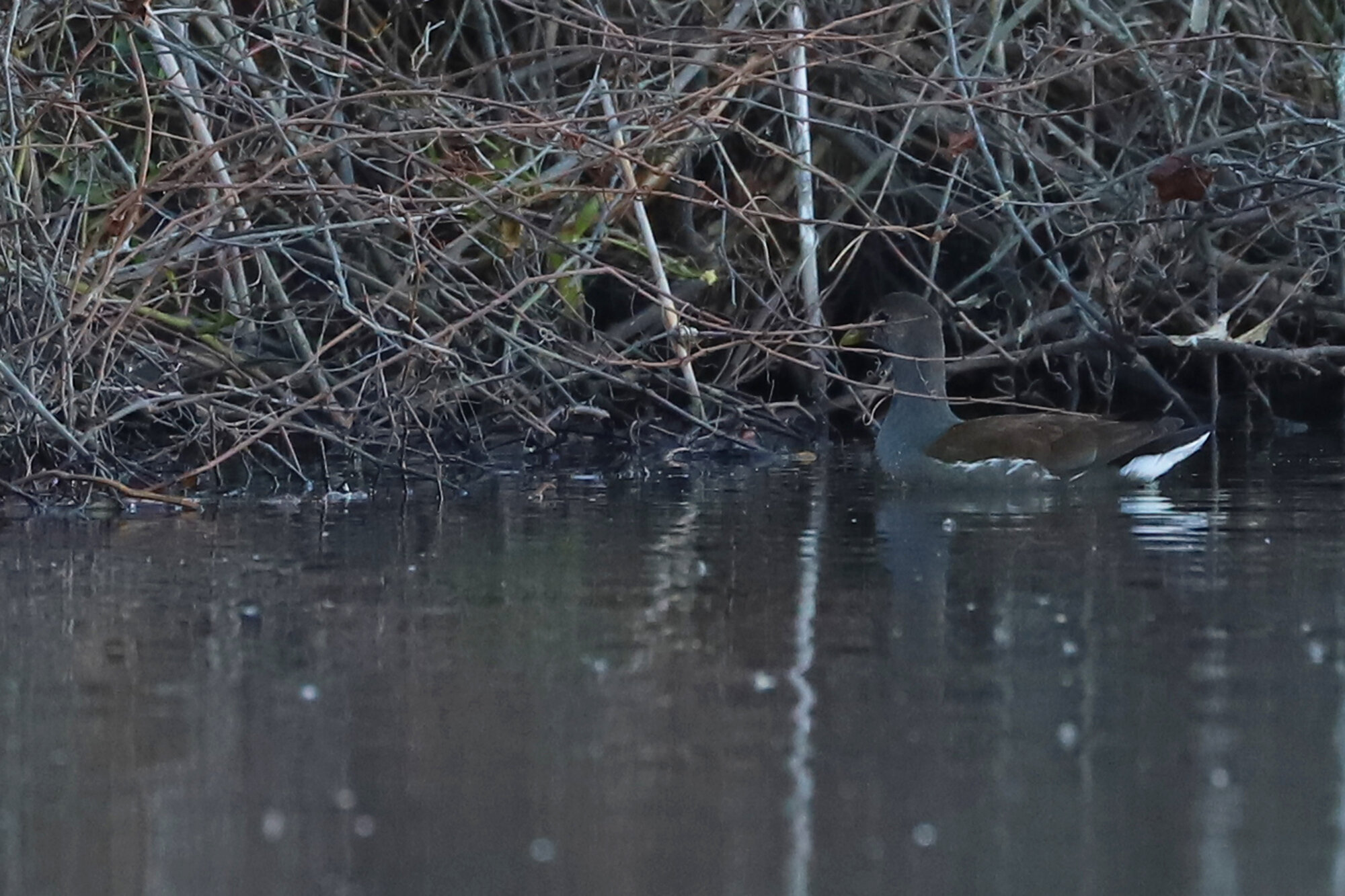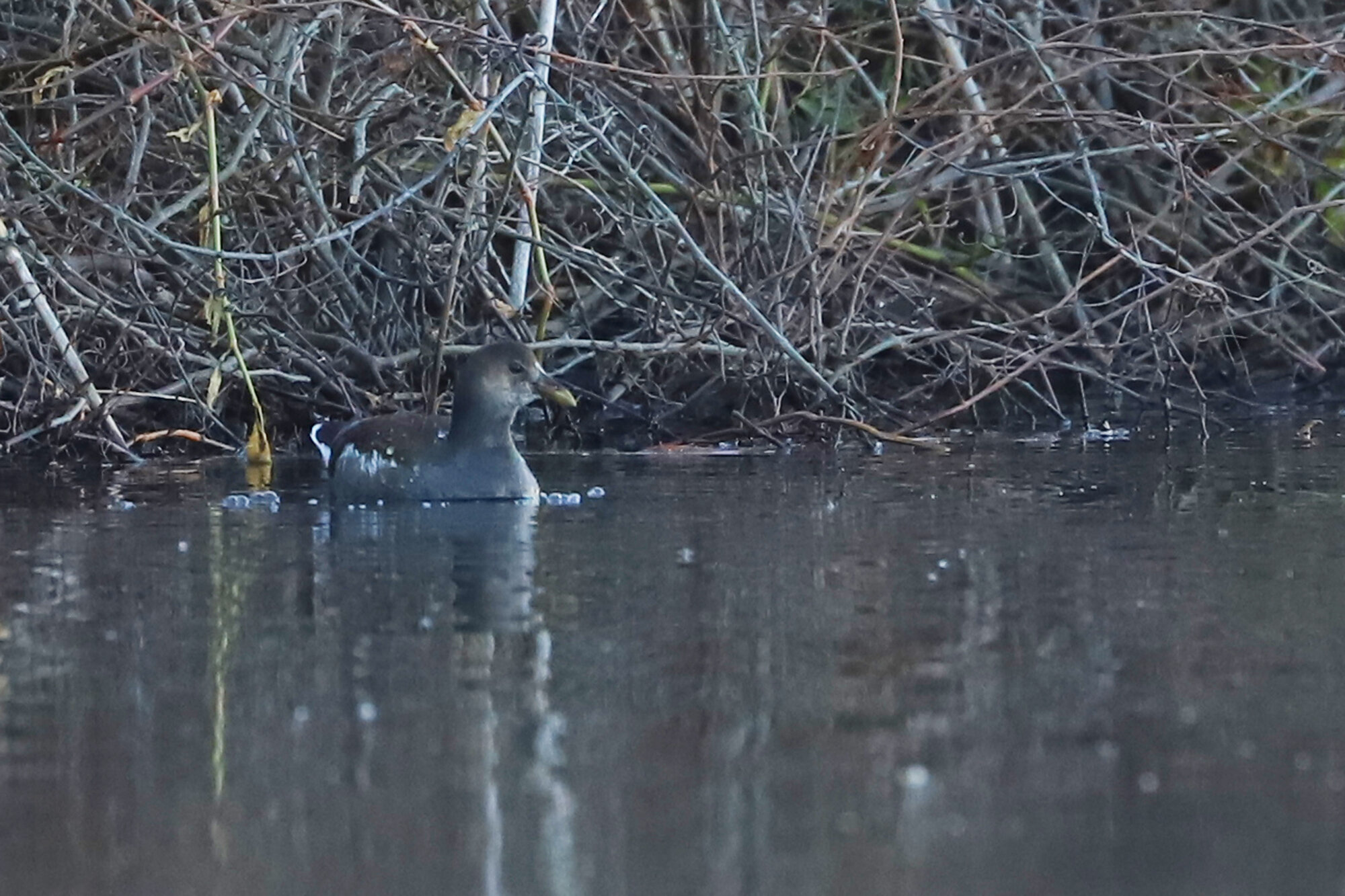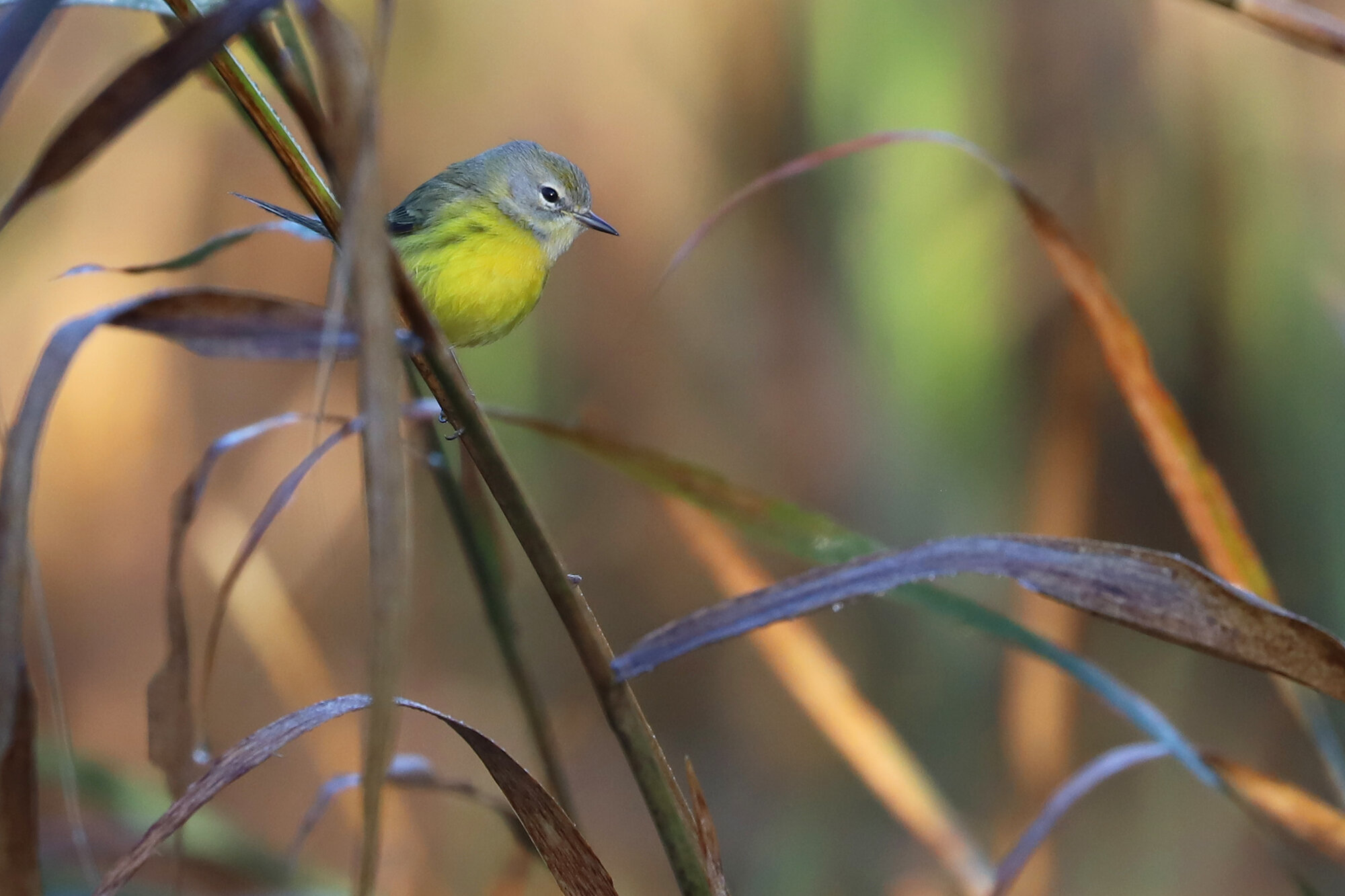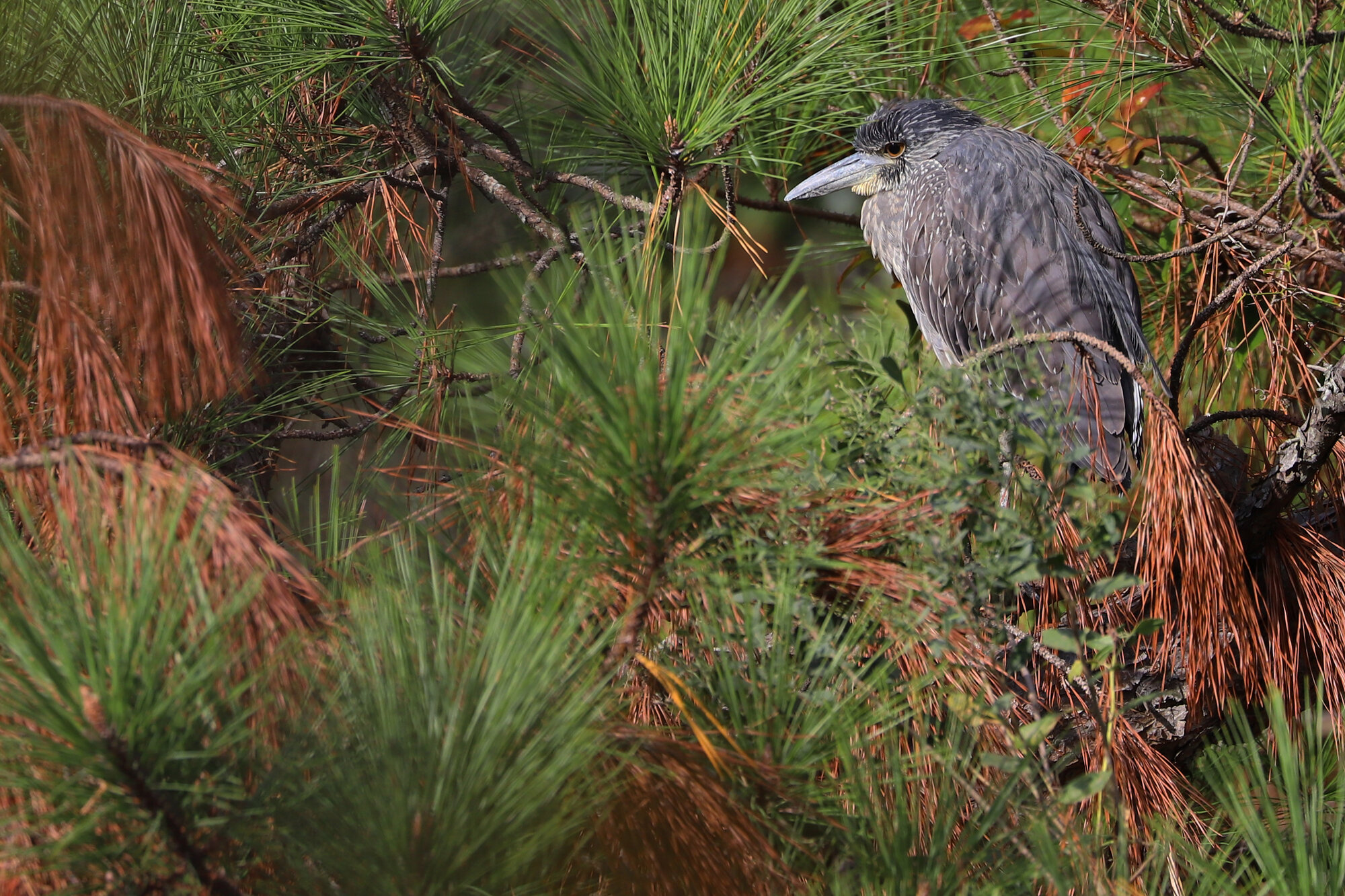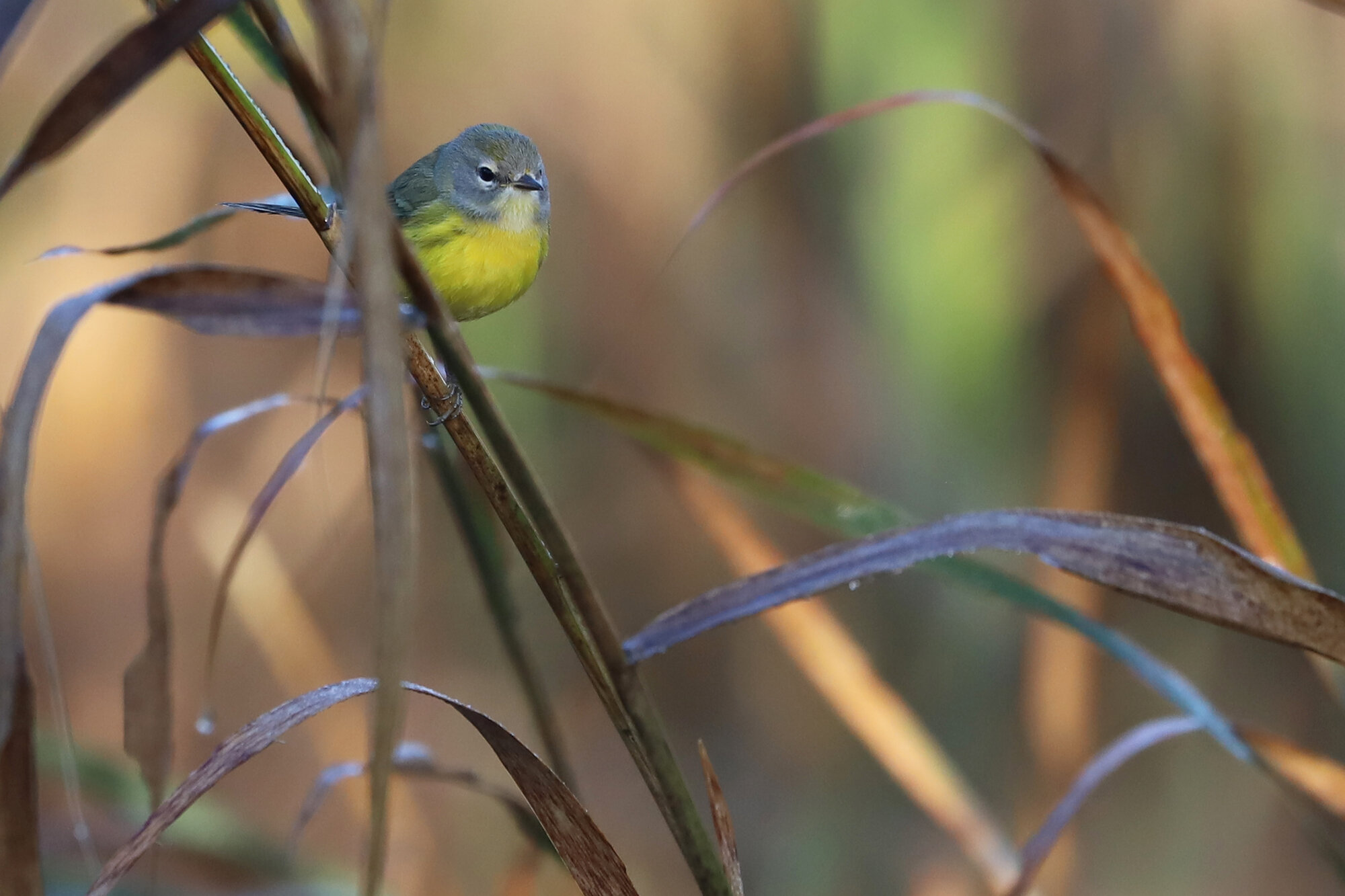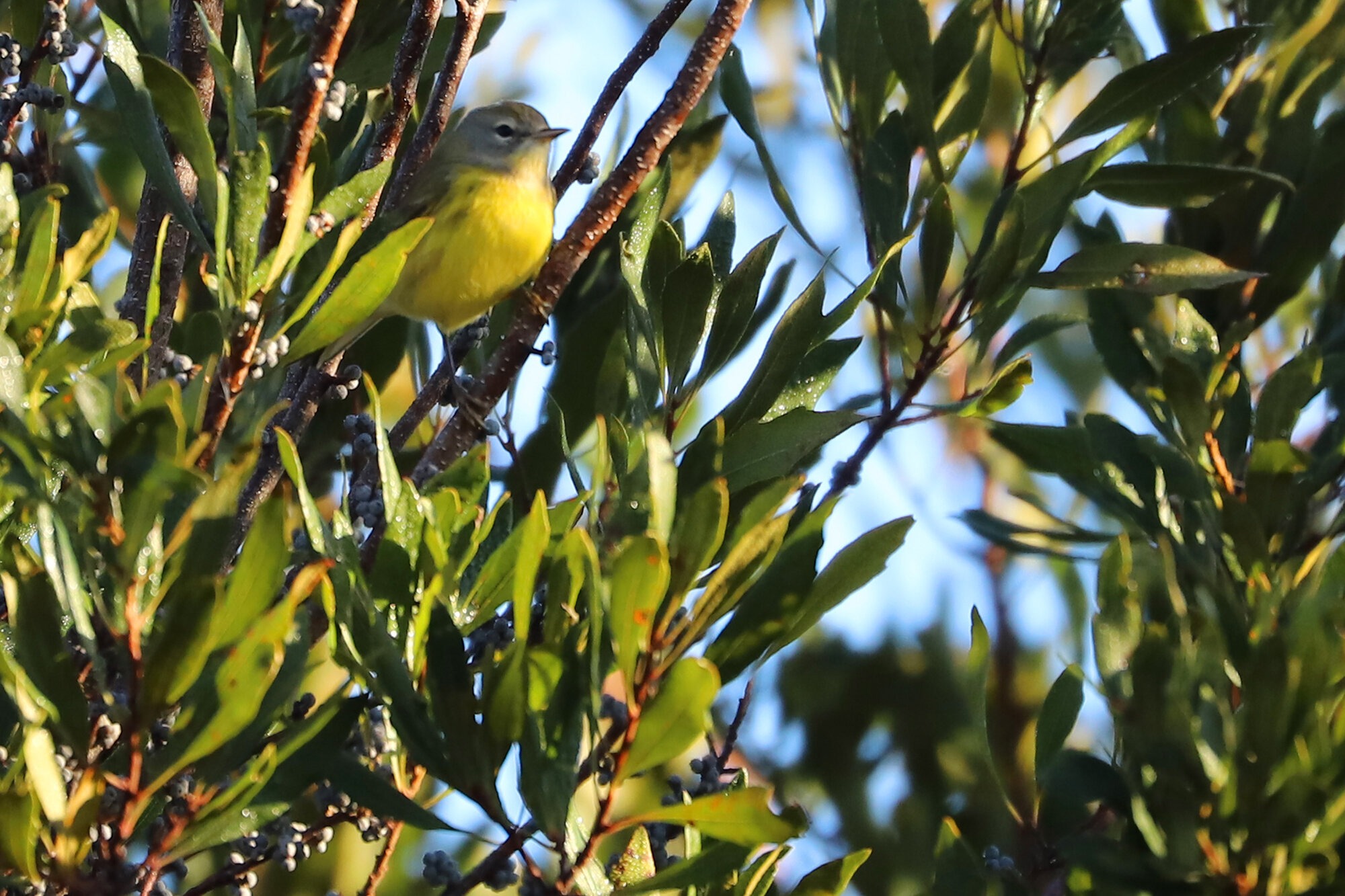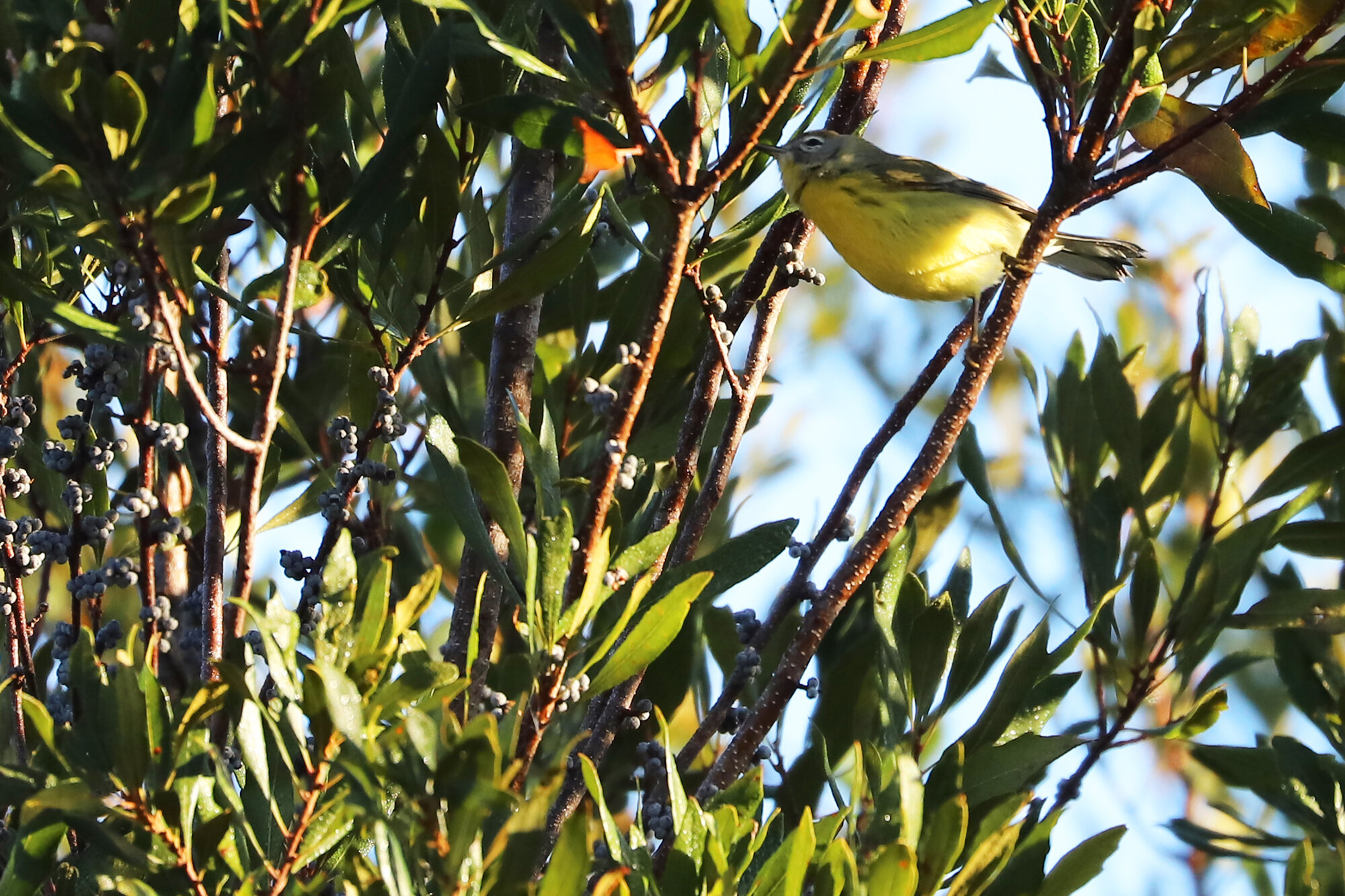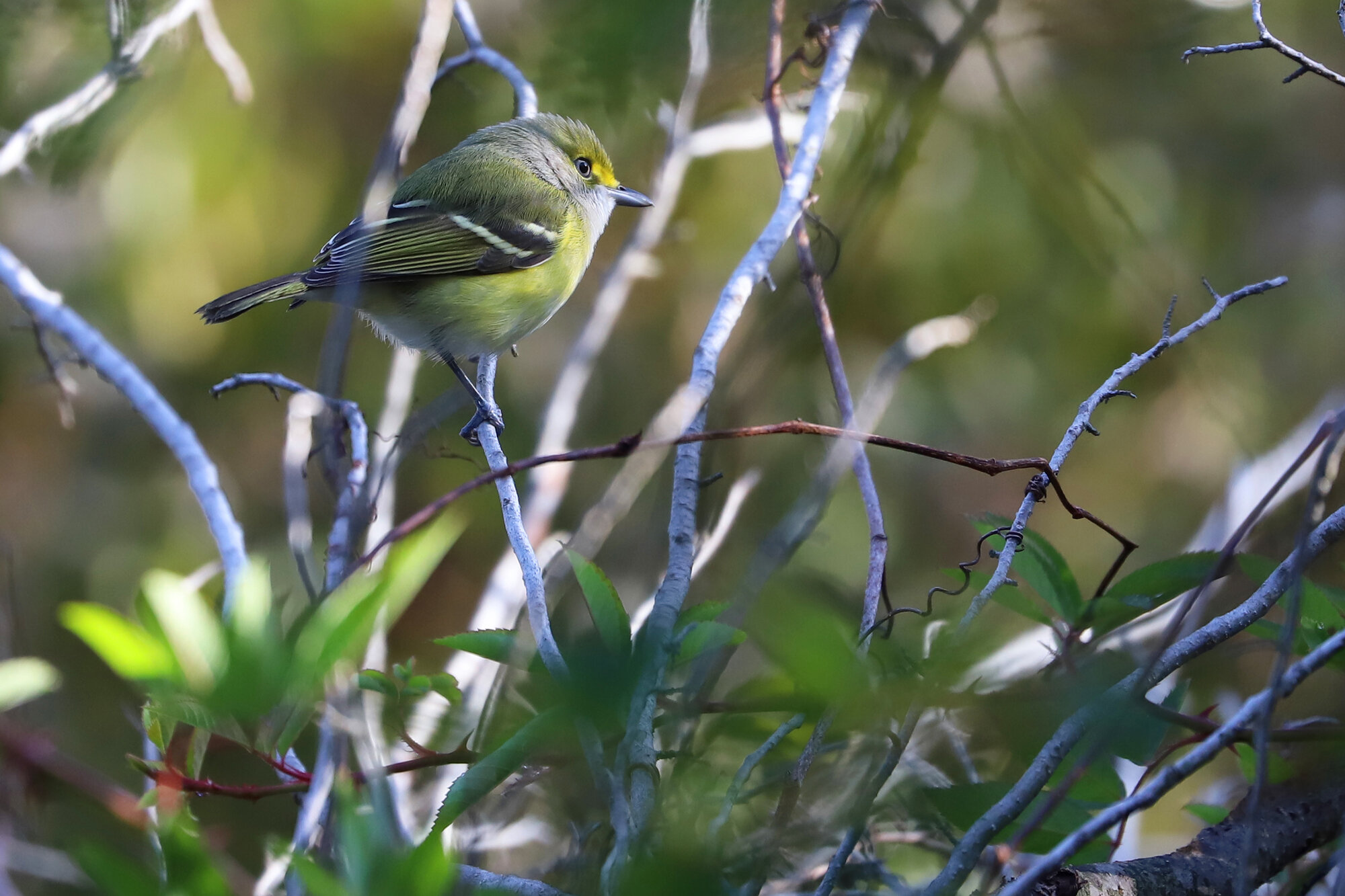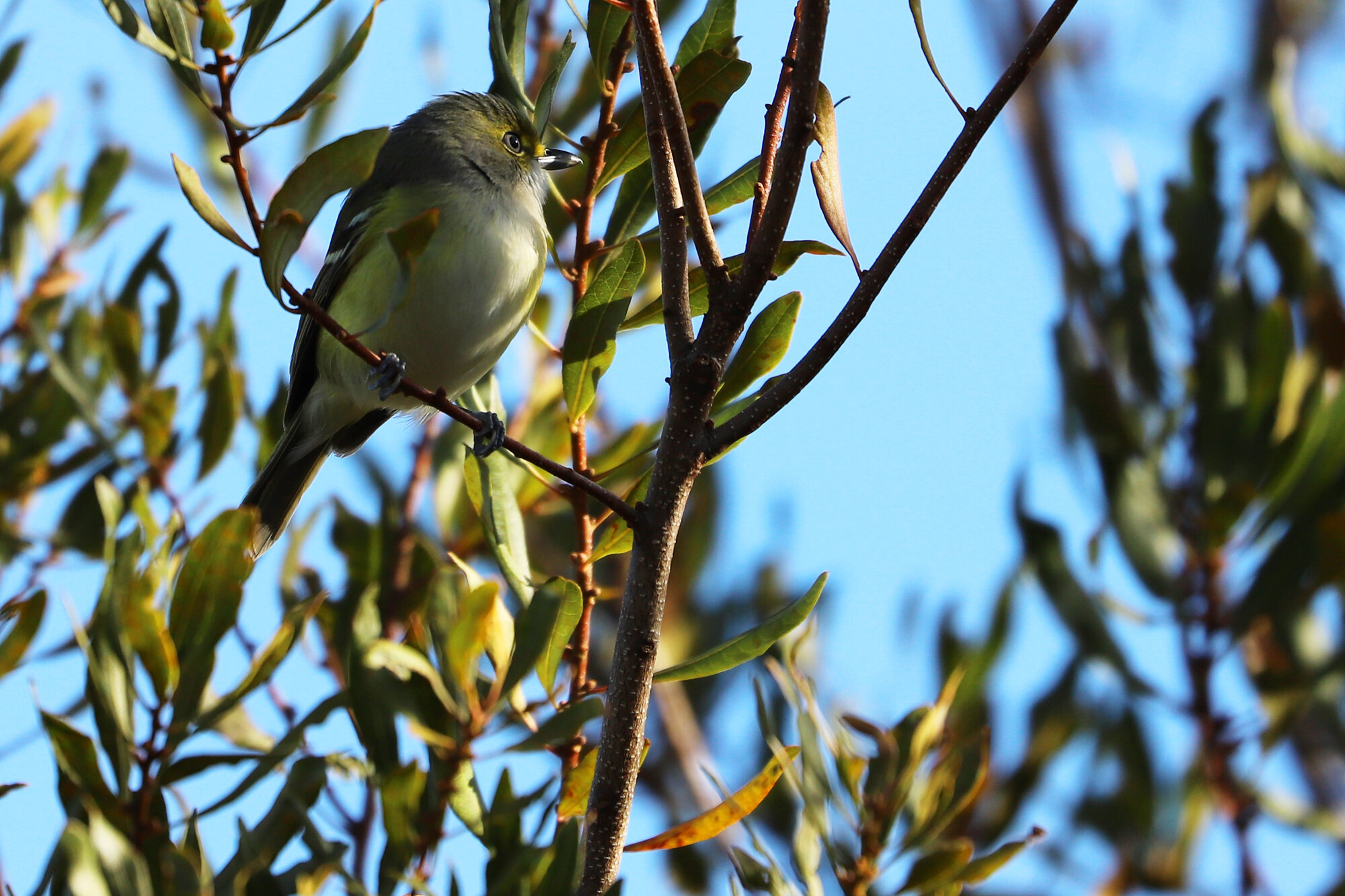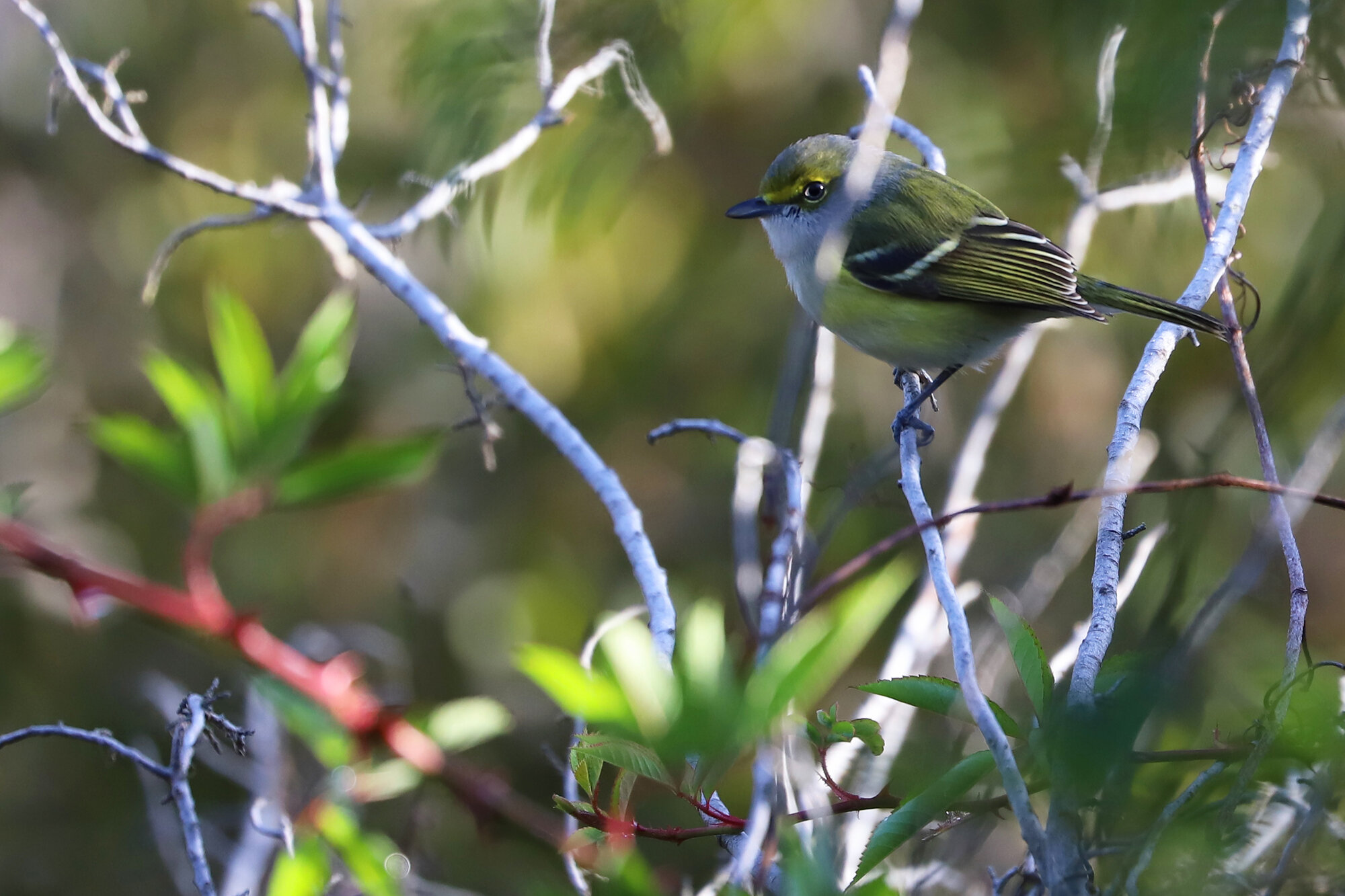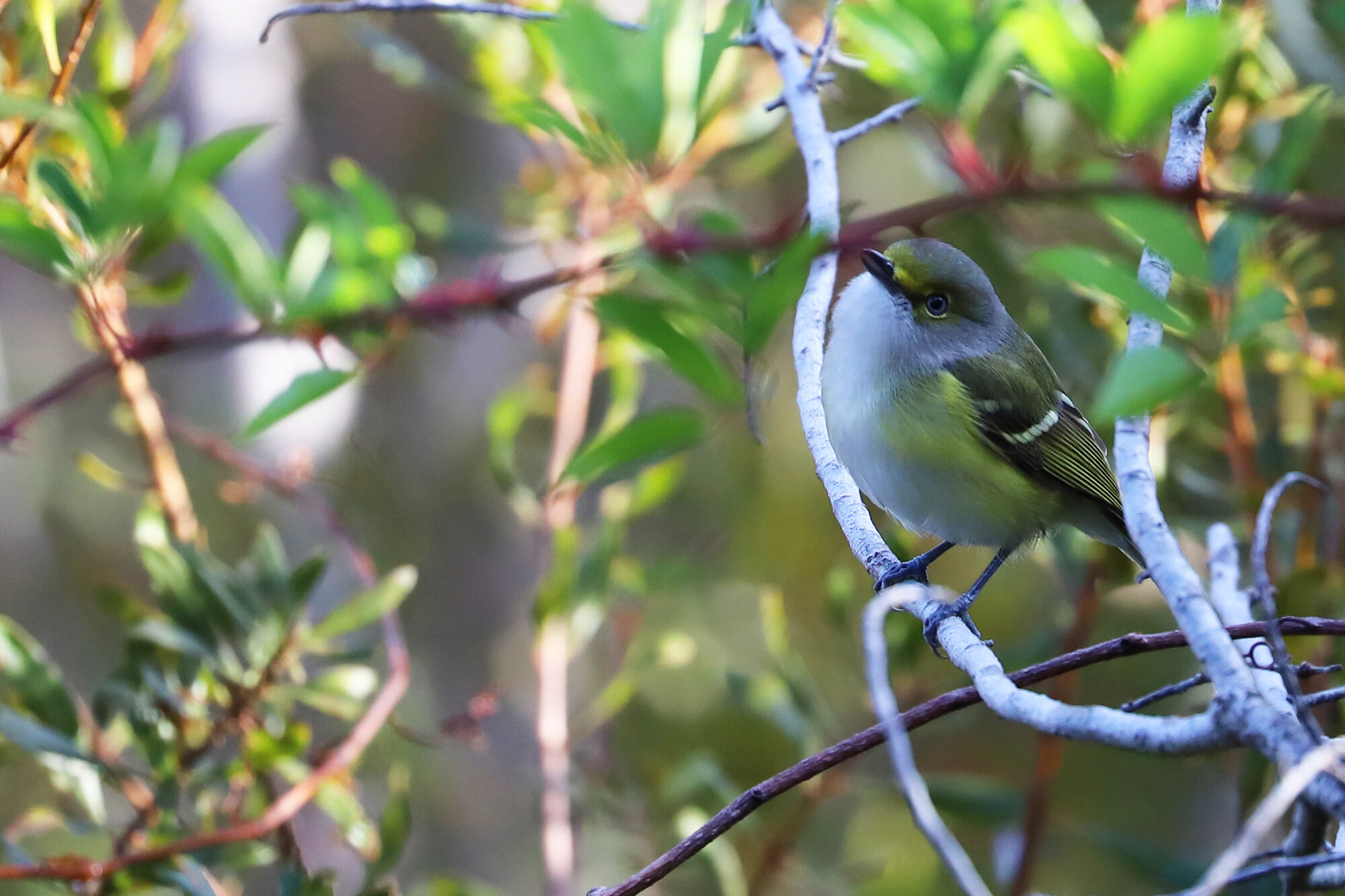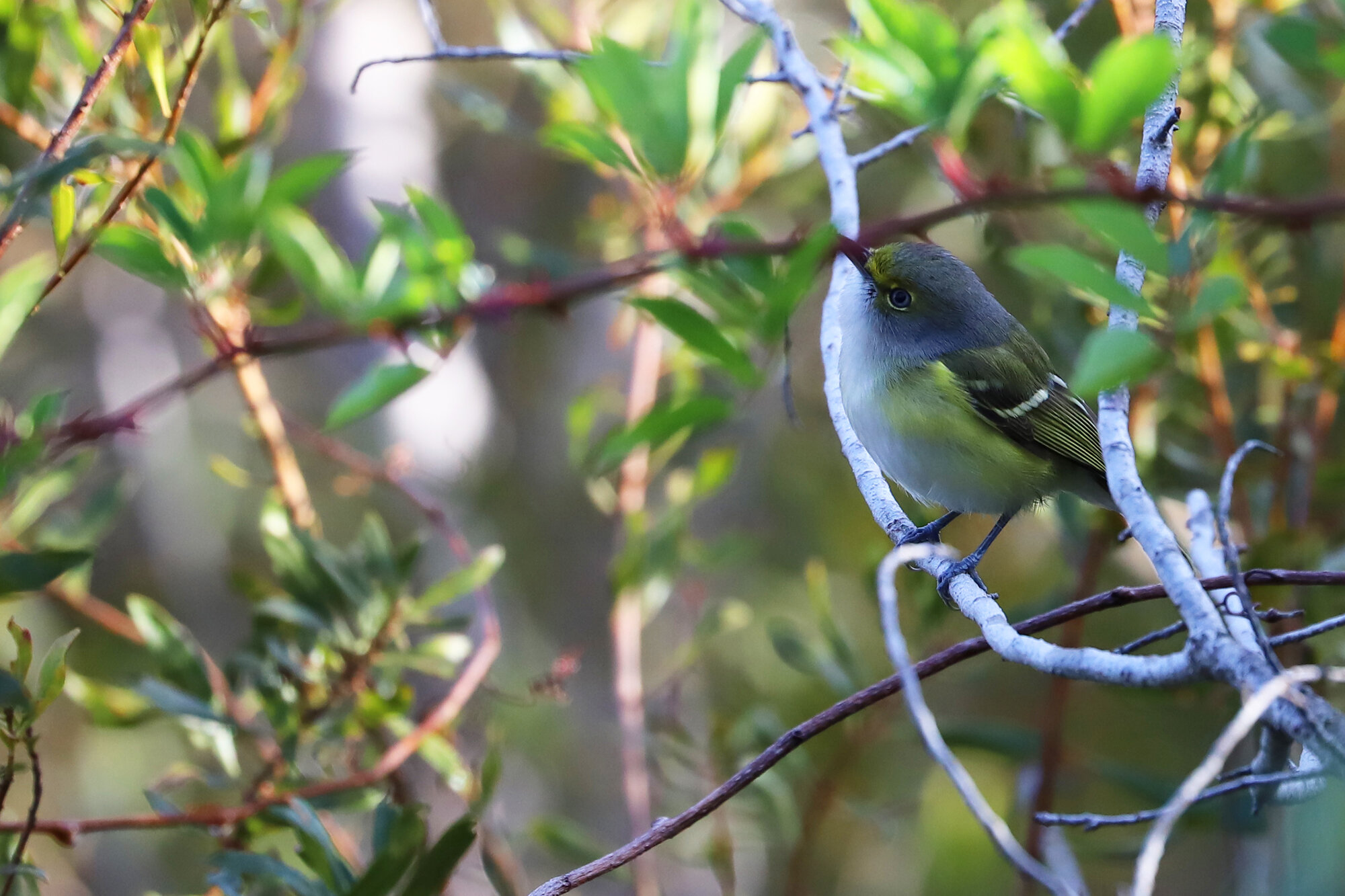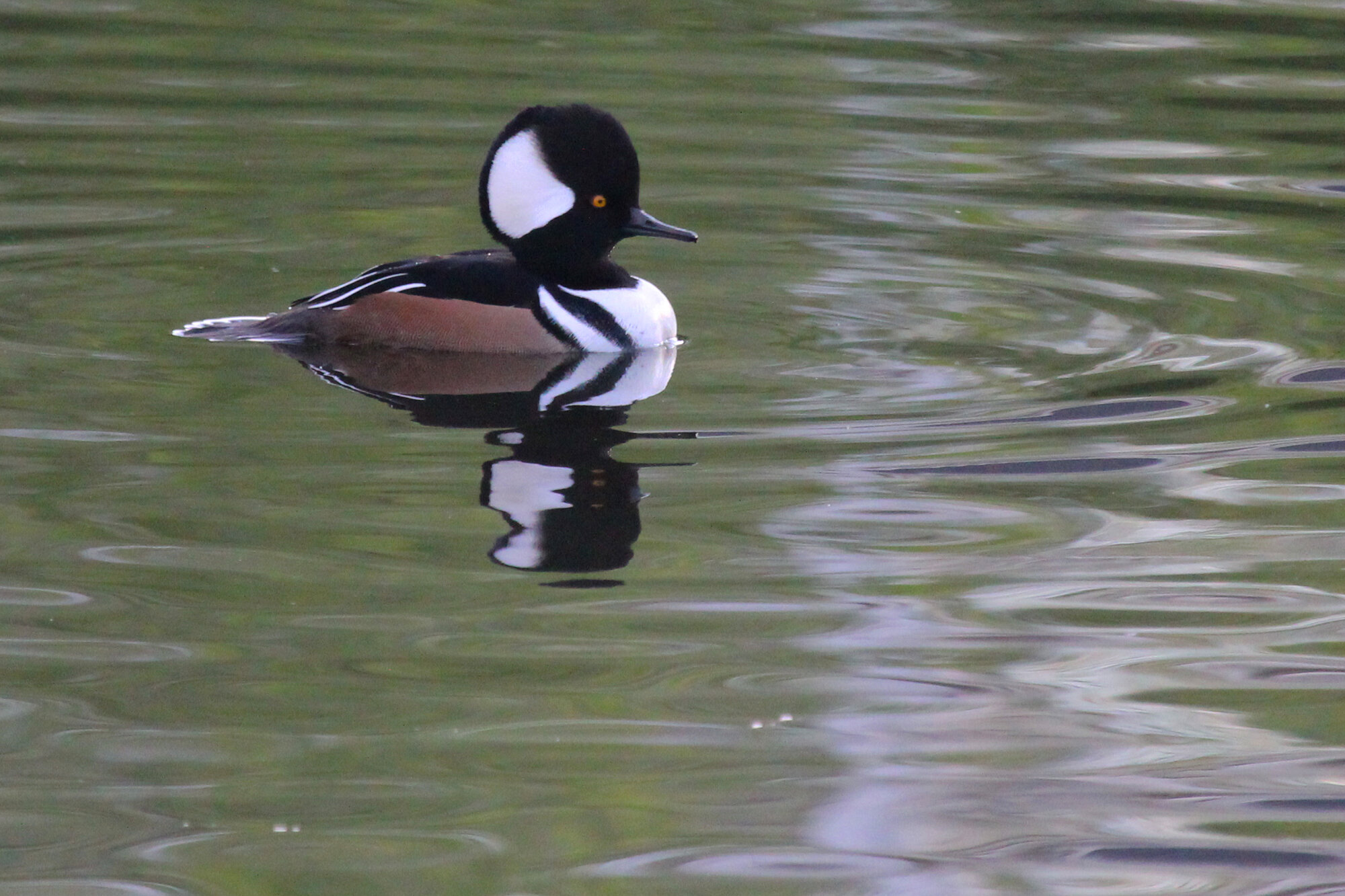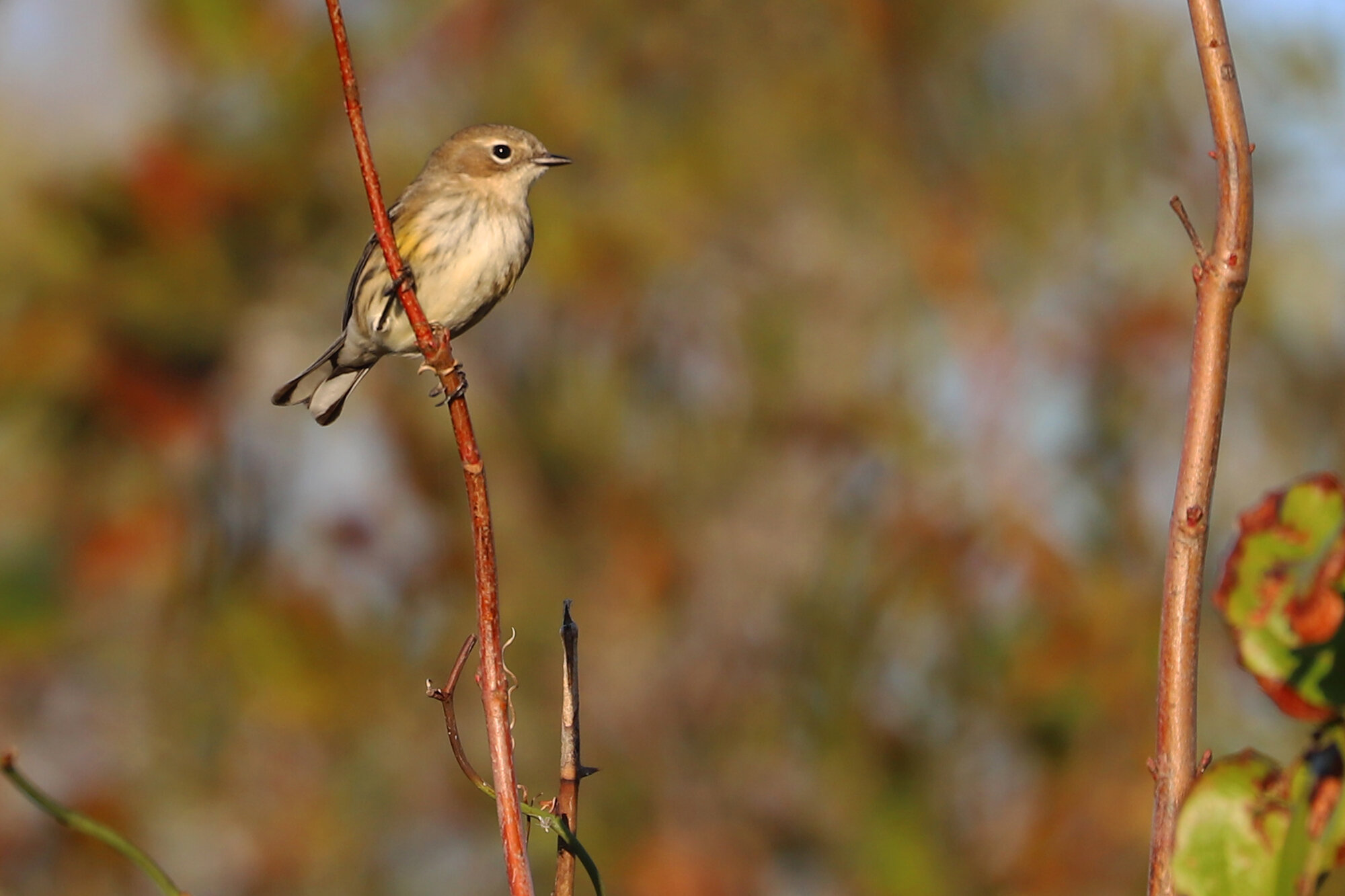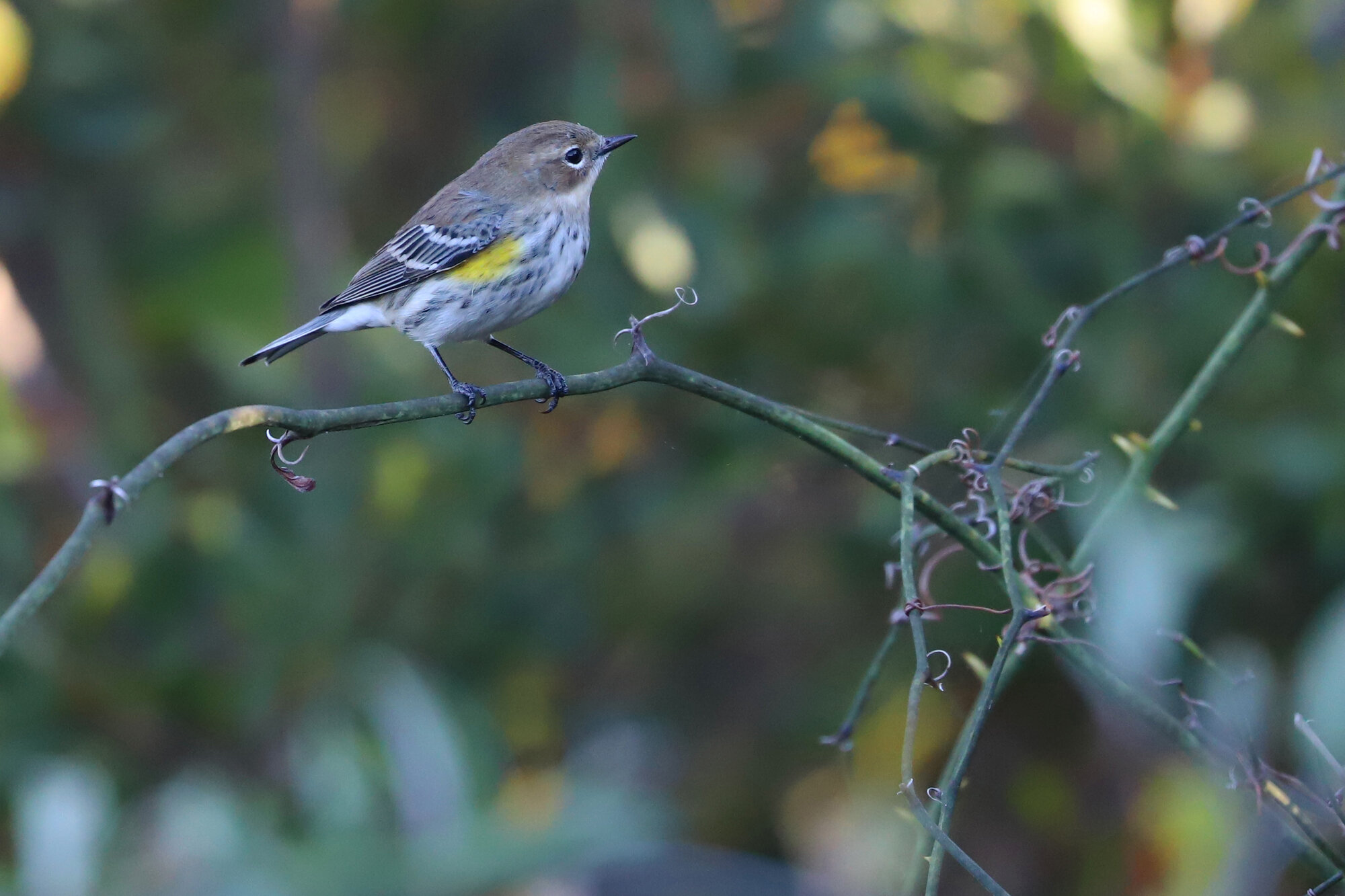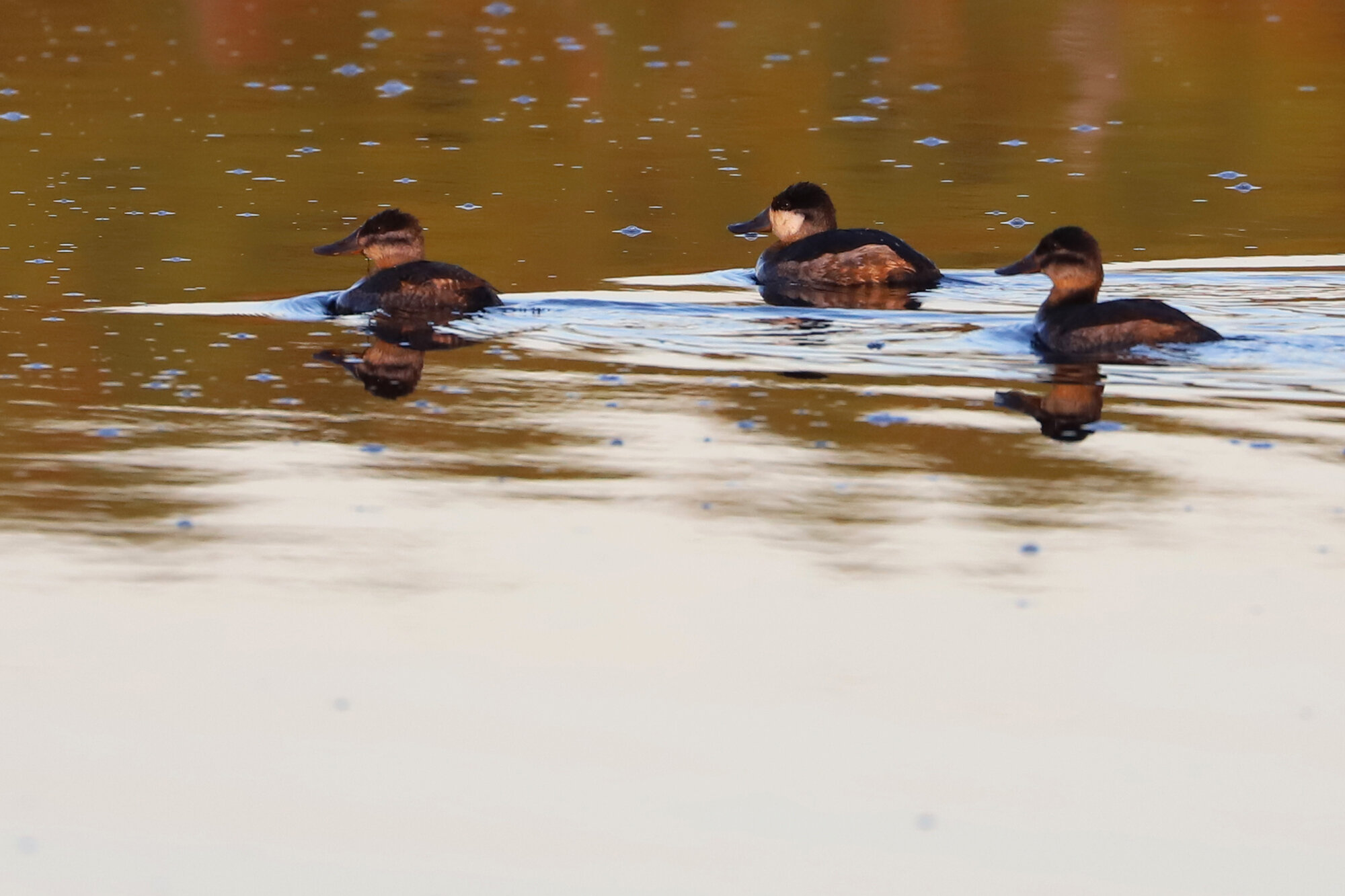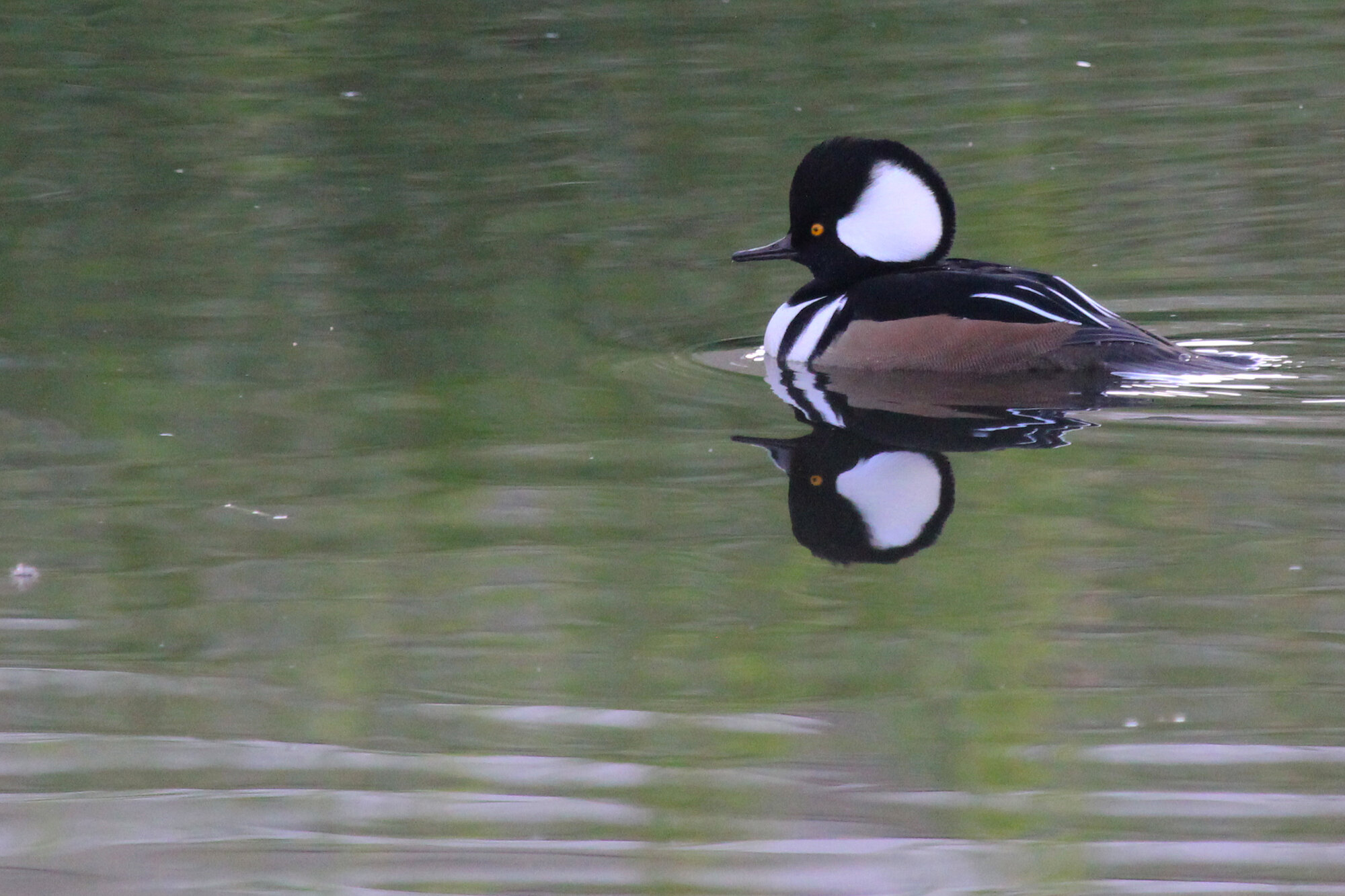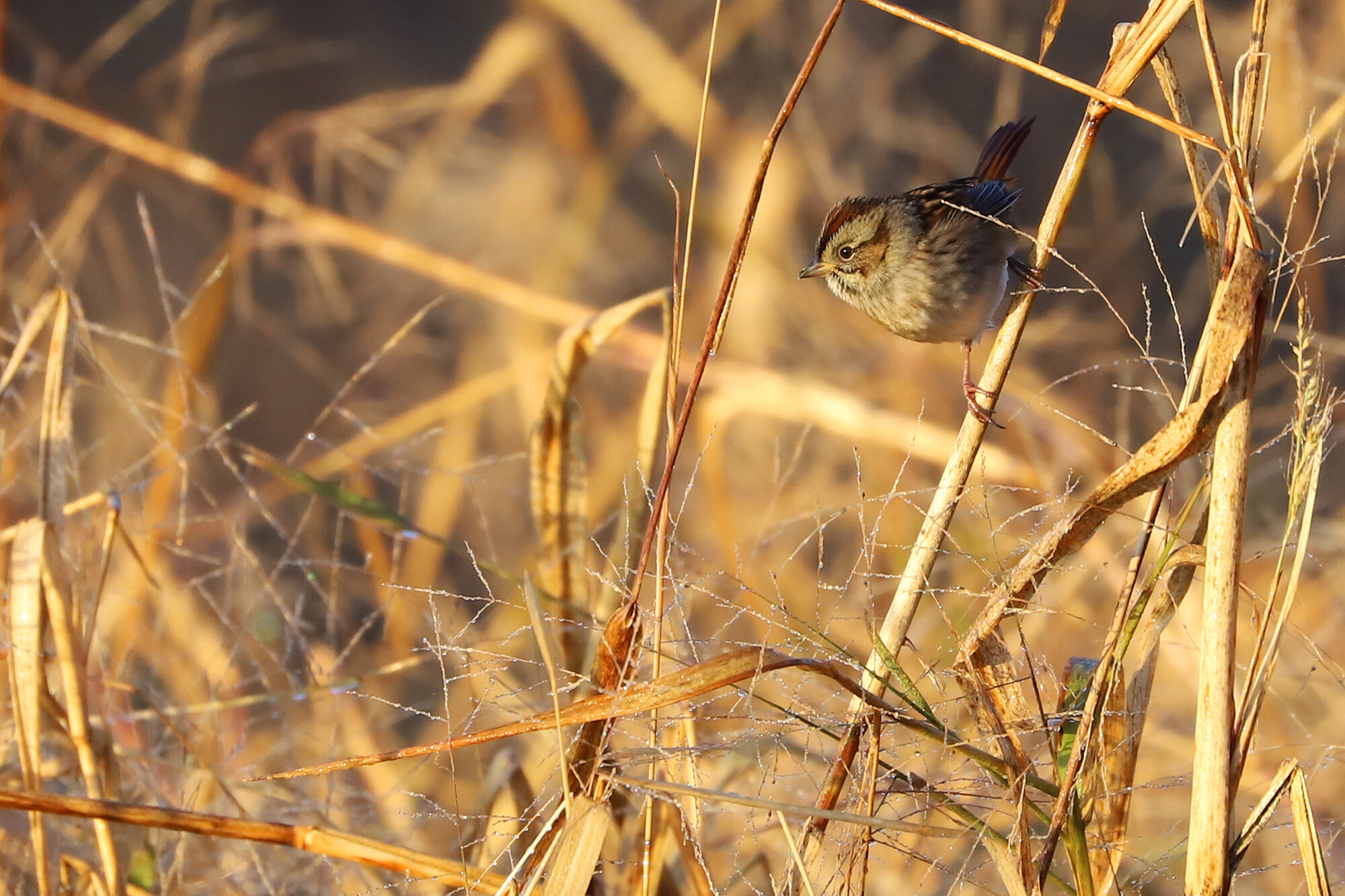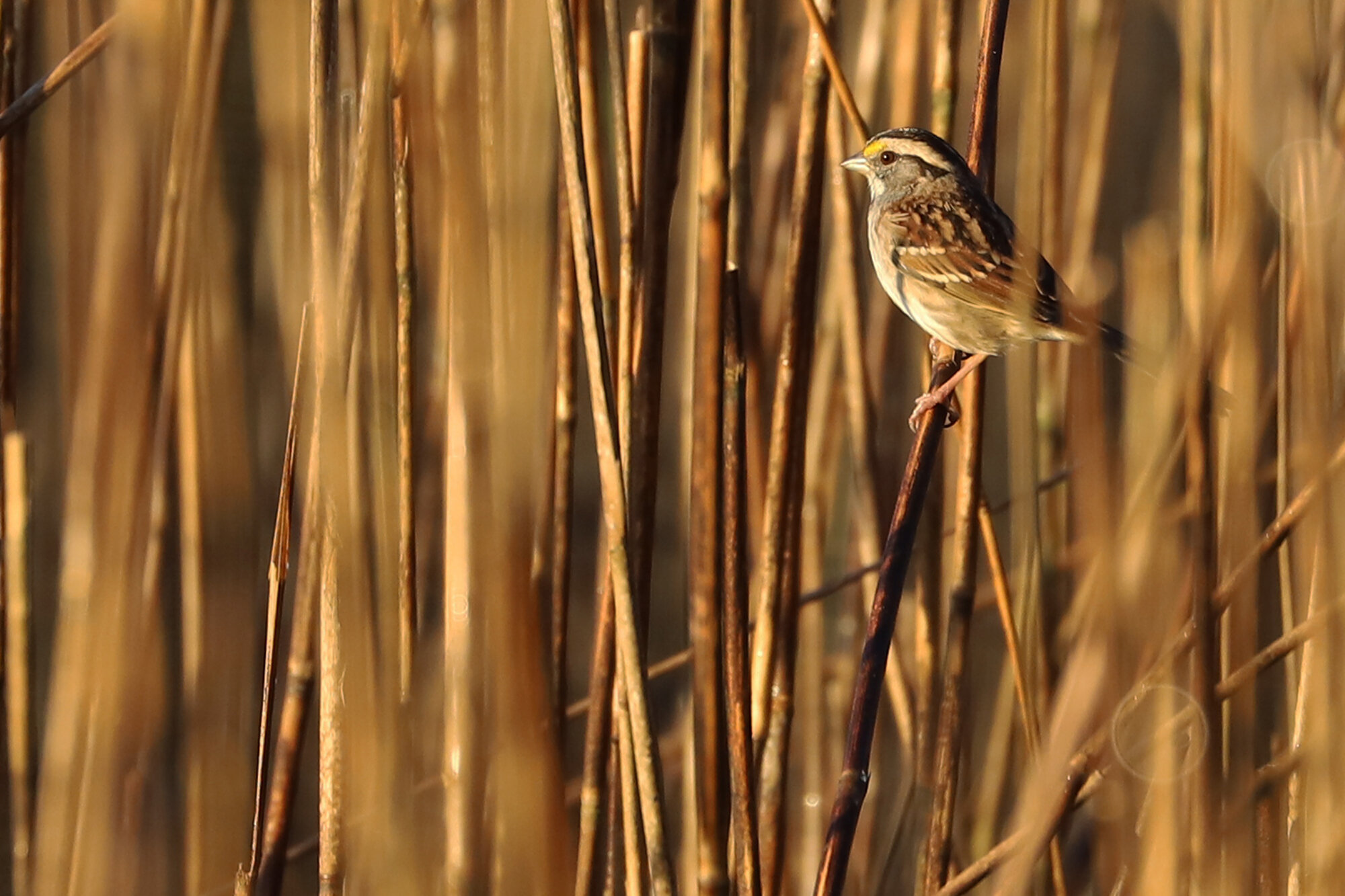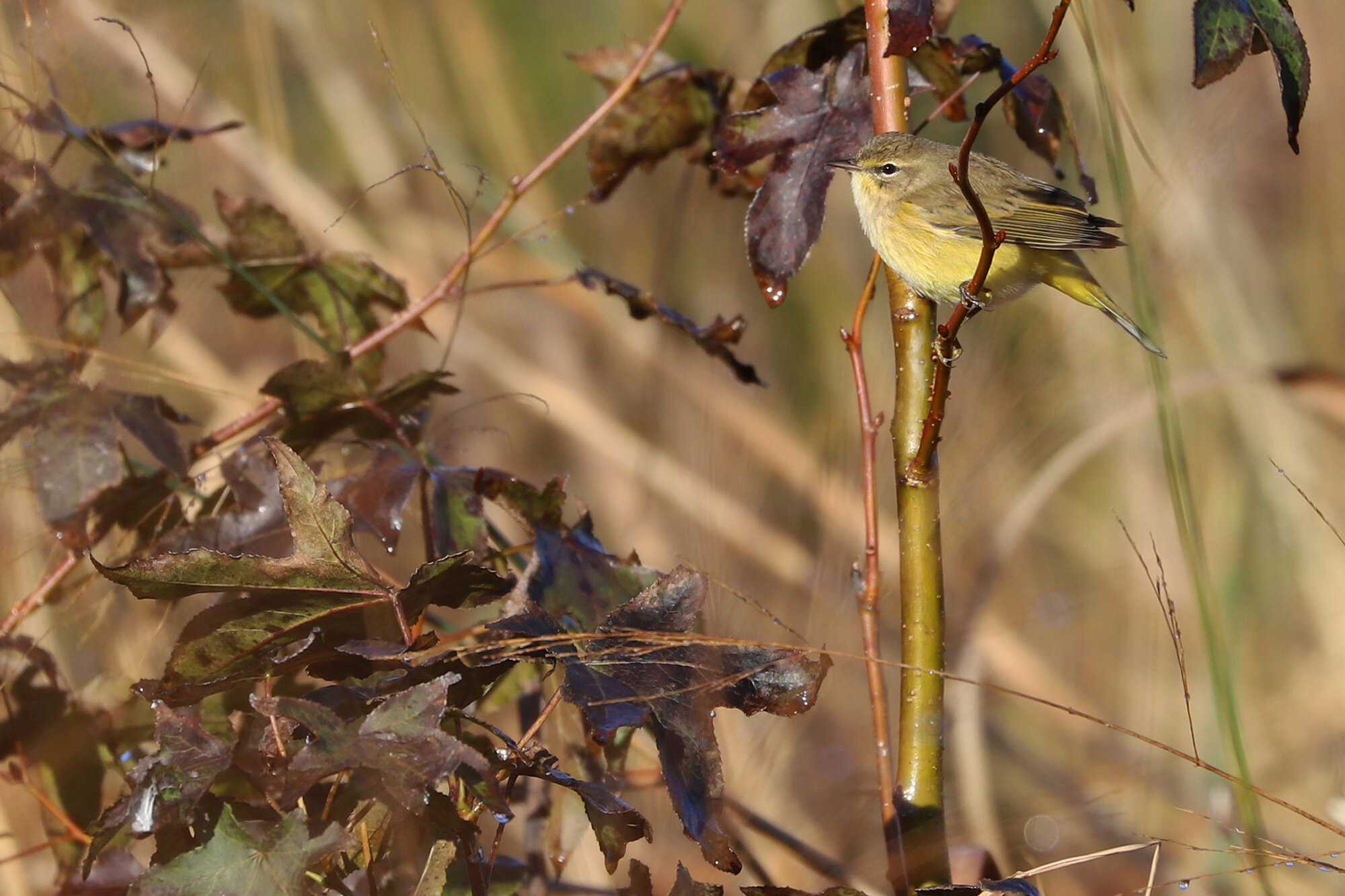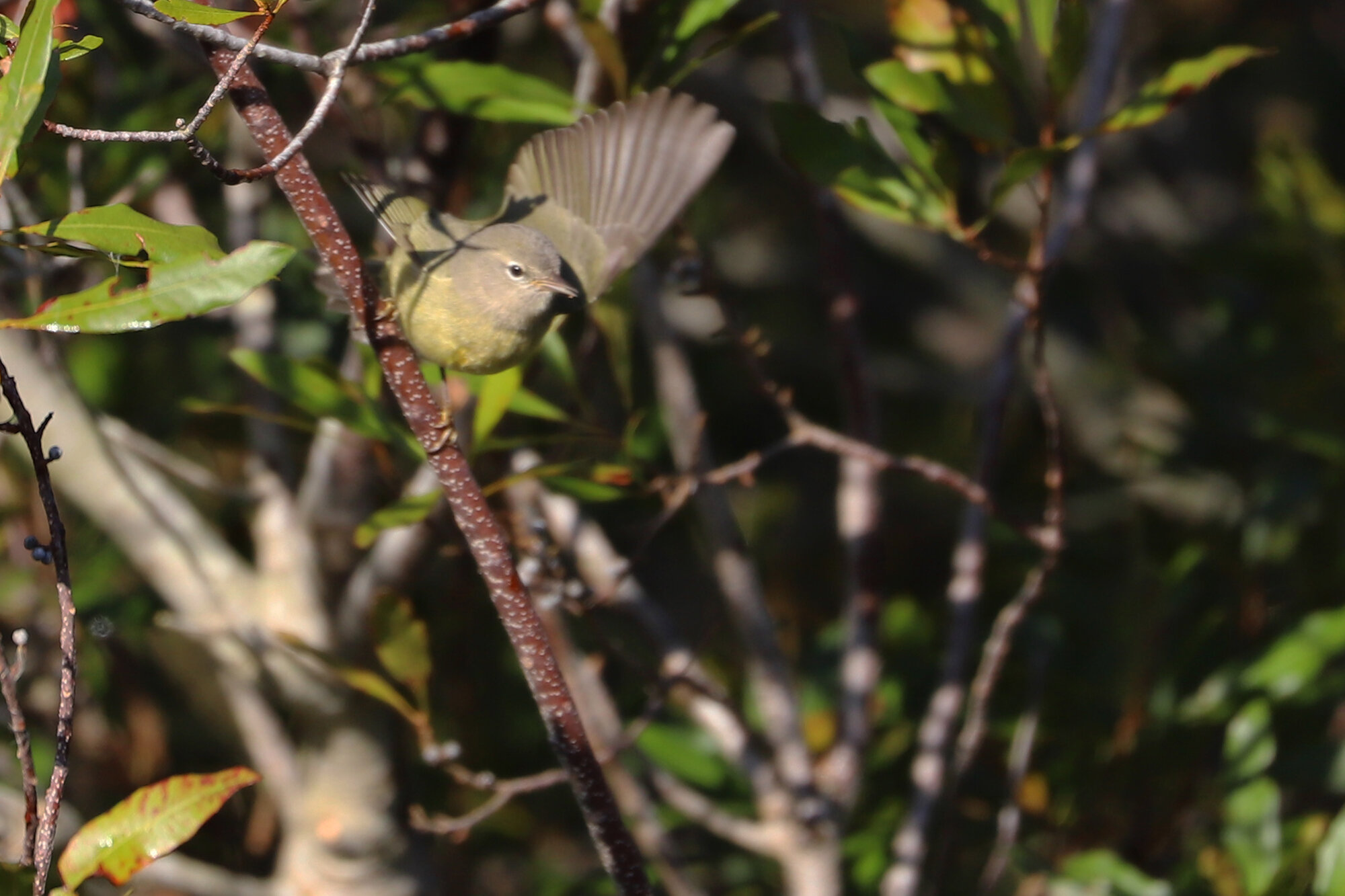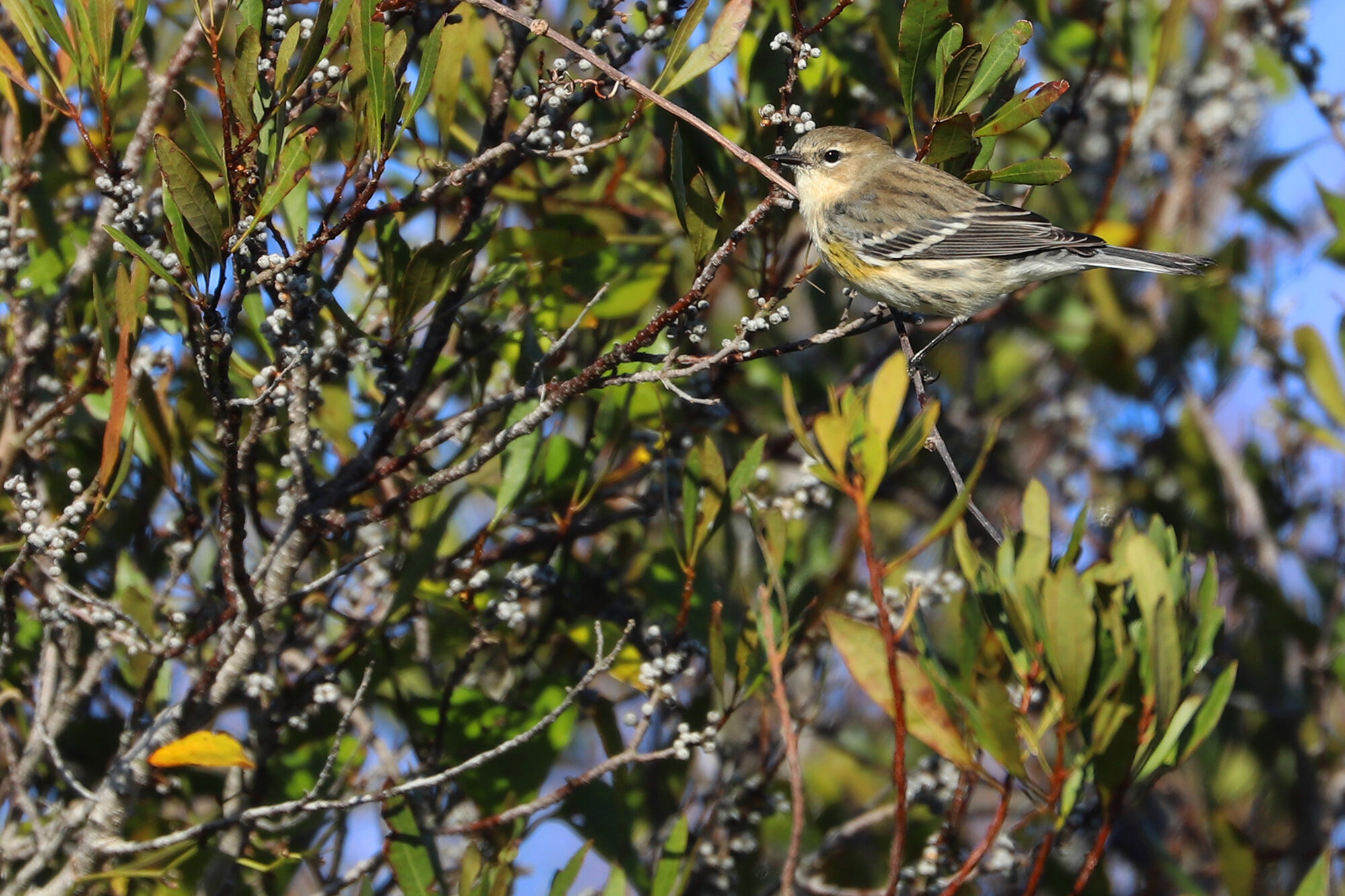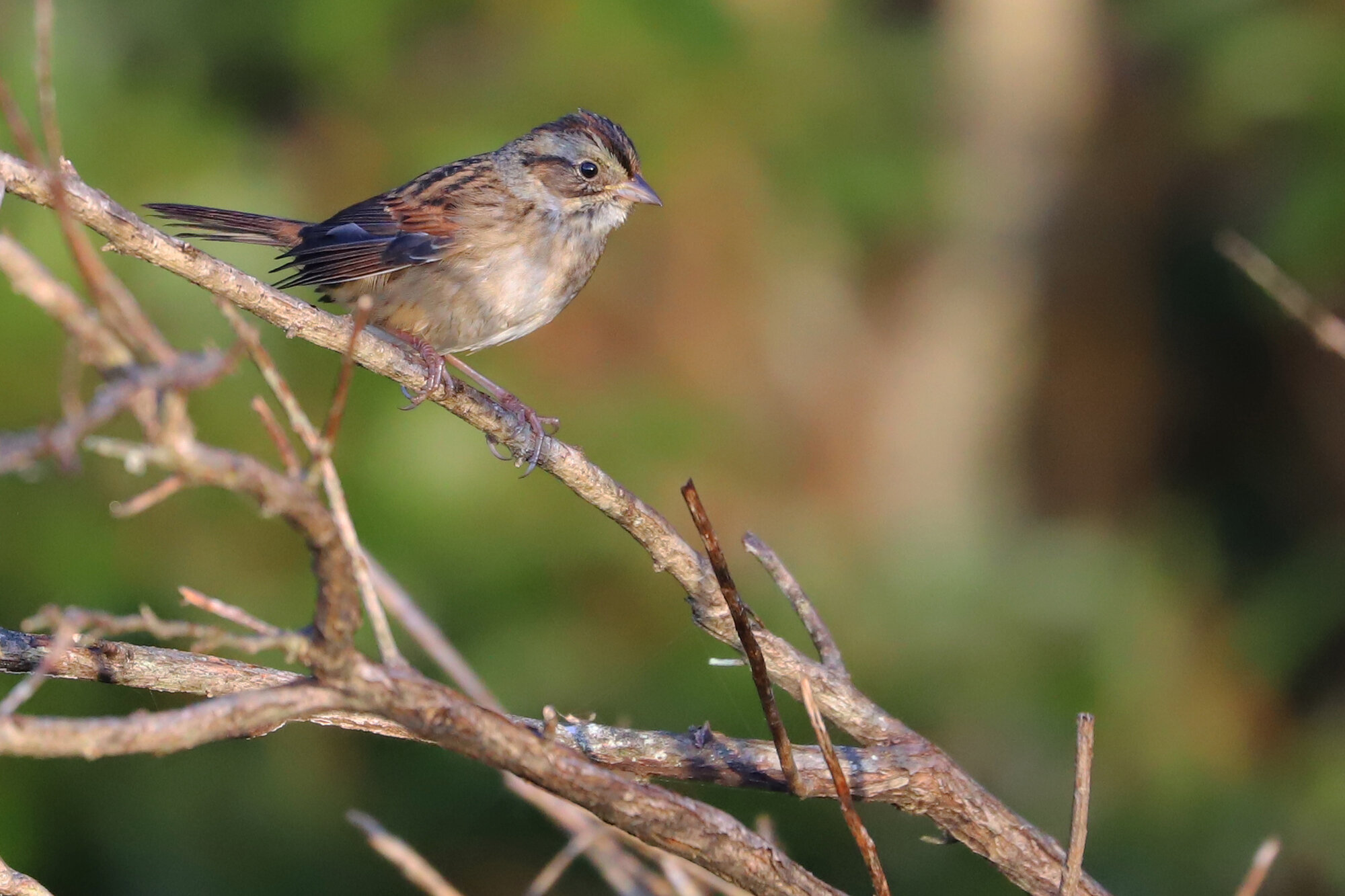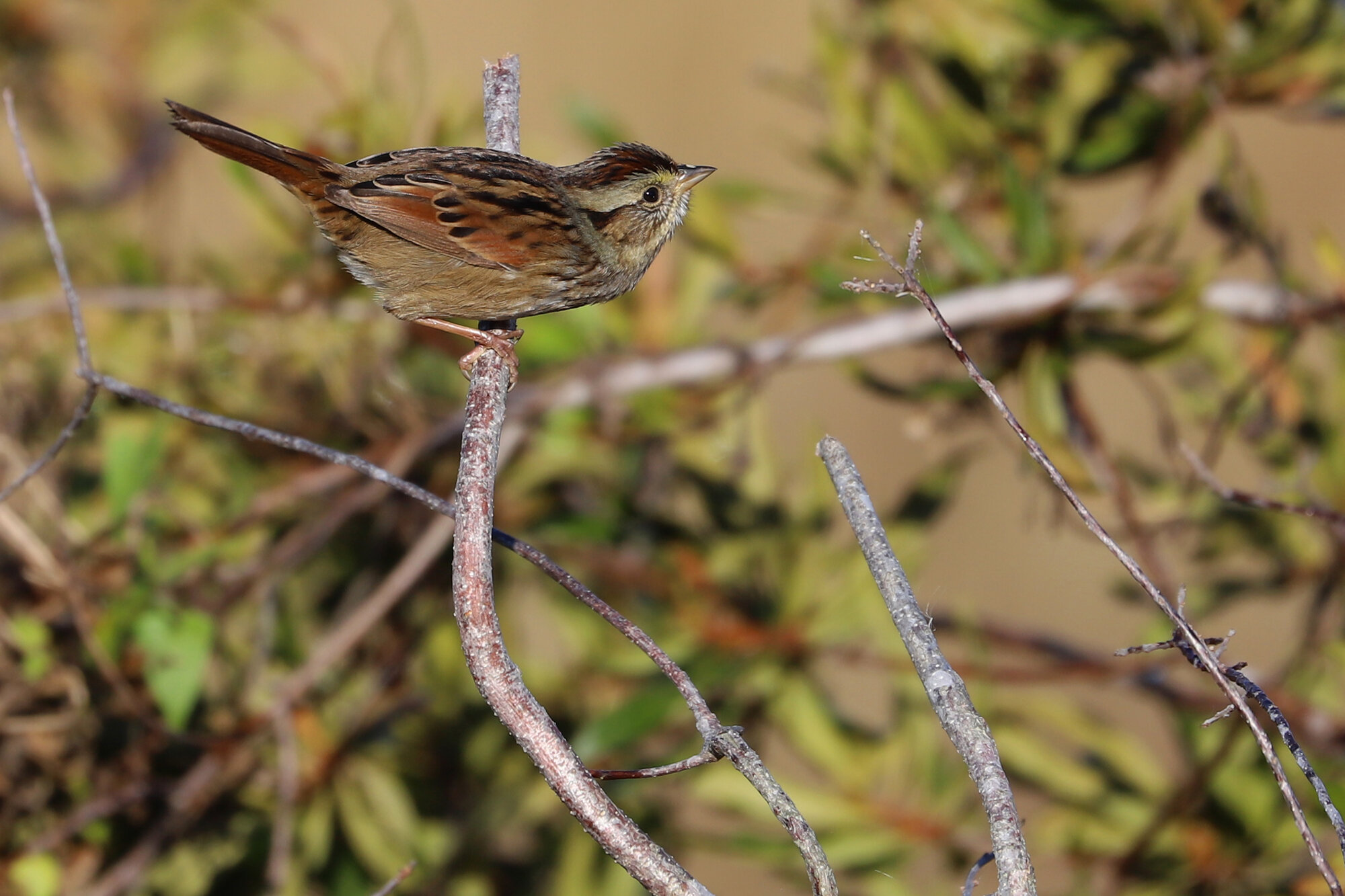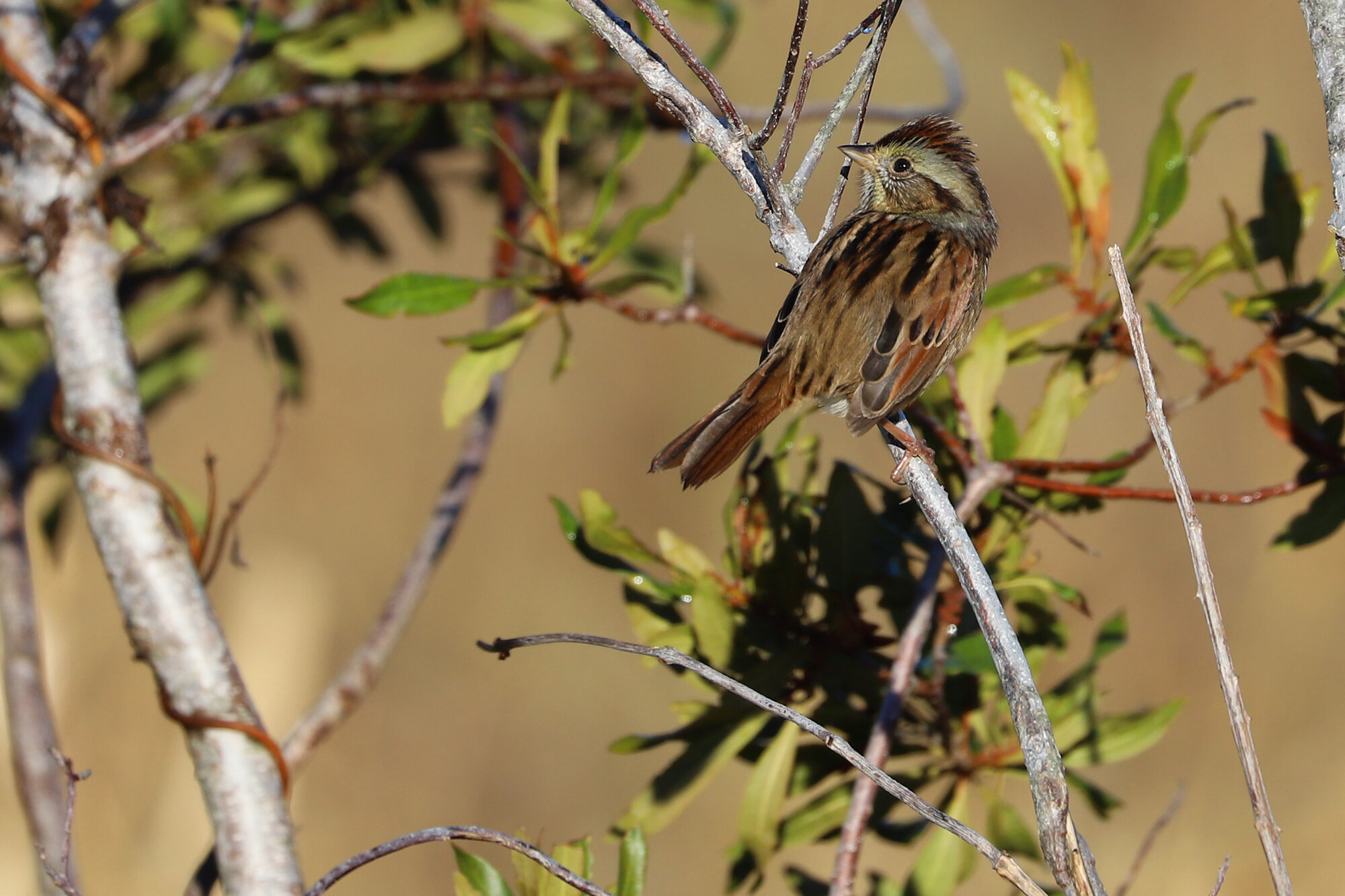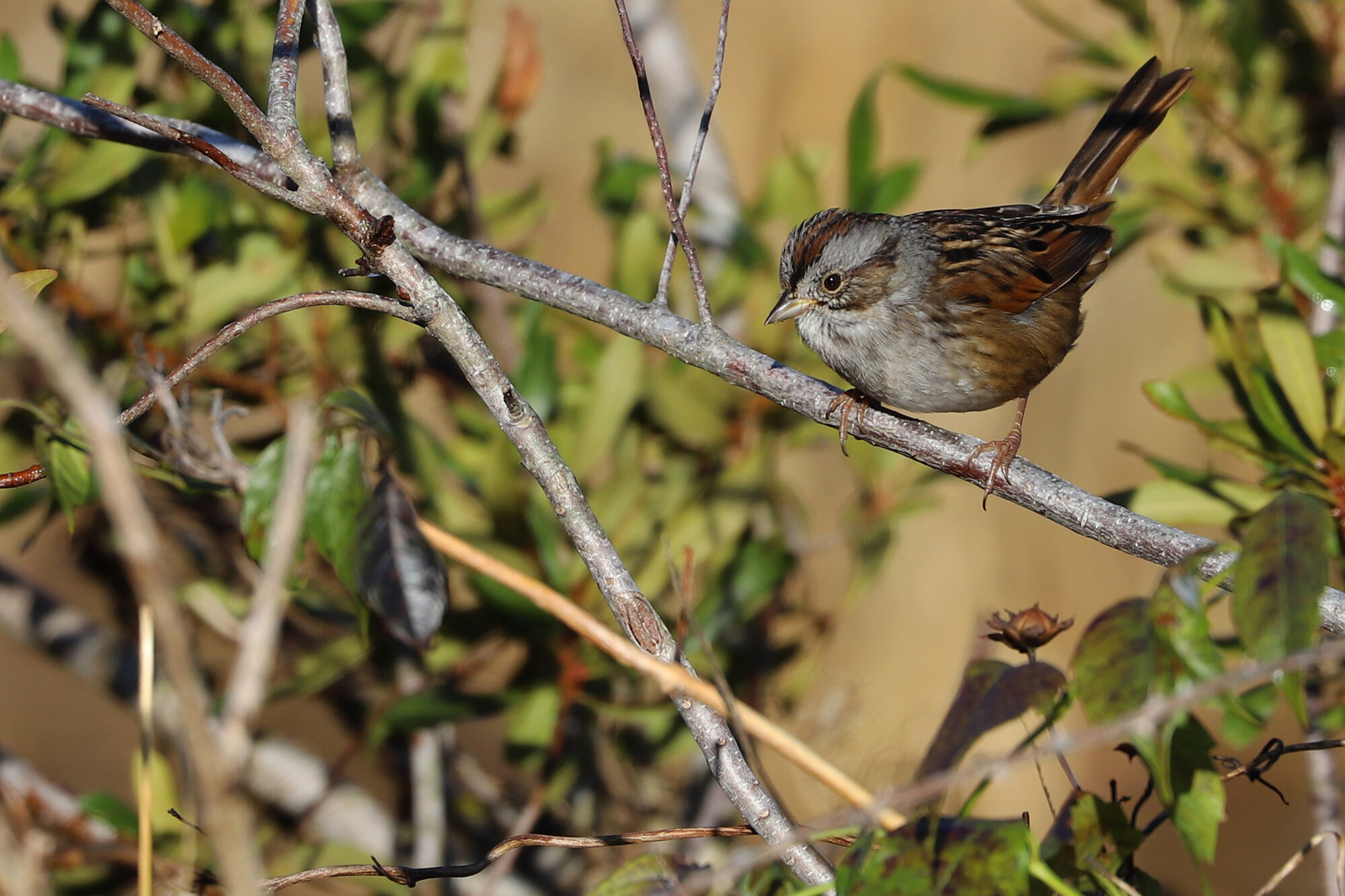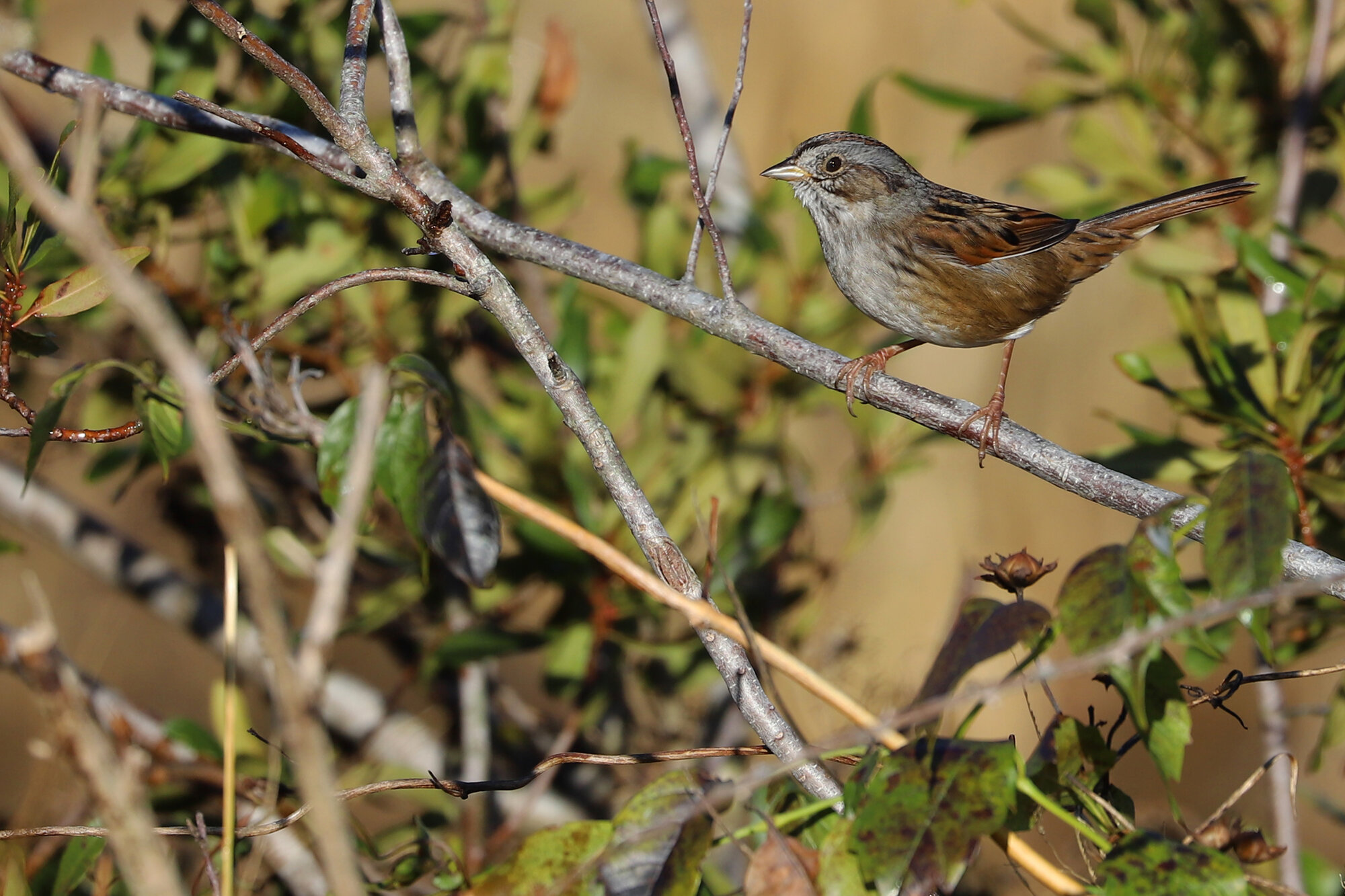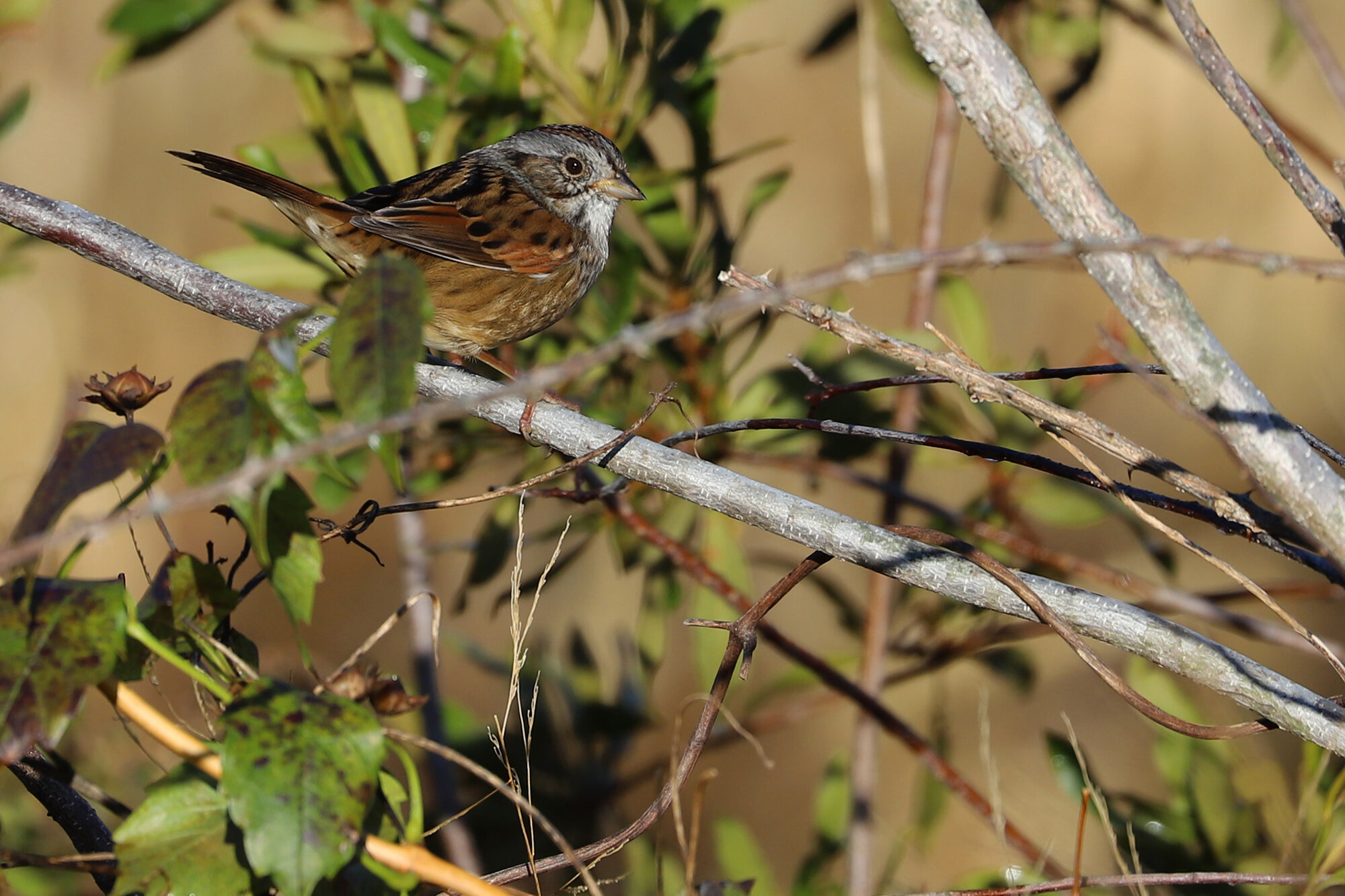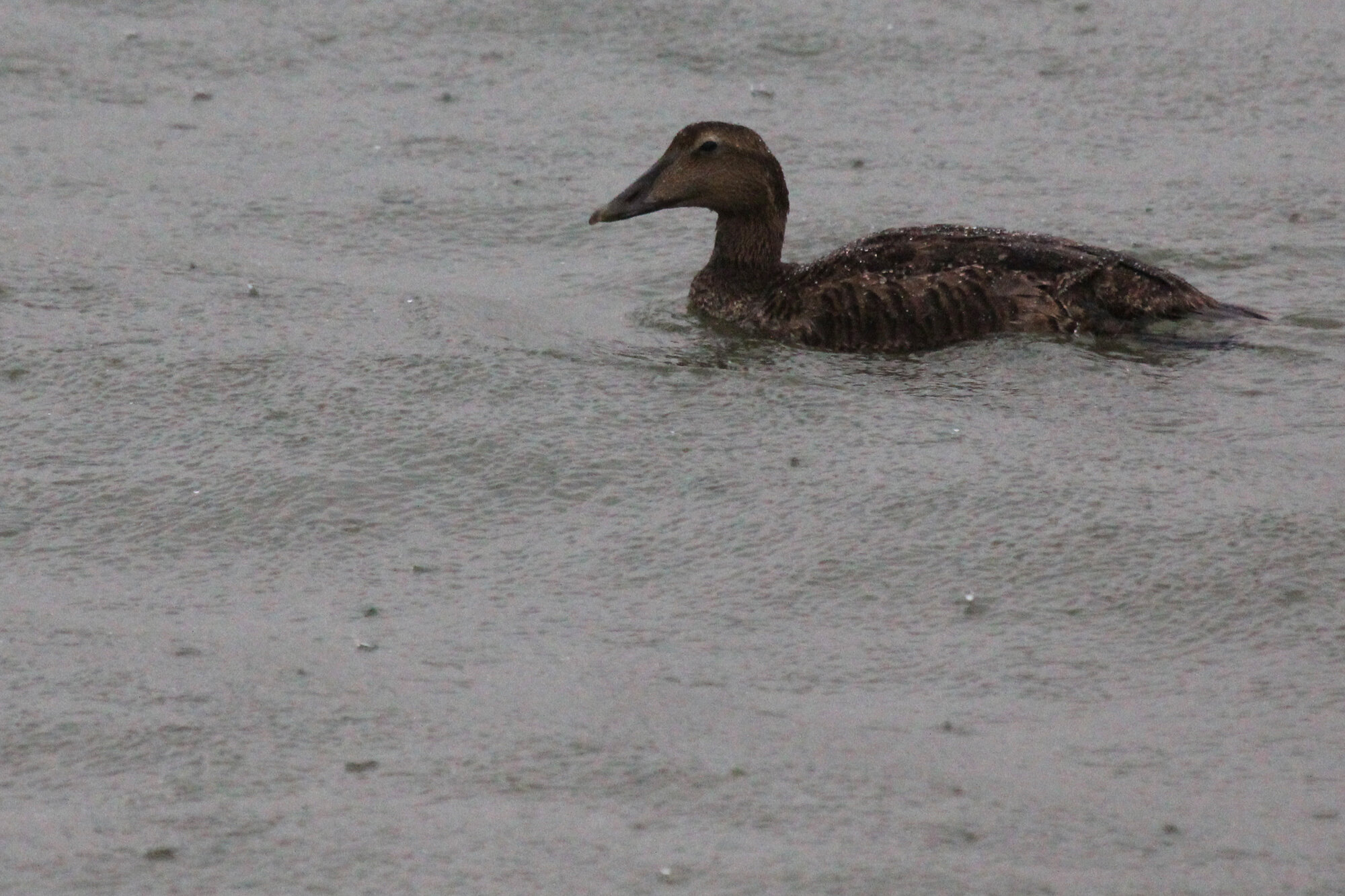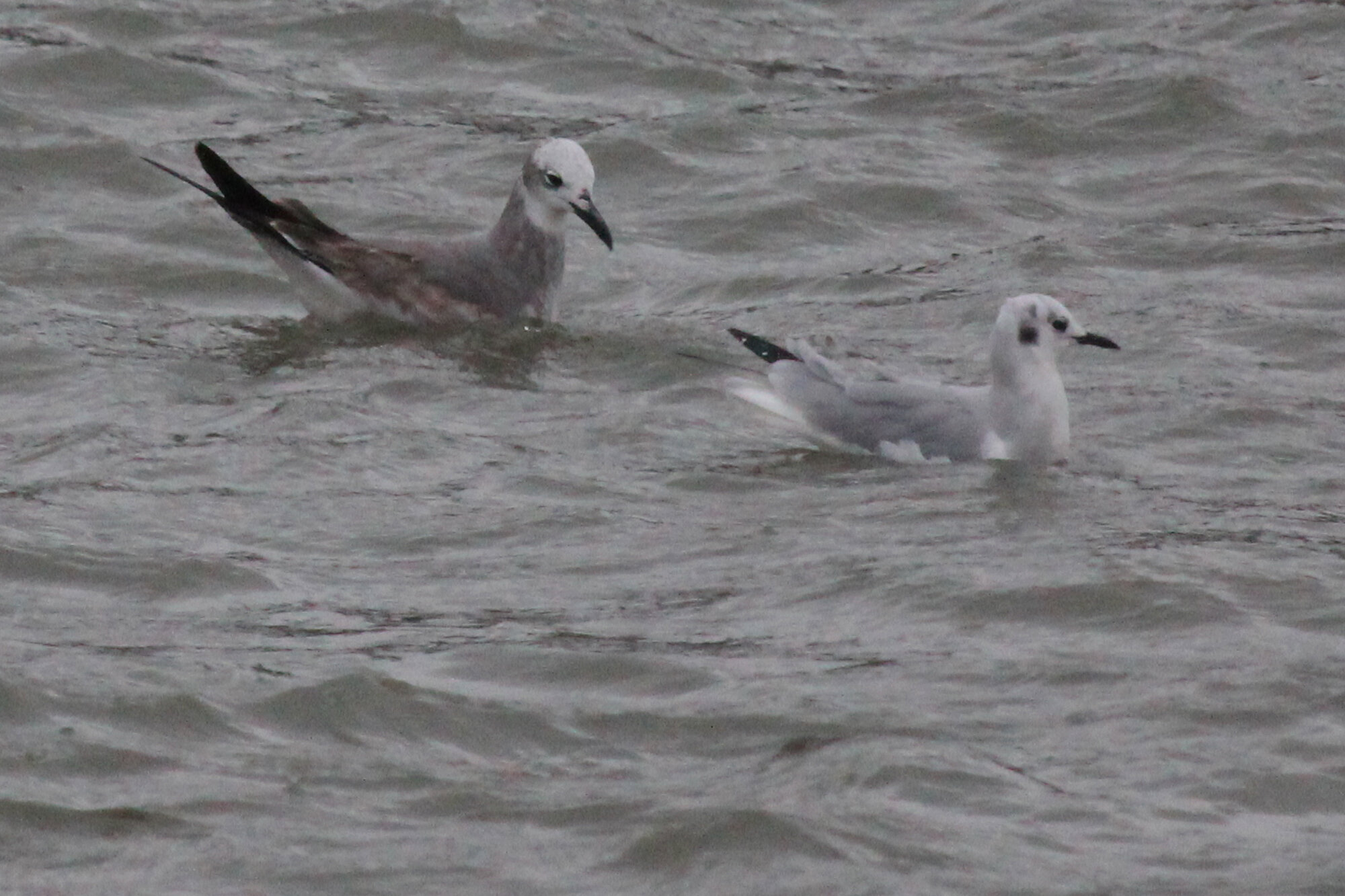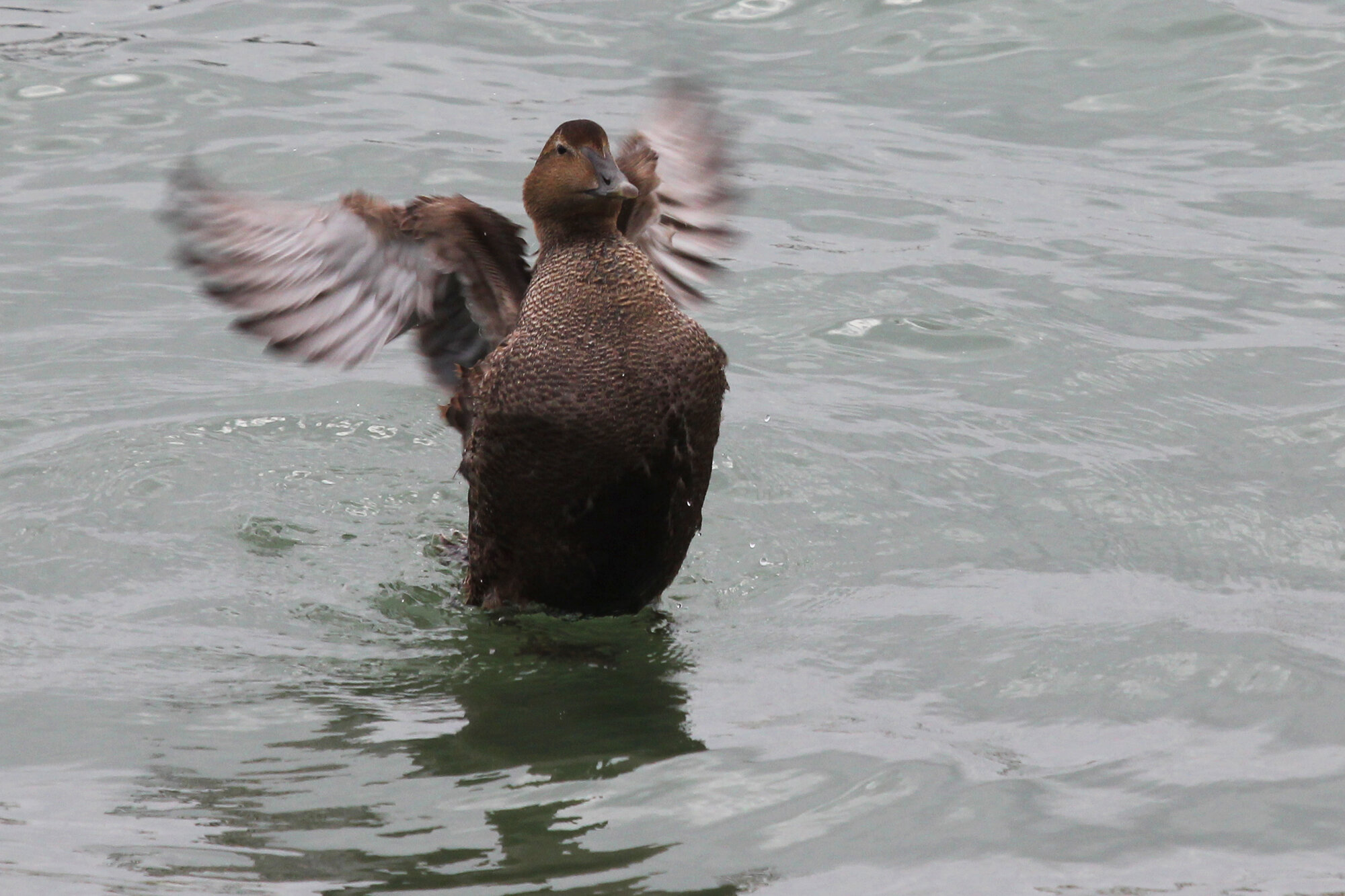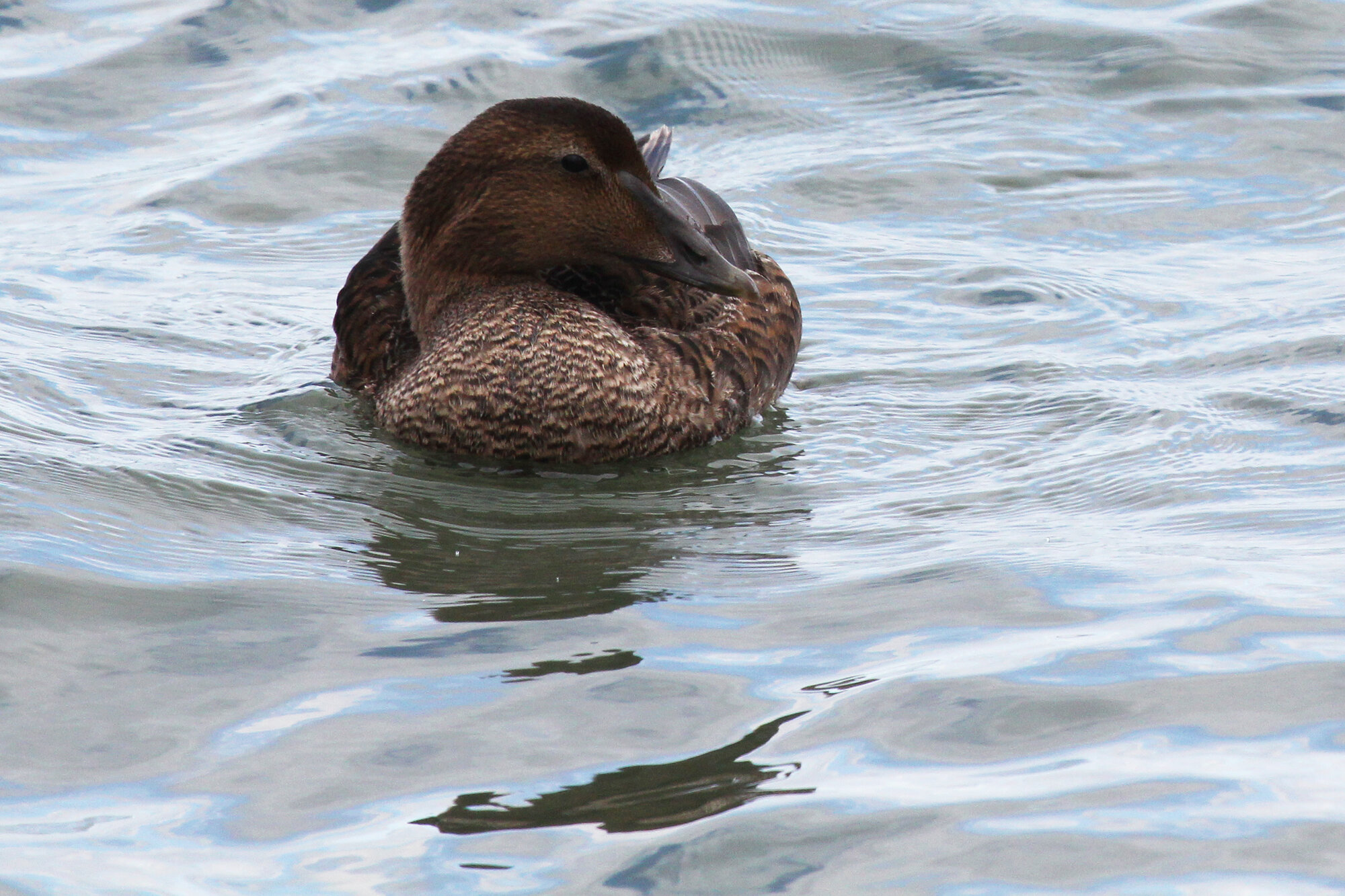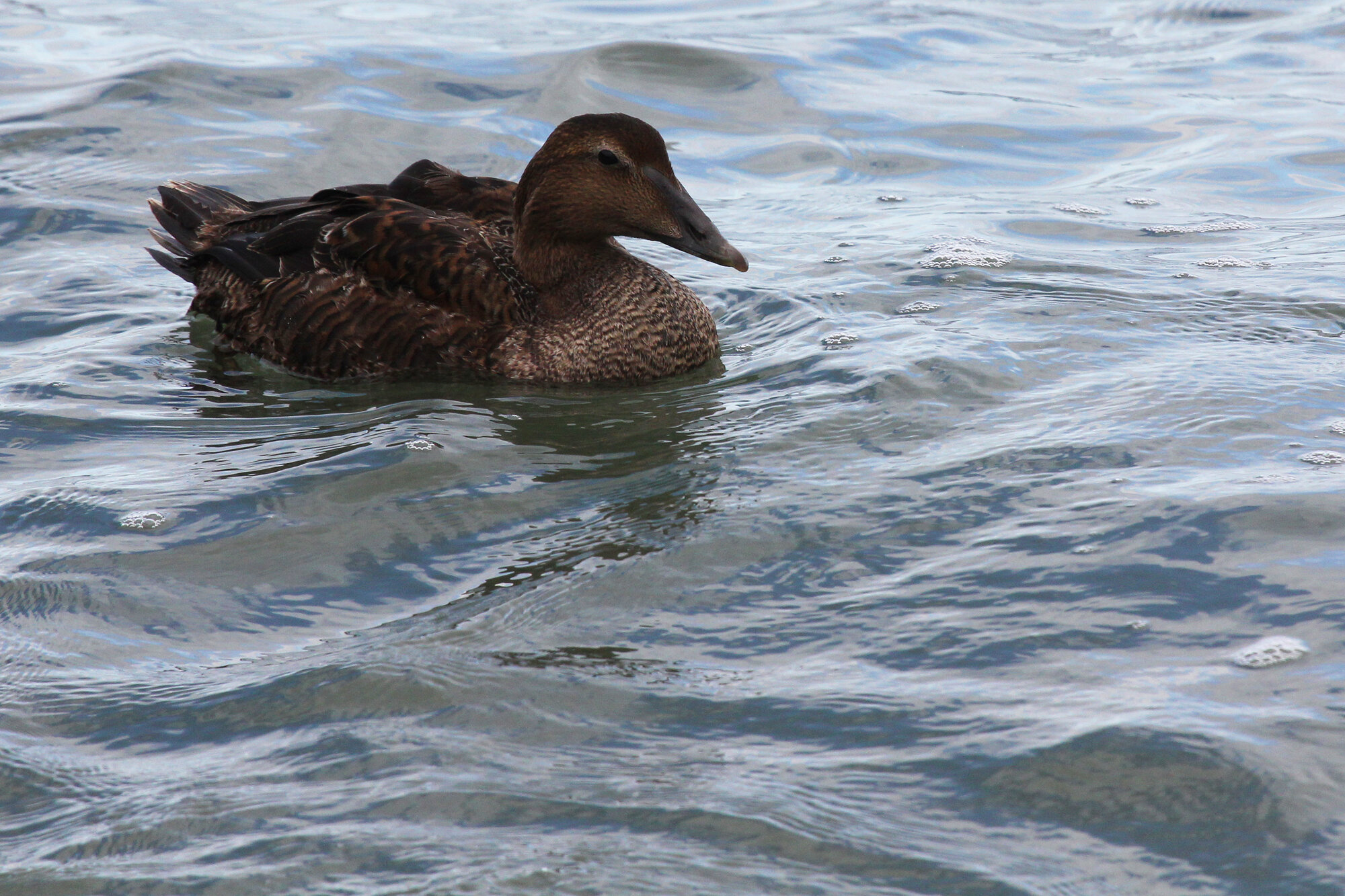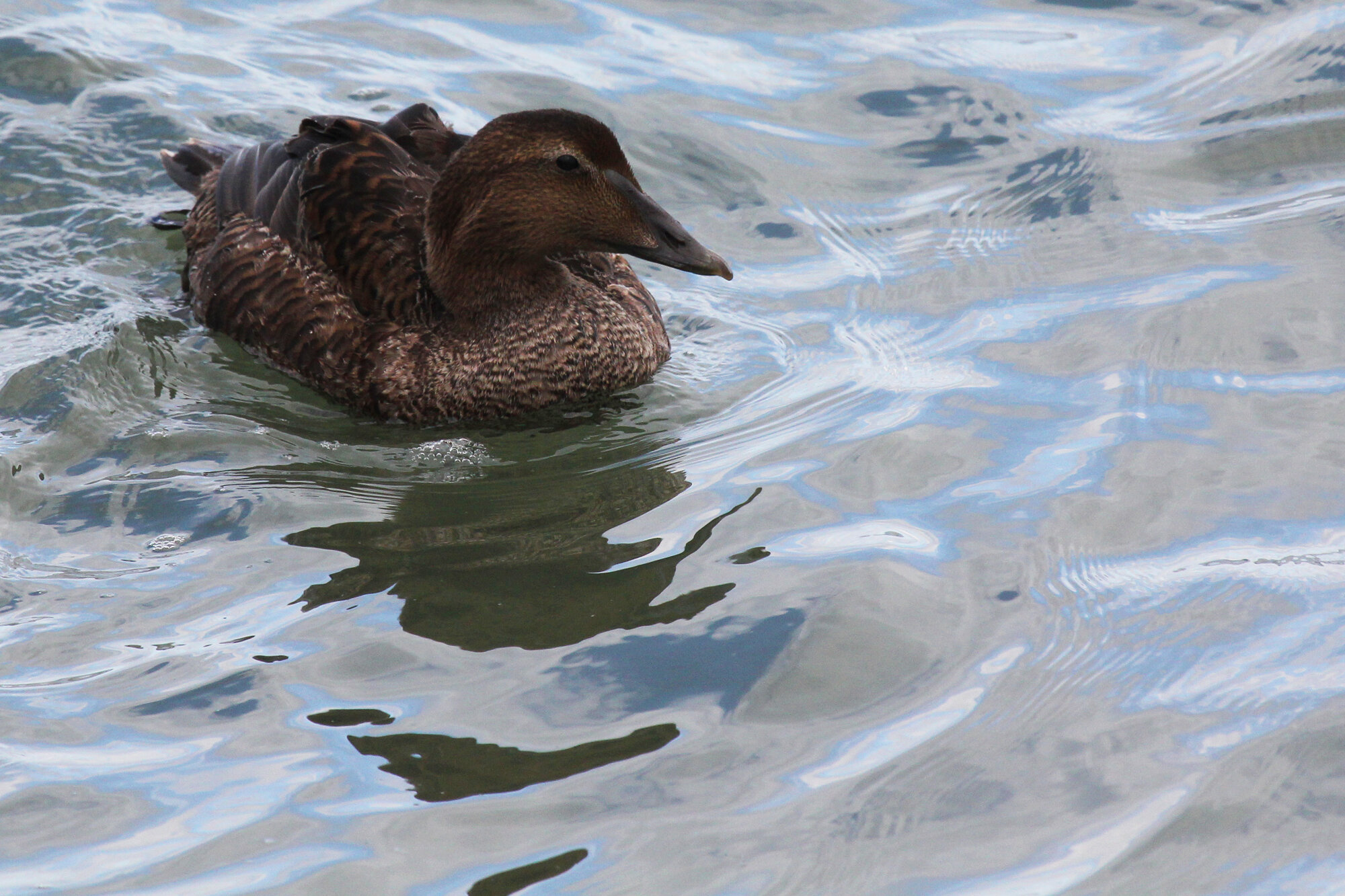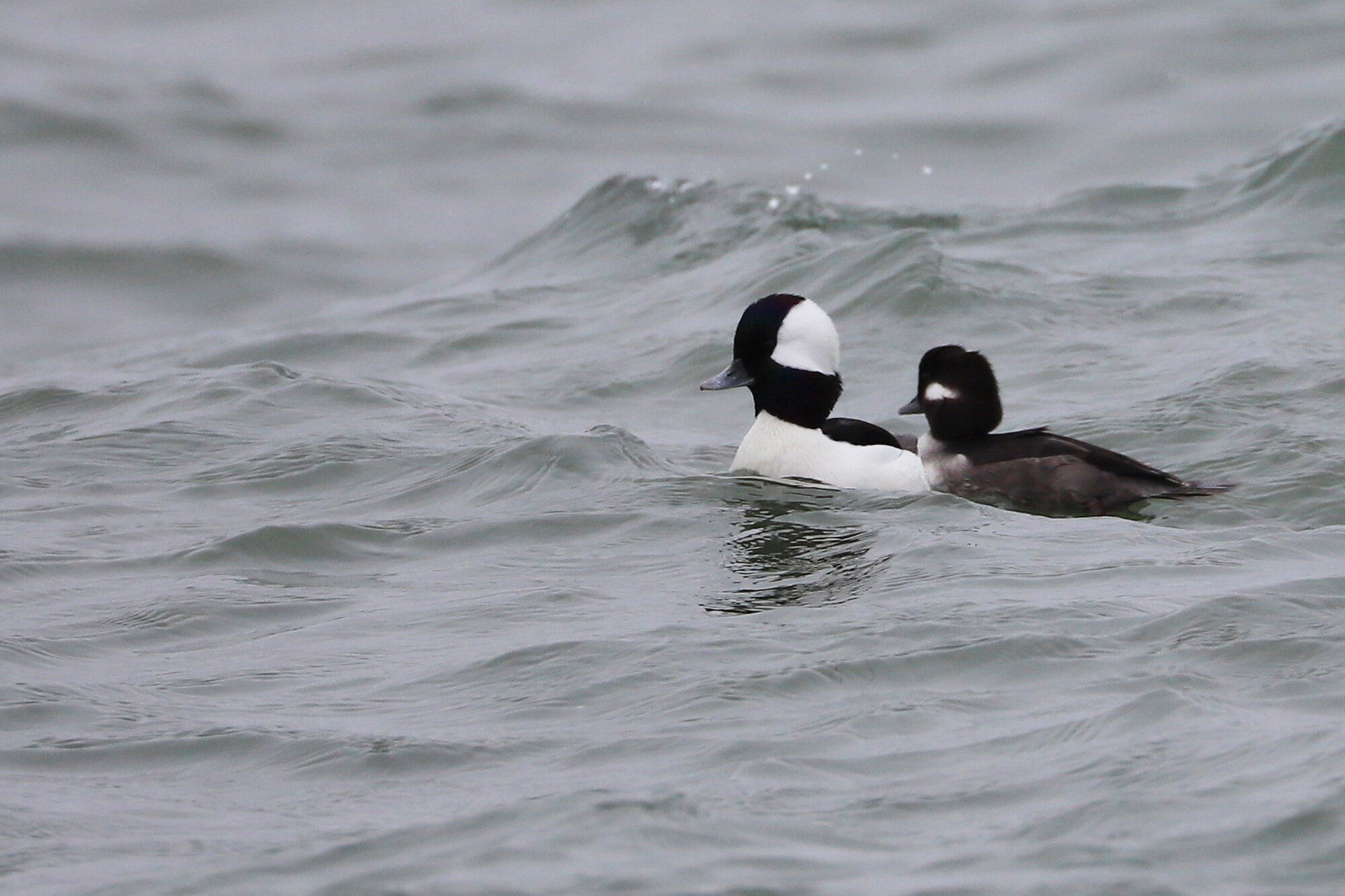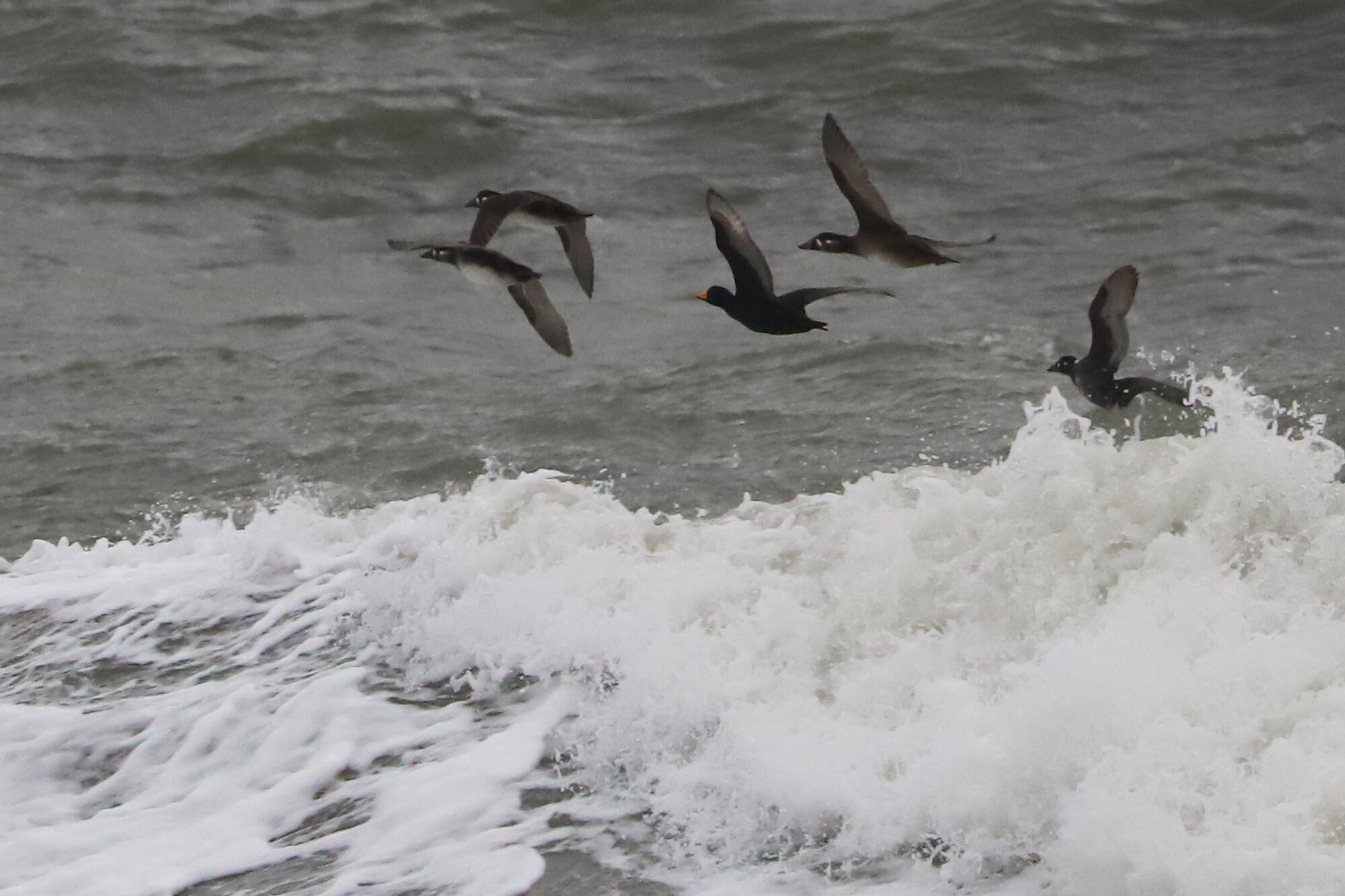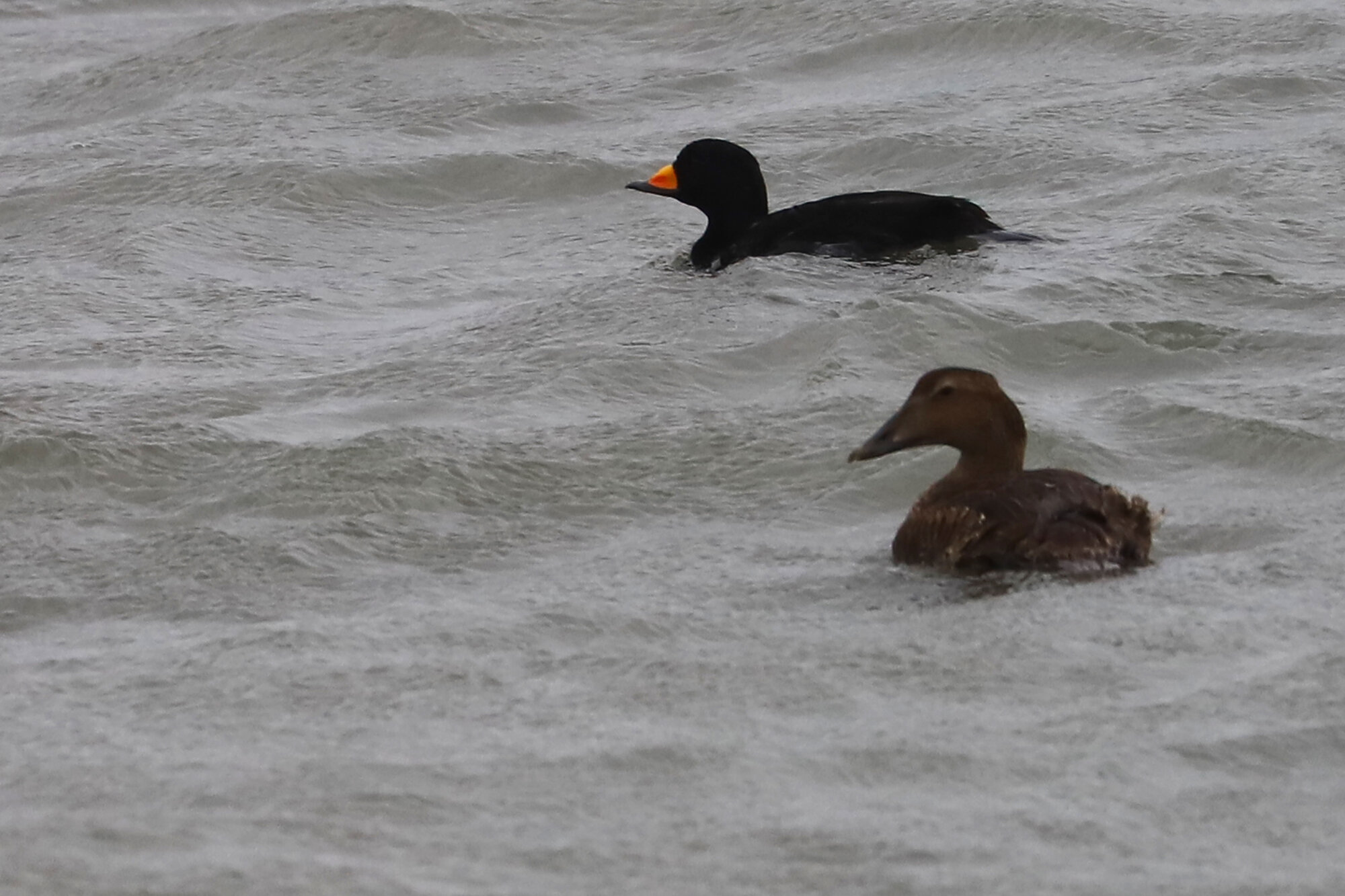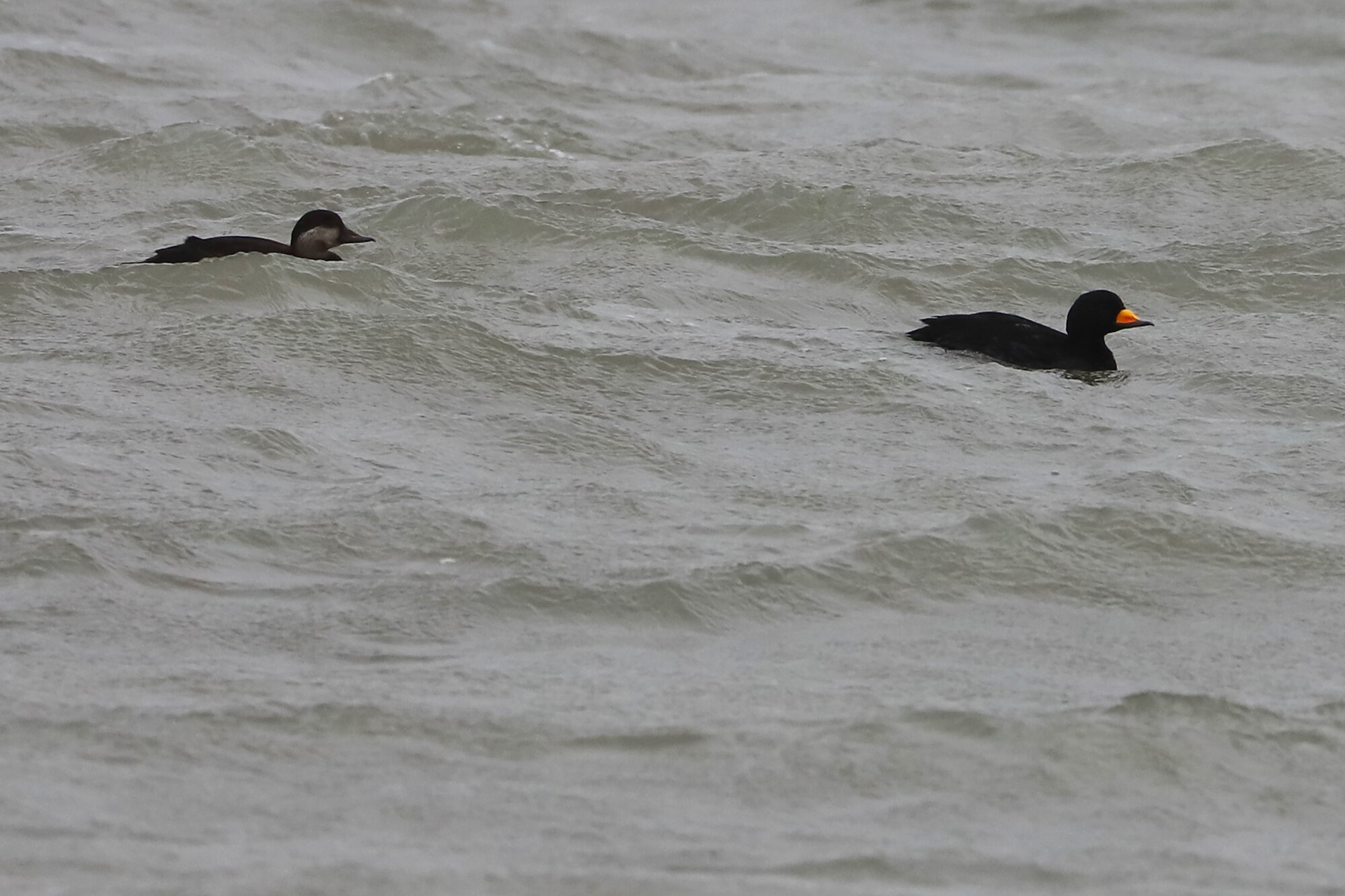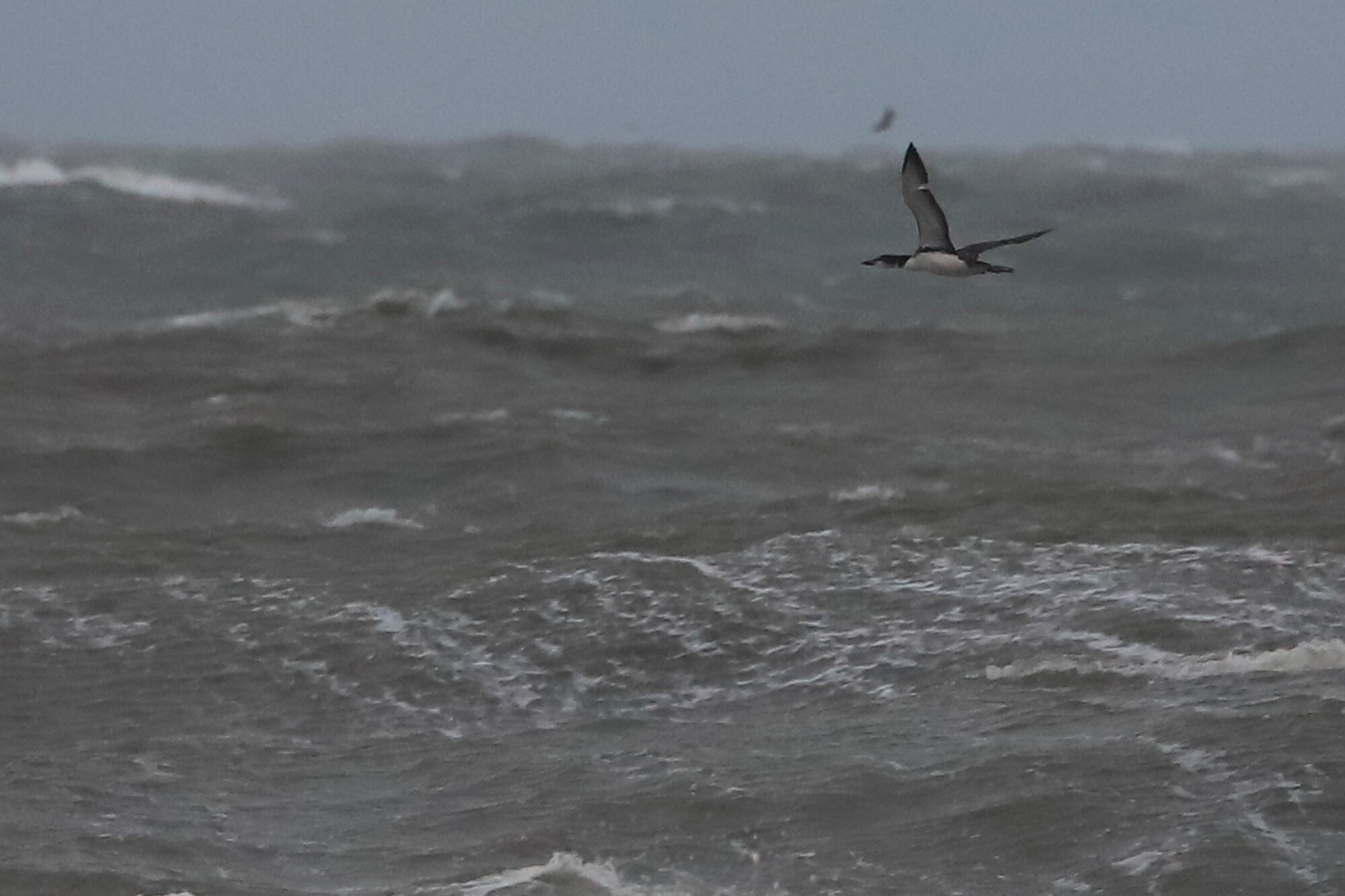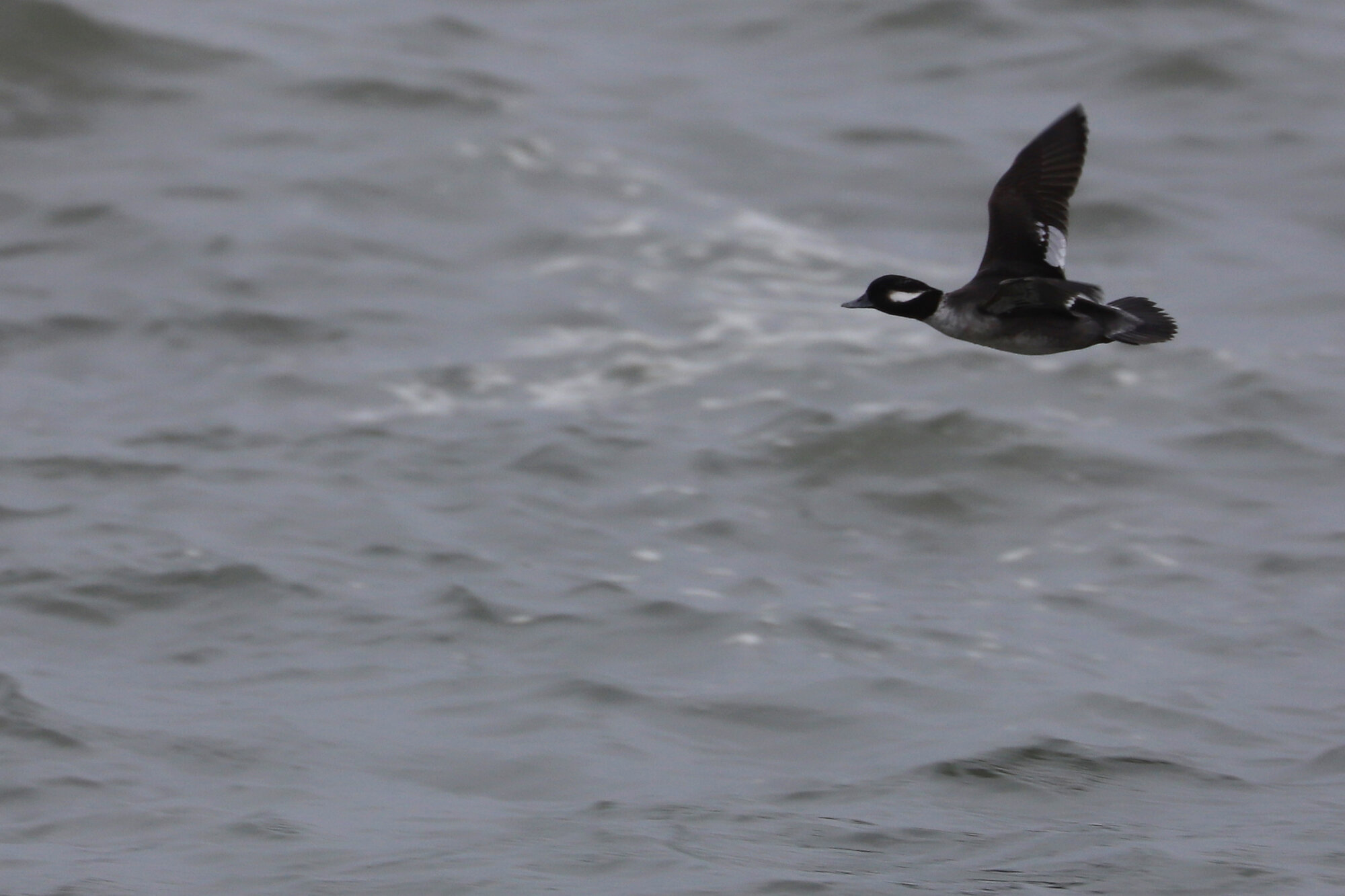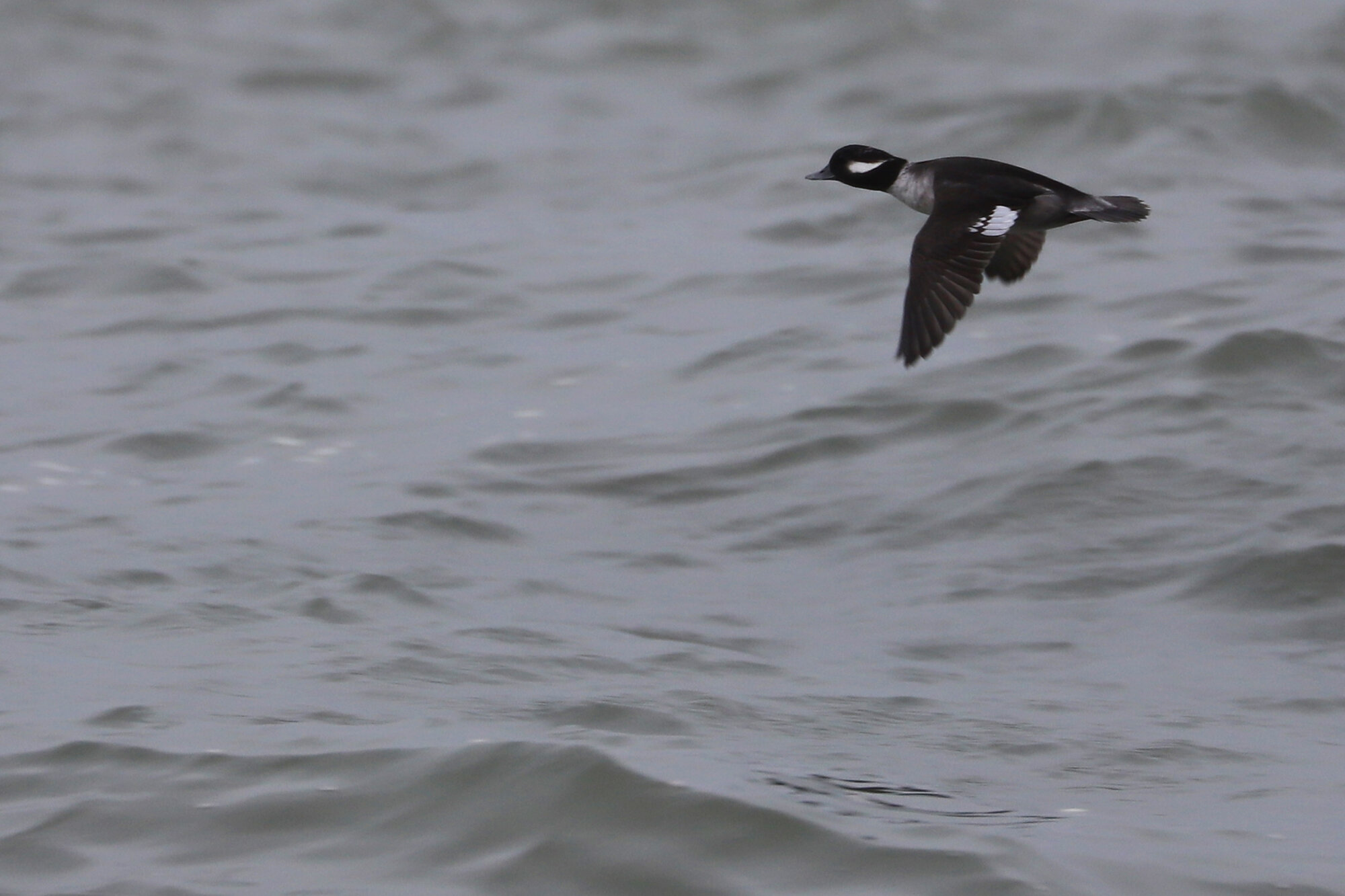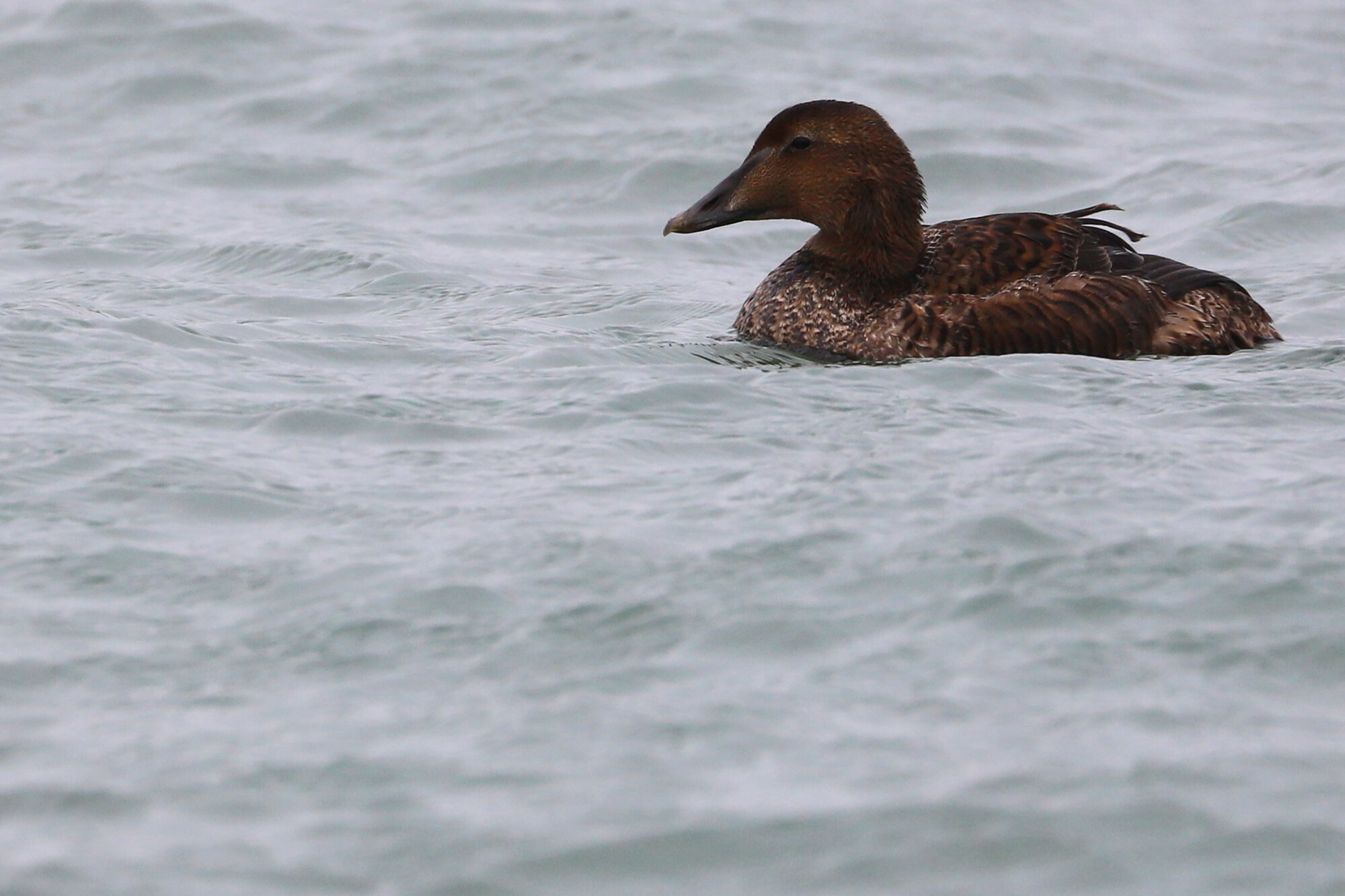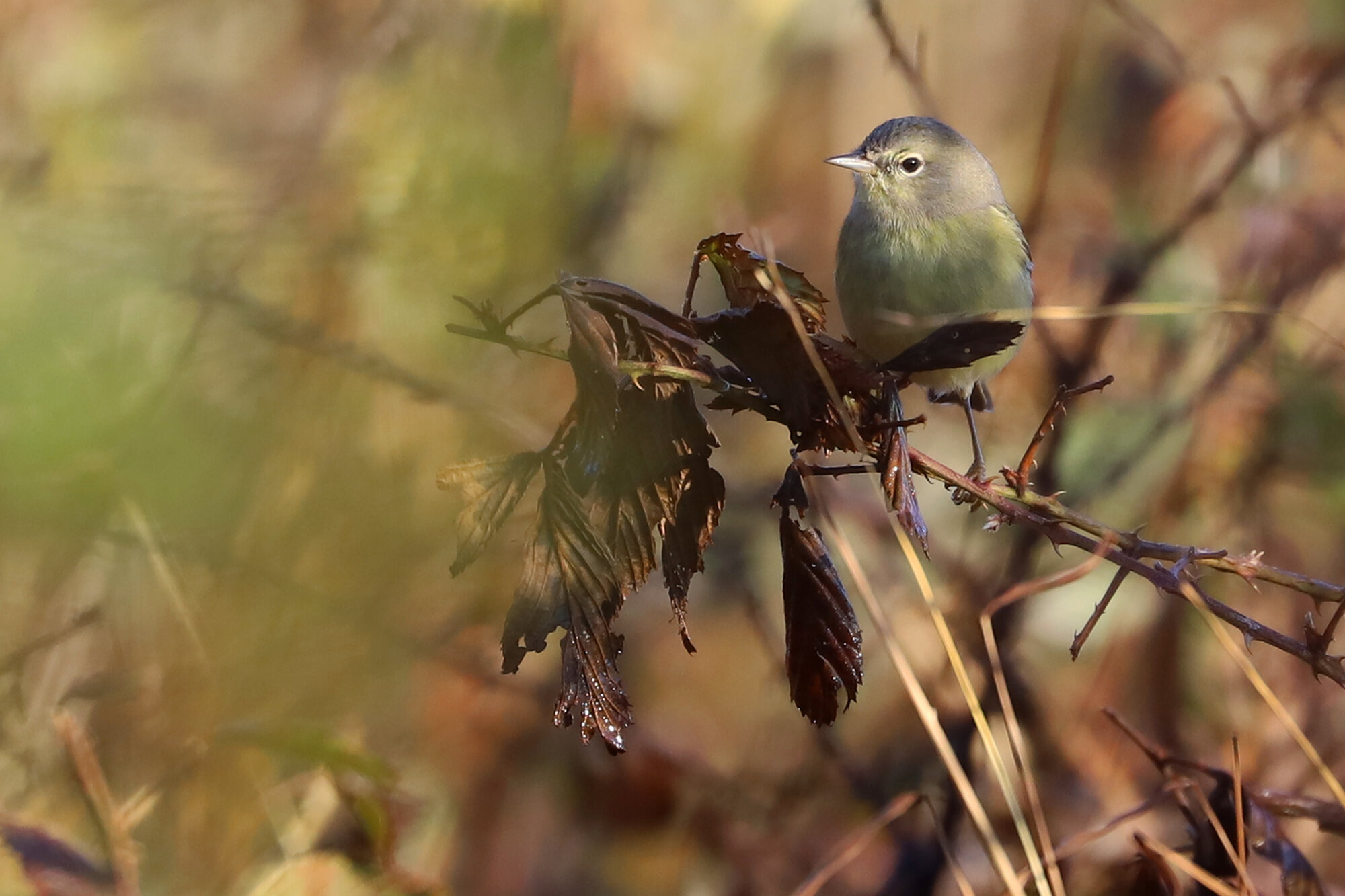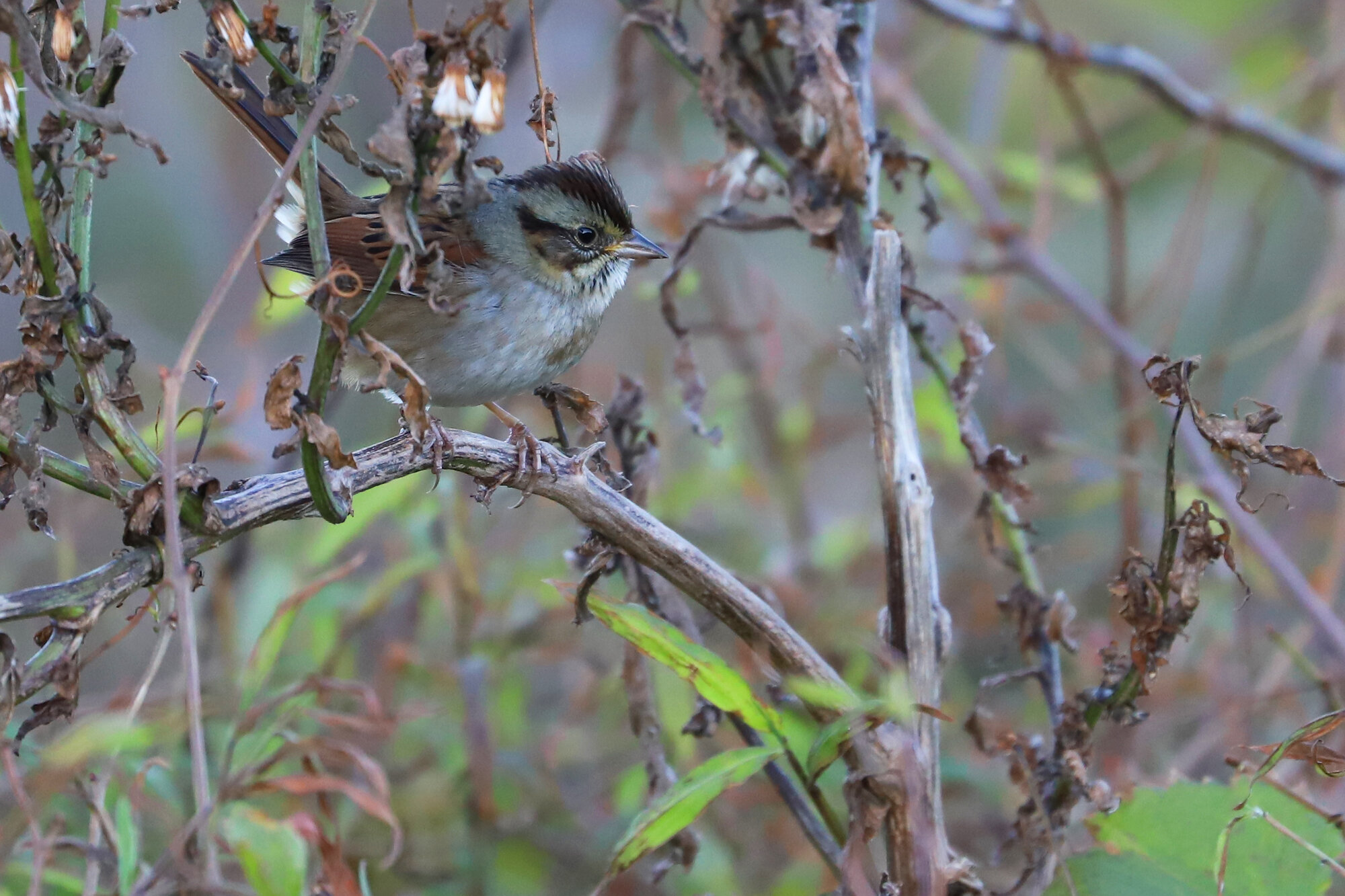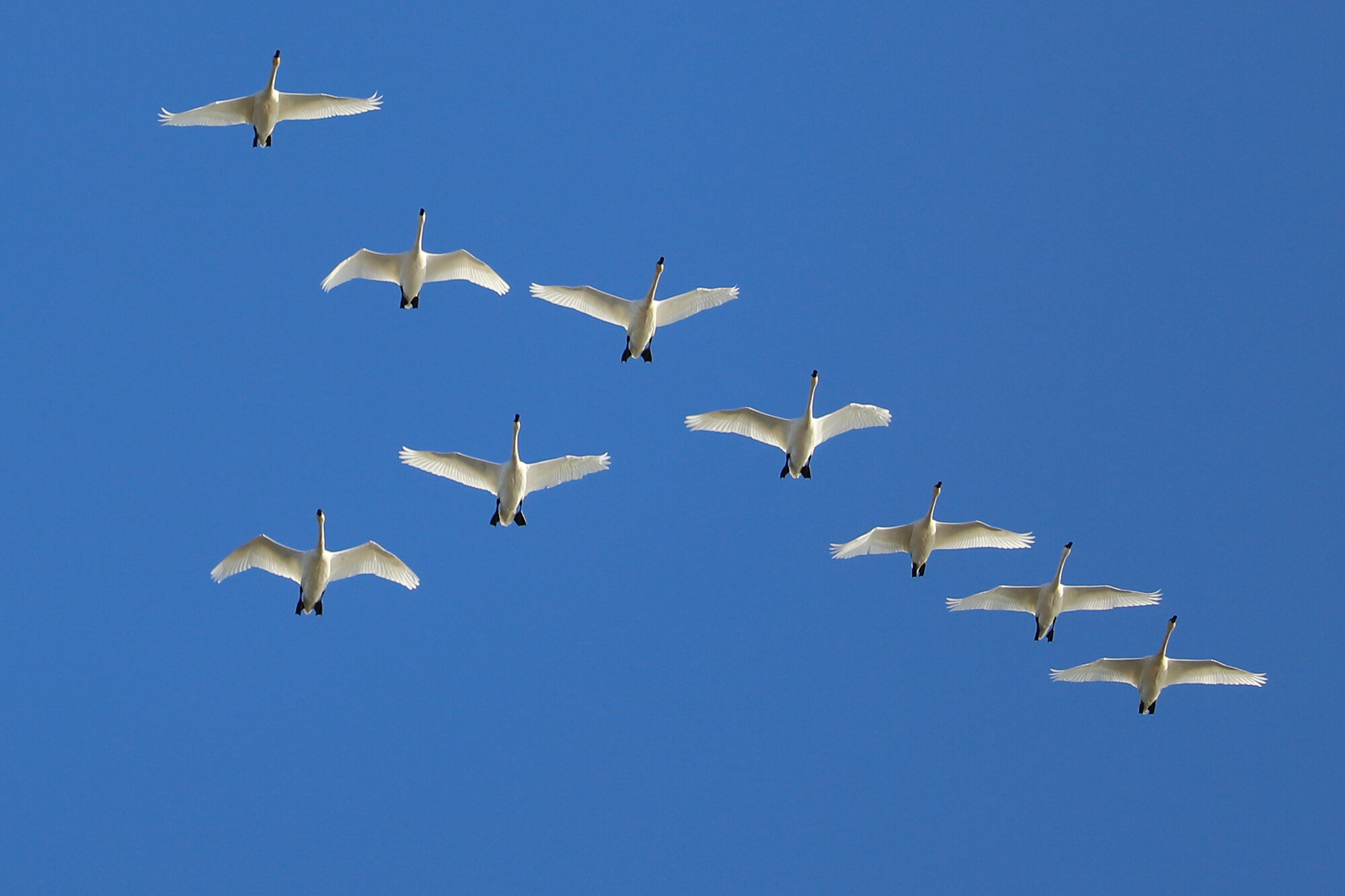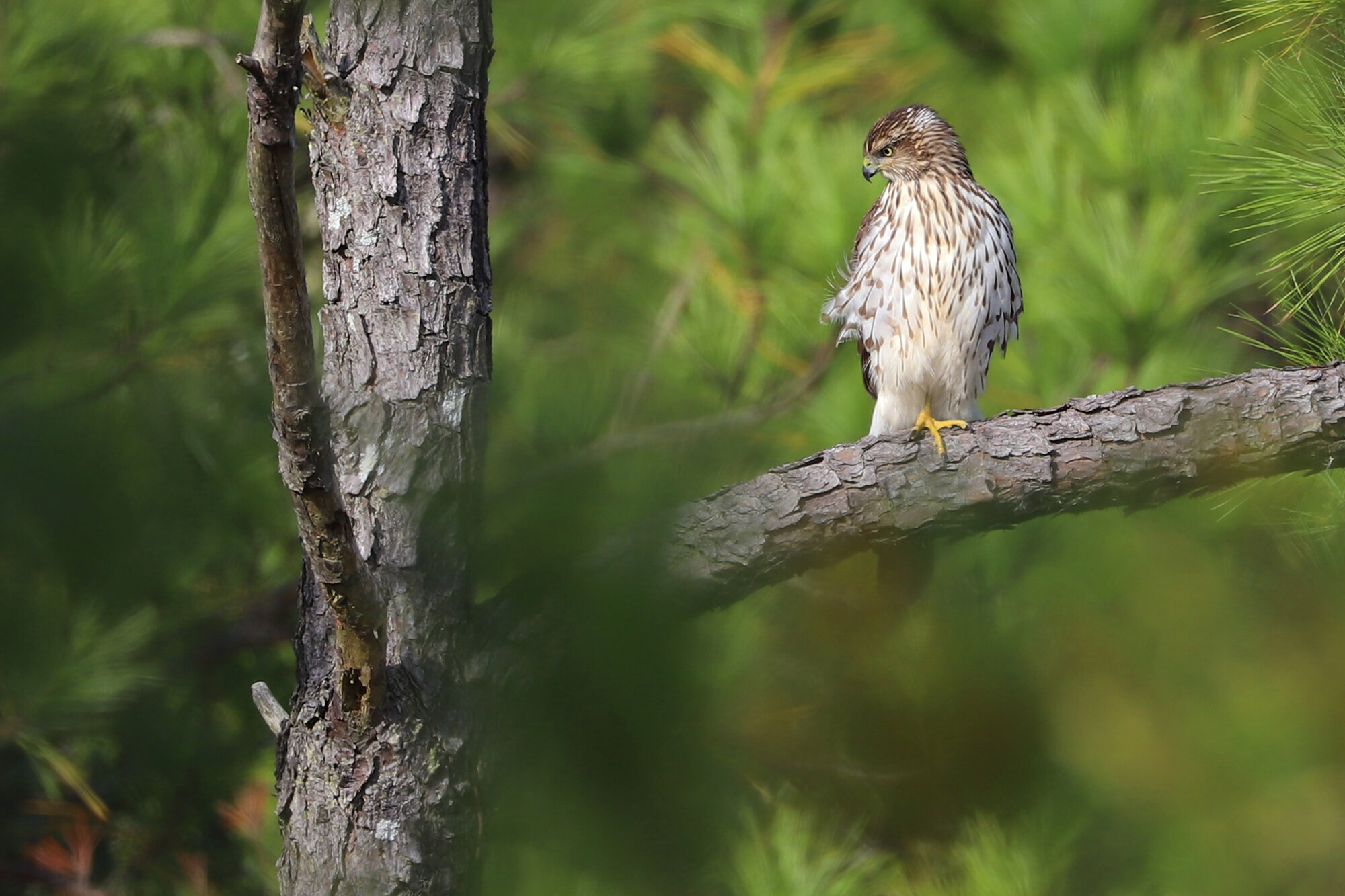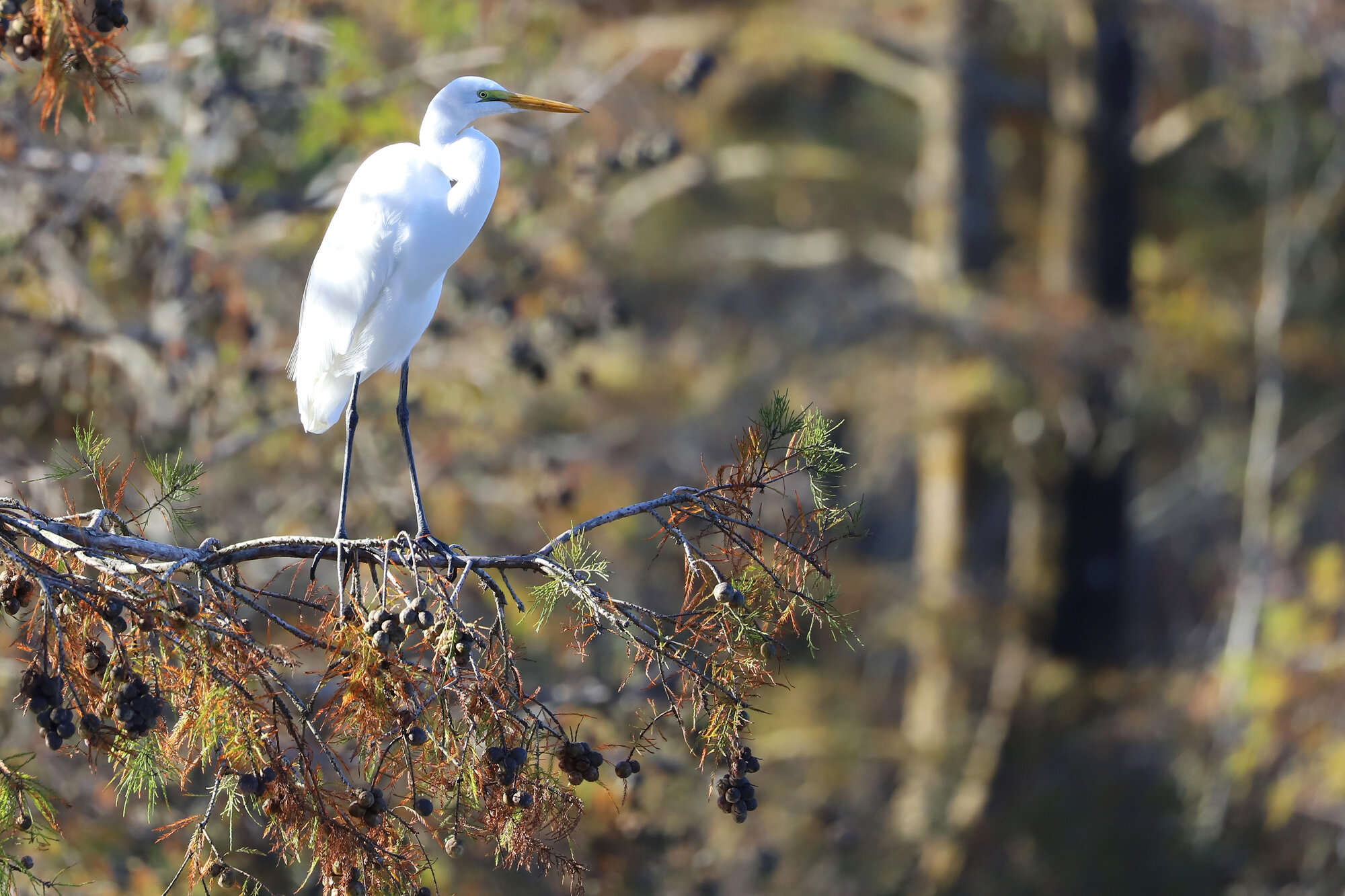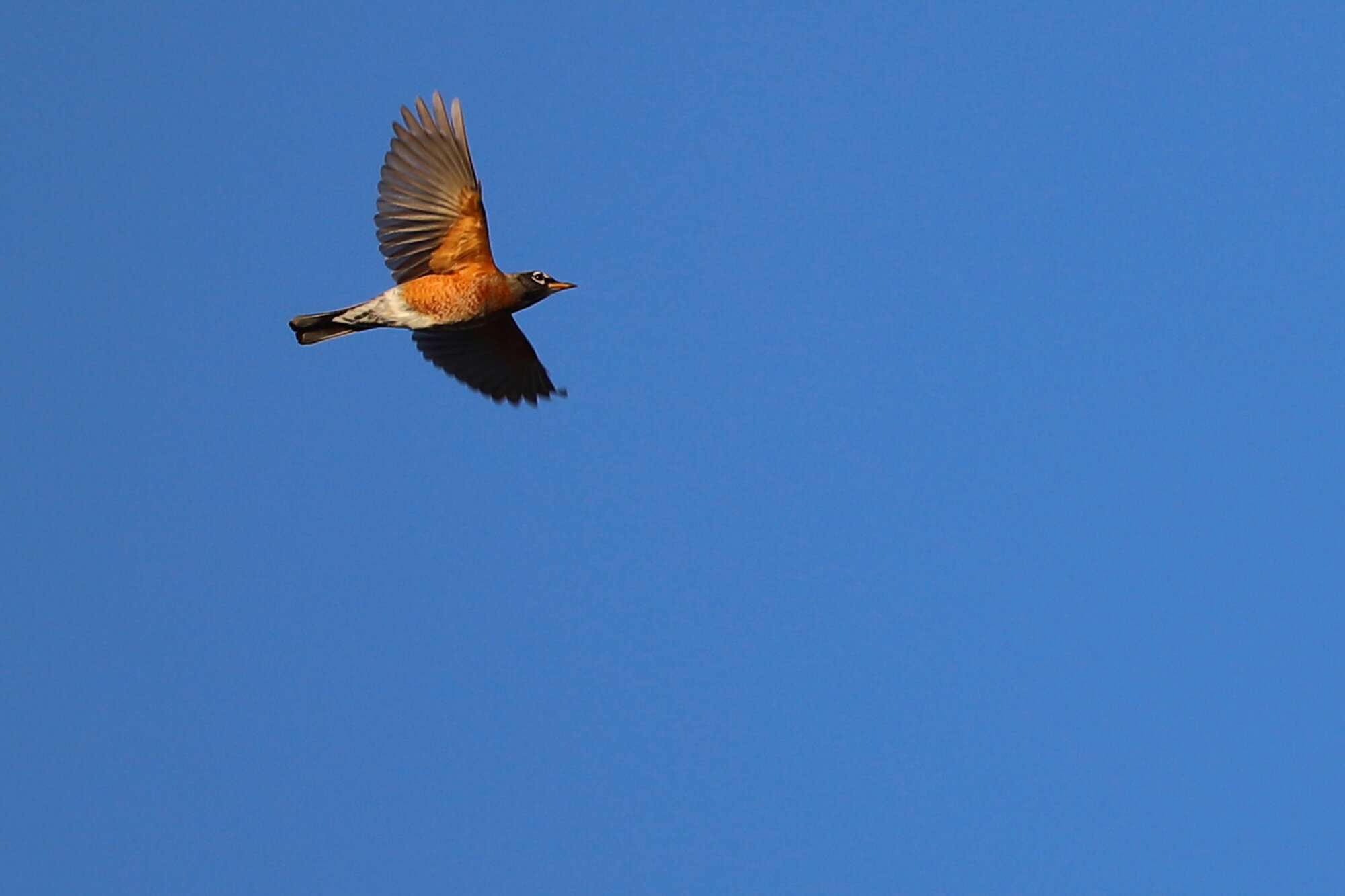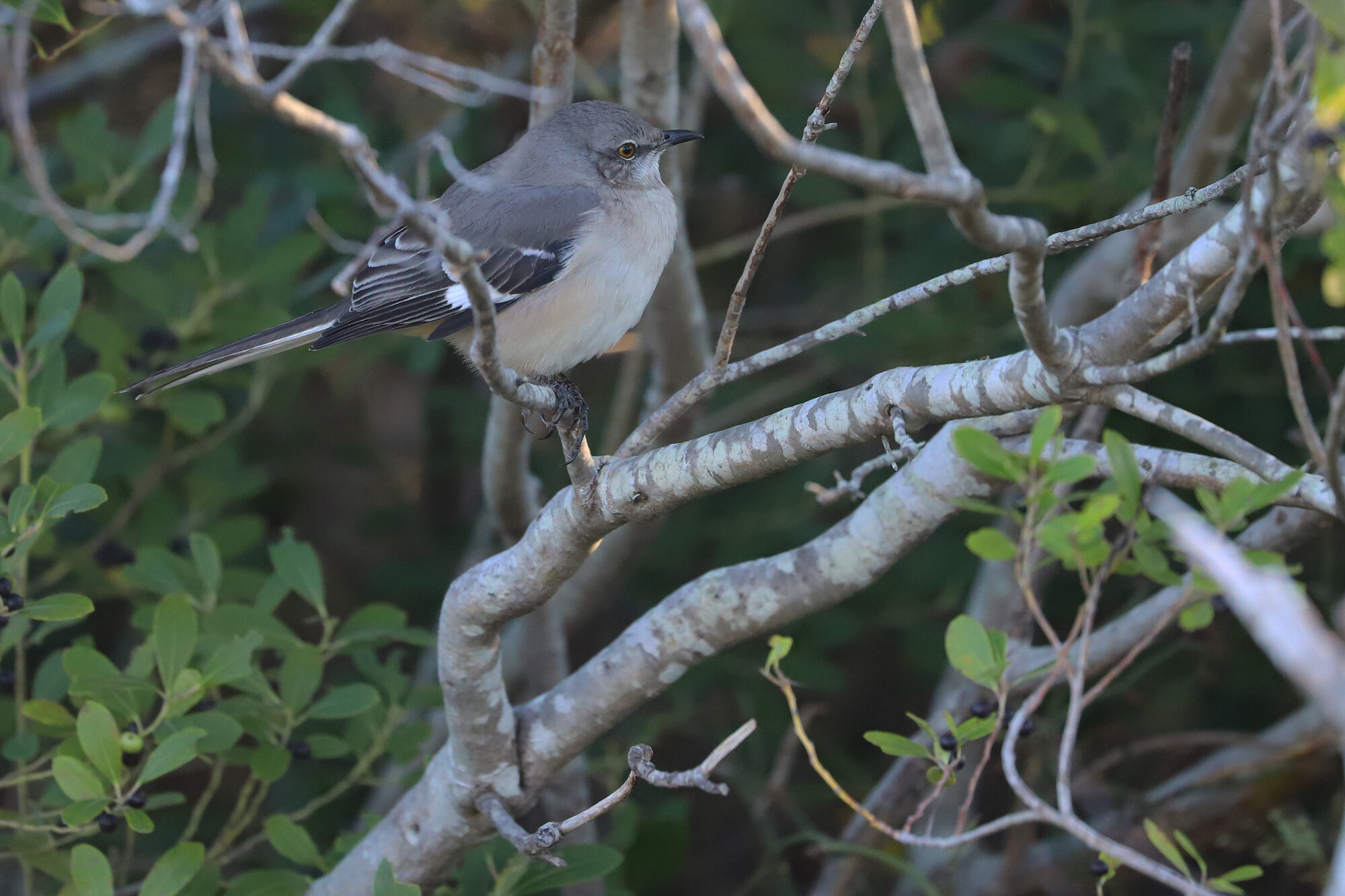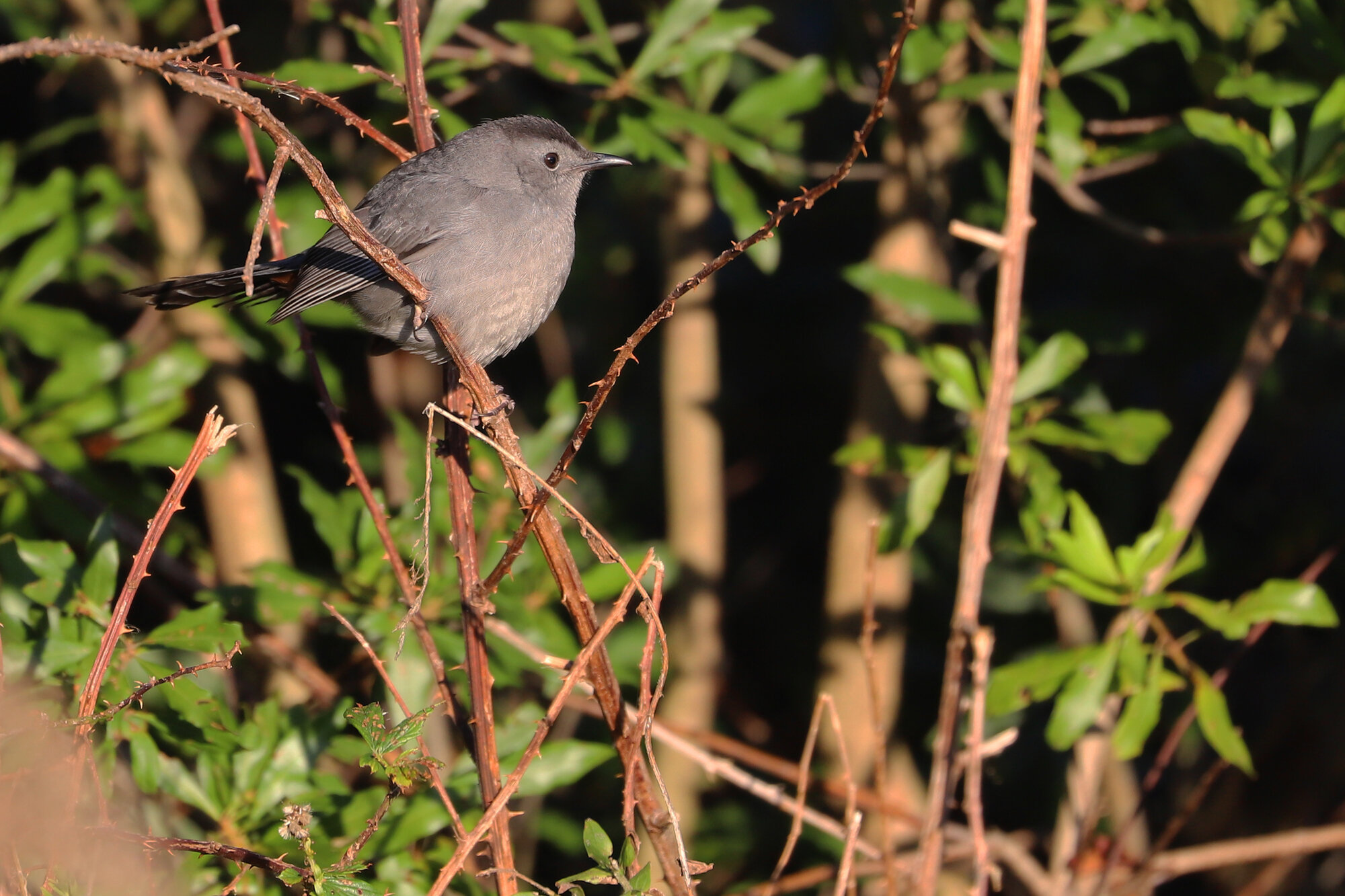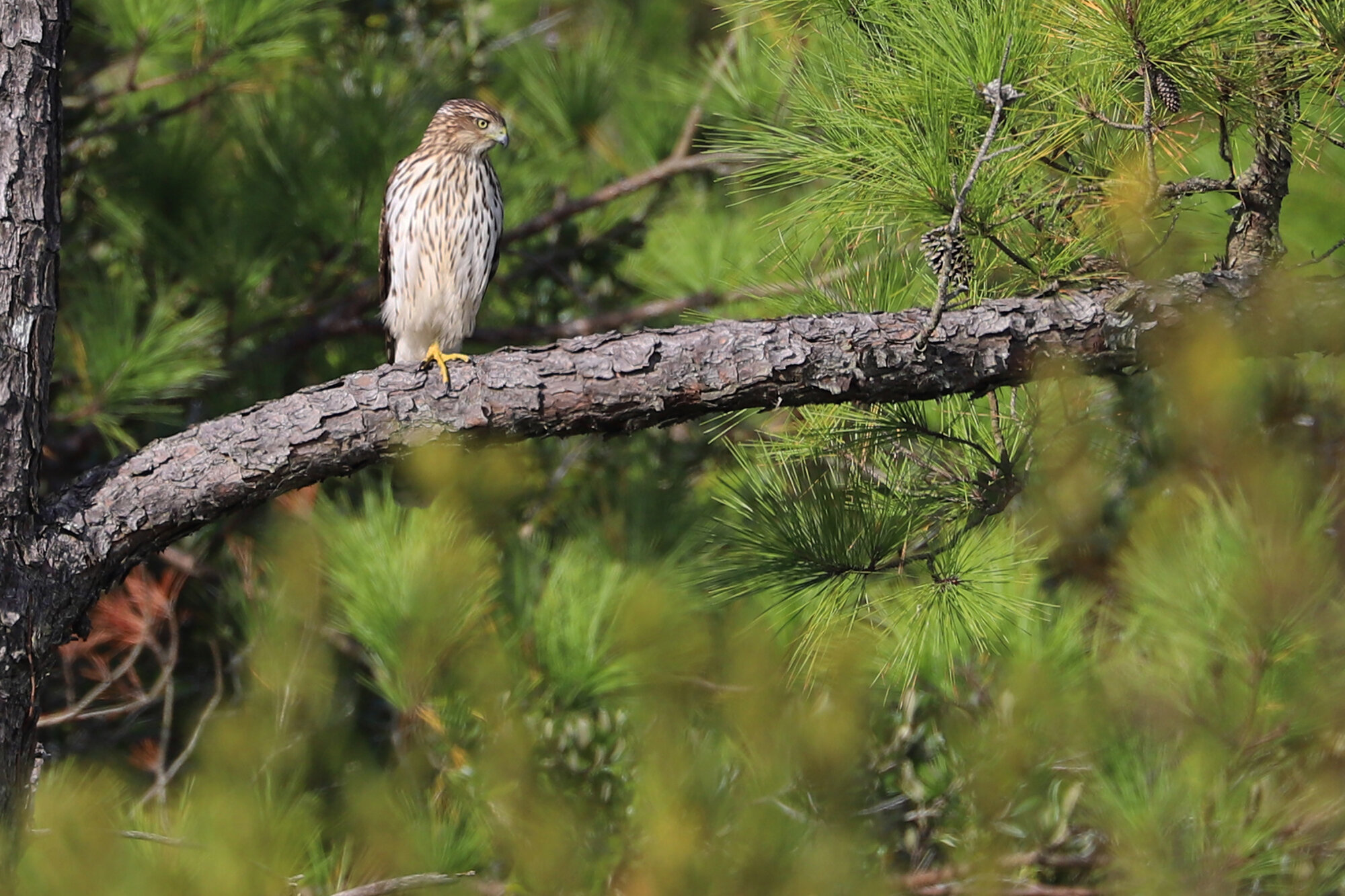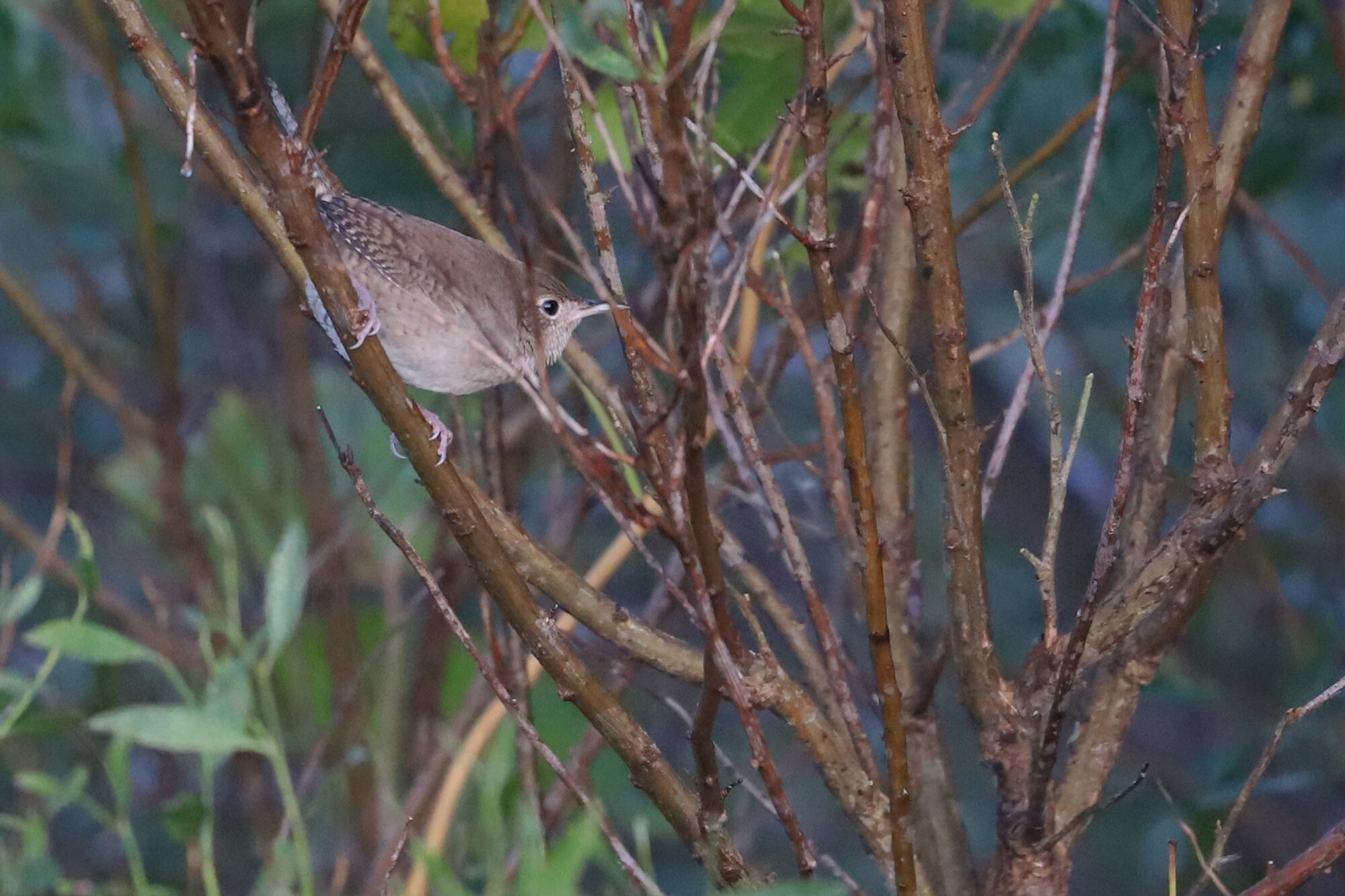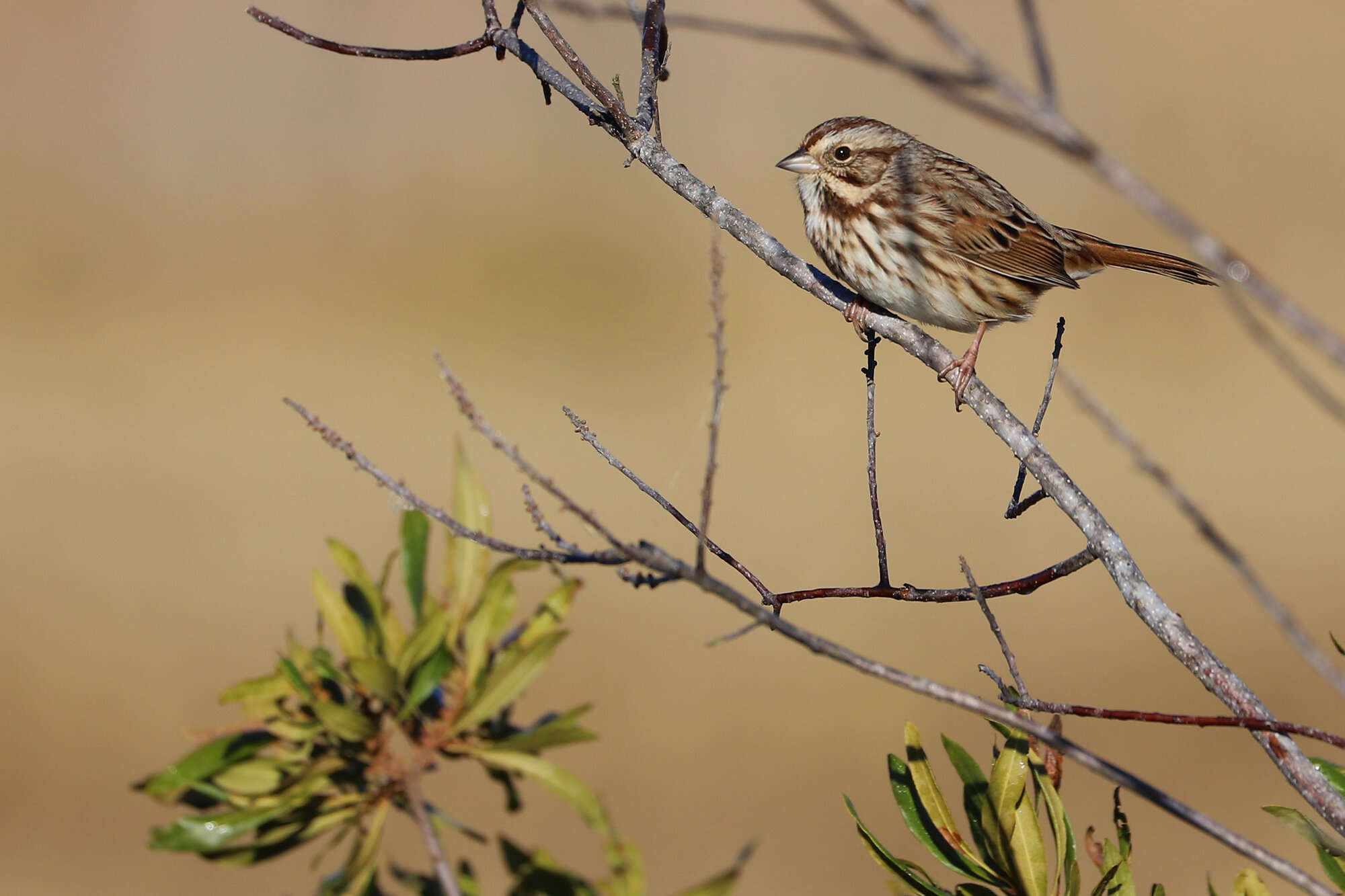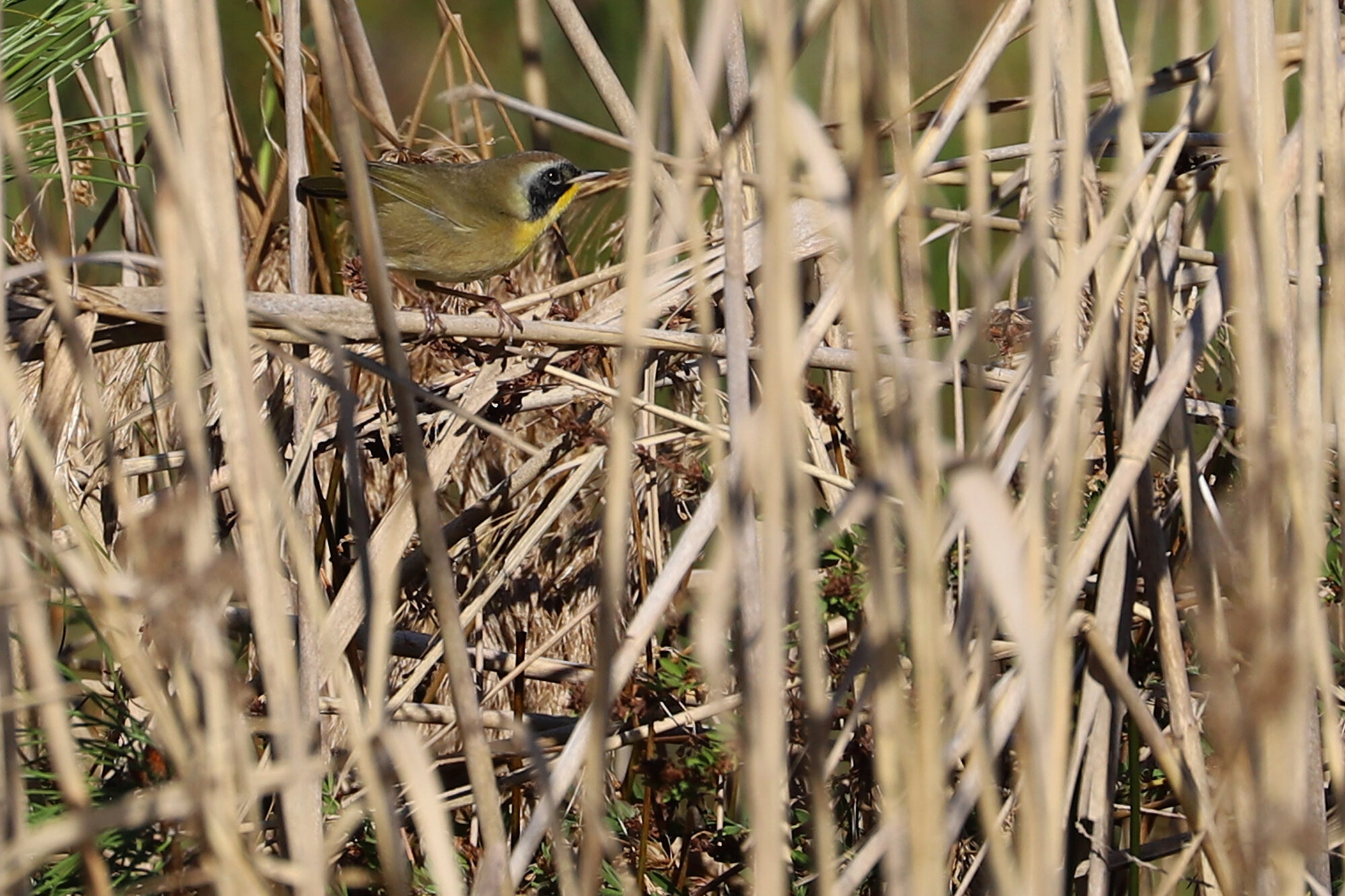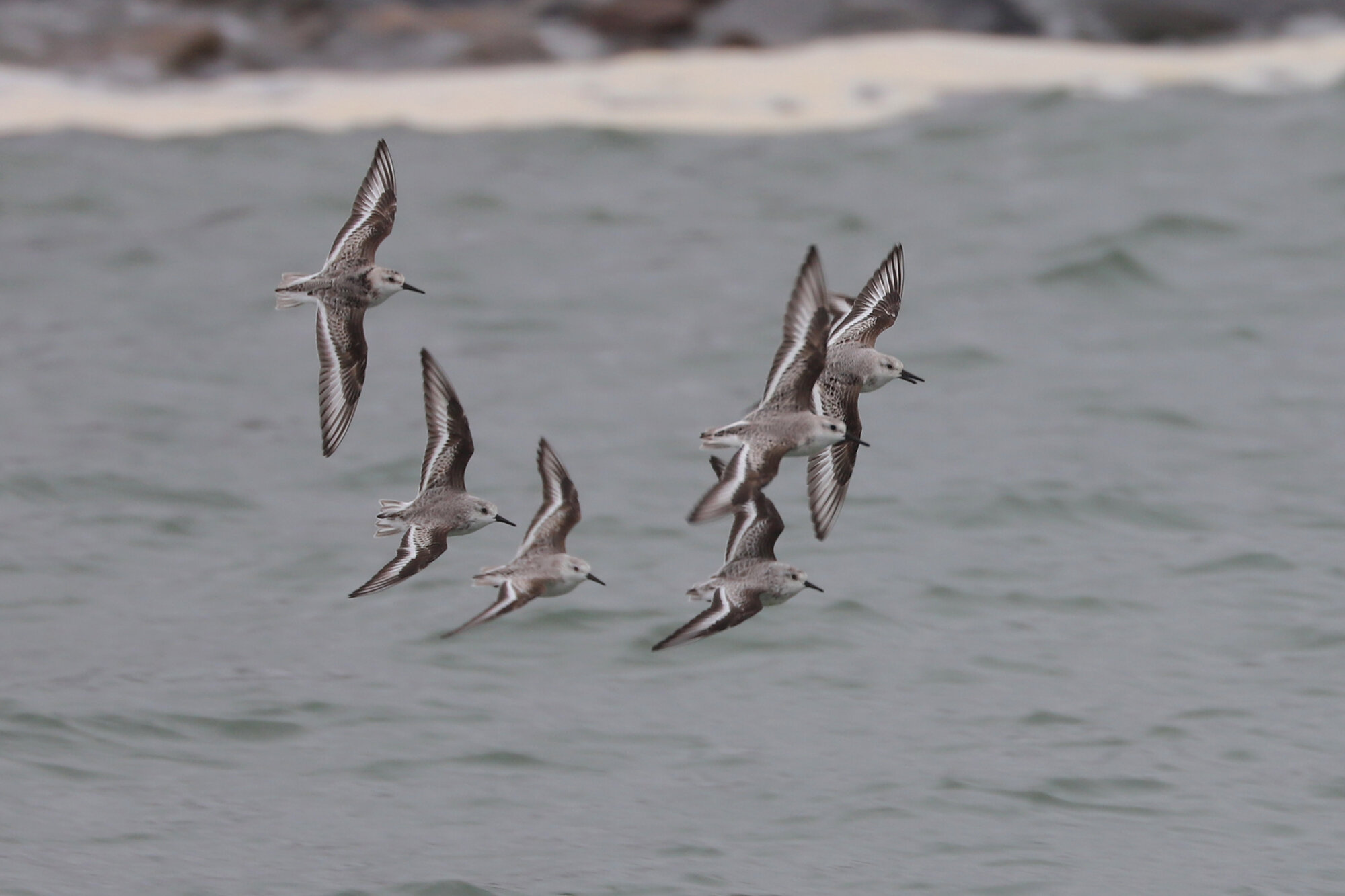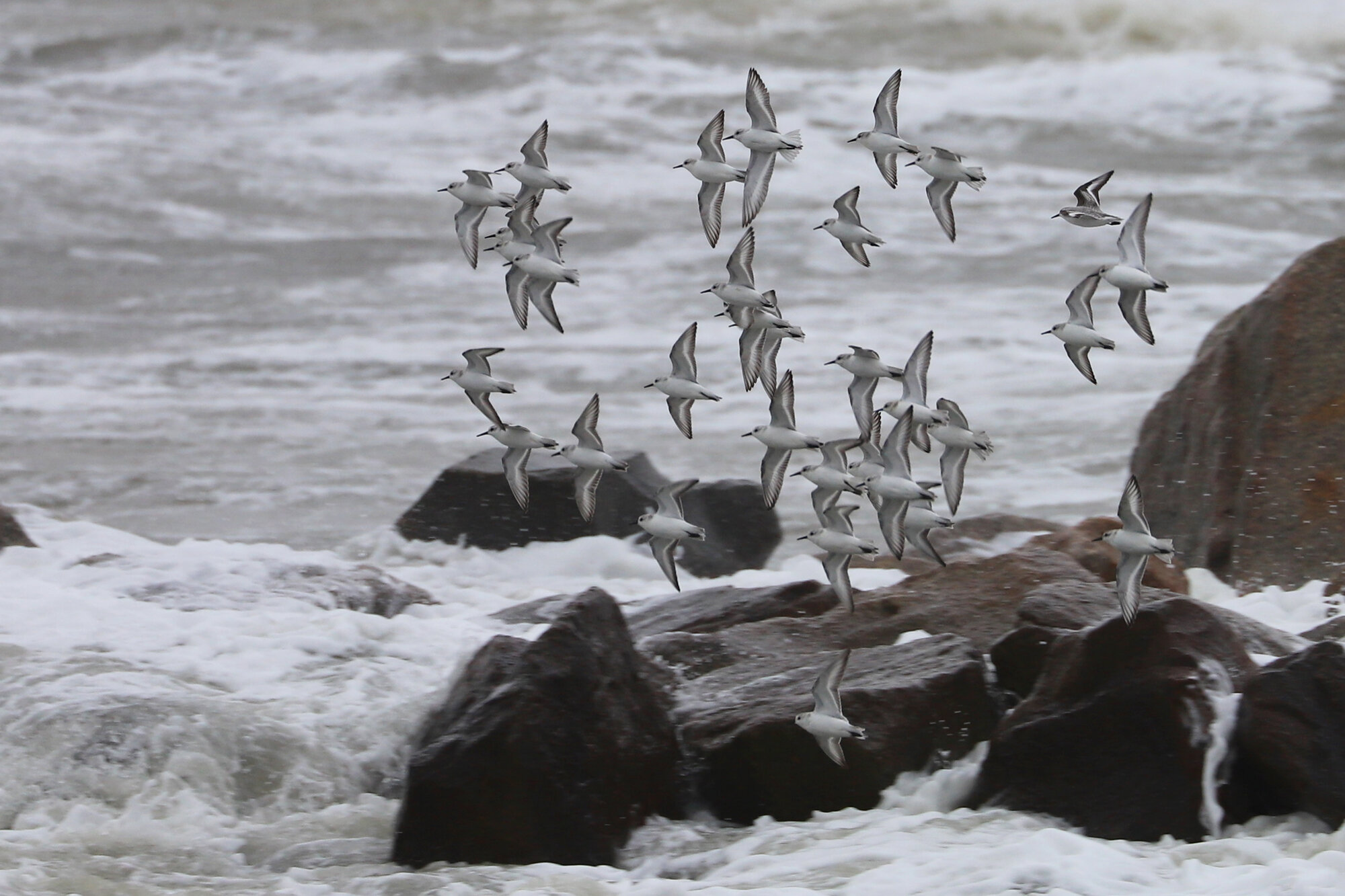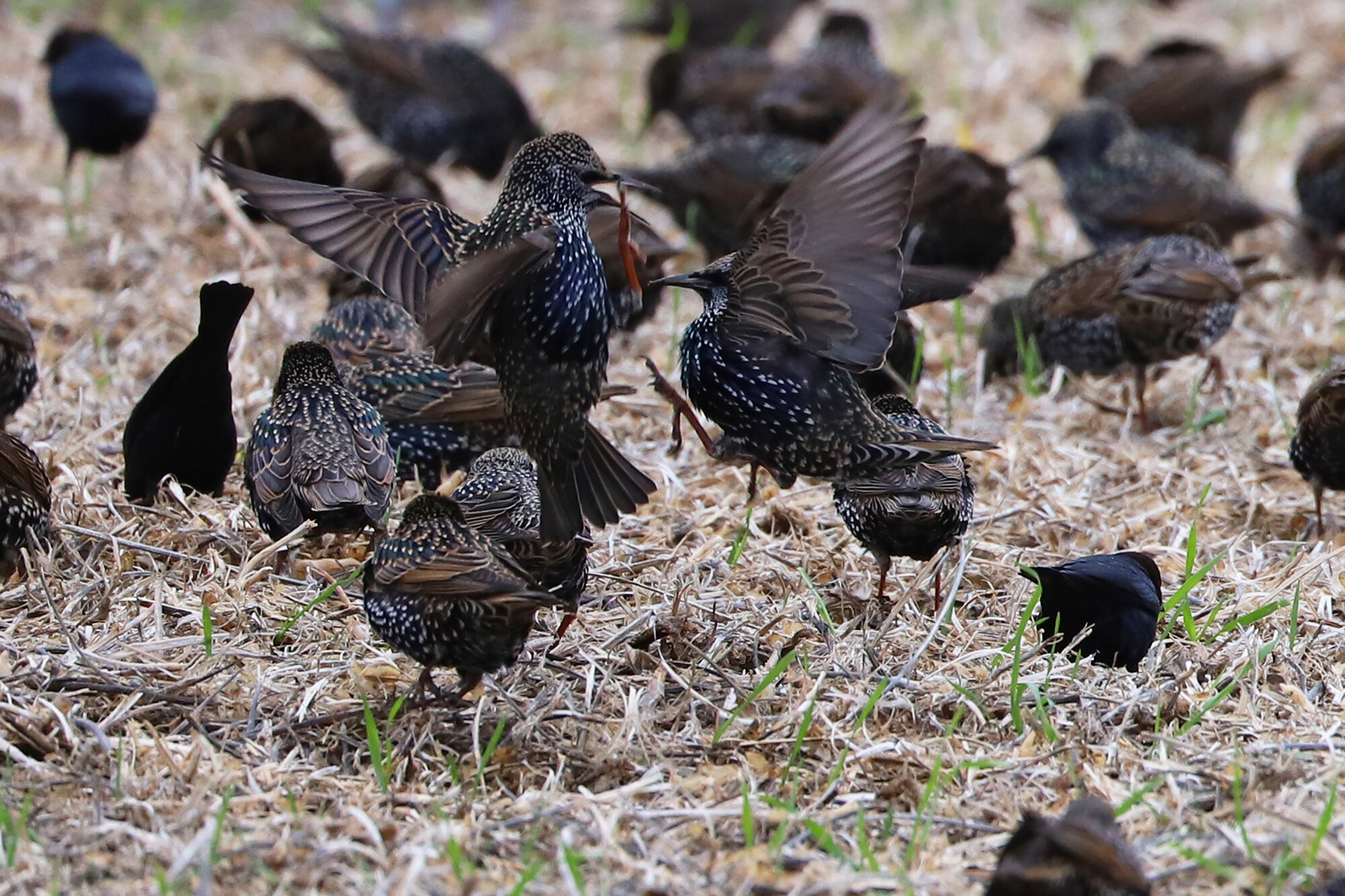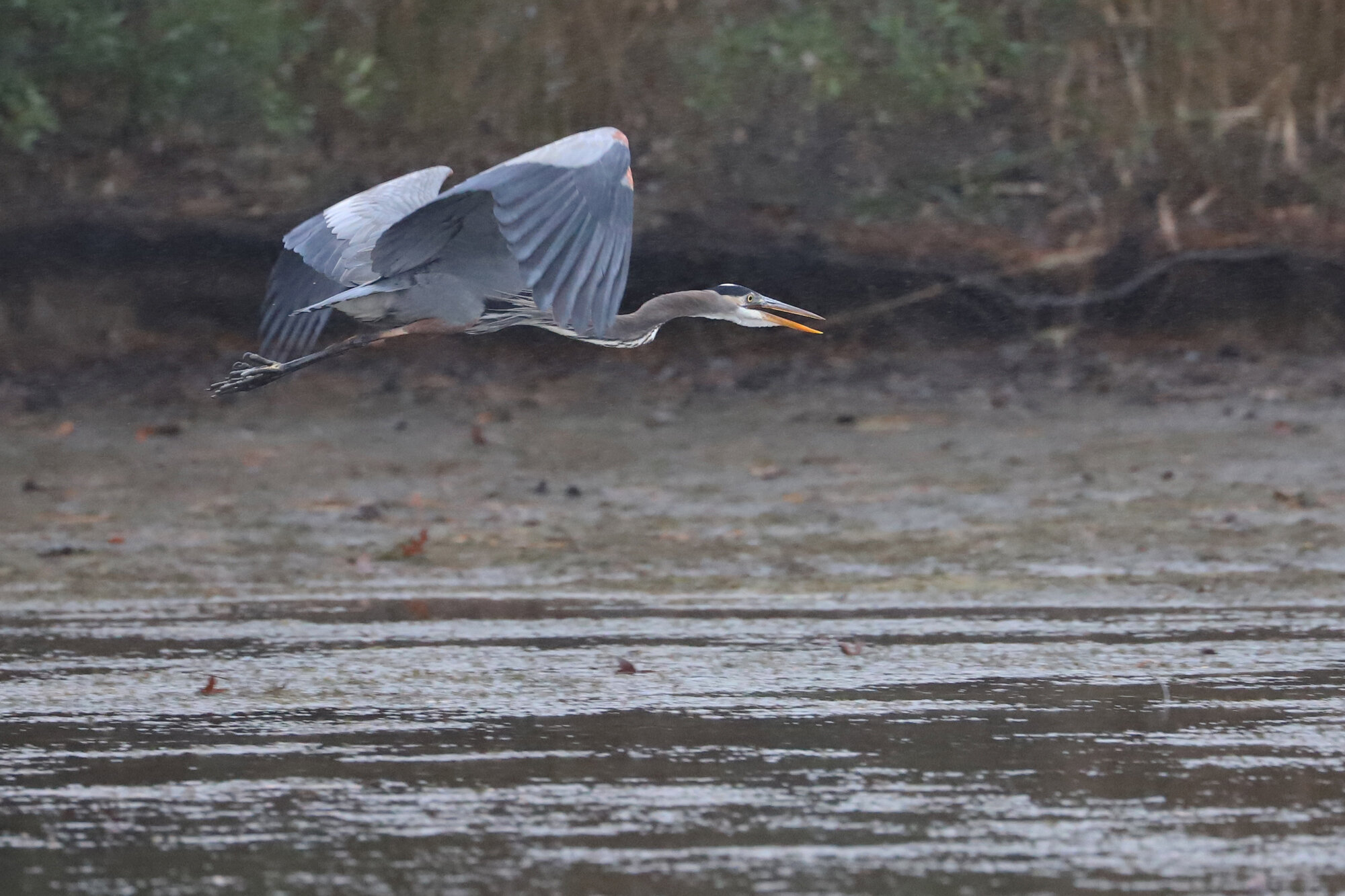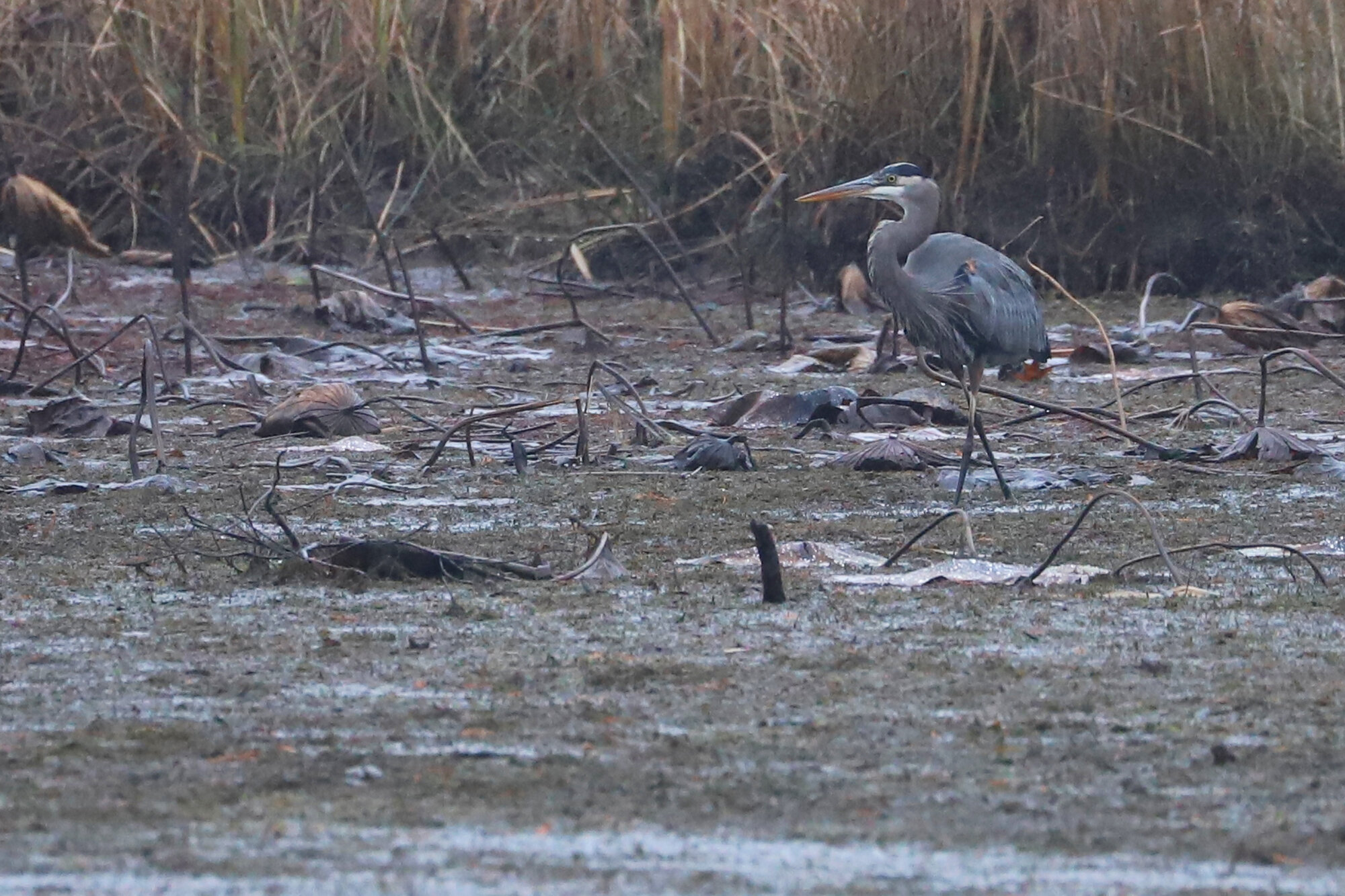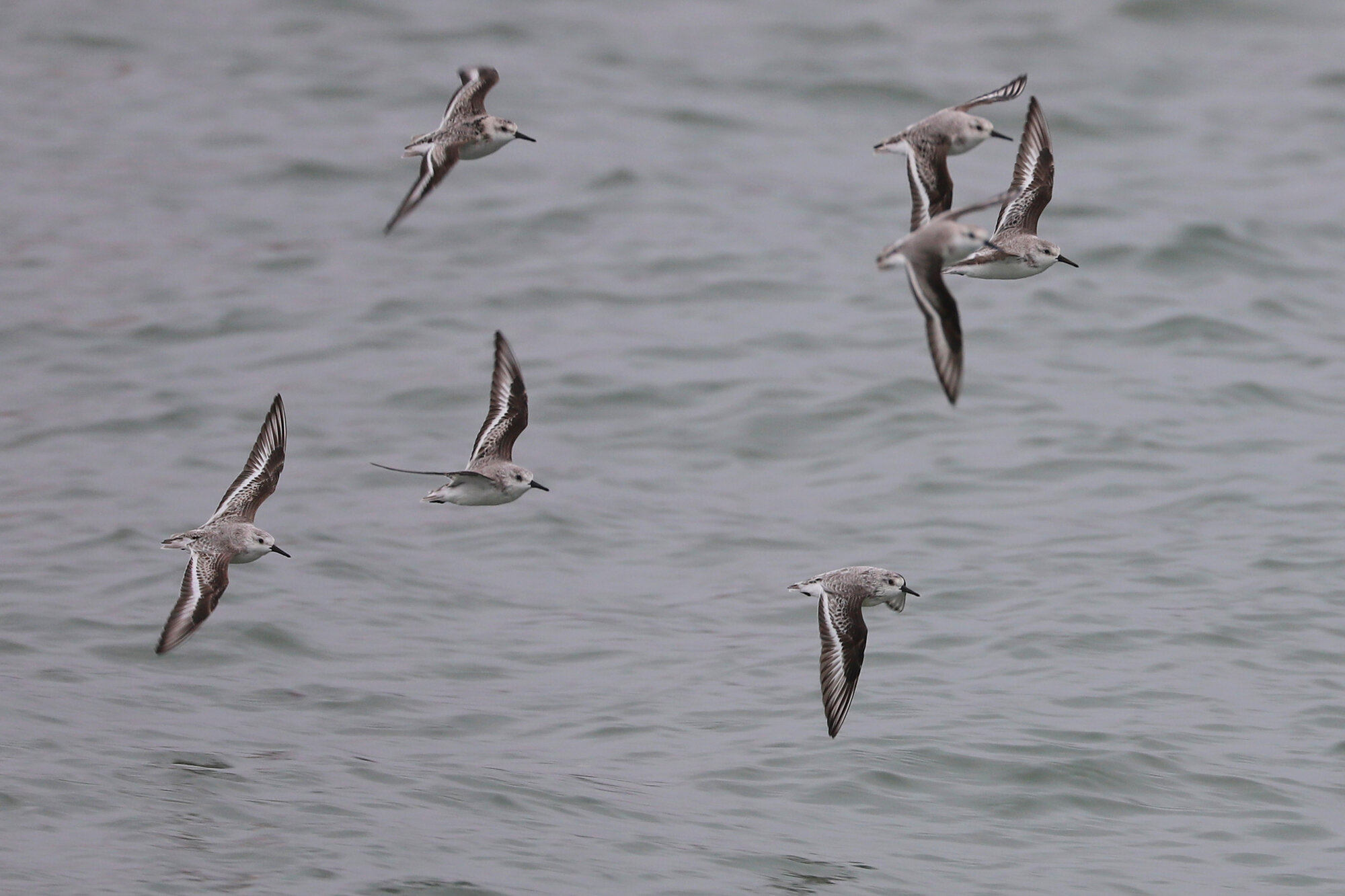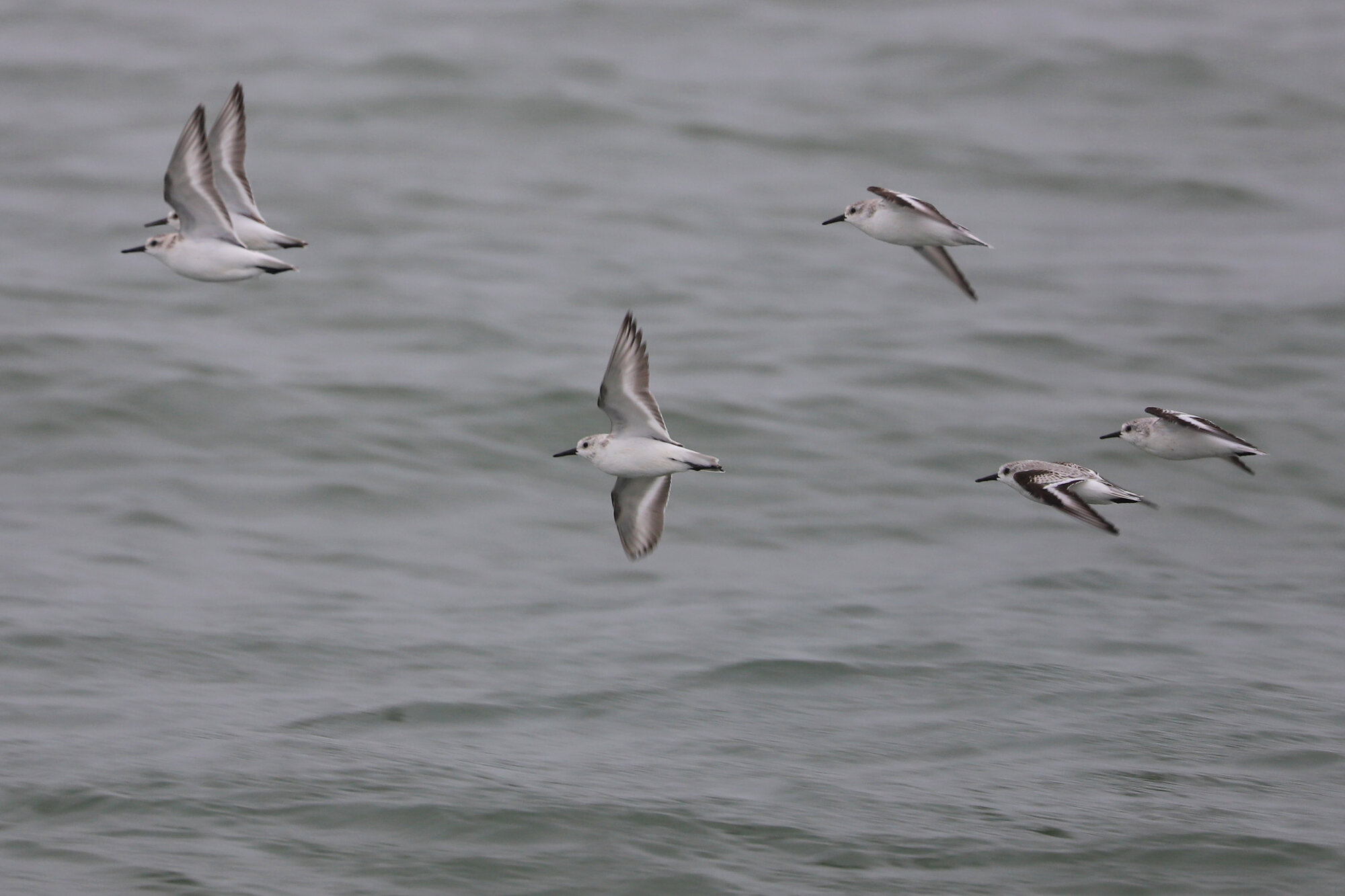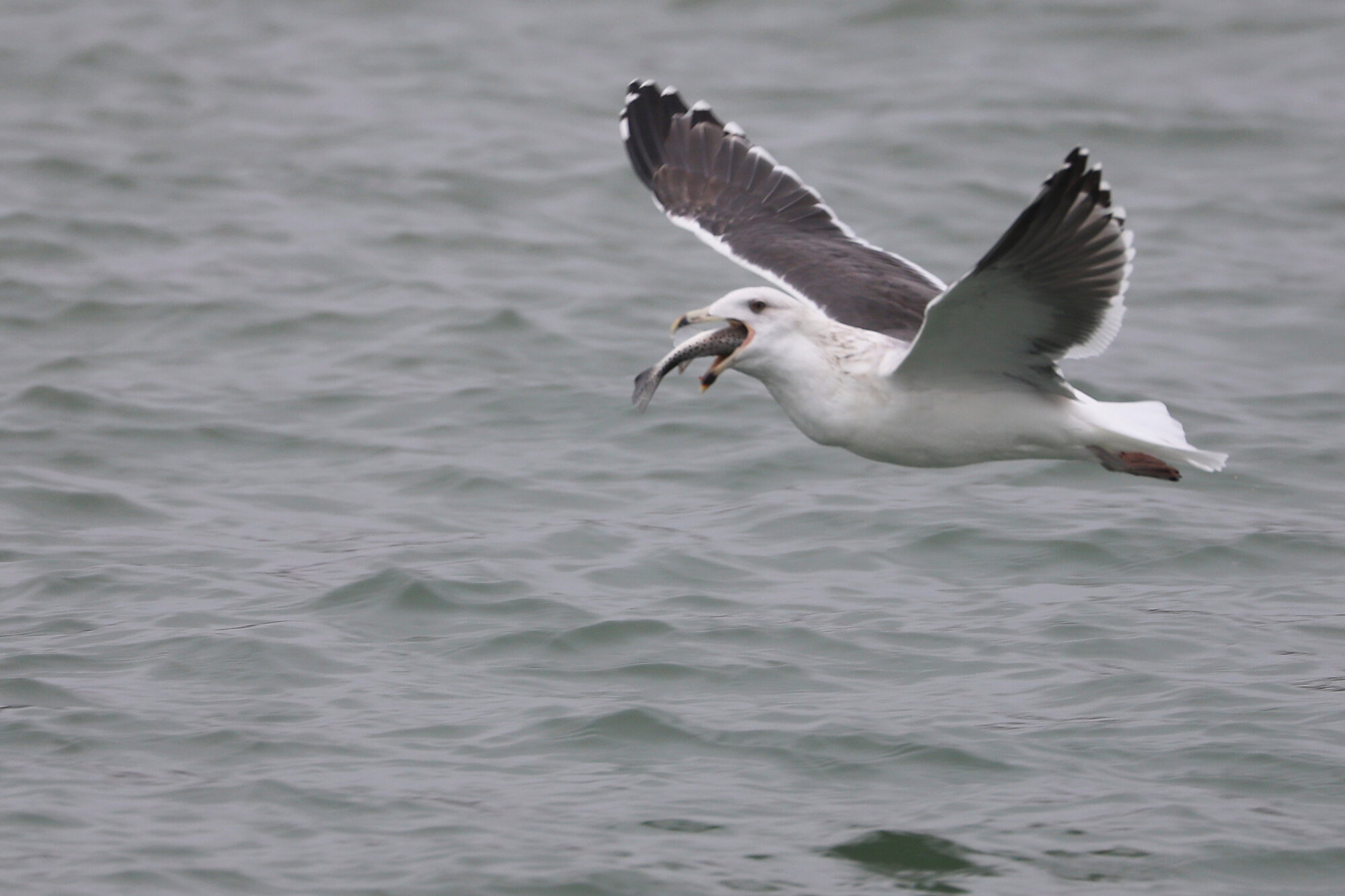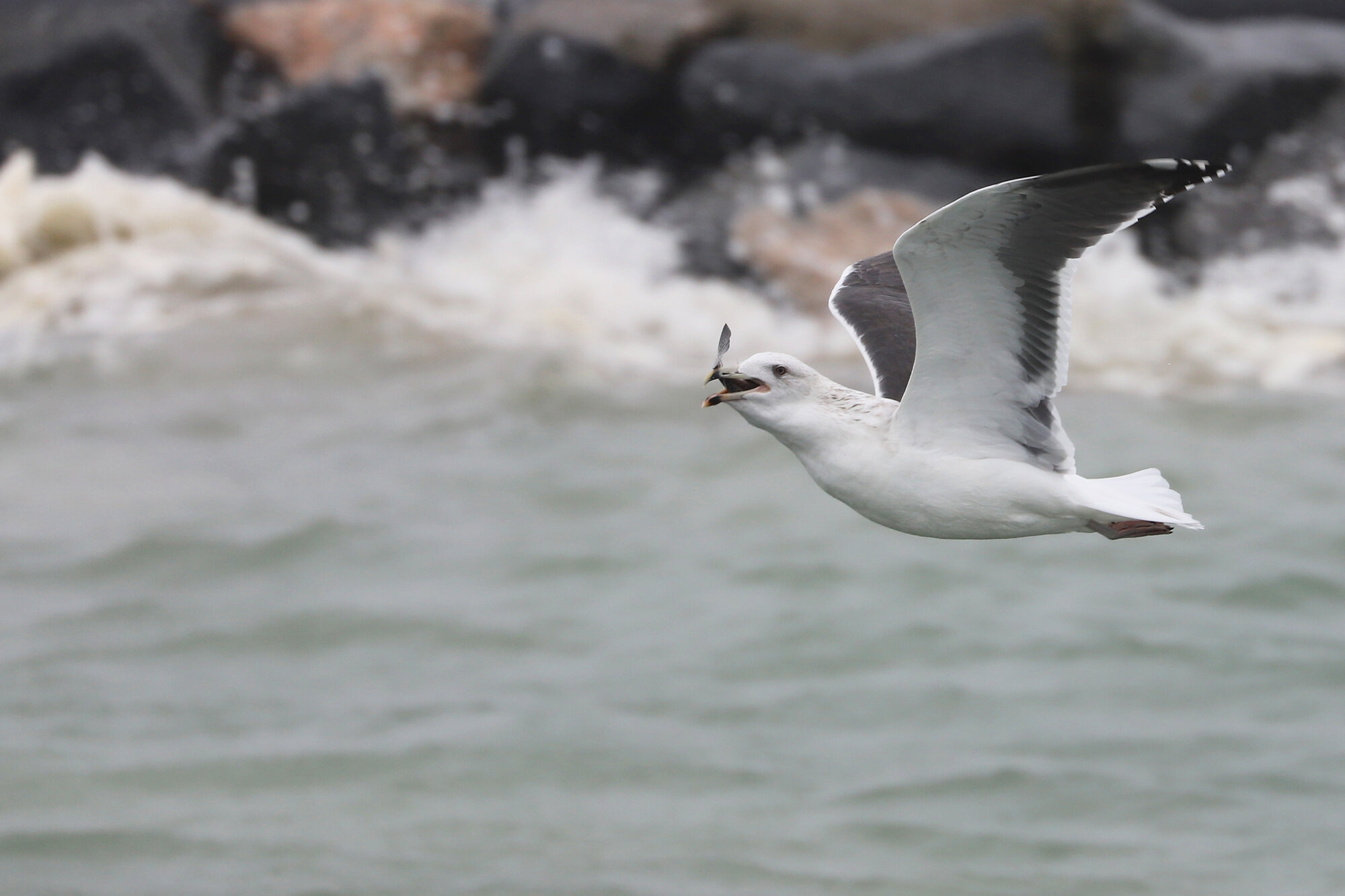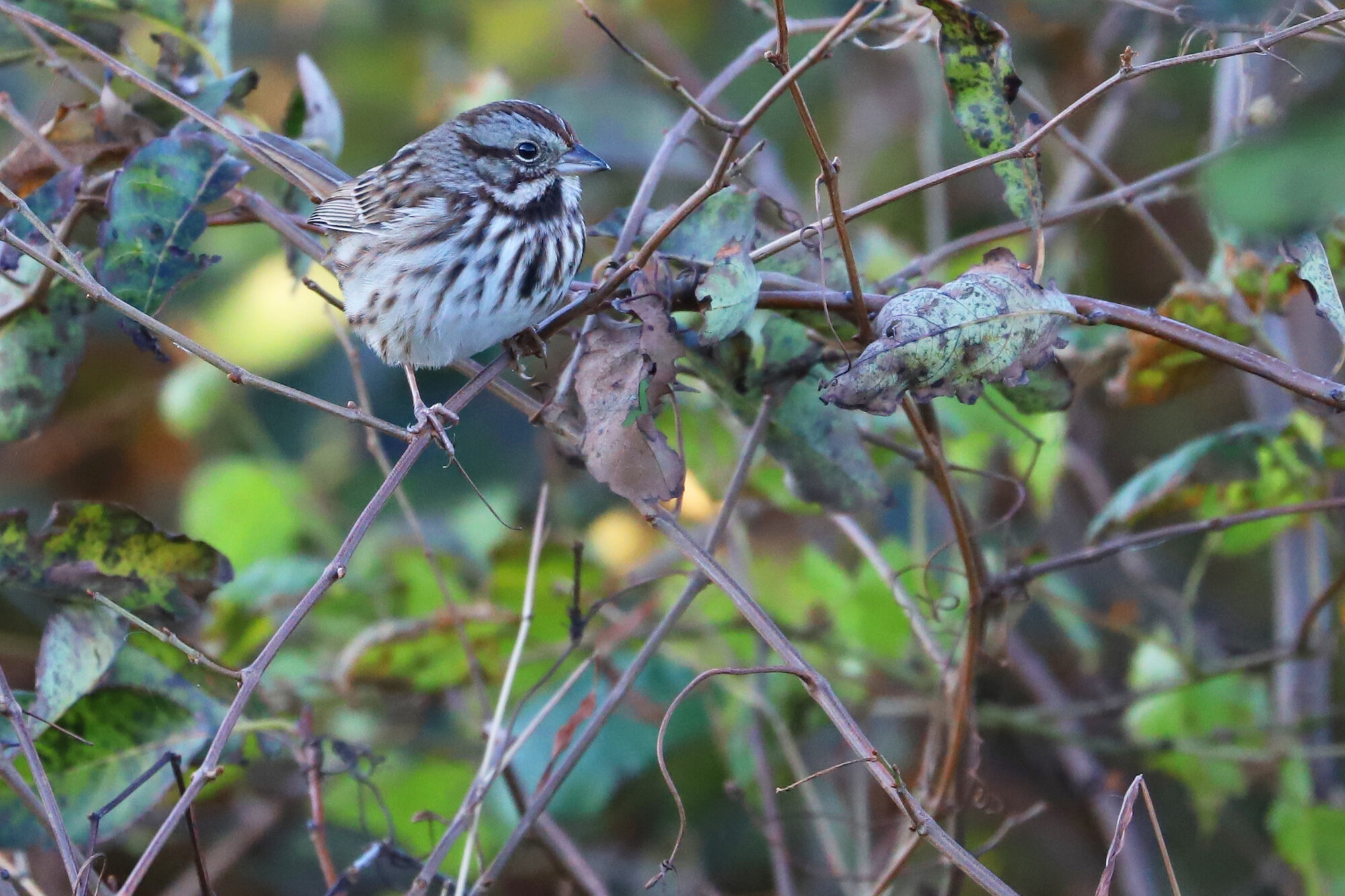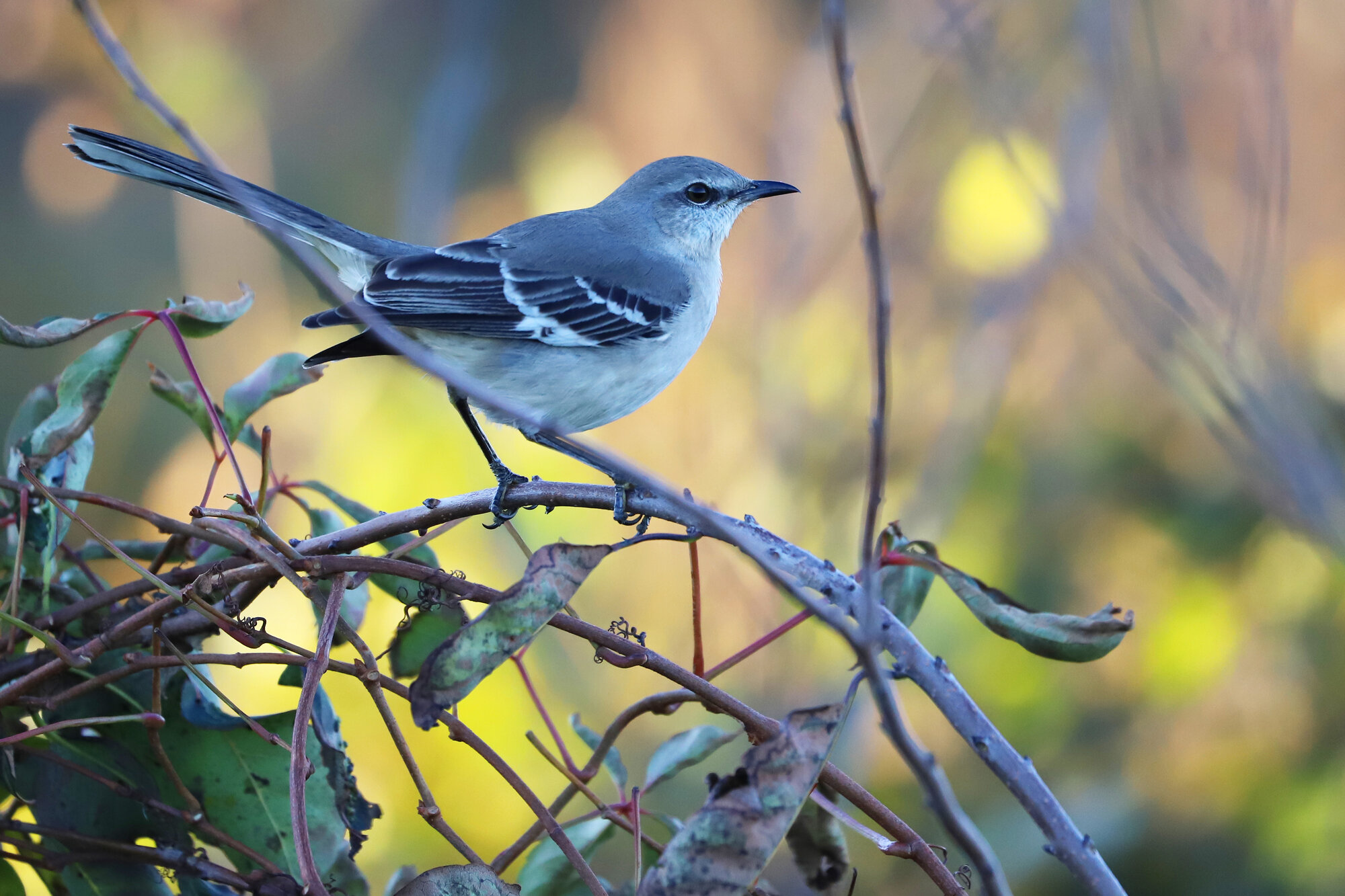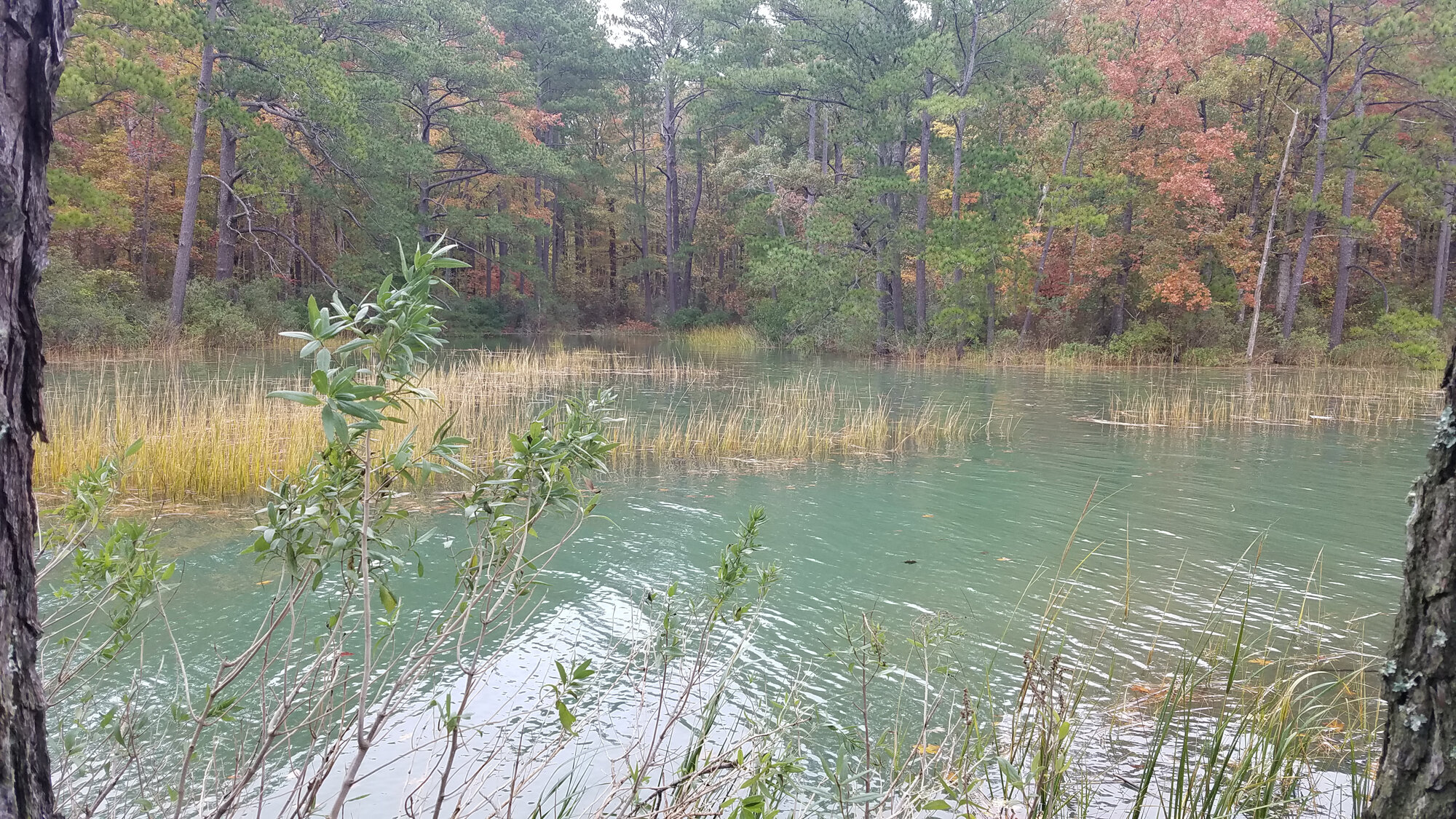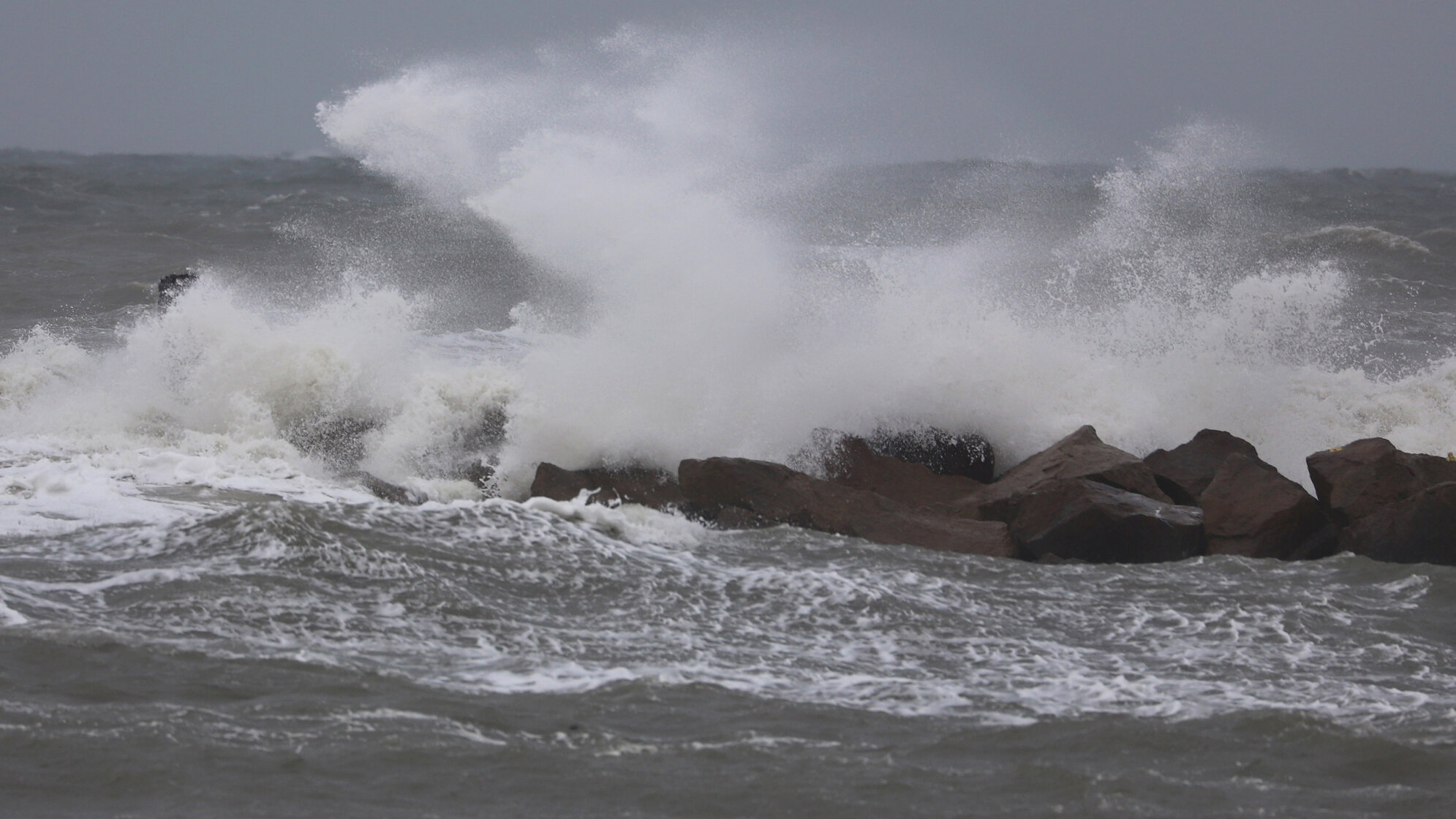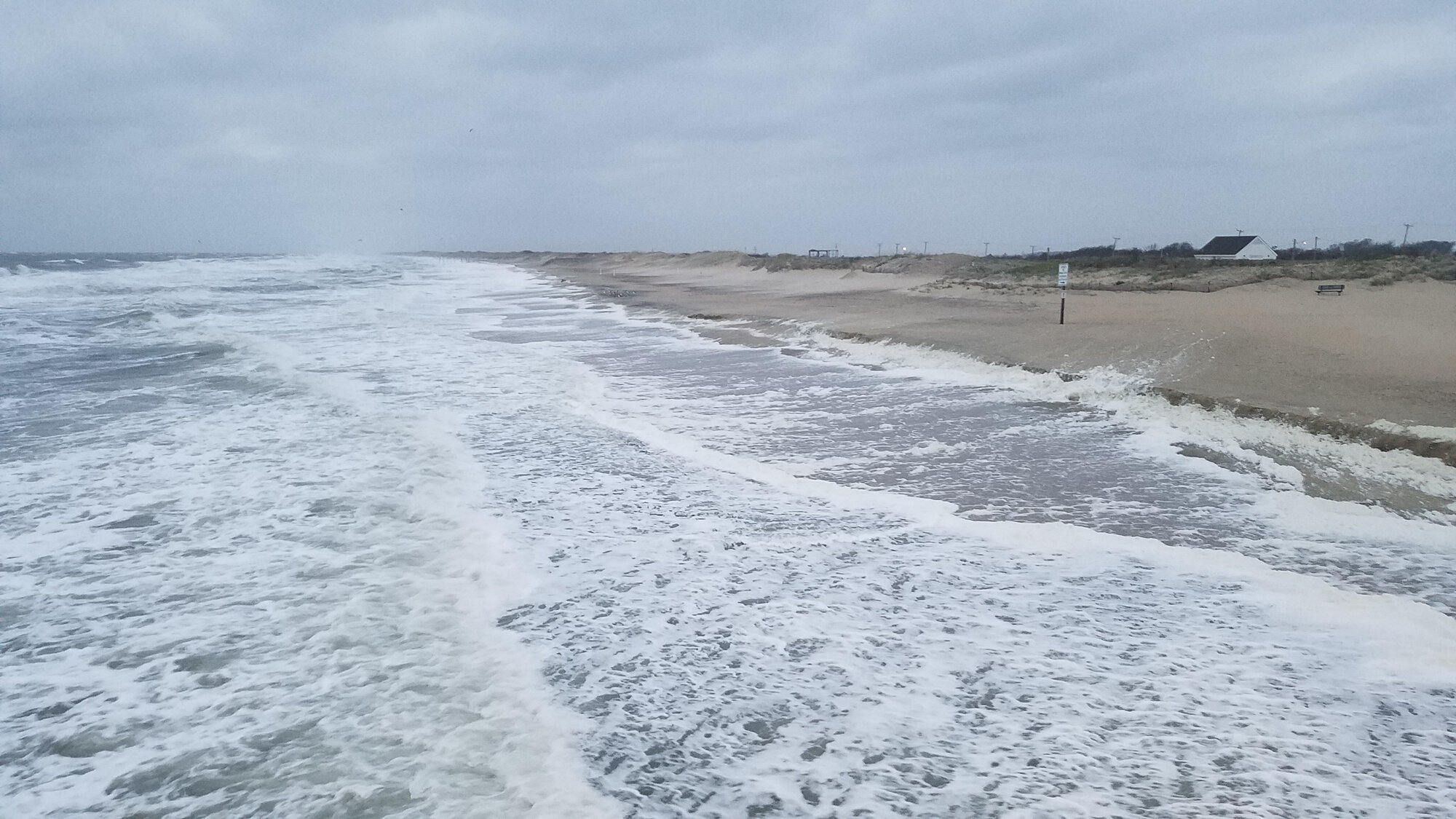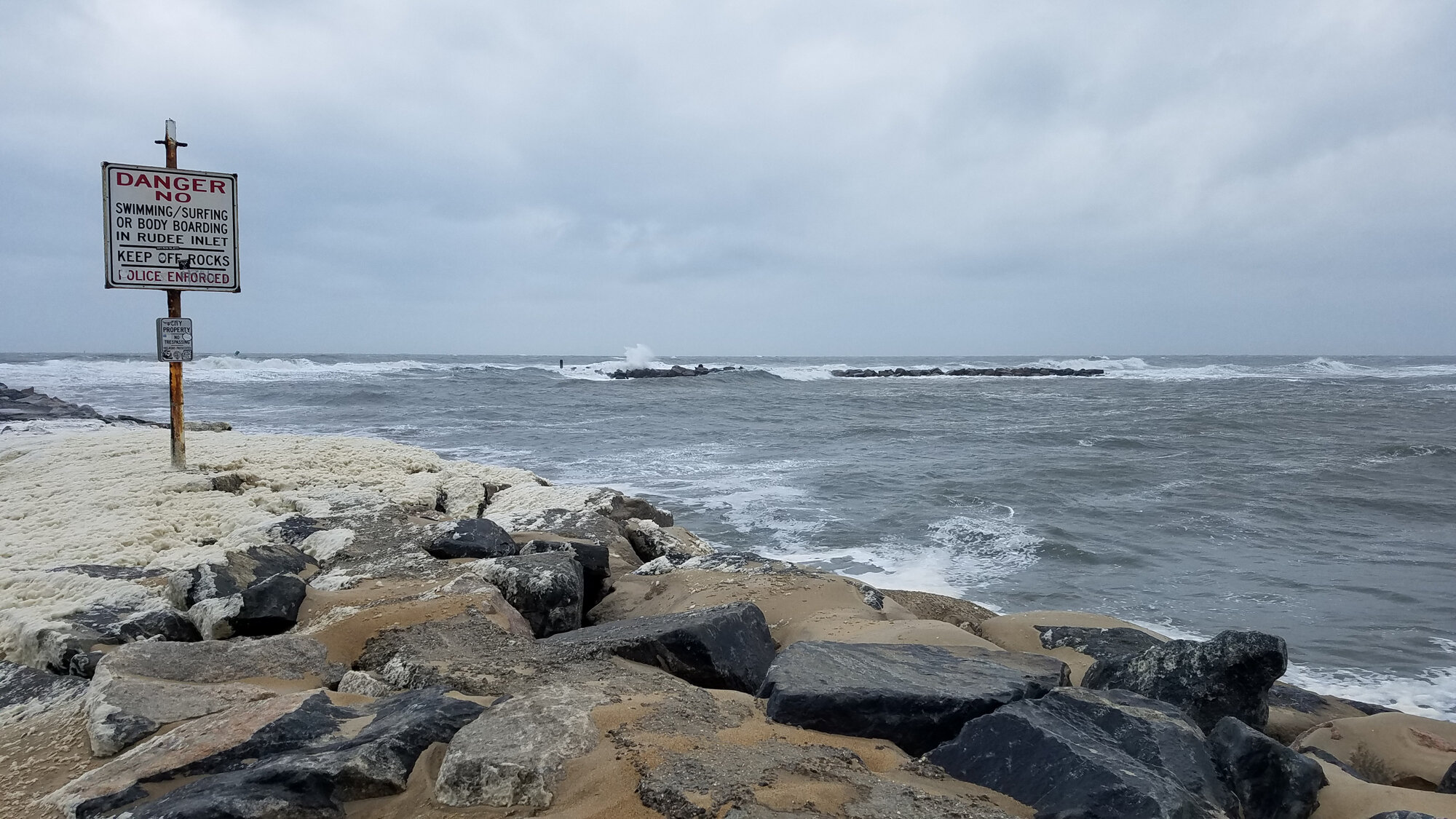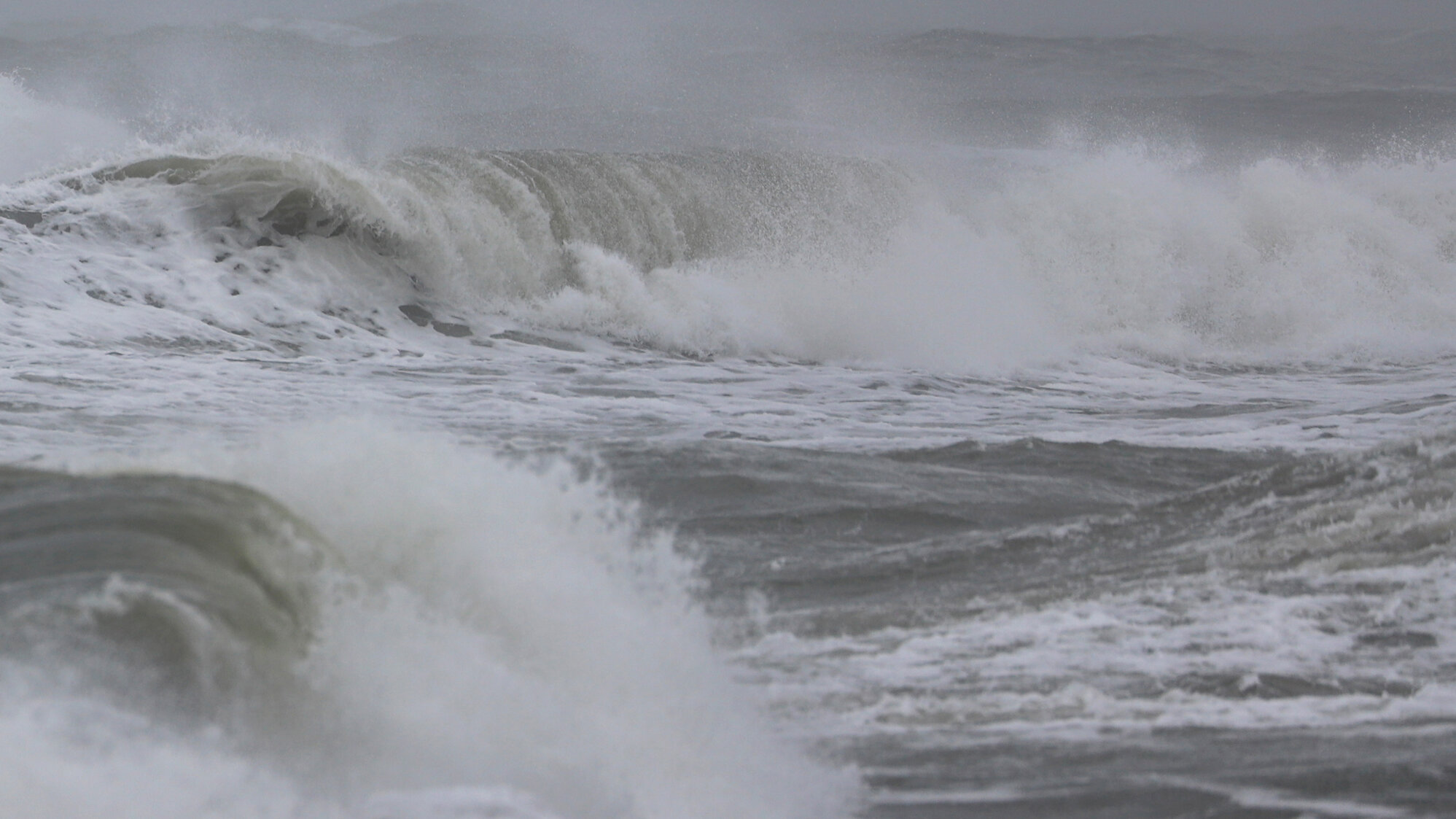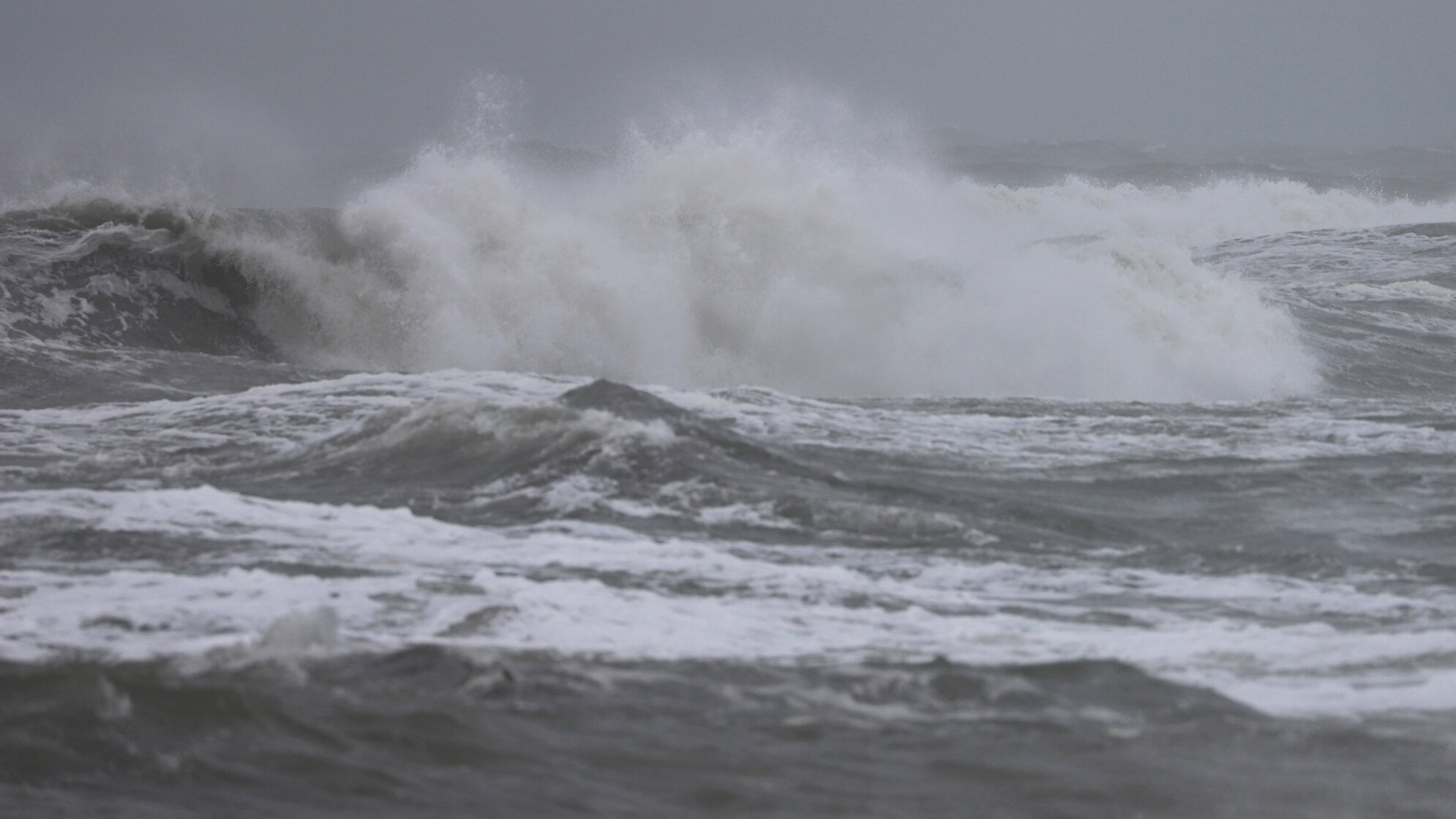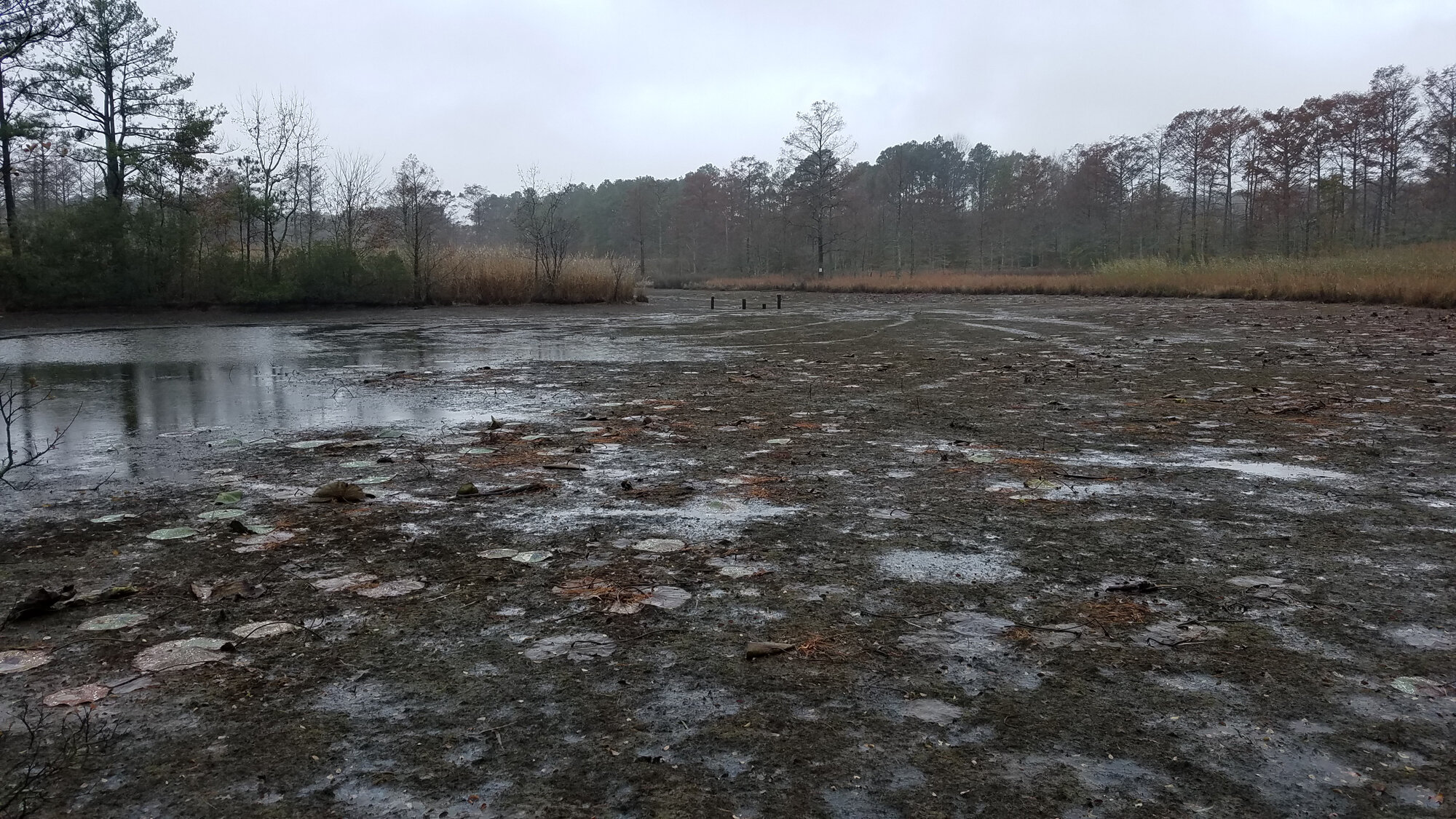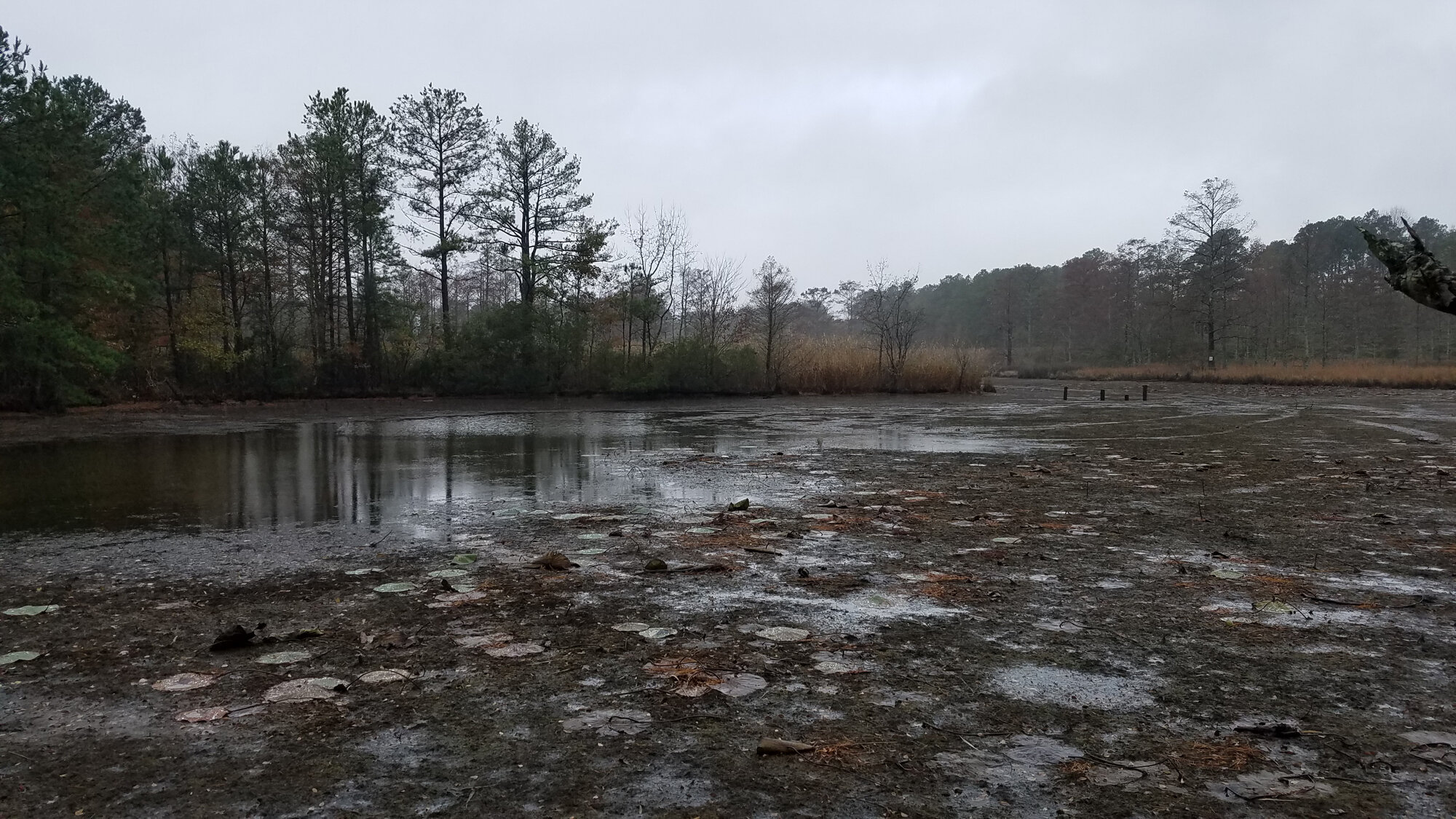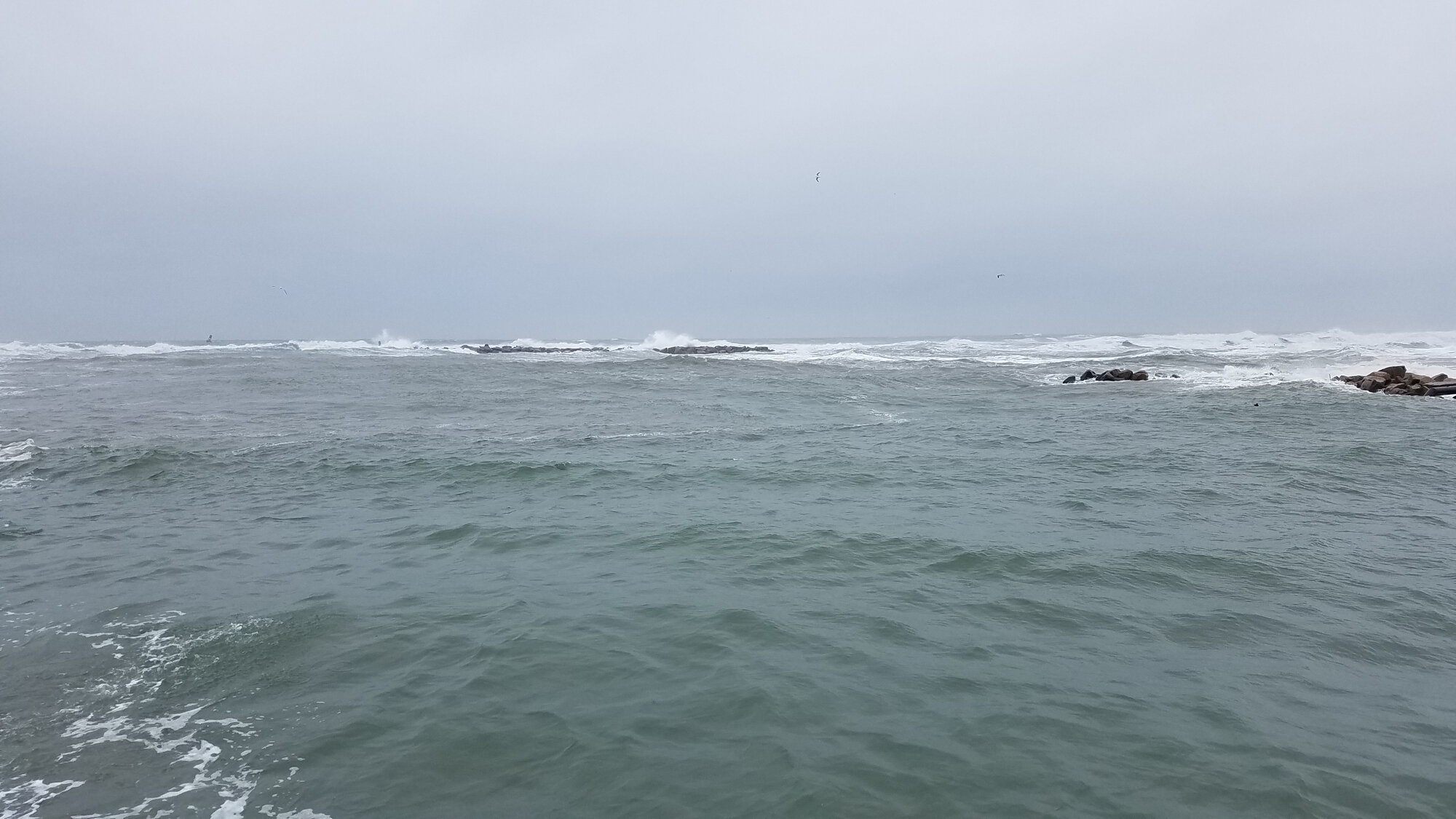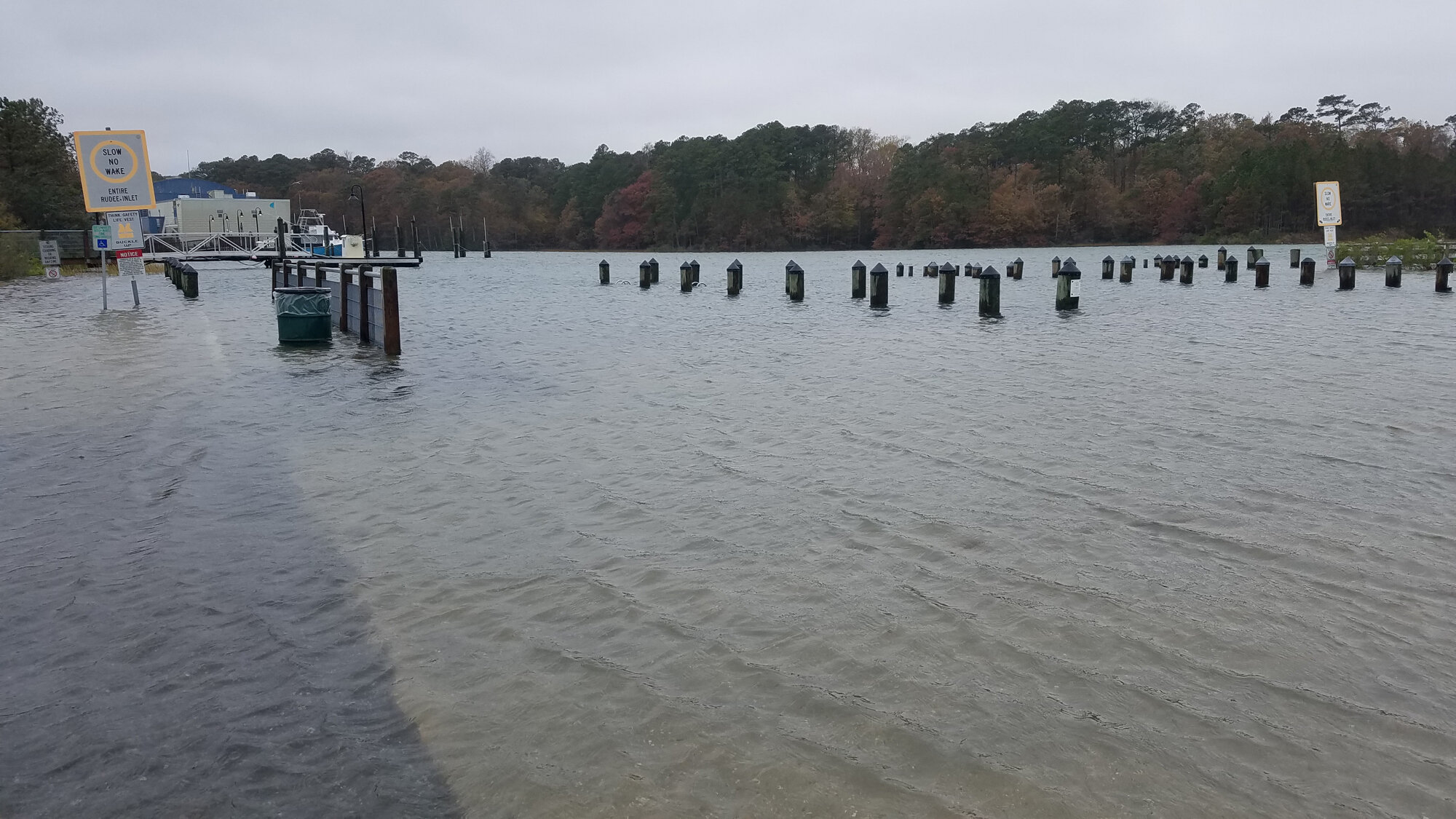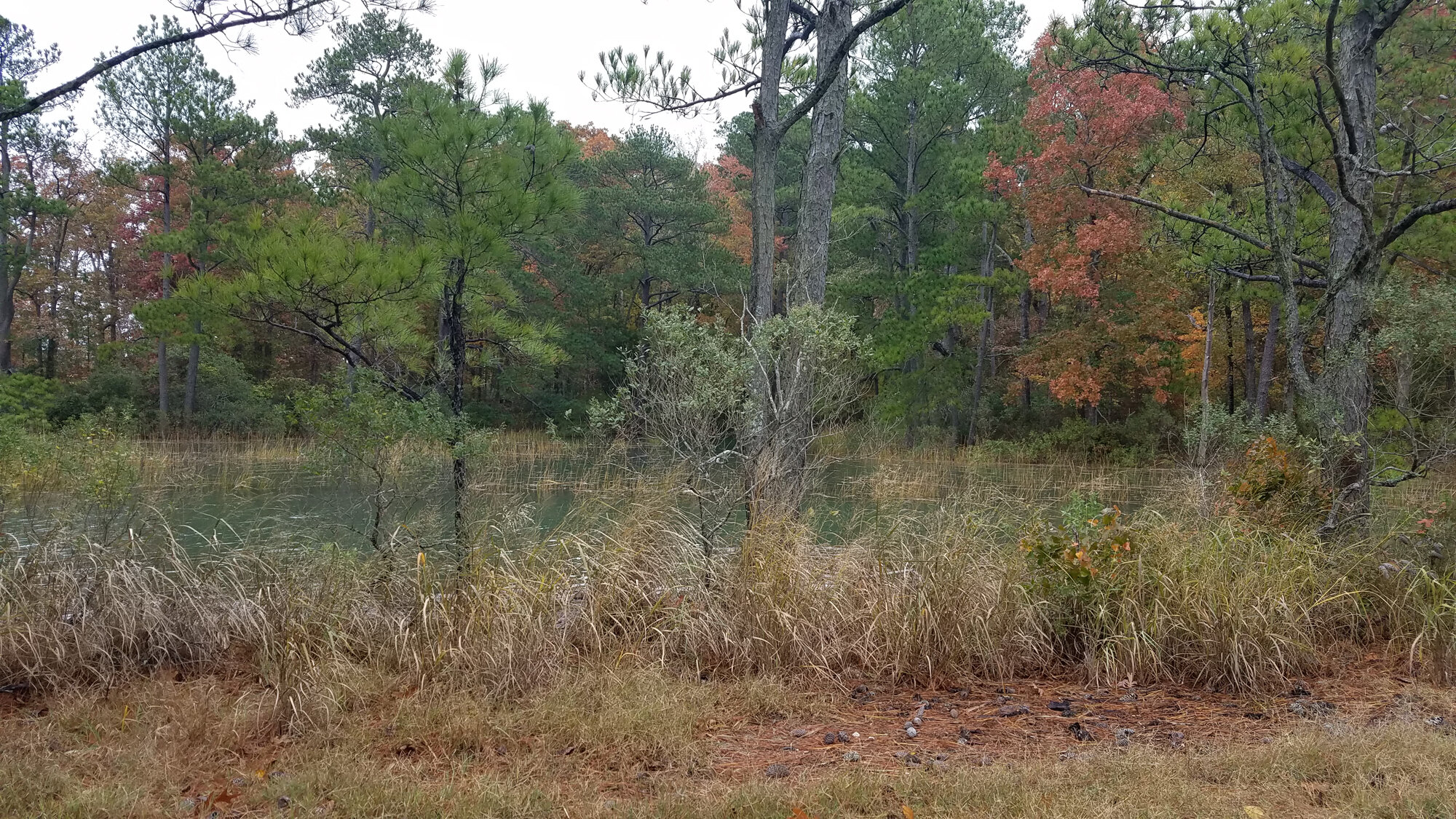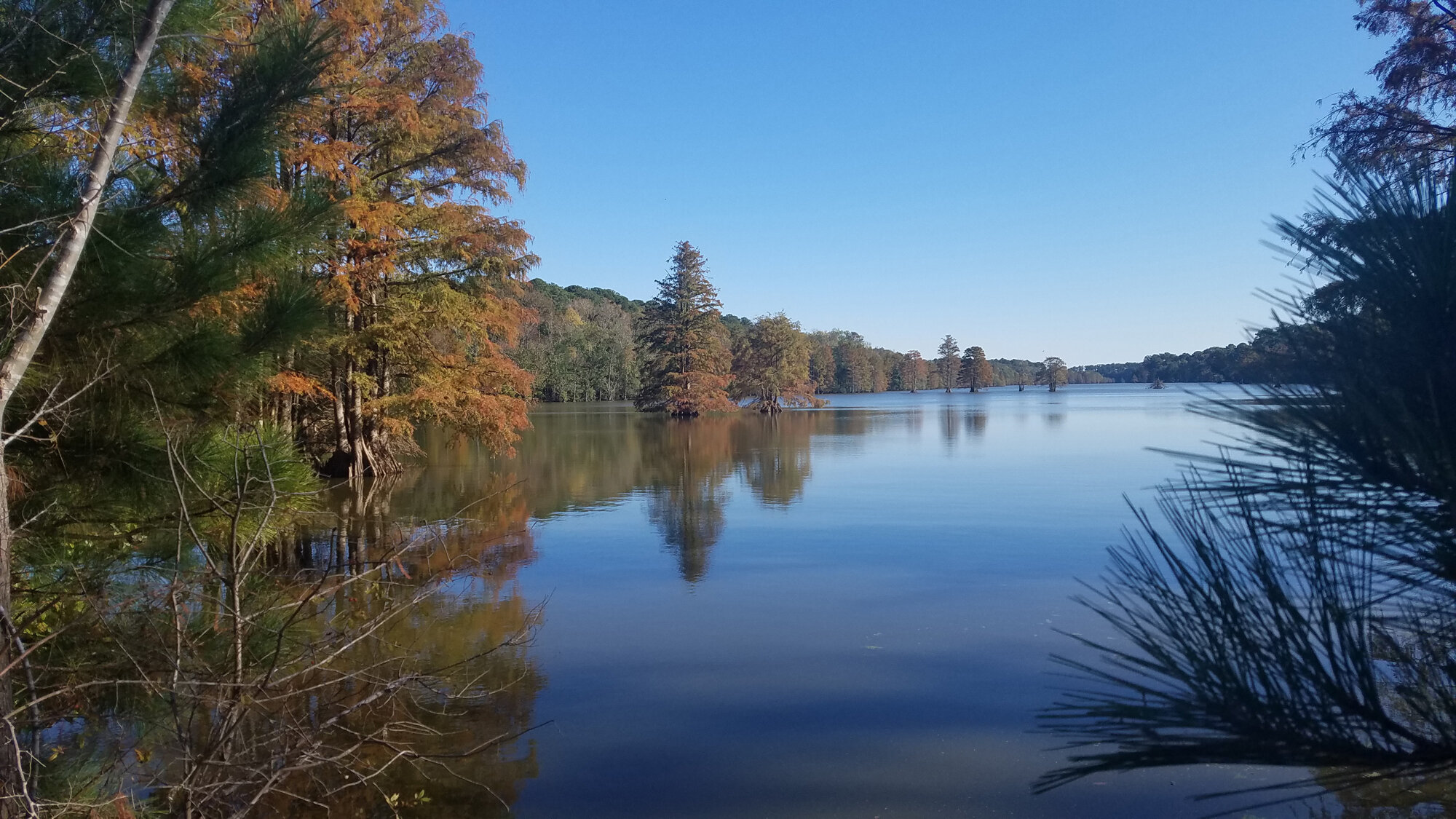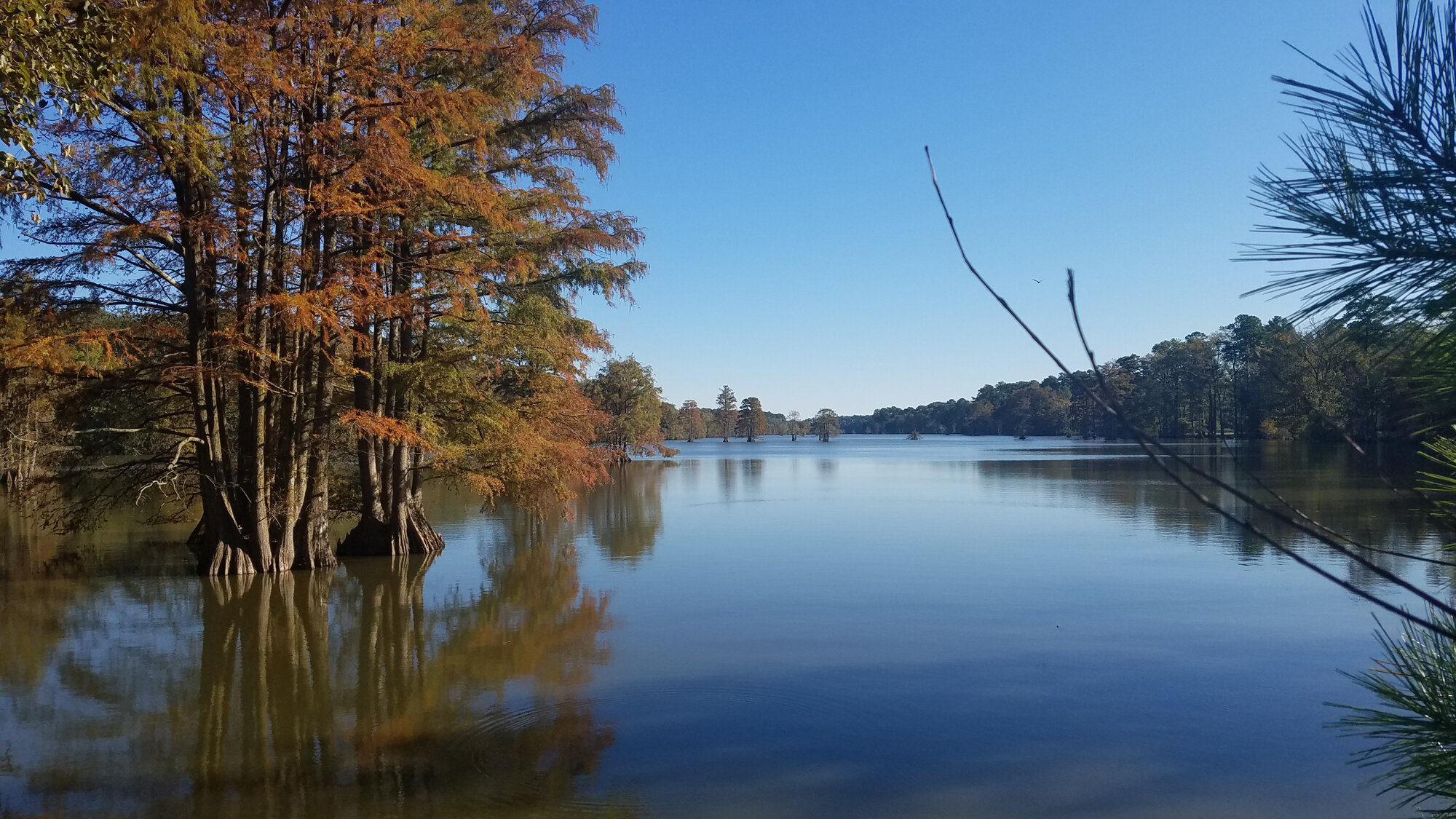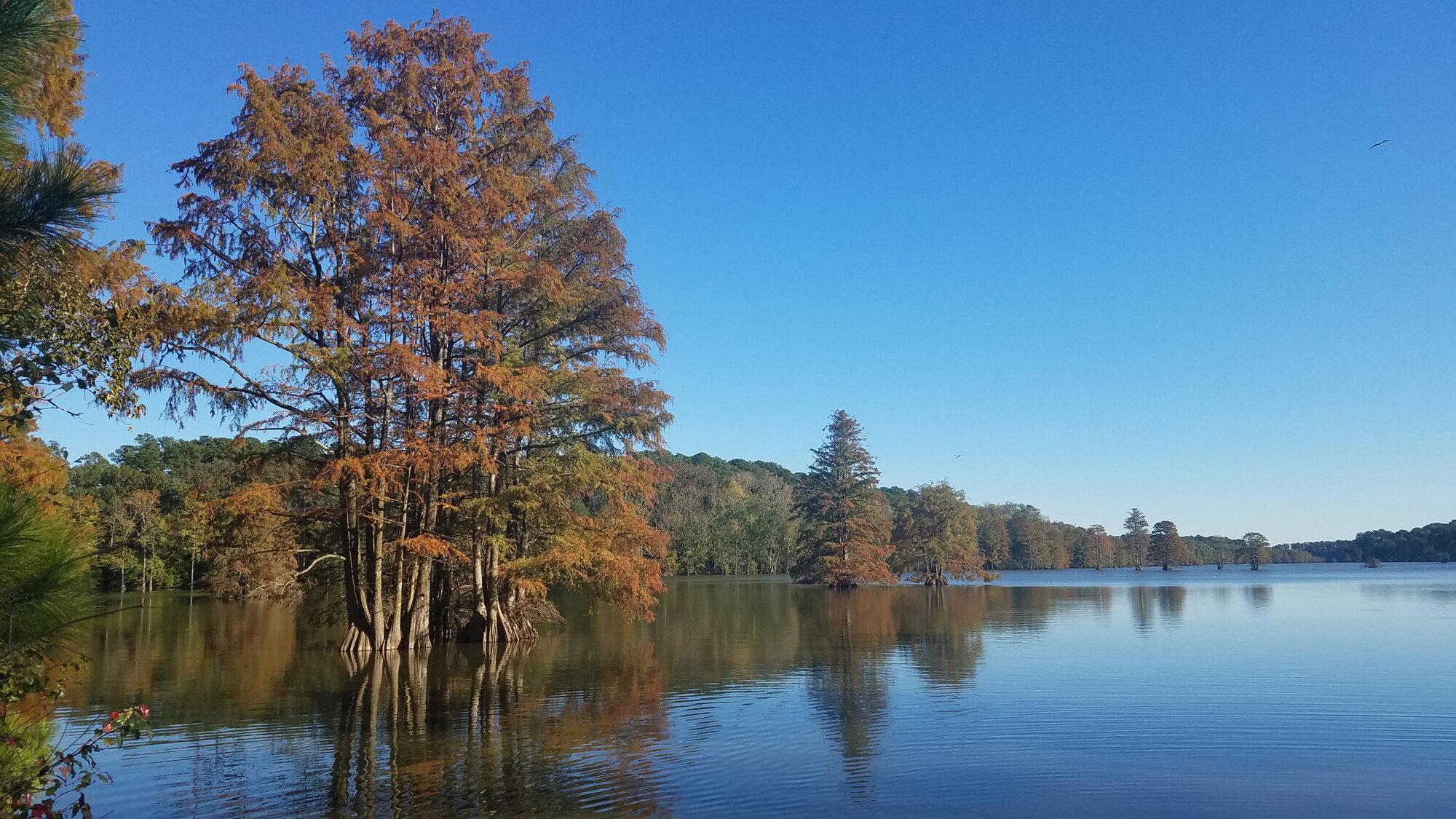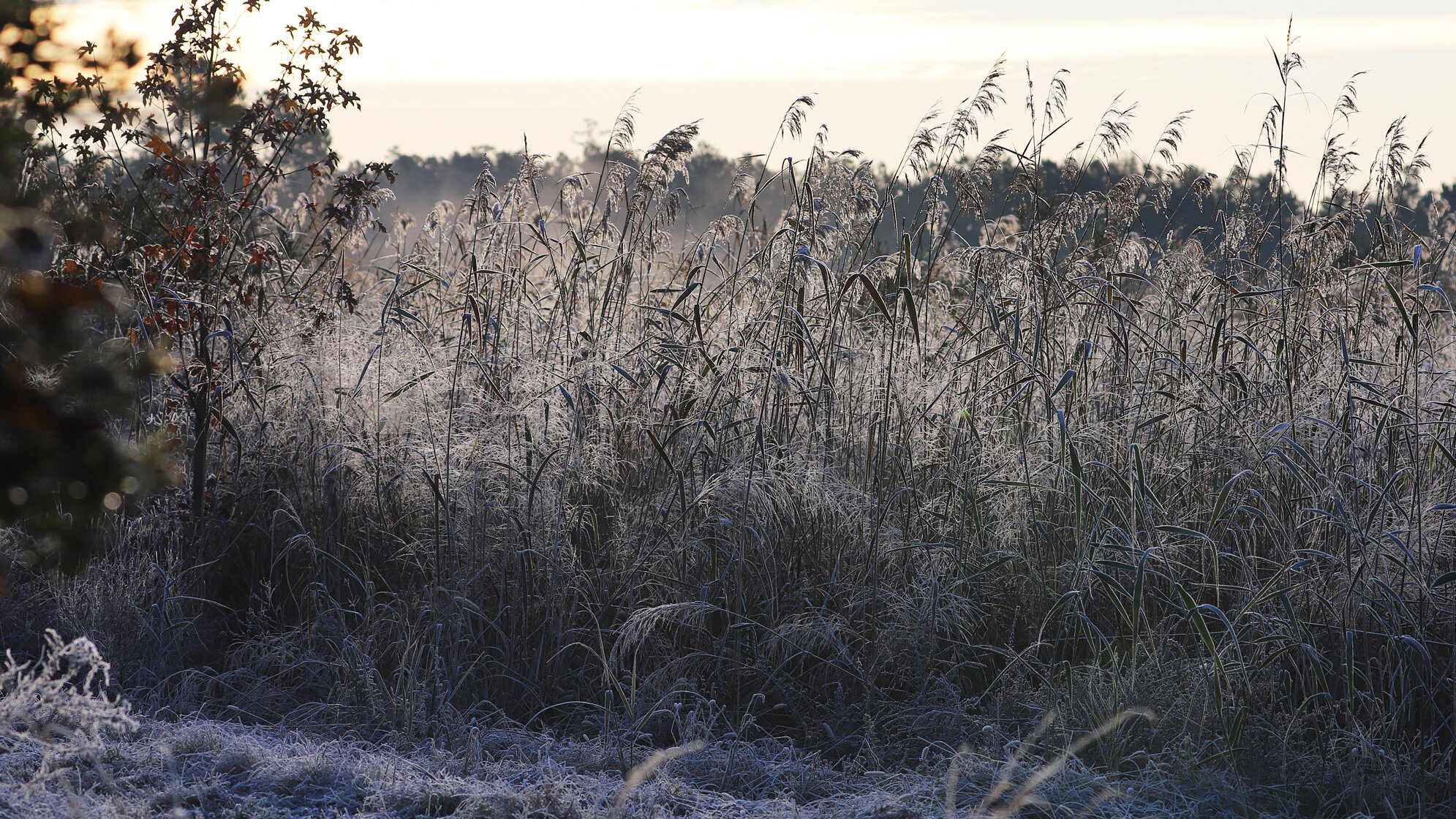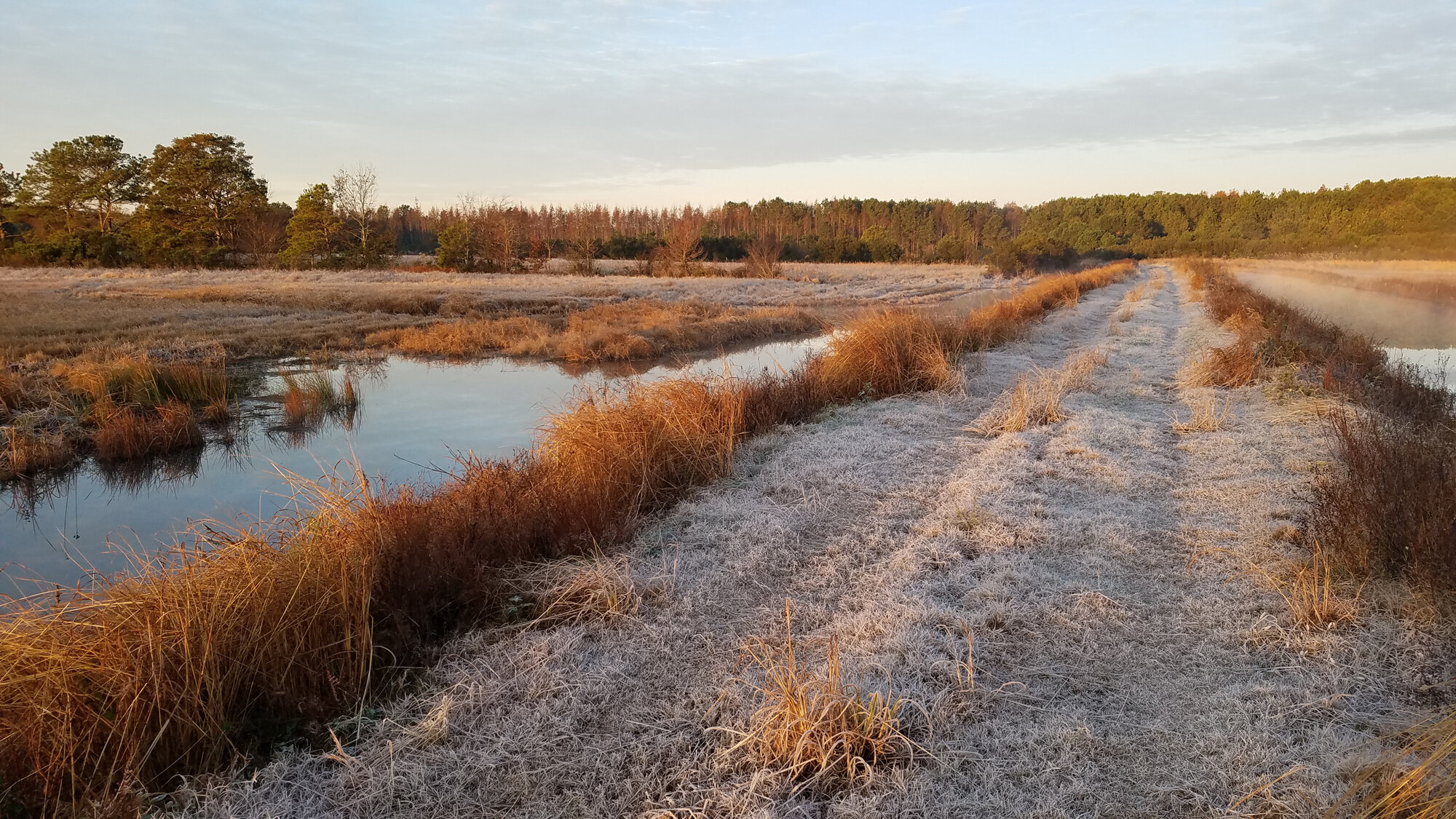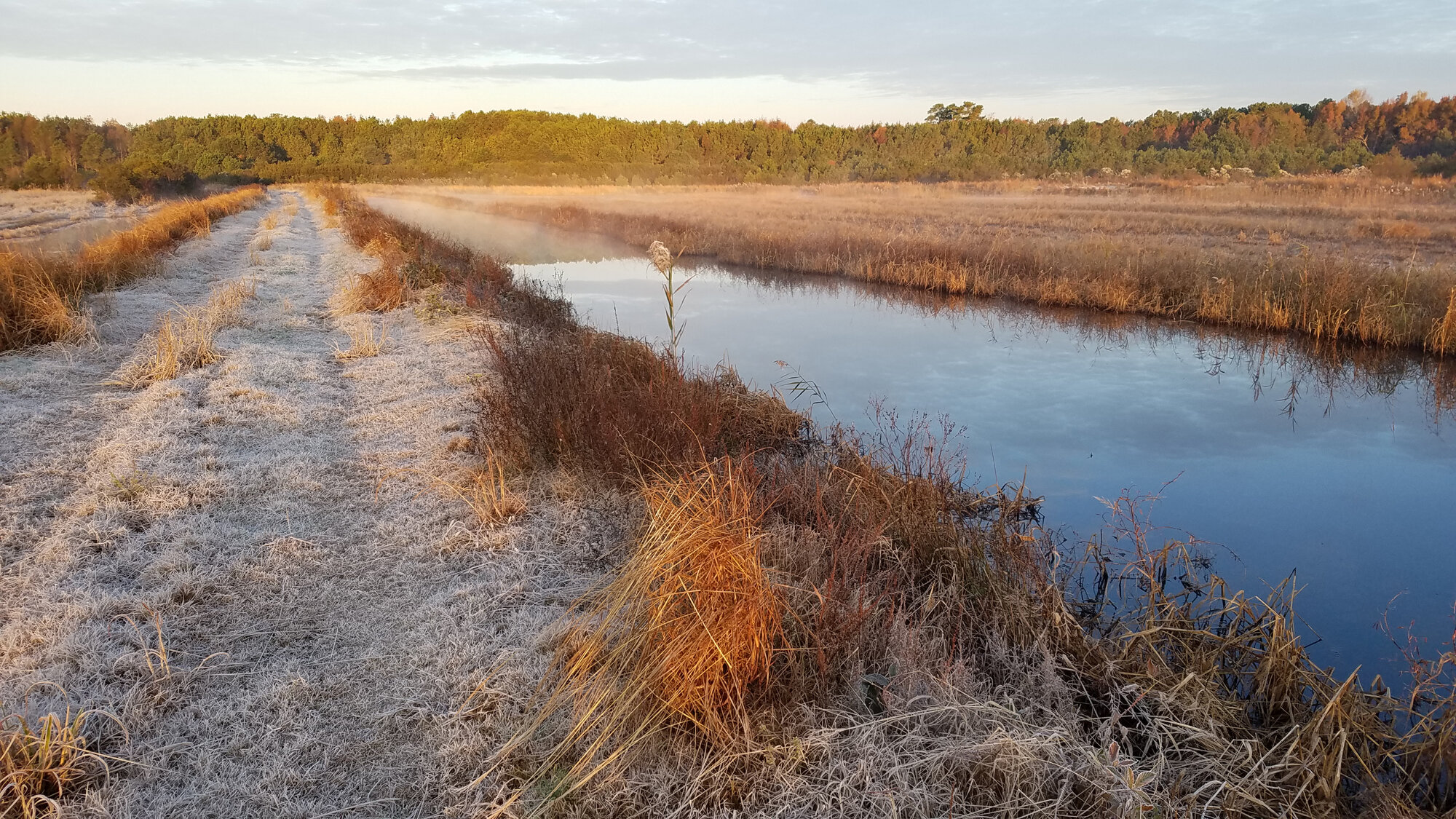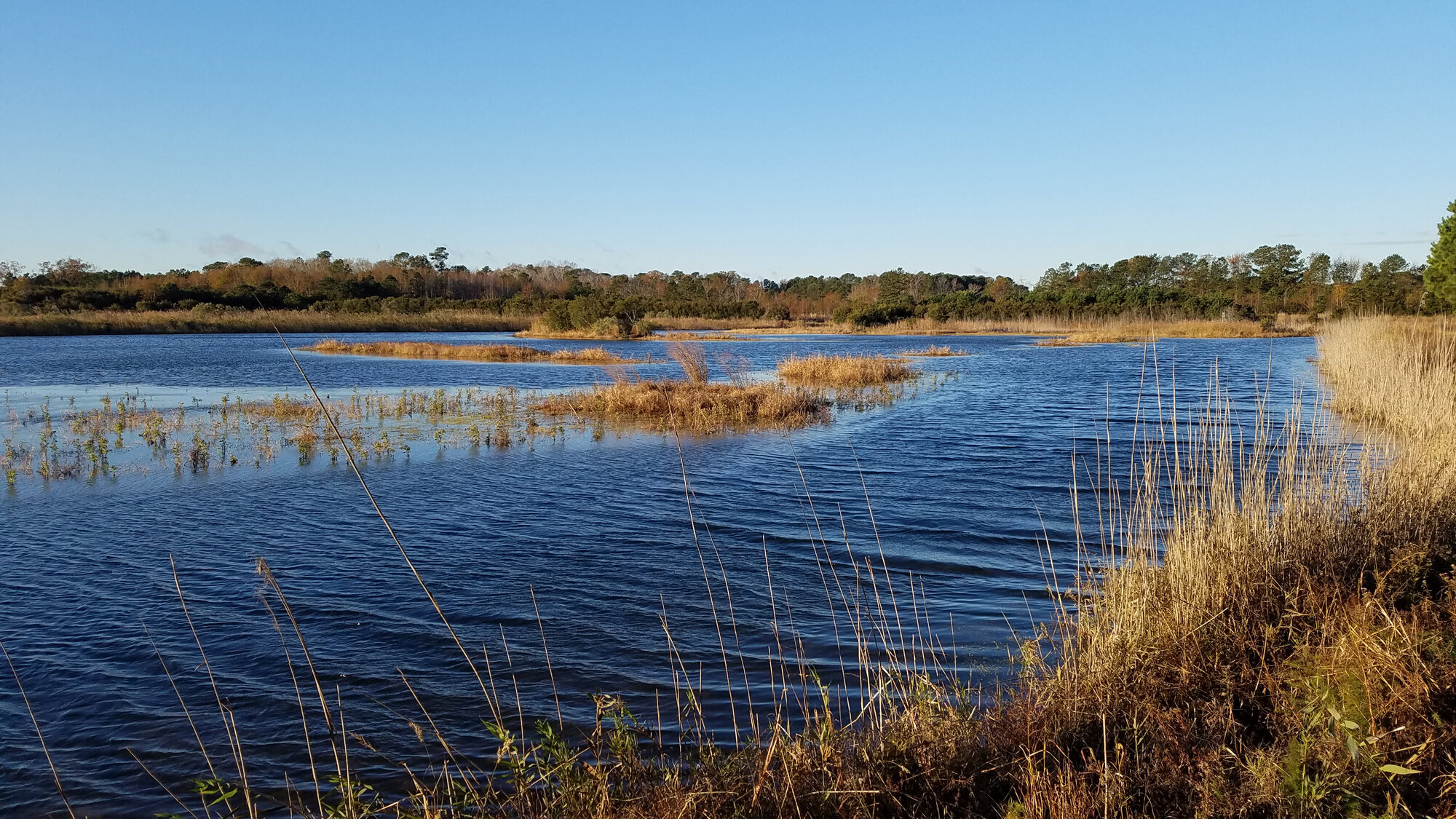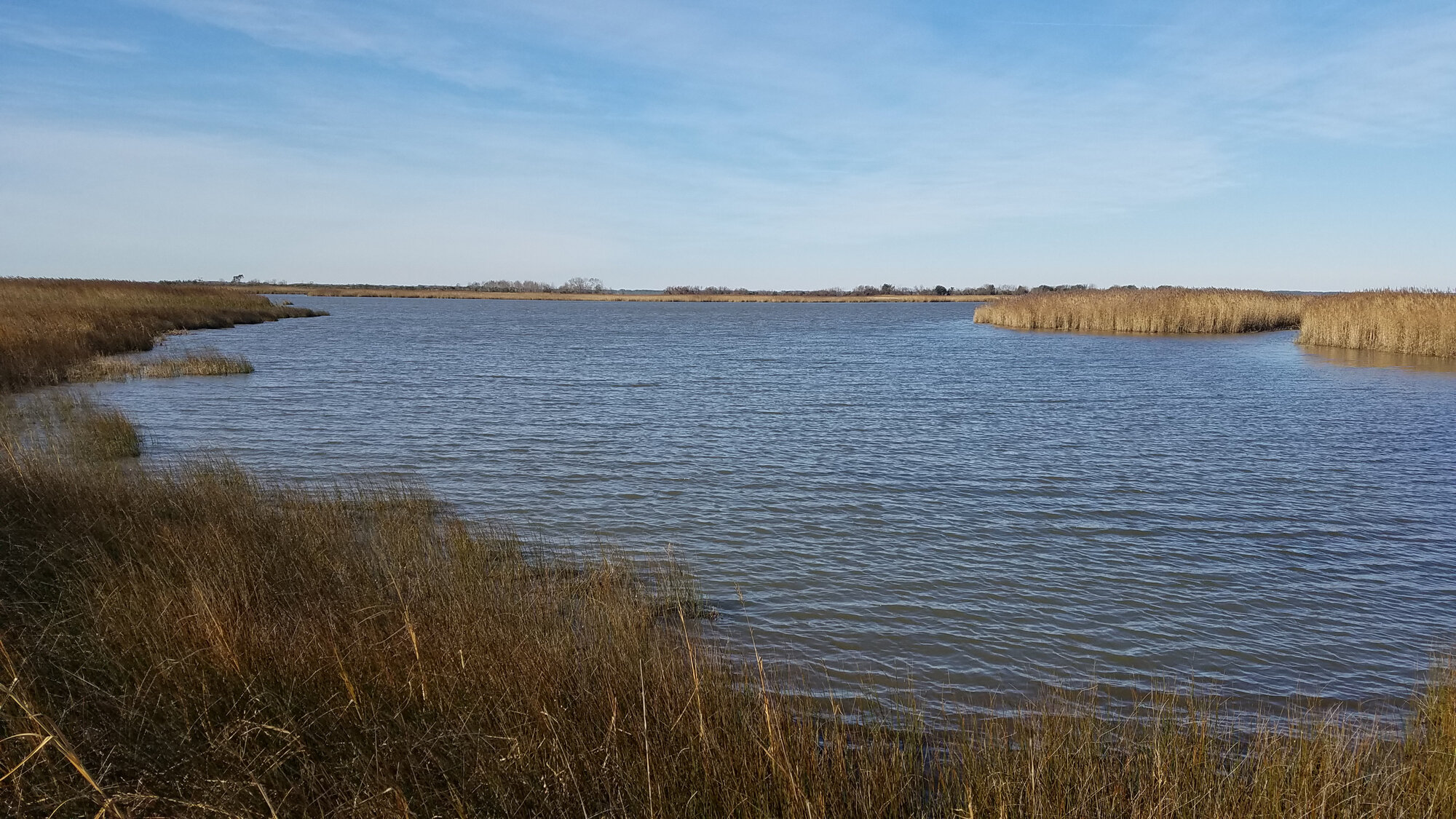November 2019
/A much colder November than those in recent memory provided some truly wild weather, and some interesting sightings. A pair of very strong cold fronts, on 7/8 Nov & 11 Nov, crossed the entire East Coast, with the latter storm producing snowfall across much of the state and dropping a few flakes over Virginia Beach! Even the following day we experienced a few more snowflakes in the morning hours, due to the front causing a “Chesapeake Streamer” to form. The first major nor’easter of the season impacted the region from 15-18 Nov, sending continuous 25-30mph winds and battering surf & storm surge into our coastline. The remainder of the month saw a mix of wet and windy weather, though no other extreme events occurred. Over the course of its thirty days, a total of 177 species were logged to eBird during November, which was an expected drop from the 199 species logged last month (October) but proved to be a bit of a surprise in comparison to the higher, 184 species, logged during November last year. At the close of November, Virginia Beach has now logged records for 302 species to eBird during 2019 (a massive +15 compared with last year’s 287 species through the same timeframe, and continuing what had already been accomplished by October, was a hefty improvement on 2018’s total of 290 species). This month, we collectively crossed the 9,000 complete checklists mark in eBird (on 14 Nov), and finished up with a total of 9,351 complete checklists to eBird so far in 2019. Like the previous months, this keeps us on pace to top the 10,000 mark for the first time in a calendar year, but with only one month left to make that happen, hopefully our eBirders find time to be out and about, despite December being the month with the least amount of daylight. Hopefully though, with the CBC season at the end of the year, we should get a bit of a kicker in the final three days if we haven’t crossed that threshold prior to then, though it seems likely that we will have.
Despite the expected decrease in overall species diversity from October, we still had some fantastic highlights this month! Standout rarities for November included: Black-chinned Hummingbird, Franklin’s Gull, Mute Swan, Western Grebe, Lincoln’s Sparrow, Common Gallinule, Ross’s Goose, Cackling Goose, Snow Bunting, Painted Bunting, Purple Finch, White-crowned Sparrow, “Northern” Red-tailed Hawk, Warbling Vireo, Orchard Oriole, Yellow-throated Warbler, White-eyed Vireo, Purple Sandpiper, Virginia Rail, Saltmarsh Sparrow, Harlequin Duck, Parasitic Jaeger, Sedge Wren & Anhinga. Additionally, November provided the city with first-of-season records for expected fall arrivals which, in order of arrival date, included: Tundra Swan, Red-breasted Merganser, Common Eider, Lesser Scaup, White-winged Scoter, Greater Scaup, Horned Grebe, Redhead, Horned Lark, Brant, American Pipit & Long-tailed Duck! Lastly, we also had some other exciting records this month for Peregrine Falcon, American Redstart, Little Blue Heron, Ruby-throated Hummingbird, Blue-gray Gnatcatcher, Nashville Warbler, Prairie Warbler, Yellow-crowned Night-Heron, Yellow-billed Cuckoo, Caspian Tern, Red Knot, Blue-winged Teal, Horned Lark, Red-necked Grebe & Semipalmated Plover!
Leading a remarkable field of rarities this month, an immature male BLACK-CHINNED HUMMINGBIRD sits high atop November’s list! Visiting a feeder at a private residence in the Blackwater section of the city, this hummingbird was present for several weeks before the first public mention of its presence occurred through Facebook and then shortly after, eBird. It wasn’t until high quality photographs were achieved on 15 Nov by the homeowner (ph. Kelly Dean) that news of the find hit the birding community. Over the coming days, thanks to the graciousness of the host, many birders were able to visit the property and get great views of this individual. Marking only the second known record for this species in Virginia Beach with an individual mentioned in The Gold Book as having occurred here from 6 Jan-5 Feb 2002, this also represents the very first record input to eBird! With only a handful of records overall in the state, this has been an exceptional season for not only Black-chinned which has three records input to eBird, but also for other vagrant hummingbirds with several records for Rufous Hummingbird & a first state record Anna’s Hummingbird also this month in Frederick County. Anyone in the city who hosts a hummingbird feeder should be on the lookout, as it seems anything could pop up at this point! With quite a few folks taking exceptional photographs, it is worth noting that a public album of all the photographs taken of this Black-chinned Hummingbird can be found here at eBird!
Almost four years to the day since the last known occurrence in Virginia Beach, a single FRANKLIN’S GULL was a remarkable find at Rudee Inlet early in the morning hours on 11 Nov (ph. Linda Chittum & Ada Jones)! Though it was flushed by a passerby just minutes after the initial sighting, it was well-documented among a mixed flock of gulls on the beach, before flying south along the coastline and out of view. Interestingly, all prior records for this species in Virginia Beach have occurred during the month of November, with one at South Thimble Island (CBBT) on 11 Nov 2011 (ph. Andrew Thornton), and then several records from 13-15 Nov 2015 during our largest coastal invasion of the species following the passage of a massive low-pressure system that moved across the plains states, the Great Lakes, and then deposited the birds on the East Coast! That event was so widespread that eBird actually has a full article dedicated to it on their website, accessible here: The Franklin’s Gull Fallout of 2015.
The first free-ranging MUTE SWAN to be observed in Virginia Beach in over two years was found on Pleasure House Creek on 10 Nov (ph. Courtney Check / Andrew Elgin / Megan Massa & identified from early ph. Charlie Bruggemann)! While there is a purchased, ‘pet’ individual present at the Swan Terrace of Regent University, and the occasional eBird reports of misidentified decoy swans placed at a couple of locations in Virginia Beach, seeing a free-ranging Mute Swan in the city is a real treat. The last such record occurred at Back Bay NWR back on 14 Jan 2017 (ph. Ellison Orcutt; later ph. Rob Bielawski & Mary Catherine Miguez), when one was picked out of a large flock of Tundra Swans just west of the visitor contact station on the adjacent freshwater cove of Back Bay. A first-ever record for the Pleasure House Point NA hotspot, this individual was completely on its own, rather than mixing in with a larger flock of Tundras. In discussions with some local walkers while viewing the swan, it was mentioned (and photo proof provided) that the bird had spent the prior day on a pond in the nearby Church Point neighborhood. There’s no telling where it might end up next, but it was said to have been travelling up the Western Branch of the Lynnhaven towards Town Center as of the last report during the morning of 11 Nov (vis. Amy & Steve Myers). Keep your eyes peeled if you live in that portion of the city!
For a fourth winter season in a row, it appears Virginia Beach is once again host to a WESTERN GREBE, after an individual was photographed off Little Island Park on 25 Nov (ph. Tracy Tate)! Missed the following day by many, but refound again off Back Bay NWR on 27 Nov (vis. Andrew Baldelli) and then photographed off Little Island Park later that day (ph. Marie & Ron Furnish), perhaps it’ll stick around this area like we’ve been fortunate to host in the past winters. With only one record for the species in the city listed in eBird prior to 2016, we’ve continued to see records on an annual basis ever since one was discovered, also at Little Island Park, during the Back Bay CBC on 29 Dec 2016 (vis. Edward Brinkley & Paul Sykes). That individual was present along the nearby coast through at least 3 Apr 2017 (ph. Andrew Baldelli & Mary Catherin Miguez), with what was likely a second individual present on 12 Feb off First Landing SP (ph. Lisa Rose). The following year, another (or the same, returning?) individual was found on Back Bay off Horn Point Road on 6 Apr 2018 (ph. Karen & Tom Beatty and Kathy Louthan), lingering at this location through 15 Apr (ph. Jason Strickland). The next season, one was again present from 3 Dec 2018 (ph. Diane Hinch & Maggee Smith) at Back Bay NWR, through 5 Feb 2019 (ph. Dixie Sommers) at Little Island Park. So, that brings us up to speed! Hopefully, like its predecessor records this individual will hang around our patch of coastline and provide some additional sightings moving forward. Little Island Park provides the best viewing since once can see quite a bit of water from the elevation atop the public pier, but Back Bay NWR’s beach is also worth viewing from since in the past, the Western Grebes present have ranged up and down the coast.
After we missed the species throughout it’s expected peak passage in October, a LINCOLN’S SPARROW was found at Princess Anne WMA Whitehurst Tract on 10 Nov (ph. Rob Bielawski, later ph. Steve Myers)! This marks the very first record for this species to be input to eBird for the month of November in the city, across all years. Specifically in 2019, this is only the second individual known to have occurred in Virginia Beach, with an individual present back in February & March, and presumably throughout the entire winter. Ironically, that individual was also observed at this exact same location in the northern half of the Whitehurst Tract. Perhaps it’s just that the habitat here is perfect for the species and many individuals stop in, whether simply passing through or in search of a potential wintering site. Or, perhaps it’s the same individual returning once again? In either case, it’s truly exciting to add this sparrow to the month list for the city. With the records earlier in the year occurring 10 Feb (ph. Rob Bielawski) and 24 Mar (ph. Andrew Baldelli & Rob Bielawski), and with likely this same individual picked up again on 24 Nov (ph. Rob Bielawski), perhaps we’ll see some additional reports of this same individual moving forward into December.
Photographed for the very first time in the city this year, a COMMON GALLINULE at Back Bay NWR on 20 Nov (ph. Tracy Tate) made for a fantastic surprise. Viewed near the West Dike entrance gate on the upstream portion of the C Pool, this marked only the third record for Virginia Beach in 2019, and the individual lingered at the same location through the end of the month, and was viewed by many! Previously this year, one was at False Cape SP on 24 May (also vis. Tracy Tate), and another was at Back Bay NWR on 6 Aug (vis. Andrew Baldelli) with both outings being part of the official refuge impoundment surveys. Unlike the August record, which had been viewed with special access to restricted portions of the refuge, the November record occurred from publicly viewable land, which makes it a worthwhile spot to check throughout the coming weeks. Common Gallinules are observed with regularity during the winter months at the south end of Back Bay in North Carolina, but winter records in Virginia Beach are quite scarce. We seem to sit right at the fringe of where they’re willing to take up residence for the winter, in similar fashion to Blue-winged Teal which are also more common just across the state line to our south. Depending on the harshness of our weather, perhaps there will be other records though as we slide into the winter season.
The earliest ROSS’S GOOSE record ever input to eBird for Virginia Beach occurred this month, when an individual was observed at the Signature at West Neck (private) on 8 Nov (ph. Pamela Monahan)! Even records later in past Novembers are quite scarce in eBird, with records for the month having occurred only in 2012 (one at Back Bay NWR), 2014 (one at Back Bay NWR and one along Princess Anne Road) and 2017 (one moving between Sherwood Lakes & the HRSD fields along Firefall Drive and one at Kempsville Lake). Most older records input to eBird tend to have occurred around the Back Bay Christmas Bird Count (CBC) which occurs annually on 29 Dec, but in more recent years, local birders have been better about locating this species throughout the Nov-Mar timeframe. Earlier in 2019, there were at least three and possibly four individuals observed, all during early March, as follows: 1, Muddy Creek Rd., 4 Mar (ph. Karen & Tom Beatty); 2, Muddy Creek Rd., 5 Mar (vis. Andrew Baldelli); 1, Munden Rd. (flying over both Princess Anne WMA Whitehurst & Beasley Tracts, 10 Mar (ph. Rob Bielawski). Perhaps with such an early November sighting for the species, this is a good sign for rare geese being present this winter season?
Also in the goose department, at least two CACKLING GEESE reports popped up during November. The first was an individual reported among a large roosting flock of Canada Geese on the agricultural fields between Ocean Lakes High School and the Hampton Roads Sanitation District plant on Firefall Drive on 16 Nov (vis. Tom Beatty). The second, was an individual observed on the north pond at Sherwood Lakes on 29 Nov (vis. Andrew Baldelli), potentially the same individual, also mixed in with a large flock of Canada Geese on the water. We’ve been quite fortunate in the city over the past few winter seasons with the rarer geese species (Cackling, Greater White-front, Ross’s), and any chance one gets to pick through the large Canada Goose flock the moves around these portions of the city should be taken. Cackling can be a bit of a challenge though, and they’re easier picked out on the water where the body size is easier to compare consistently with the others around it. In fields, the ground isn’t always level, and can cause standard-sized Canadas to appear smaller, simply by the elevation their feet are situated. Also of importance for this ID, is observing the very bright body coloration where Canadas will be darker (see Here), and the bill shape, size, and proportions are also important. With several races of intermediate sized Canada Geese, calling a Cackling with certainty can be problematic even for experienced birders.
The first SNOW BUNTING of the season was briefly observed at Dam Neck NA (Restricted Access) on 16 Nov (vis. Karen & Tom Beatty), marking the first record for the species going all the way back to 5 Feb! With only two prior records in 2019, a pair at Back Bay NWR on 1 Jan (ph. Robert Wood) and a flock of up to 14 present at the North End through 5 Feb, it’s nice to see our first for the season. Late in the month, we got our second as well, with a photographed record at False Cape SP on 30 Nov (ph. Marlee Morris)! Typically mid-November is our best time to start seeing these birds, if they're going to show up for a given winter season, so it was quite nice of this individual to help further that expectation! With most records occurring mid-Nov to early Feb here, individuals are also most likely to be found along the dunes at First Landing SP's campground area, along North Beach at the oceanfront, and also along Little Island Park & Back Bay NWR. In a couple of recent winter seasons, we've been fortunate to have flocks present around 85th Street, though they can move around quite a bit. Just something to keep in mind as we head into December. Snow Buntings are surely gorgeous birds and highly sought after in the city!
An immature or female-type PAINTED BUNTING was observed at a private residence in Laurel Manor on 23 Nov (ph. Tommy Maloney), marking the second record for the fall/winter season in Virginia Beach! Additionally, a separate female was observed at a private residence in Kempsville (ph. Teresa Conlon) on 25 Nov (and noting an actual arrival date three days prior), marking the fourth winter season in a row it has returned to the same location! Last month, Back Bay NWR produced a similarly plumaged individual on the morning of 12 Oct (ph. Rob Bielawski & Peggy DeRolf), which was the first of likely many individuals to be reported (or to be present) in the city this season. As mentioned in the October Journal, though this species is an annual winter resident in the city, its true distribution is obscured considerably since many homeowners prefer not to publicly report sightings of this highly sought-after species. The central region of the city continues to produce records each winter, and with each of these residences mentioned above having hosted individuals in the past, surely, there are other such locations in the city. As December takes hold, this is definitely a species to watch closely for in your own backyards!
The first PURPLE FINCH of the season, a female, was photographed at a private residence in Hunt Club Forest on 17 Nov (ph. Karen & Tom Beatty)! While this species can be almost common at backyard feeders during invasion/irruption years, the 2019-2020 so far doesn’t appear to fit the mold of these every-few-year occurrences. In a more typical season in Virginia Beach, we’ll see something along the lines of 2-5 records, so it’s nice to see our very first one during this month. As December moves in, the likelihood of more records grows, with events like the Christmas Bird Counts (CBCs) likely to yield some. The last records for the species, prior to this one, occurred way back in March, so it’s nice to see one back in the city! Of course, there’s no telling how many others might be present at feeders that just happen to not be owned by active eBirders, so if you know someone who enjoys the feederwatching part of birding, let them know their observations are valuable to projects like eBird, and to enthusiasts throughout the city who can learn more about backyard birds.
After having several individuals logged in October, we again had one record in November for WHITE-CROWNED SPARROW! This time, it was an immature found at Pleasure House Point NA on 6 Nov (ph. Cindy Hamilton), marking the natural area’s first record for the species in over a year and only the fourth record ever input here to eBird! In Virginia Beach this year, there have now been six total records for the species, all of individuals, two of which were adults and the other four immatures. For the sake of thoroughness, records for 2019 have occurred as follows: 1 immature, Stuart Rd., 14 Jan (vis. Karen & Tom Beatty); 1 adult, Tidewater Arboretum, 26 Apr (ph. Andrew Baldelli); 1 immature, Back Bay NWR, 12-14 Oct (ph. June McDaniels); 1 adult, Back Bay NWR, 14 Oct (ph. Andrew Baldelli); 1 immature, Little Island Park, 20 Oct (vis. Tracy Tate). The Pleasure House Point individual unfortunately was not observed again after the initial sighting, but this is a species that always has the potential to pop up in scrubby habitat throughout the winter. Along with Lincoln’s, Lark & Clay-colored Sparrows, it is one of the rarities to always be mindful of from fall to spring, as individuals of each species have wintered irregularly over the past few years.
The city’s first-ever eBird record for a “NORTHERN” RED-TAILED HAWK occurred this month, when an individual was observed on the fence line adjacent to Oceana NAS and London Bridge Boulevard on 18 Nov (ph. Mike Collins). The “Northern”, or abieticola, subspecies of Red-tailed Hawk is a considerably darker race overall when compared with our standard borealis race individuals present year-round throughout the city. The abieticola race shows an extensively dark, very dense band across the stomach, and a dark chest whereas the borealis race tends to show an unmarked, very clean white chest above a less dense band on the stomach. Records for the rarer race have occurred throughout Virginia, but the vast majority of our state’s records pertain to the expected borealis race. Subspecies/races are often overlooked by birders, especially those focused solely on species, or “countable” entities, but studying geographic variation among species can be quite interesting. For example, Virginia Beach has the only eBird records in the state for the “White-eyed” race of Eastern Towhee, and occasionally we’ve seen the rare “Oregon” race of Dark-eyed Junco in the city as well. Perhaps more common forms tend to get a bit more attention, as “Eastern” and “Western” Willets, or “Yellow” or “Western” Palm Warblers are reported frequently here at the subspecies level. Of course, no species exhibits more individual variation here than Red-tailed Hawk, but each one is worth looking at closely to see if it might fit the mold of one of the rarer forms!
Extremely rare in the state as a whole after September, and also a rare find any time of year on the coast, a WARBLING VIREO at a private residence in Cypress Point on 2 Nov (ph. Kristin Swanbeck) proved to be another astonishing to Virginia Beach’s November list! A remarkable year for this species in the state, this really puts the proverbial icing on the cake for Warbling Vireo distribution in Virginia Beach for 2019. Primarily a rare spring & rarer fall transient in Virginia Beach, it didn’t come as much of a surprise when the species was missed as a migrant this spring, though last year we were fortunate and logged several records. Seemingly out of nowhere, a nesting pair of Warbling Vireos were observed in one of the many willow oaks along Ashville Park Boulevard from 19 Jun (vis. & a.r. Karen & Tom Beatty, vis. Andrew Baldelli) through 6 Jul (ph. Rob Bielawski), providing the first breeding confirmation for this species in the city! With no records during the typical fall migration window, local birders had simply assumed it would be a species we’d need to wait until late April to have another shot at observing. With no photographic records in eBird after September, in any prior year, this is truly remarkable. Additionally, there is only one other sight report later than this one, in Norfolk on 28 Nov 2009 (vis. David Clark), otherwise the latest accepted record in eBird is one in Alexandria on 15 Oct 2018 (vis. Jim Owens)!
Remarkably out-of-season anywhere in Virginia, statewide, during November, an ORCHARD ORIOLE was quite the show-stopper at Back Bay NWR on 11 Nov (ph. Charlie Bruggemann)! This late in the season, any non-Baltimore, oriole record in Virginia tends to cause a flurry of excitement across the birding community, with Bullock’s Oriole an ever-increasing wintertime possibility (especially along the coast), and Hooded Oriole still unrecorded in Virginia but with records of vagrants in adjacent states. This record was elevated even higher by the fact that many photographs were obtained and aided greatly in ruling out other orioles from contention. The last of its kind to be observed here in Virginia Beach this year was reported way, way back on 10 Aug (vis. Rob Bielawski) at Whitehurst Tract, and there wasn’t a single photo-documented record for the species in the state overall after August. In fact, there are only a couple of photographic records after August in any prior year either, with the latest such record at Dyke Marsh in Fairfax on 11 Sep 2016 (ph. Yve Morrell, during her ABA Big Year), which makes this November record even more remarkable. The previous late date for the state in eBird was a sight report in Fairfax on 26 Sep 2014 (vis. David Ledwith), so with this Virginia Beach record being about six weeks later, it stands out as quite the outlier in eBird! Amazingly, the individual appeared to linger even later into the month when most likely the same oriole was photographed at the same location again on 18 Nov (ph. Karen & Tom Beatty) and yet again at the close of the month on 30 Nov (ph. Tommy Maloney). Perhaps it’ll stay into December and provide the state’s very first record in that month?
Bizarrely, this became the fifth winter season in a row to produce at least one record for YELLOW-THROATED WARBLER, with an individual photographed at a private residence in Bellamy Manor on 22 Nov (ph. Una Davenhill)! A fascinating species in terms of status & distribution in Virginia Beach, Yellow-throated Warbler has been more frequently reported here during the winter season than it has throughout the summer months. This is quite backwards from its distribution in the remainder of the state where it is a common breeder, but a non-existent winterer. One wonders how many individuals have truly wintered, or if we’re seeing repeats of the same individual(s?), especially given this residence also hosted one briefly last season and another nearby residence also had some reports. Pembroke Manor and the Lake Smith & Stumpy Lake areas of the city have also produced records in past winters, with individuals typically drawn to feeders containing suet & bark butter. If you are one of the many avid feederwatchers in Virginia Beach, keep this species in mind throughout the winter season and make sure to report your sightings to eBird!
Yet another rare winterer popped up this month, with an adult WHITE-EYED VIREO photographed at Princess Anne WMA Whitehurst Tract on 24 Nov (ph. Rob Bielawski)! Though a common breeder across the city, it had been exactly six weeks since the last report for this species in Virginia Beach and it seems likely that this individual might attempt to winter in the dense, tangled thickets & brambles the line the impoundments at this WMA. Remarkably, a second individual was observed at the Signature at West Neck on 29 Nov (ph. Andrew Baldelli)! Scarcely observed in the state between mid-October and early April, White-eyed Vireo does have a habit of popping up through November and sometimes into December in the southeast during the warmer winter seasons. In terms of past occurrence, this is the very first record for any November in the city, and there is only one prior December record on last year’s Back Bay CBC (ph. Andrew Baldelli & Linda Chittum) in Sandbridge. Reports this time of year are therefore quite noteworthy, and any potential winterer is worth following up on. Of course, Whitehurst Tract is only open to birding on Sundays from 1 Sep-30 Apr, which complicates matters a bit, but this individual was observed on the north-south trail just to the east of the parking area & maintenance garage for anyone interested in giving it a look.
While it is a common species from Nov-Mar on the man-made islands of the Chesapeake Bay Bridge-Tunnel (CBBT) complex, a first-of-season PURPLE SANDPIPER at Rudee Inlet on 17 Nov (ph. Rob Bielawski) sparked some excitement during the strong mid-month nor’easter. A denizen of hardened coastal shorelines, the north, south & offshore jetties at Rudee Inlet provide perfect habitat for this species. Ever since the closure of the CBBT for construction of an additional tunnel tube, species like Harlequin Duck, Great Cormorant, and this sandpiper have unfortunately become much more difficult to find & observe in Virginia Beach. With a few boat trips heading out to the islands, mostly in Jan/Feb, the bulk of our reports in the city occur at that time. The November individual stayed at Rudee through the following day, 18 Nov (ph. Mike Collins), then disappeared. However, three were then present on another day of rough weather on 29 Nov (ph. Andrew Baldelli). These records are only the second & third on the mainland for 2019, with another previously present at Rudee Inlet from 16 Jan (ph. Reuben Rohn) through 18 Feb (vis. Michael Linz & Patty McLean). Time will tell if further reports will occur as the winter season sets in!
The first VIRGINIA RAIL for the second half of 2019 was logged this month, with a vocalizing individual detected along Horn Point Road prior to sunrise on 2 Nov (aud. Rob Bielawski). Being the first record away from Little Island Park, where one was also logged soon after on 7 Nov (vis. Karen & Tom Beatty), this appears to only be the second individual logged to eBird in Virginia Beach for the calendar year. However, this species is likely to be found anywhere along the shorelines of Back Bay from fall to spring, though is almost never seen except following extensive freezes and snowfall. In early 2018, one such event forced many individuals of this species out into the open, and high counts of up to 4 were reported frequently at Little Island Park in the small stream of moving water that had just enough movement to prevent freezing. Aside from these harsh events, the best way to detect this species is to be out in darkness along the upper reaches of freshwater marshes.
A continuing record from October, a single SEDGE WREN was observed at Green Run Neighborhood Park on 23 Nov (vis. Gary Witmer), making for the only record of the species this month in the city! With an initial find of two Sedge Wrens at this location on 12 Oct (aud. & vis. Gary Witmer), it appears that at least one has opted to make a wintering territory out of this location. As mentioned in the October Journal, Sedge Wren is a very cryptic species, and therefore a difficult one to pin down. It is probably more of an uncommon wintering species than a rarity, however with its preferred habitat occupying such a small percentage of the land area of Virginia Beach, all records that occur are noteworthy. That said, two additional records popped up in Virginia Beach in the latter third of November, first with an individual at Back Bay NWR near the West Dike gate on 28 Nov (ph. Rob Bielawski) and then a bit more surprising, one at Pleasure House Point NA on 30 Nov (ph. Lisa Rose). Two individuals were later reported at the West Dike gate, and the Pleasure House Point individual stayed throughout the same date as well, making for some excitement as Sedge Wrens in November haven’t traditionally been chaseable.
With two records last month (11 & 21 Oct), Pleasure House Point NA saw its third & fourth SALTMARSH SPARROW records for 2019 this month, with an individual photographed on 4 Nov (ph. June McDaniels) & on 6 Nov (ph. Sarah Gustafson). As mentioned in the prior journal entry, due to the extreme similarities in physical field marks (they were once considered the same species, “Sharp-tailed Sparrow”), this species does flag as ‘rare’ here in eBird, but it is certainly a species to be expected in this proper saltmarsh habitat. Almost all our records hail from the Lynnhaven River estuary, but infrequently there are records that pop up of migrants on man-made, hardened shorelines, like at South Thimble Island (CBBT), Fort Story JEB, and at Rudee Inlet. However, the best place to look is certainly Pleasure House Point NA, near the southern tip of the shoreline trail where the marshy islands are closest.
A holdover from last month’s entry, a single female HARLEQUIN DUCK found back on 25 Oct (ph. Andrew Baldelli) was again logged this month at Rudee Inlet starting on 11 Nov (vis. Linda Chittum, ph. Rob Bielawski) where it continued to forage along the north side of the northern rock jetty protecting the inlet! A severe cold front that passed over the following day, 12 Nov, produced some snow flurries and also ended up pushing this individual inside the inlet for the first time (ph. Rob Bielawski), where excitedly, it lingered in close proximity to a female Common Eider through the mid-month Nor’easter. As mentioned in October, this individual marked the second record for the species here in 2019, with the only other record in the city being an immature male that was first spotted during the Little Creek CBC on 31 Dec 2018 (vis. Andrew Baldelli, Linda Chittum & Lisa Rose; later ph. Adam D’Onofrio & Loretta Silvia) then lingering all the way through 6 Apr near Lynnhaven Inlet.
While September & October each boasted a single record for PARASITIC JAEGER, November somewhat expectedly produced a surge of records. On the leading edge of a massive cold front that would later send local temperatures descending below freezing, at least 10-11 jeagers were observed along the resort area’s coastline. During the morning hours of 12 Nov, eight Parasitics were logged to eBird, seven from Rudee Inlet (vis. Andrew Baldelli) and another from 88th Street Beach (ph. June McDaniels). An additional three, distantly viewed individuals were simply left as ‘jaeger sp.’. One light morph adult was also observed at Little Island Park on 27 Nov (vis. Andrew Baldelli). As mentioned in the October Journal, Parasitic Jaegers breed in the arctic tundra and make their way to the coast, mostly during Sep-Nov, with many passing overland. Typically, jaegers become quite scarce by the time December rolls around, but they’re still possible to observe along our coastline. As Royal Tern & Laughing Gull numbers plummet in early winter, the likelihood of jaegers also drops, since these species are the ones most often scavenged from. Popular seawatch sites like Fort Story JEB (Restricted), 88th Street Beach, Rudee Inlet, Camp Pendleton SMR (Restricted), Damn Neck NA (Restricted), Little Island Park, Back Bay NWR & False Cape SP could still provide viewing opportunities, though this is a species where having a spotting scope, and birding early in the morning on days with onshore winds tends to provide the best chance.
For a remarkable eighth month in a row, we saw records for ANHINGA at Stumpy Lake NA! At least one individual was spotted on 1 Nov (ph. Jonathan Snyder, ph. Pamela Monahan, ph. Rob Bielawski, vis. Betty Sue Cohen), and again on 2 Nov (ph. Jonathan Snyder), before the reports for this species in Virginia Beach finally came to an abrupt end. With the first Anhingas observed at this location way back on 21 Apr (2, ph. Stephen Keith) it is astonishing that they’ve been logged each and every month since then. Of course, there’s no telling if the pair observed at the close of October, or the individual that lingered into November are the same as those that first showed up in April, but the fact that the species as a whole has been present this long is incredible. In fact, it’s difficult to even say how many different Anhingas were observed at the natural area this year, but the peak count achieved during a single observation was a photographic record of nine individuals in view simultaneously on 28 May (ph. Luke Fultz & Karl Suttmann). Over the past few years, spring & fall records have increasingly been entered to eBird, but this was the first summer season where we saw them reliably on the lake. It’s difficult to envision another record occurring in December, but it’s not entirely out of the question. Last year, a single Anhinga was observed along the Noland Trail in Newport News during December, even on a morning that featured sleet and snow flurries. So, this species isn’t impossible this late in the year, it’s just not expected to occur. But, that’s part of what makes birding so exciting, strange things can, and do happen!
In addition to all the great rarities observed during November, we also saw first-of-season records for 12 of our annually expected species! Arrival records occurred this month for the following expected/regular species (sorted chronologically by first record):
Tundra Swan – First Observed: 1, Princess Anne WMA Whitehurst Tract, 3 Nov (obs. Andrew Potts); First Photographed: 31, Back Bay NWR, 9 Nov (ph. Jonathan Snyder).
Red-breasted Merganser – First Observed: 32, Back Bay NWR, 4 Nov (vis. Karen & Tom Beatty). First Photographed: 282, Little Island Park, 17 Nov (ph. Andrew Baldelli & Rob Bielawski).
Common Eider – First Observed & Photographed: 4, Back Bay NWR, 5 Nov (ph. Steve Myers).
Lesser Scaup – First Observed: 1, Little Island Park, 7 Nov (vis. Andrew Baldelli & David Clark).
White-winged Scoter – First Observed: 1, Little Island Park, 7 Nov (vis. Karen & Tom Beatty); First Photographed: 1 female, Rudee Inlet, 21 Nov (ph. Kathy Spencer).
Greater Scaup – First Observed: 4, Pleasure House Point NA, 7 Nov (vis. Andrew Baldelli).
Horned Grebe – First Observed: 1, Little Island Park, 10 Nov (vis. Linda Chittum & Ada Jones); First Photographed: 5, Sherwood Lakes, 17 Nov (ph. Rob Bielawski).
Redhead – First Observed & Photographed: 68, Sherwood Lakes, 17 Nov (ph. Karen & Tom Beatty).
Horned Lark – First Observed: 3, Oceana NAS (Restricted Access), 22 Nov (vis. Karl Suttmann); First Photographed: 1, First Landing SP, 26 Nov (ph. Prashant A).
Brant – First Observed: 14, Pleasure House Point NA, 23 Nov (vis. Chris Monahan); First Photographed: 2, Back Bay NWR, 30 Nov (ph. Tommy Maloney).
American Pipit – First Observed: 1, Blackwater Road (Private Residence), 26 Nov (obs. Kathy Louthan / Andrew Rapp / Wes Teets).
Long-tailed Duck – First Observed: 1, Rudee Inlet, 28 Nov (vis. Andrew Baldelli & Karl Suttmann).
Also, with so many birders out and about during November, plenty of other exciting finds occurred! The following records include finds such as early arriving & late lingering individuals, species found in locations of the city where they aren’t typically observed, and any other observations that are simply “interesting” and seem worth calling attention to in a city-level journal such as this! Records of this nature for November were as follows:
The first Peregrine Falcon to be recorded at Stumpy Lake NA in almost two years was logged to eBird on 1 Nov (ph. Betty Sue Cohen)! Only the second photographed record at the natural area so far input to eBird, this also represented just the sixth overall record for Stumpy Lake. With the most recent, prior record also having been a November observation, this seems like a good month to watch the skies for the species over the lake in future years.
While its typical departure date in recent years is roughly 20 Oct, a female/immature-type American Redstart photographed at a private residence in Bellamy Manor on 30 Oct lingered through at least 1 Nov (ph. Una Davenhill). The late October occurrence already marked the latest photographic record in eBird for American Redstart in the city, so its continued presence also made it the very first photo record for the month of November! Only one sight report has occurred later in eBird, with two being reported at a private residence in Lake Smith Terrace on 9 Nov 2018 (vis. Tracy Tate).
Another carryover entry from October, at least four lingering Ruby-throated Hummingbirds continued to be picked up into November. Even during late October, they had already been observed ten-or-more days past the species’ average fall departure date of 20 Oct. An immature/female type hummingbird visiting the feeders at a private residence in Hunt Club Forest was observed both on 1 Nov (ph. Karen & Tom Beatty) and again on 2 Nov, but that’s when the reports stopped. Similarly, another immature/female type individual lingered at a private residence in Cypress Point through 2 Nov (ph. Kristin Swanbeck). Another individual was observed at a private residence in Laurel Cove through 3 Nov (vis. Loretta Silvia), and still another was reported at Back Bay NWR on 6 Nov (vis. Marie D’Auteuil). It’s still possible that others will pop up throughout the city next month, but hopefully birders will keep a watchful eye for rarer species like Rufous, Allen’s, and Black-chinned Hummingbirds (recorded this month at nearby Kiptopeke SP), which all have late fall/early winter records in Virginia!
Scarce by the end of October in Virginia Beach, an immature Little Blue Heron made for a nice surprise at Princess Anne WMA Whitehurst Tract on 3 Nov (ph. Steve Myers). With few individuals of this species lingering into November in the city, any sighting that occurs through late March would be considered exciting. Most such records in Virginia tend to occur on the Eastern Shore, with Chincoteague NWR seemingly being the most likely to see wintering Little Blue & Tricolored Herons. However, Virginia Beach did have a pair of immature Little Blue Herons winter at Pleasure House Point NA during 2015-2016. That pair was observed by a great deal of birders since they were the only individuals known in the state during 2016 until northbound migrants started popping up, with the first non-Virginia Beach records occurring at Chincoteague on 26 Mar 2016!
A pair of Blue-gray Gnatcatchers were a surprise find at Hell’s Point Golf Club on 6 Nov (vis. & aud. Marie D’Auteuil). With no other documented records in the city after 21 Oct when one was photographed at First Landing SP (ph. June McDaniels), it seemed likely that this species had seen its last report before their expected mid-March spring arrival date. Individuals have, on occasion, attempted to winter in Virginia Beach, so it’s possible that an even later record could pop up in December, but, it would be quite exceptional.
Though reported regularly this year from 22 Sep-22 Oct, a well-documented Nashville Warbler found at a private residence in Cypress Point on 9 Nov (ph. Kristin Swanbeck) made for quite a surprise! Records for this species after October are quite scarce in Virginia Beach, though ironically there was a sight report last year on this exact same date in Lake Smith Terrace (vis. Tracy Tate). For all other years with data in eBird, only 2016 had a November record (as well as a couple of December records). This current individual is also the very first Nov/Dec entry to have been photographed in Virginia Beach!
After a wide gap in city records, a Prairie Warbler was found at Princess Anne WMA on 10 Nov (ph. Rob Bielawski). Expected to occur in Virginia Beach through around 20 Oct in any given year, this breeding species was previously last observed at Back Bay NWR on 23 Oct (ph. Betty Sue Cohen). Though, of the typical non-wintering warblers, Prairie is probably next in line most likely to linger late into the fall/early winter, after Black-and-white Warbler here. While we’ve had at least one record occur in either November or December, annually since 2014, individuals are still quite rare during that timeframe, and any sighting is greatly welcomed! Strangely, in 2018, we didn’t have a single November record, but then we had a pair in December, one at Whitehurst Tract on 16 Dec (ph. Rob Bielawski) and one at Back Bay NWR on 31 Dec (ph. David Clark).
Pleasure House Point NA saw its latest-ever record for Yellow-crowned Night-Heron this month with two individuals observed in the morning hours of 2 Nov (ph. Nancy Barnhart / Shirley Devan / Jan Lockwood / Joyce Lowry) along one of the interior canals. Remarkably, the two immatures continued to be logged at the natural area through at least 11 Nov, where both were photographed in the same image (ph. Loretta Silvia)! The previous late date, in eBird, for the natural area occurred on 30 Oct 2014 (vis. Kathy Spencer) when an individual was reported. The current record is all the more remarkable since there had been only one other record in Virginia Beach during the month of November in past years, with an immature documented in a residential front yard adjacent to Kings Landing Circle in the Kings Grant neighborhood on 5 Nov 2016 (ph. Rob Bielawski), and almost certainly the same immature individual observed nearby again on 19 Nov 2016 (ph. Rob & Ruth Bielawski)!
Another addition to the list of late-staying summer residents, a Yellow-billed Cuckoo was observed at Back Bay NWR all the way through 11 Nov (ph. Linda Chittum & Ada Jones) after having also been observed near the same location on 7 Nov (vis. Karen & Tom Beatty) & 9 Nov (ph. Jonathan Snyder). This record makes for a second year in a row where the species has been detected lingering into November at Back Bay NWR, with records in 2018 occurring up to 4 Nov (vis. Mike Collins). In terms of eBird records in the state, this record ties an individual observed at Kiptopeke SP hawkwatch in Northampton on 11 Nov 2017 (vis. Anna Stunkel) & one at Chincoteague NWR in Accomack on 11 Nov 2018 (ph. Mark Brown) for the latest, free-ranging Yellow-billed Cuckoos so far recorded (though there is an accepted 17 Nov 2015 record of a deceased individual in Williamsburg). Interestingly, the refuge also holds claim to the extreme early spring arrival date for the state, with one documented on 3 Apr 2016 in the forested region along the west dike (ph. Rob Bielawski). So, with these November records, Back Bay NWR appears to be record holder for longest season of Yellow-billed Cuckoo records in Virginia, which makes some sense given it is one of the most heavily birded locations in the state and also sits at the extreme southeast corner where a warm climate causes great benefit to breeders like this species.
The mid-month Nor’easter brought in an excellent record for a very late Caspian Tern observed seeking refuge on the agricultural field off Firefall Drive on 17 Nov (ph. Karen & Tom Beatty)! A good find anytime after October, this made for the second latest photographic record in Virginia Beach currently input to eBird after one was logged at nearby Dam Neck Naval Annex on 18 Nov 2018 (also ph. Karen & Tom Beatty), and the third latest record overall, with one at Back Bay NWR on 29 Nov 2005 (obs. David Clark)!
A female Blue-winged Teal lingered at Stumpy Lake NA from 14 Nov (ph. Reuben Rohn) through at least 22 Nov (ph. Reuben Rohn & Jonathan Snyder), marking only the fourth record at the natural area hotspot in eBird and also the latest report in Virginia Beach for the species this year!
Very late and unexpected here at this point in the season, a pair of Red Knots on the beach at Back Bay NWR (ph. Loretta Silvia) made for an exciting record! Though winterers occasionally pop up on the Eastern Shore barrier islands and more rarely, at Chincoteague NWR, it is very unexpected to see them here at Back Bay NWR. Though, it has occurred before, and perhaps we’ll see more records on the refuge surveys this winter.
A well-documented Horned Lark at First Landing SP on 26 Nov (ph. Prashant A) made for the first photographic record input to eBird for the park, as well as the only photographic record north of I-264 in the city! With only one other record at the First Landing SP hotspot occurring over eight years ago, back on 20 Mar 2010, this was quite the unexpected find for a species typically observed only in the southern, agricultural, portion of Virginia Beach!
The first, very early, Red-necked Grebe of the season was observed in flight with several Horned Grebes at Little Island Park on 27 Nov (vis. Andrew Baldelli)! Hopefully, getting one of these under our belt in November is a good sign for their distribution in December. Typically, there are maybe 1-5 records each winter from mainland Virginia Beach, but during irruptive seasons we can see quite a few of these around. Time will tell which is the case this winter.
At least two Semipalmated Plovers lingered ten-or-more days past their typical departure date this season, with a photographic record during the late November thrice-monthly impoundment survey at Back Bay NWR on 25 Nov (ph. Cindy Hamilton & Tracy Tate) and yet another at nearby False Cape SP (possibly the same two?) on 30 Nov (ph. Marlee Morris). Records for the species in any given year are scarce after 15 Nov, with the last such record having occurred on 2 Dec 2017 (1, vis. Andrew Baldelli & Rob Bielawski), and only 2007 & 2004 holding similar records in eBird!
While the overall species count in November 2019 (‘this Nov’) was very close to that observed in November 2018 (‘last Nov’), there’s quite a few differences. The following species were recorded last Nov but were not found this Nov (species in all capital letters are those that flag as ‘rare’ in eBird here throughout Nov): Canvasback, CHIMNEY SWIFT, WESTERN SANDPIPER, American Woodcock, RED-NECKED PHALAROPE, SOLITARY SANDPIPER, Razorbill, BLACK-LEGGED KITTIWAKE, ICELAND GULL, PACIFIC LOON, GREAT CORMORANT, AMERICAN WHITE PELICAN, TRICOLORED HERON, Cattle Egret, Barred Owl, WESTERN KINGBIRD, Red-breasted Nuthatch, Pine Siskin, GRASSHOPPER SPARROW, CLAY-COLORED SPARROW, AMERICAN TREE SPARROW, Fox Sparrow, BLACK-AND-WHITE WARBLER, BLACKPOLL WARBLER & INDIGO BUNTING.
Conversely, we found the following species this Nov, but didn’t observe them last Nov: ROSS’S GOOSE, MUTE SWAN, Northern Bobwhite, WESTERN GREBE, BLACK-CHINNED HUMMINGBIRD, COMMON GALLINULE, Purple Sandpiper, Pectoral Sandpiper, Lesser Yellowlegs, FRANKLIN’S GULL, ANHINGA, YELLOW-CROWNED NIGHT-HERON, WHITE-EYED VIREO, WARBLING VIREO, SEDGE WREN, LINCOLN’S SPARROW, ORCHARD ORIOLE & PRAIRIE WARBLER.
Clearly, 2019-2020 is not shaping up to be an irruptive finch season, as we haven’t been seeing numbers of Red-breasted Nuthatch, Pine Siskin or Purple Finch. Last Nov held some remarkable rarities, and clearly the sparrowing was better last year with four species not found this Nov. Each year will have its surprises, certainly, but it was unexpected for us to not see a single Canvasback or American Woodcock this month. Barred Owl was likely missed due to a lack of nocturnal effort, and it is the toughest of the three common owl species to find in the city, though Crags Causeway and Stumpy Lake NA have been fairly reliable at night. It’s always interesting to see how the same months in different years compare, but where we dropped in 2019 in terms of diversity, we made up for in terms of quality!
As always, a wide array of media (photos/audio/video) were submitted during the month in Virginia Beach, and eBird makes it incredibly easy to organize and browse all of these. For those hoping to view every photo/audio/video submitted for Virginia Beach during this period, please see the complete listing for the month of November located on eBird’s Media explorer by clicking here! Please remember, anyone with an eBird user account has the ability to rate these photographs/audio/video on a scale of 1-5 stars (based on these guidelines). Making use of the average rating for each media item is how eBird populates anything media-driven on the website, particularly the Illustrated Checklists. So, if you're one of the many folks who enjoy looking at photographs or watching/listening to video/audio recordings of birds, please take some time to rate their quality, it helps to make eBird more useful with each passing day!
DECEMBER LOOKAHEAD: Early sunsets and the holiday season tend to make December a tough month for many birders to be out birding on a frequent basis. However, like November, it is a great time of year for catching lingering species and rarities. The CBCs at month’s end should yield some interesting finds, given the coverage of areas is much higher than on any other given day of recreational birding. Sparrows should be looked for in any weedy fields or scrubby habitat (Back Bay NWR, Princess Anne WMA, Pleasure House Point NA, etc.). Seawatching could yield good ducks or even offshore species pushed into view on days with winds featuring an easterly component. Anything can happen here in the winter!
Winter arrivals are almost entirely behind us, but as of November’s ending, we have not yet logged first arrivals for the following species that were expected prior to December (typical arrival dates listed in parentheses after each species name):
American Woodcock (10 Oct) - View Current Fall Migration Records Map.
Pine Siskin (15 Oct; during irruption years, which this doesn’t appear to be) - View Current Fall Migration Records Map.
Fox Sparrow (25 Oct) - View Current Fall Migration Records Map.
Canvasback (10 Nov) - View Current Fall Migration Records Map.
Common Goldeneye (10 Nov) - View Current Fall Migration Records Map.
Razorbill (25 Nov) - View Current Fall Migration Records Map.
Hopefully over the course of the next 31 days, each of these species, and perhaps some unexpected species, can be found in the city. For those who may want their observations to be included in this journal please remember to submit your records to www.eBird.org, where they can be reviewed for accuracy by local experts and easily found by those of us interested in such things. Thank you to those who made it through the entirety of this November entry, and be sure to check back next month to see what Virginia Beach birders will have found in December!
Next Entry | Entry Index | Previous Entry
For further information regarding this monthly, online publication, please visit the Journal Overview Page which provides an in-depth explanation of the current format, layout and composition of the journal. As always, thank you for reading, and please leave me a comment below (you may use your Facebook, Gmail or other accounts to easily do so), or just click the Heart icon to the lower right of this post to let me know you stopped in!
